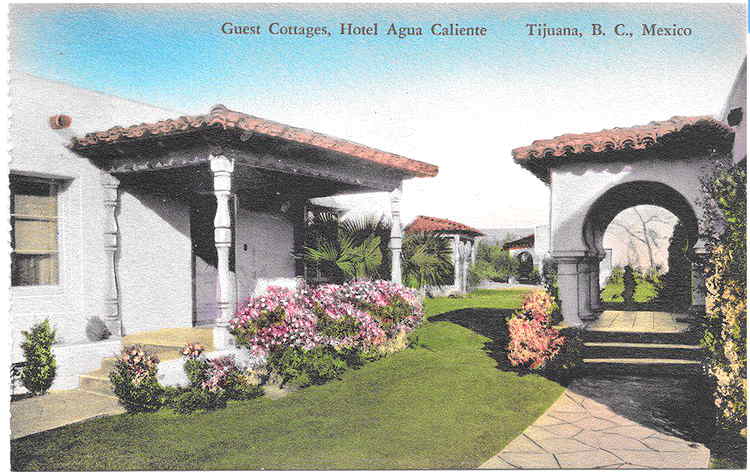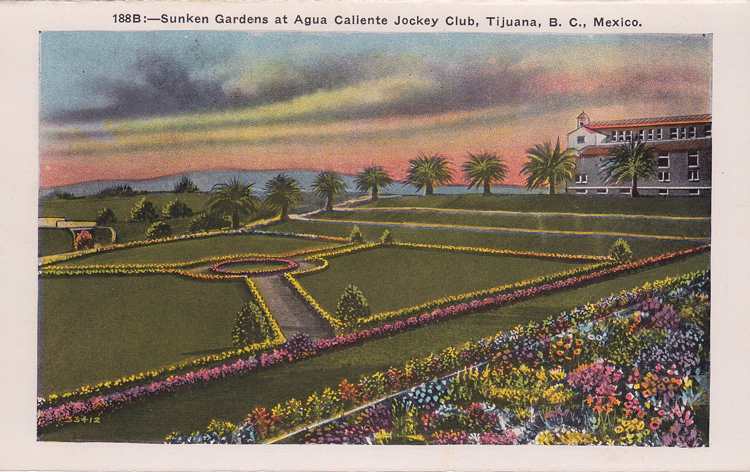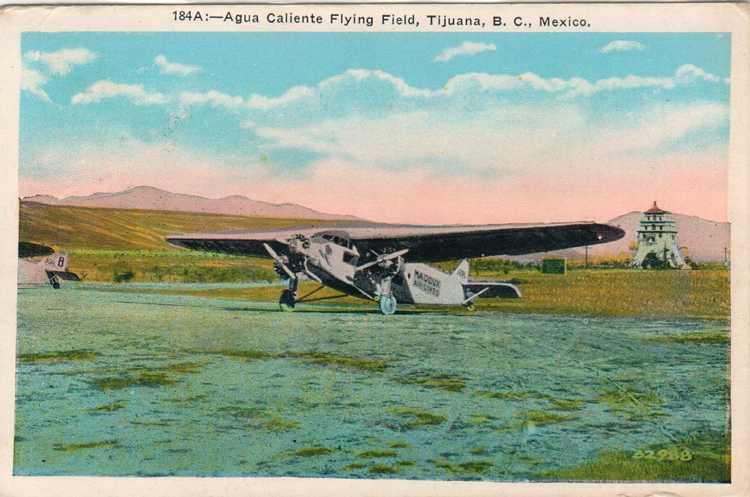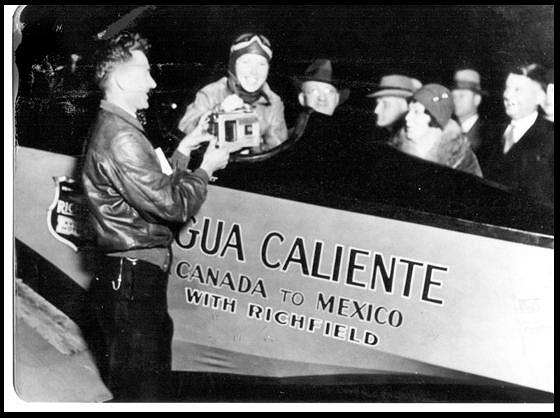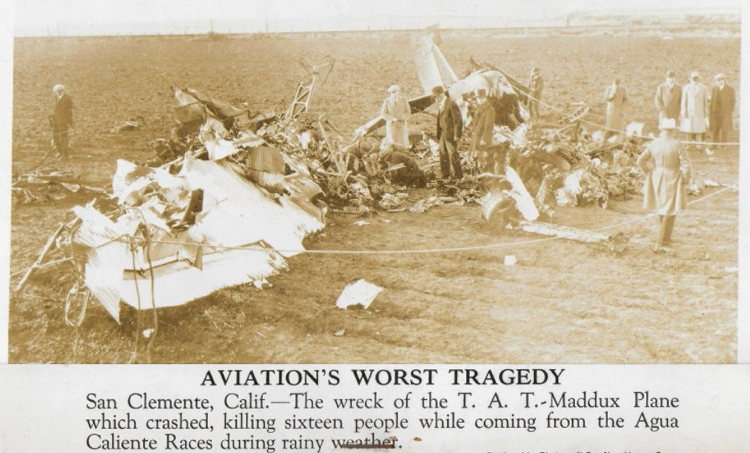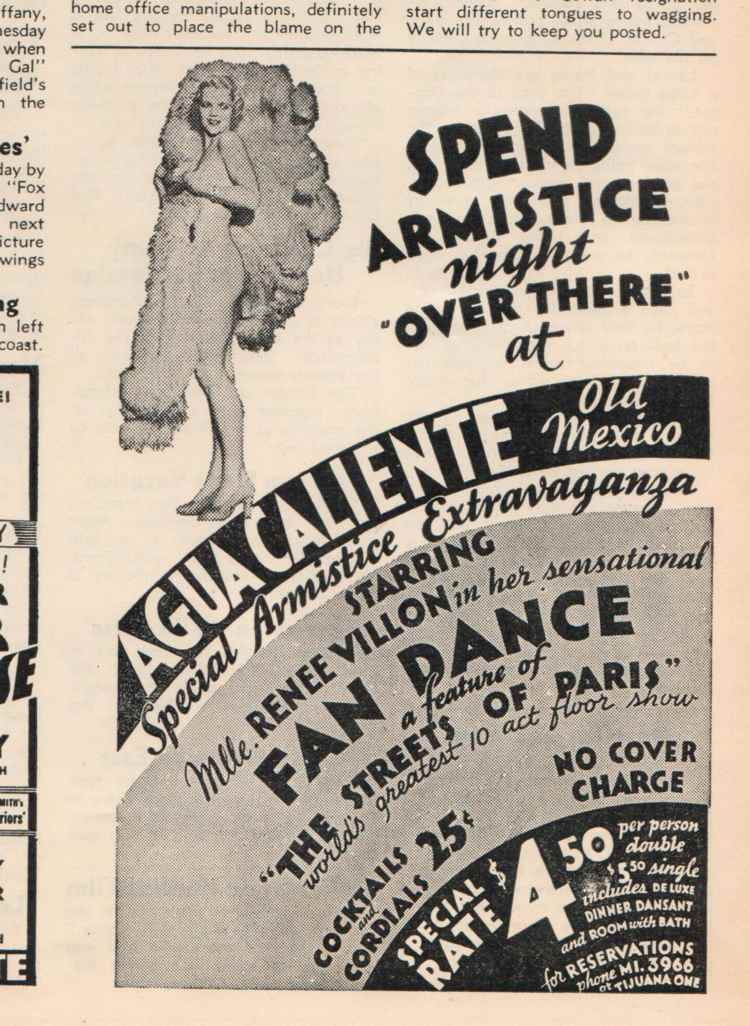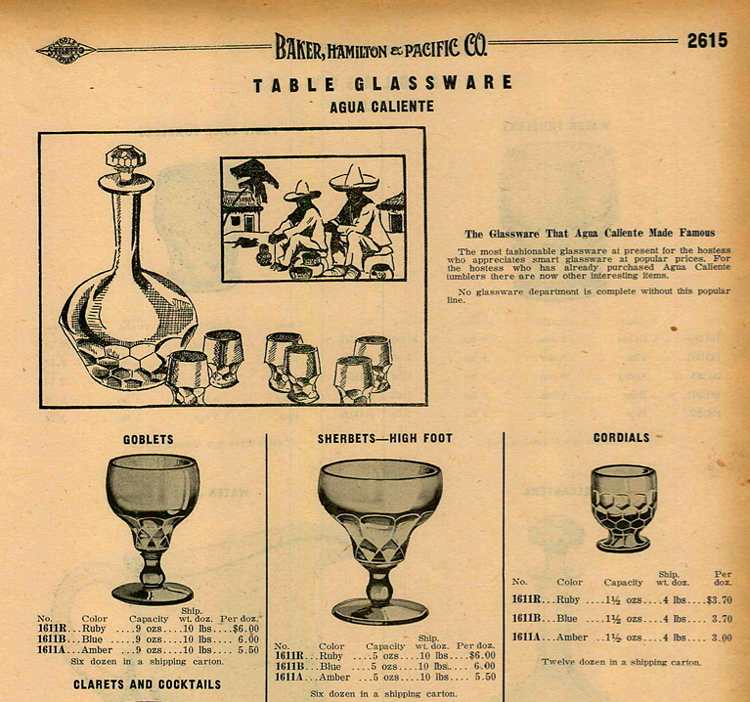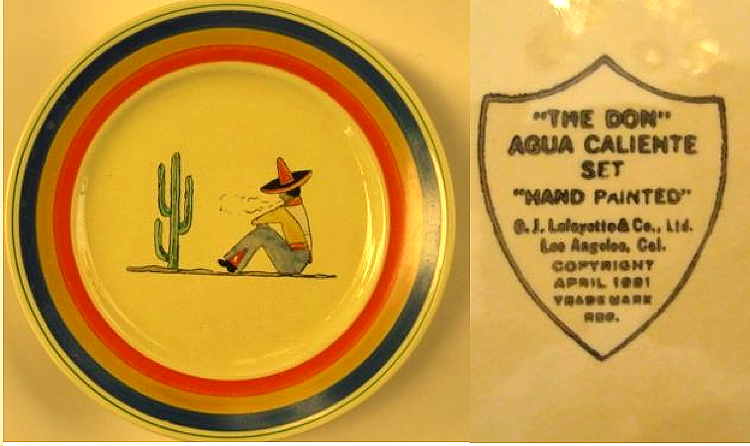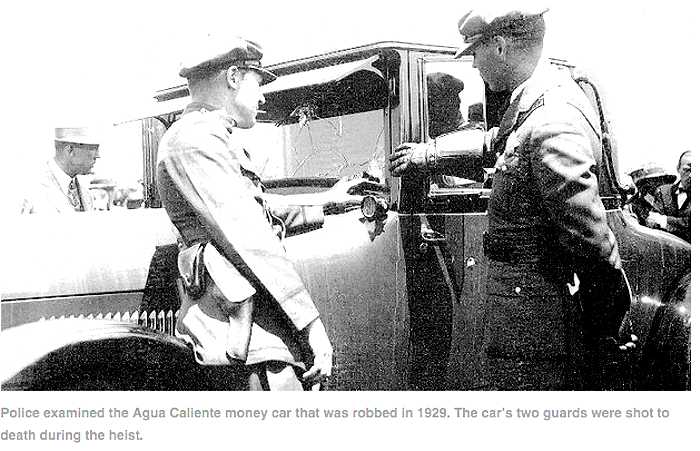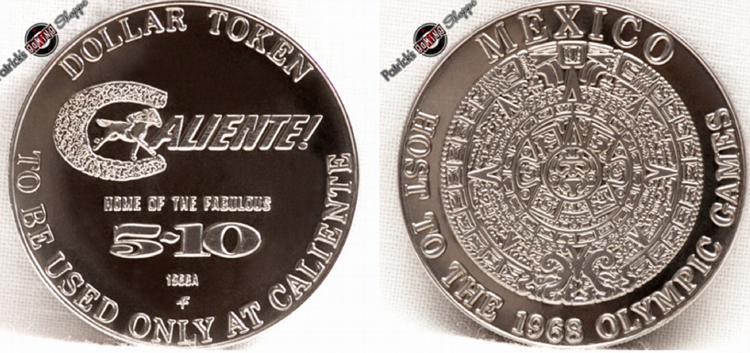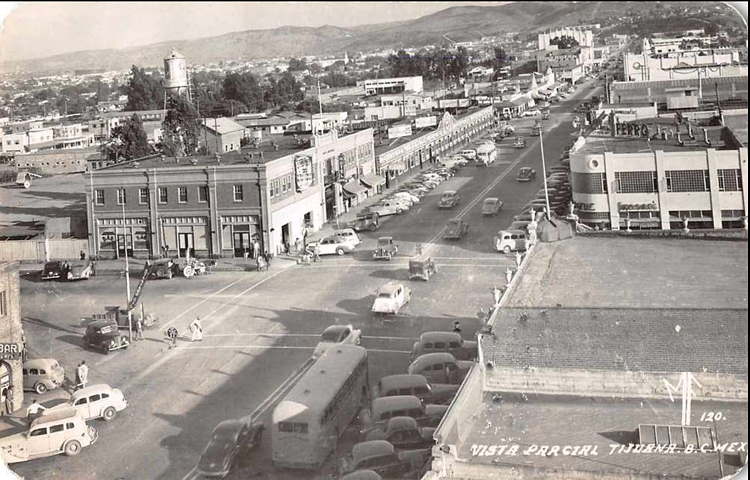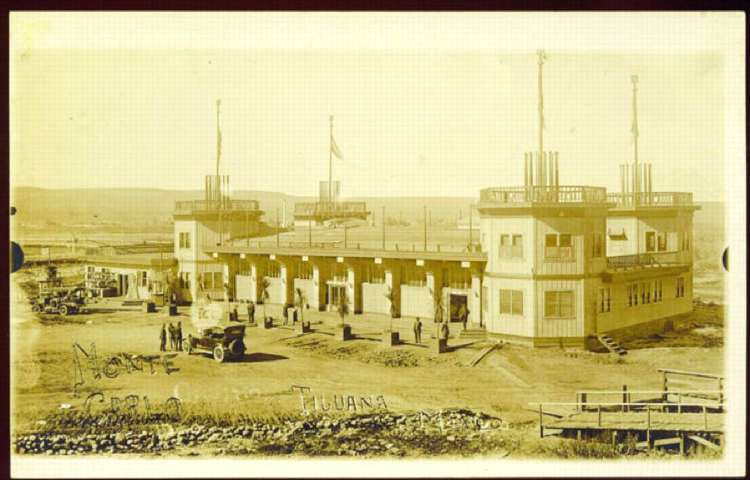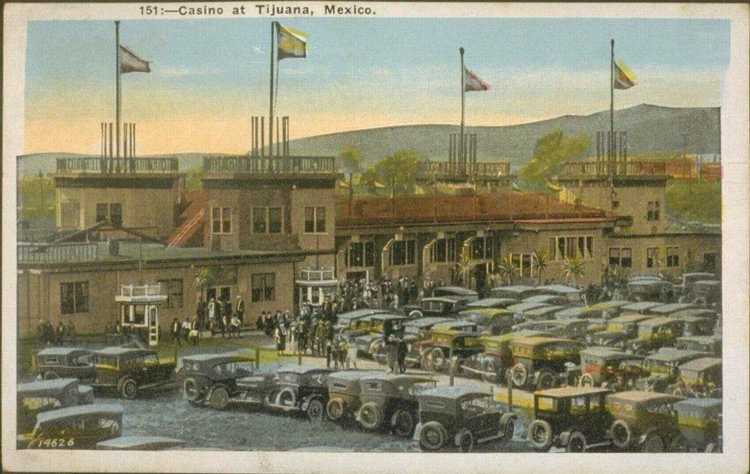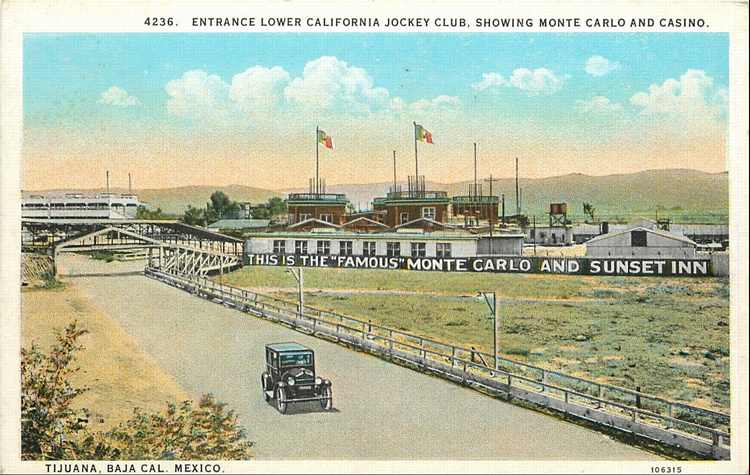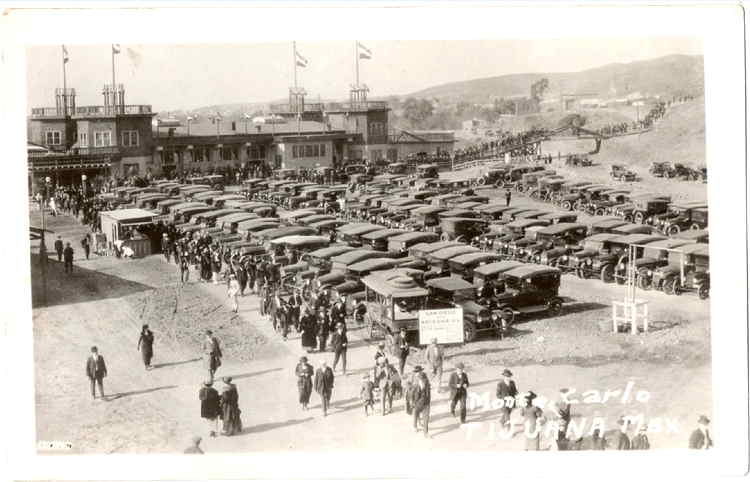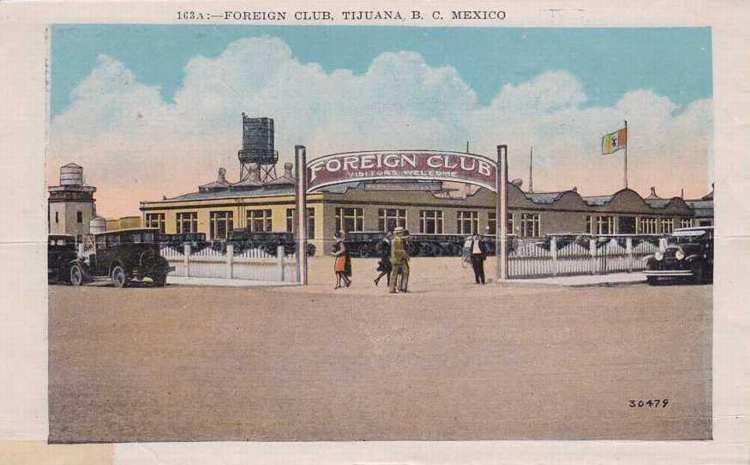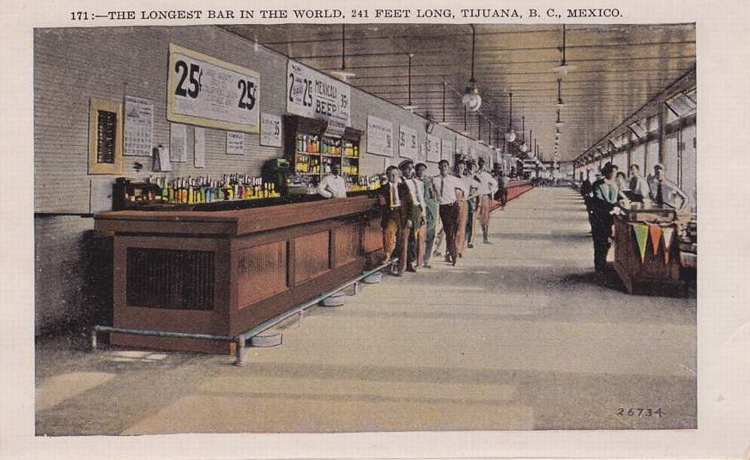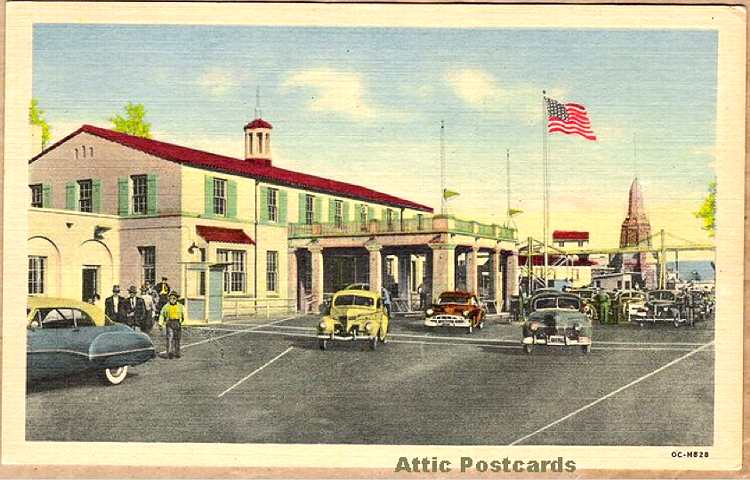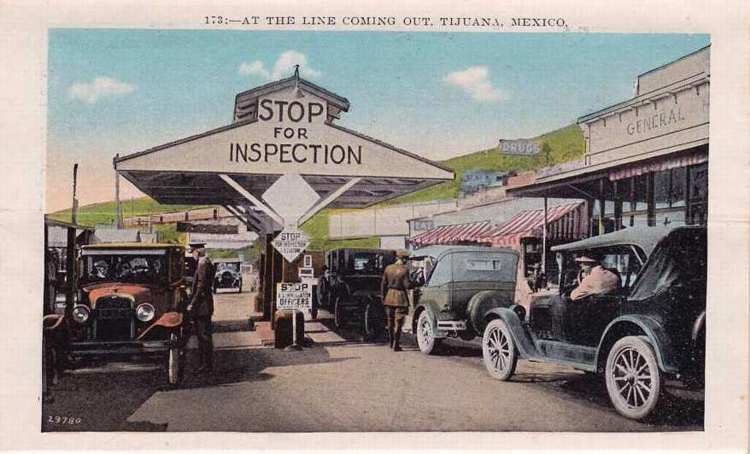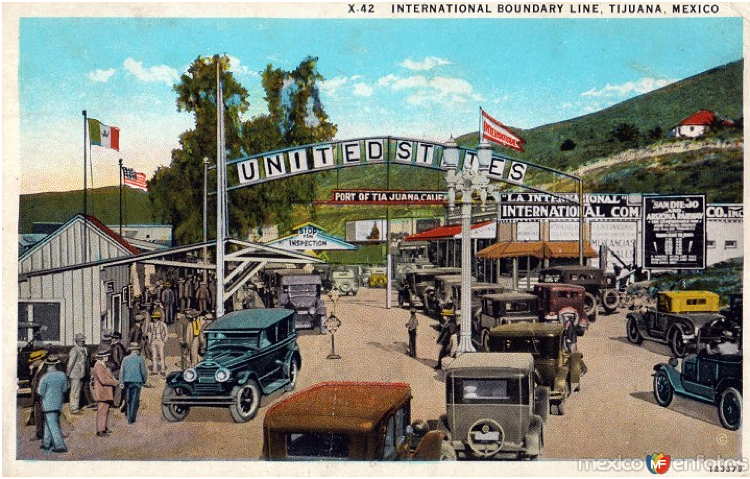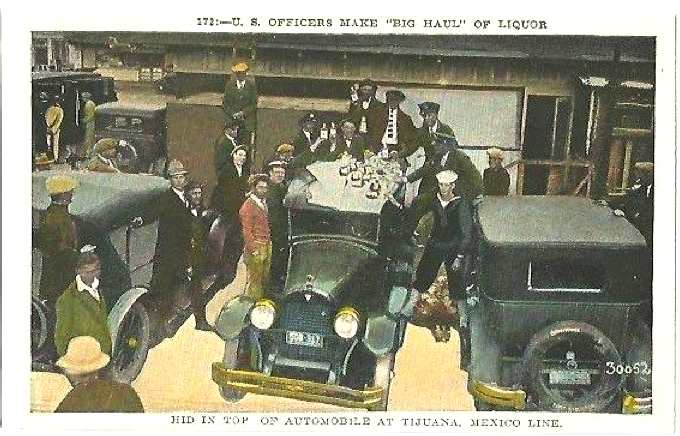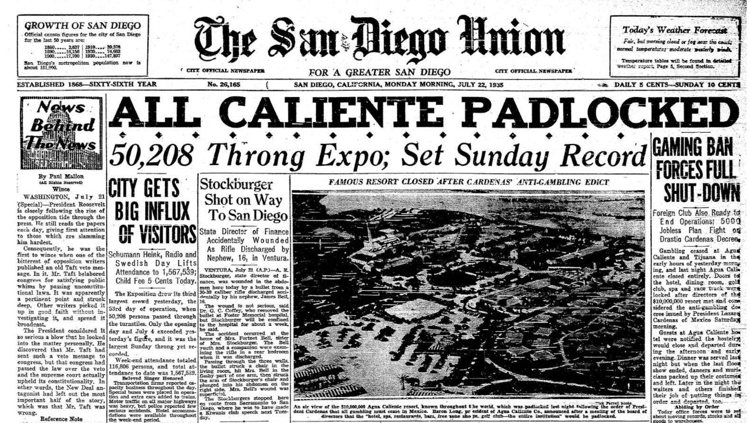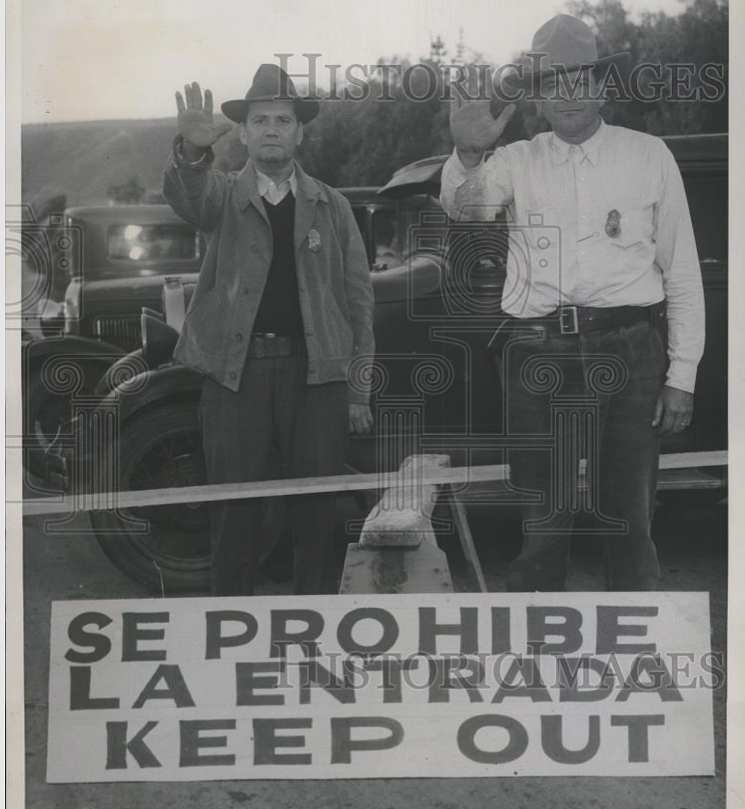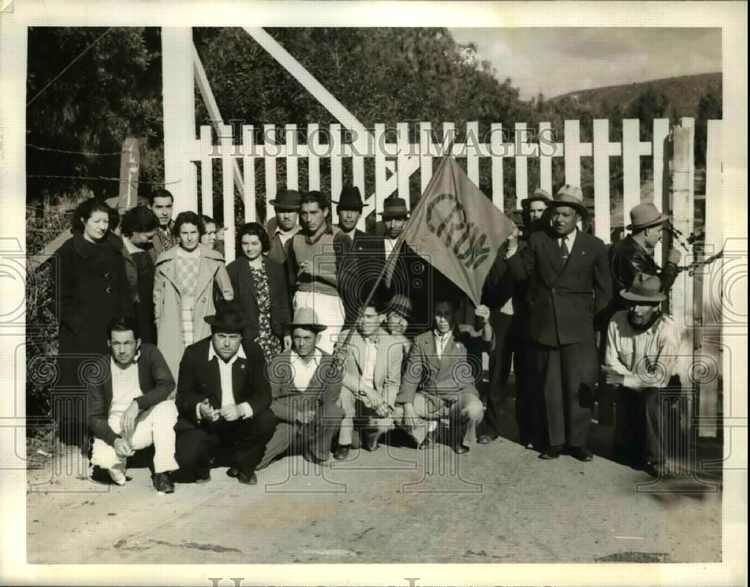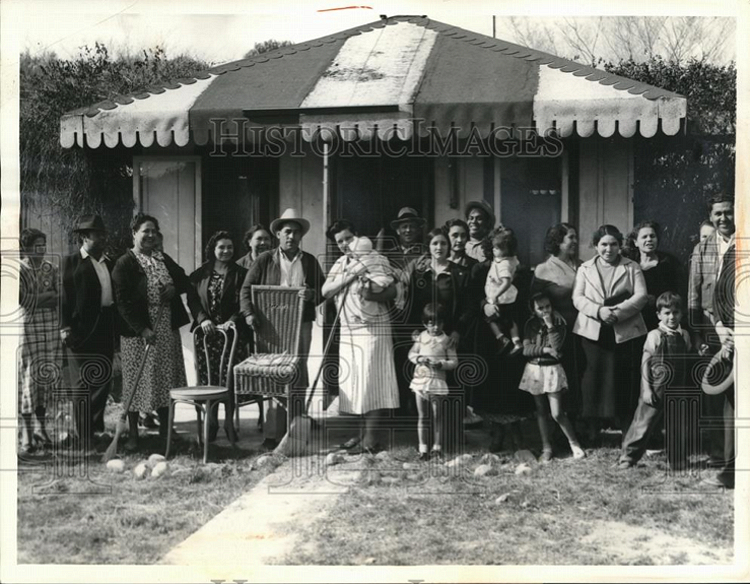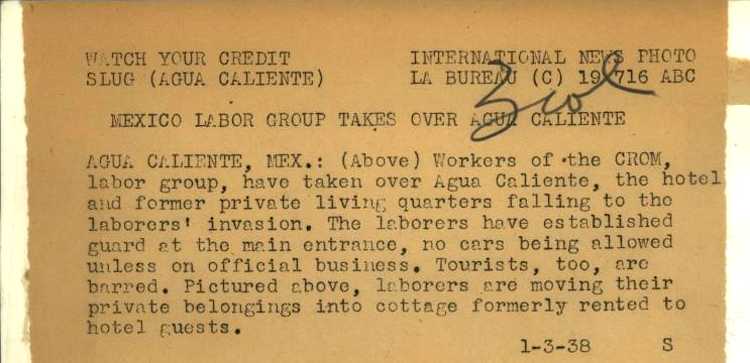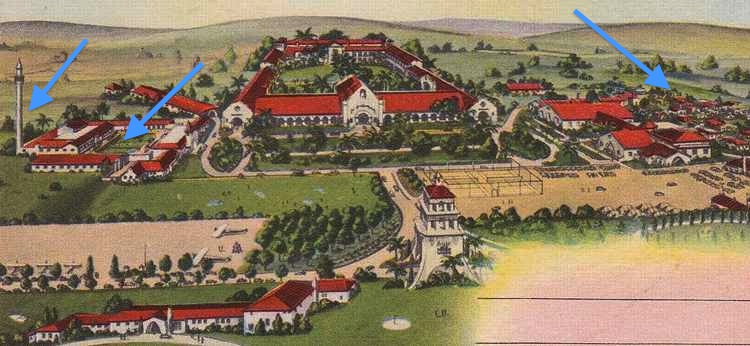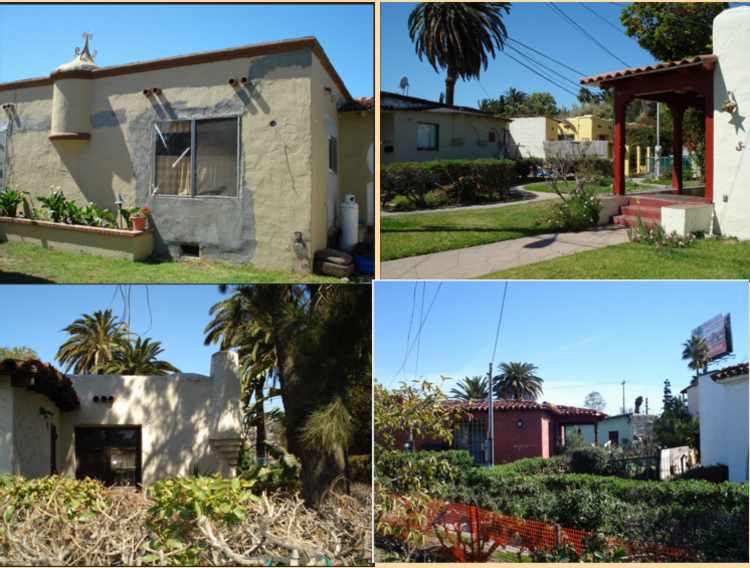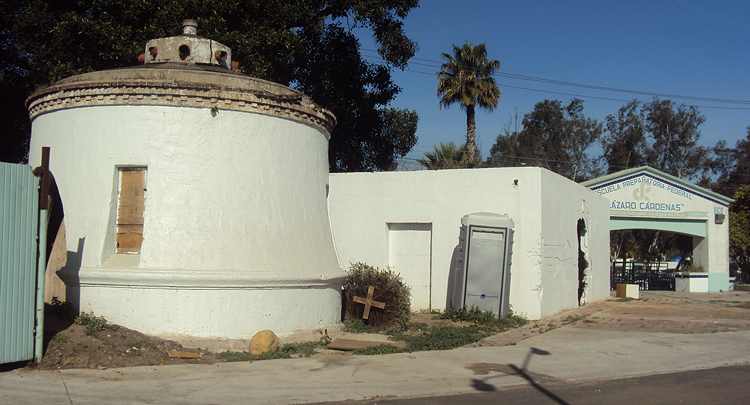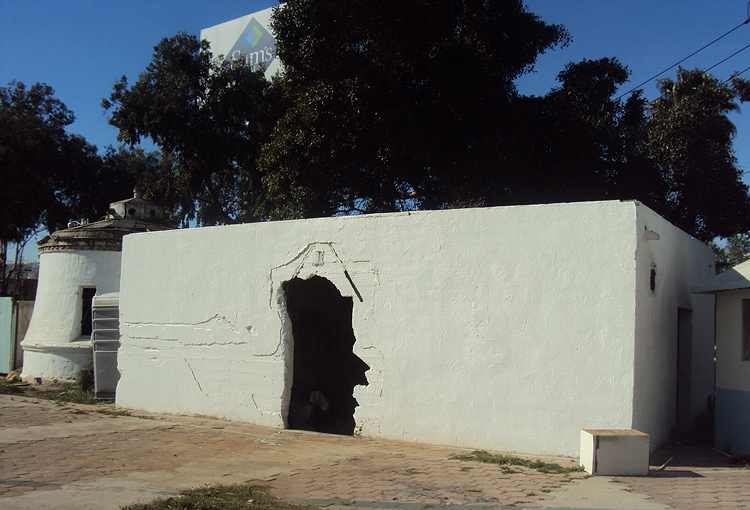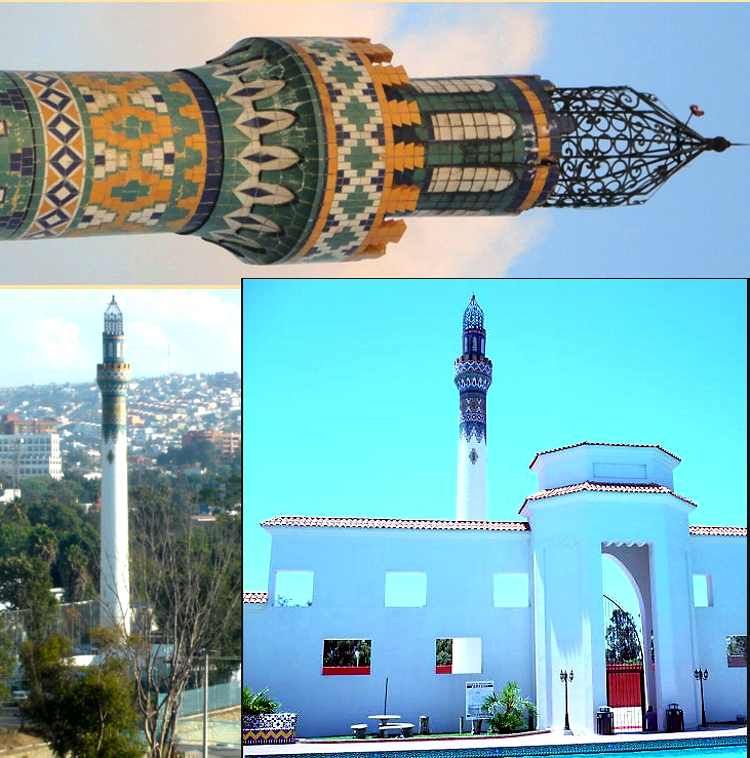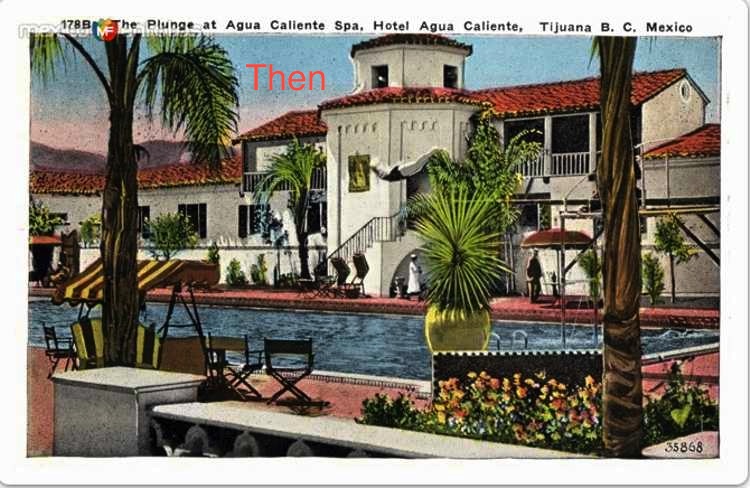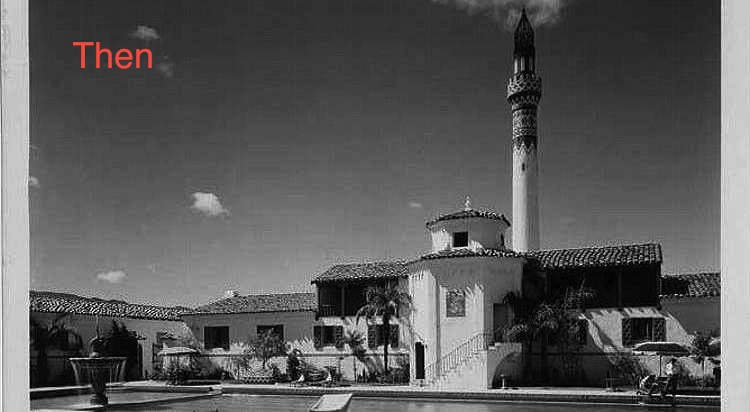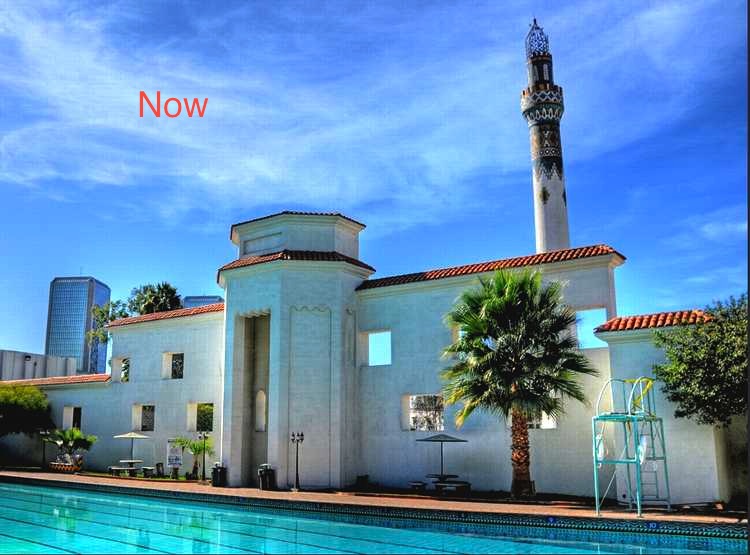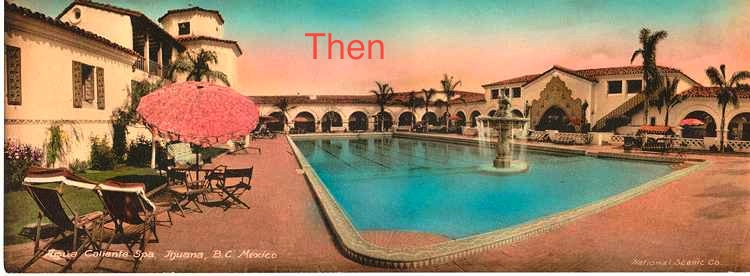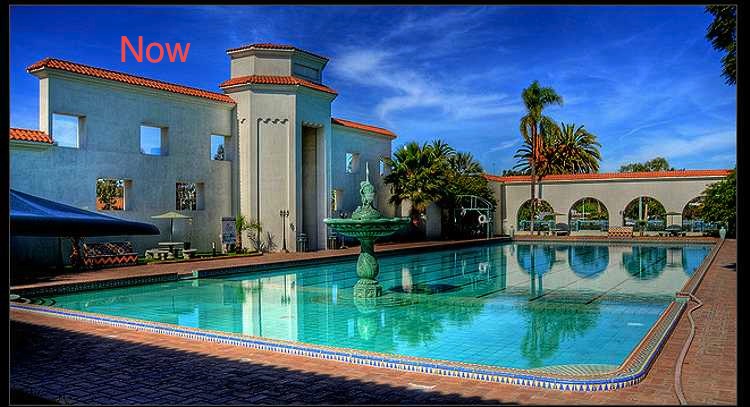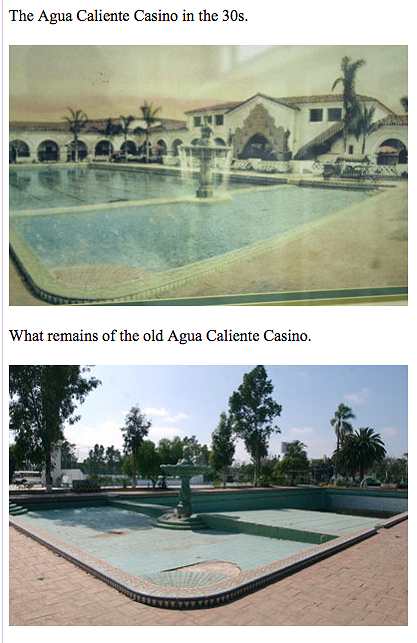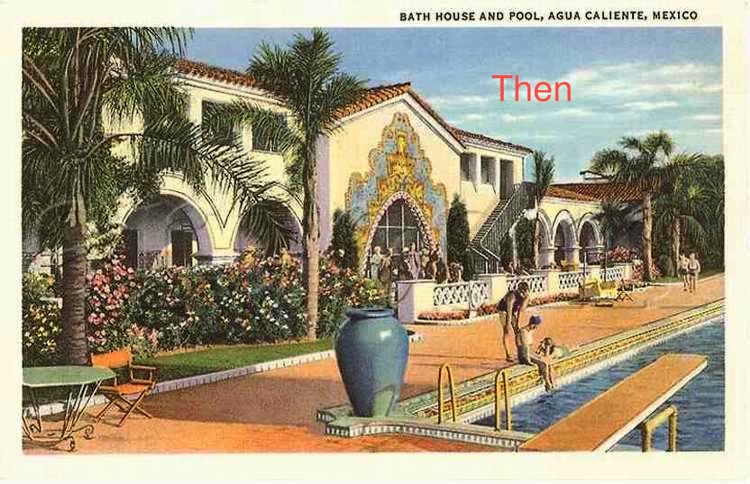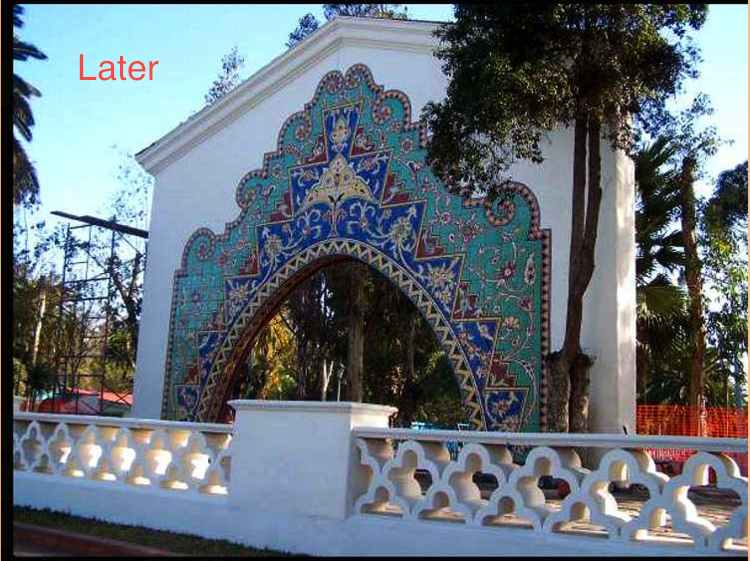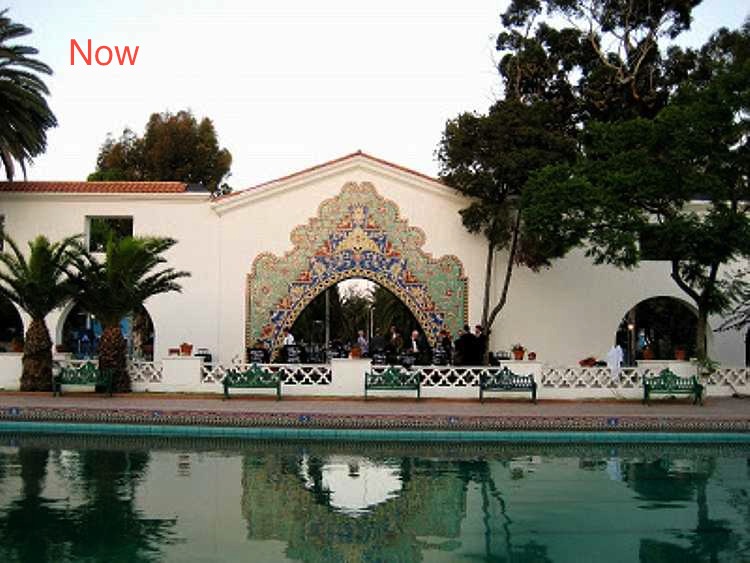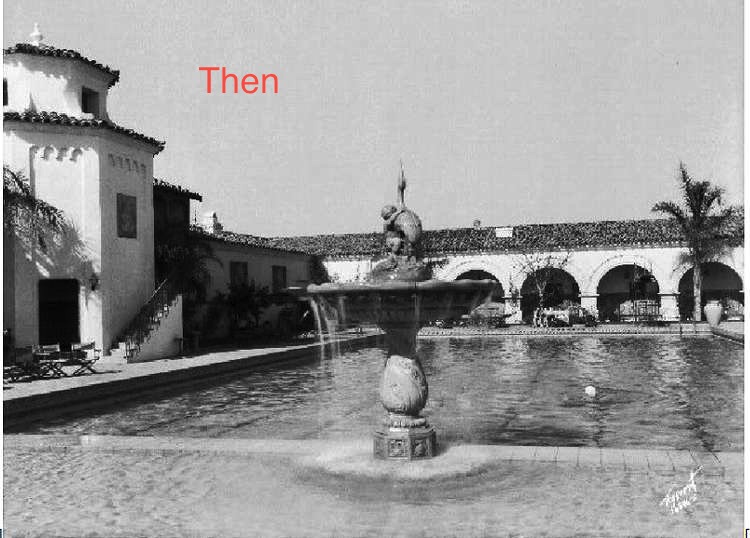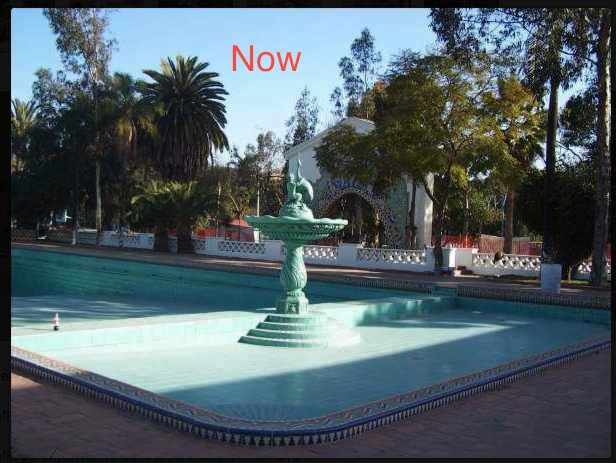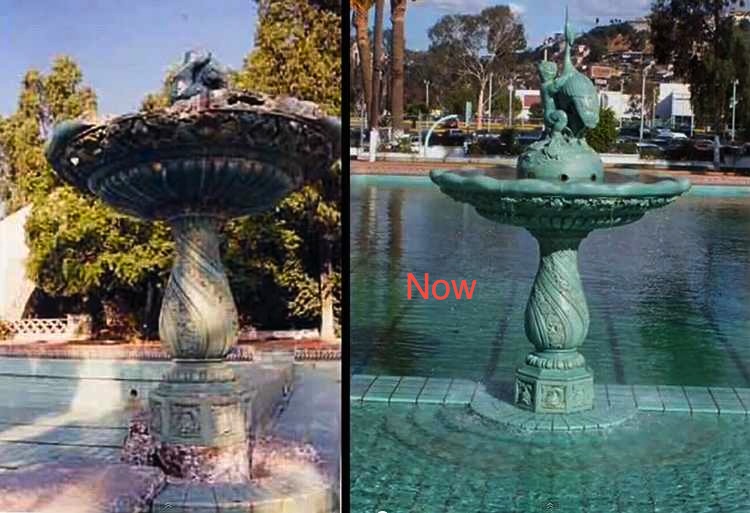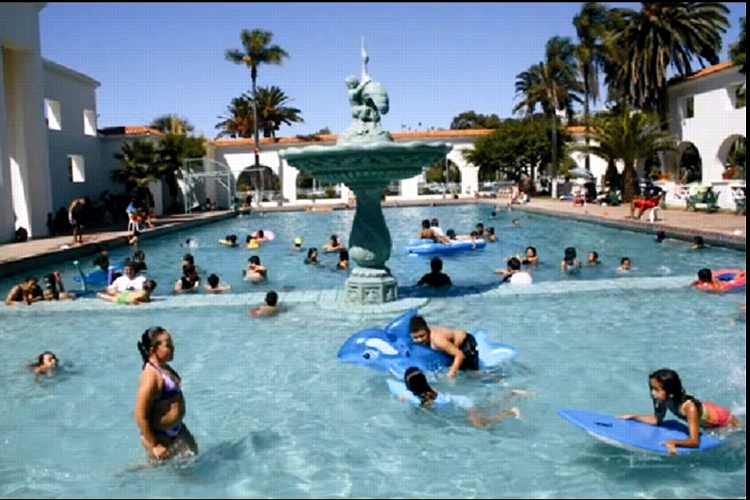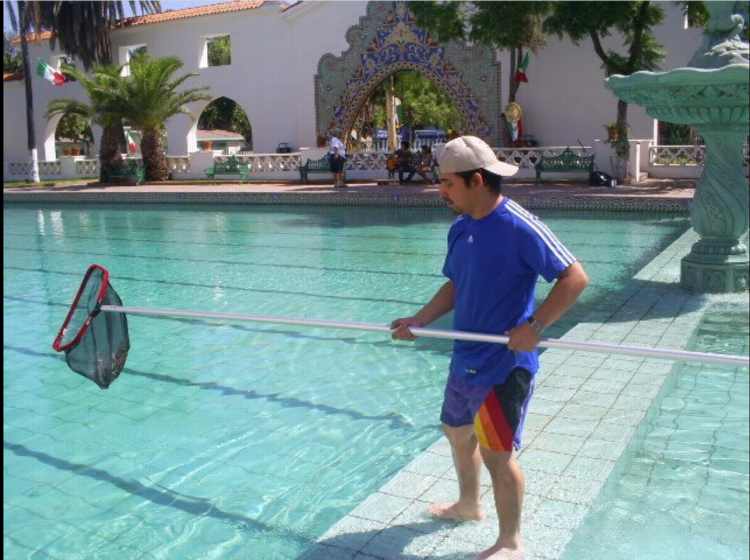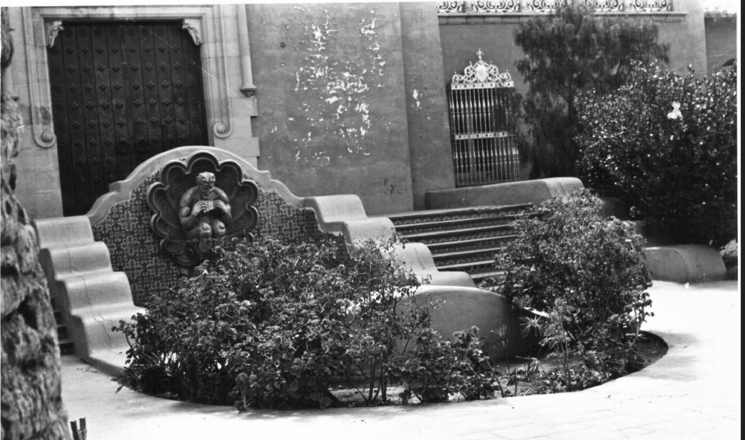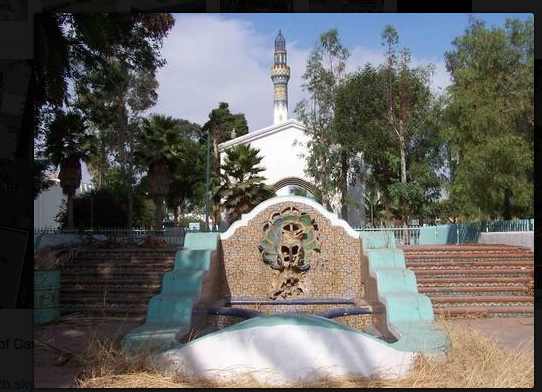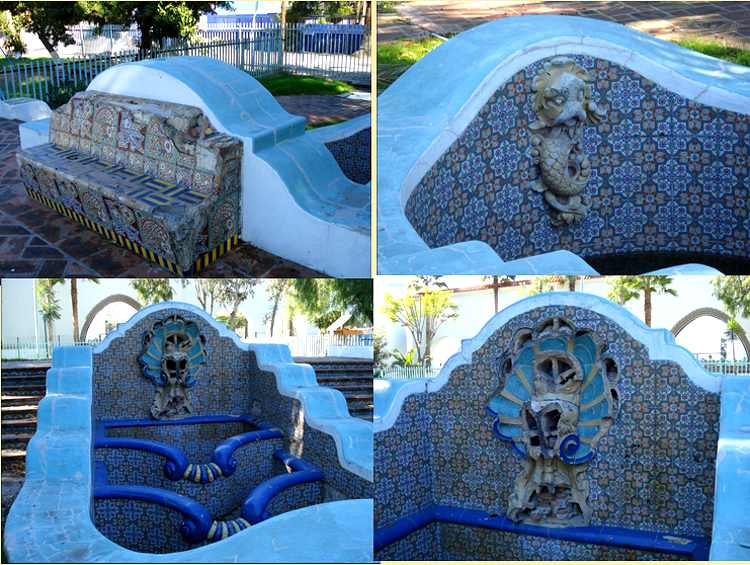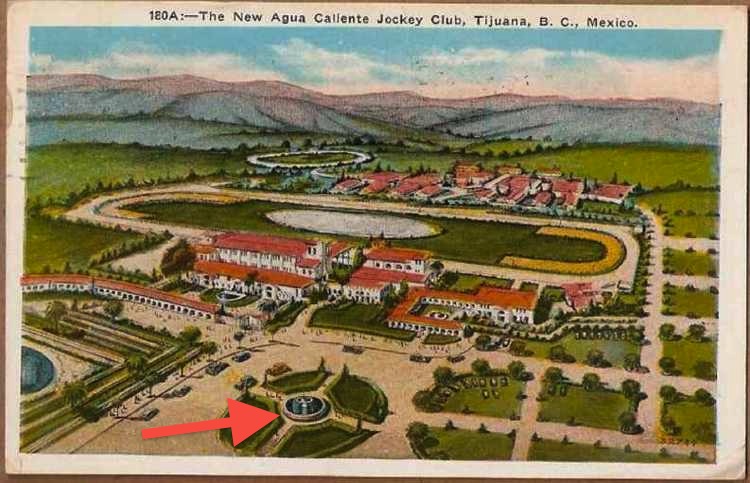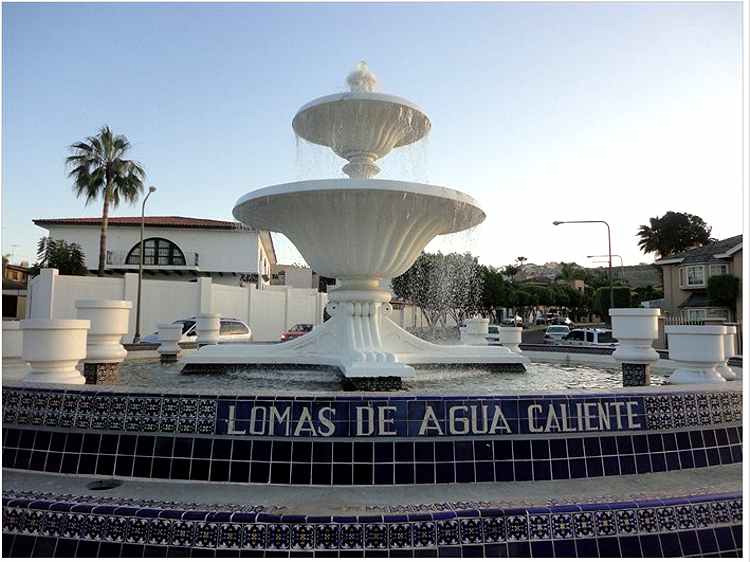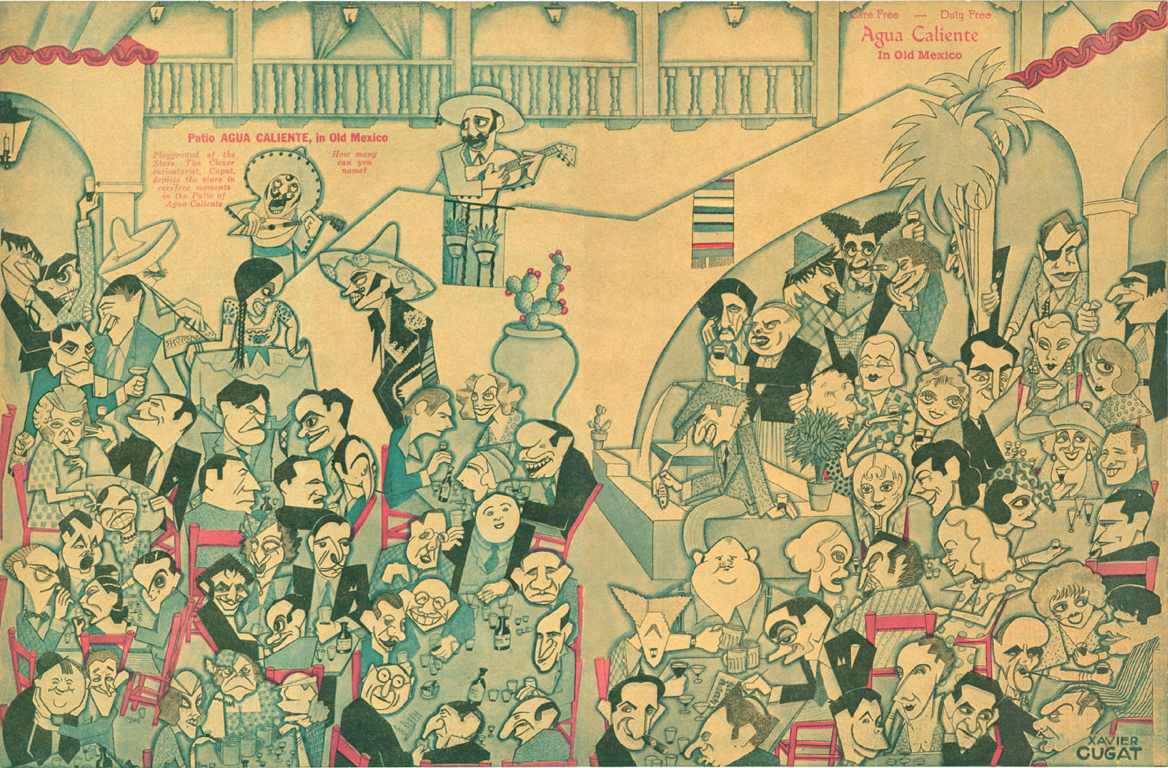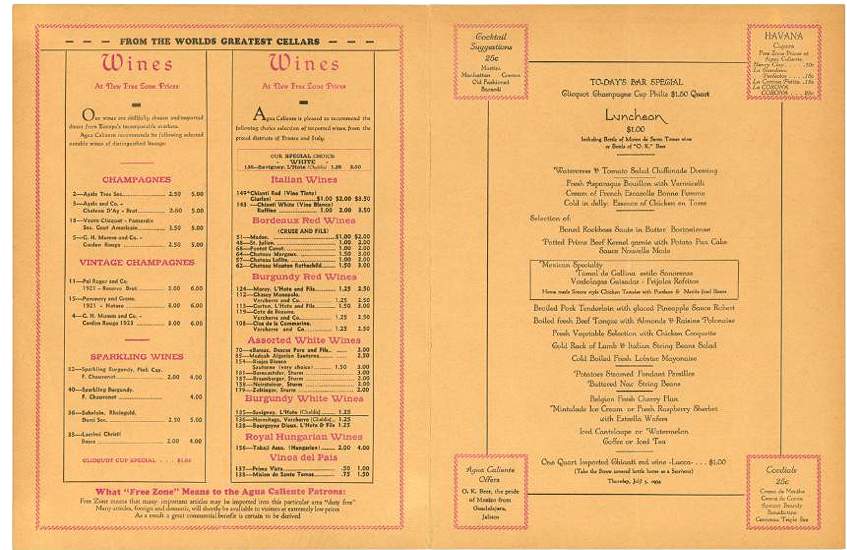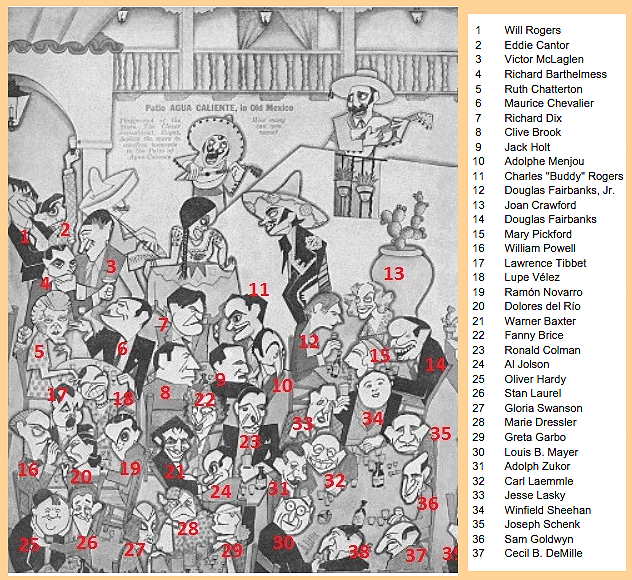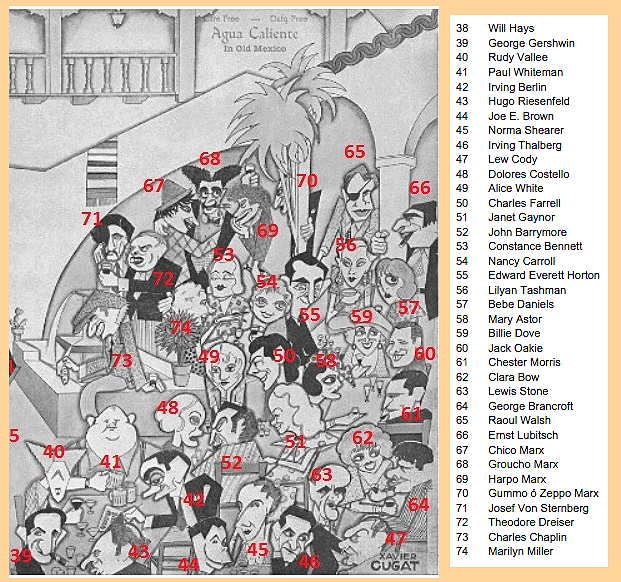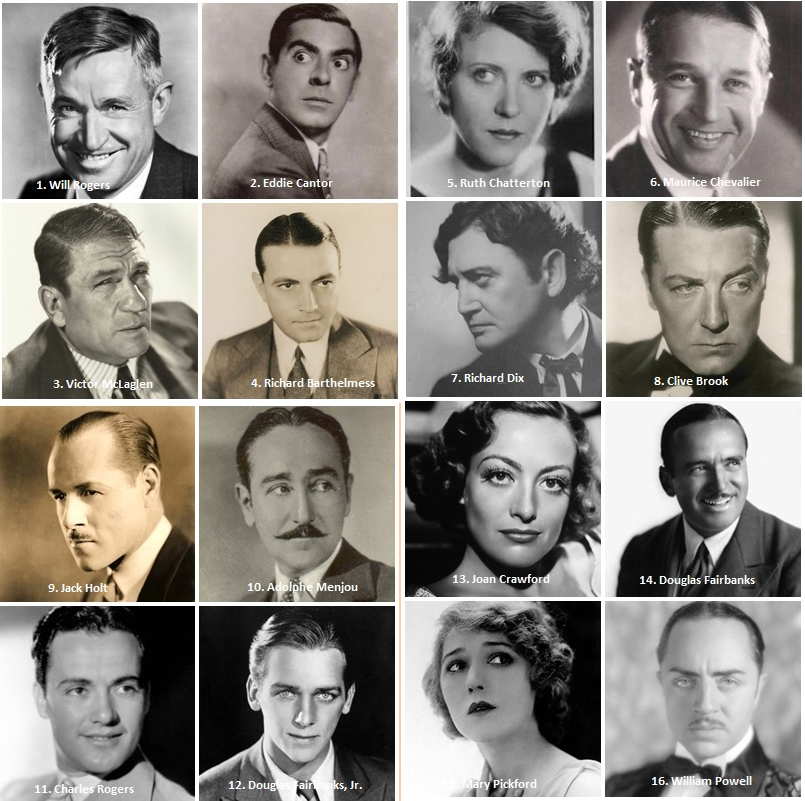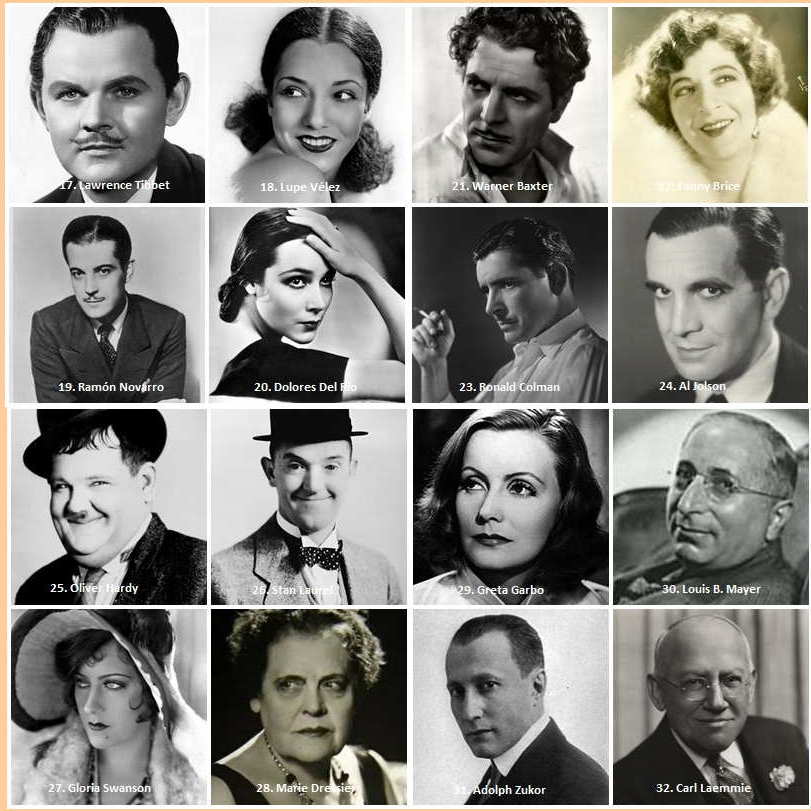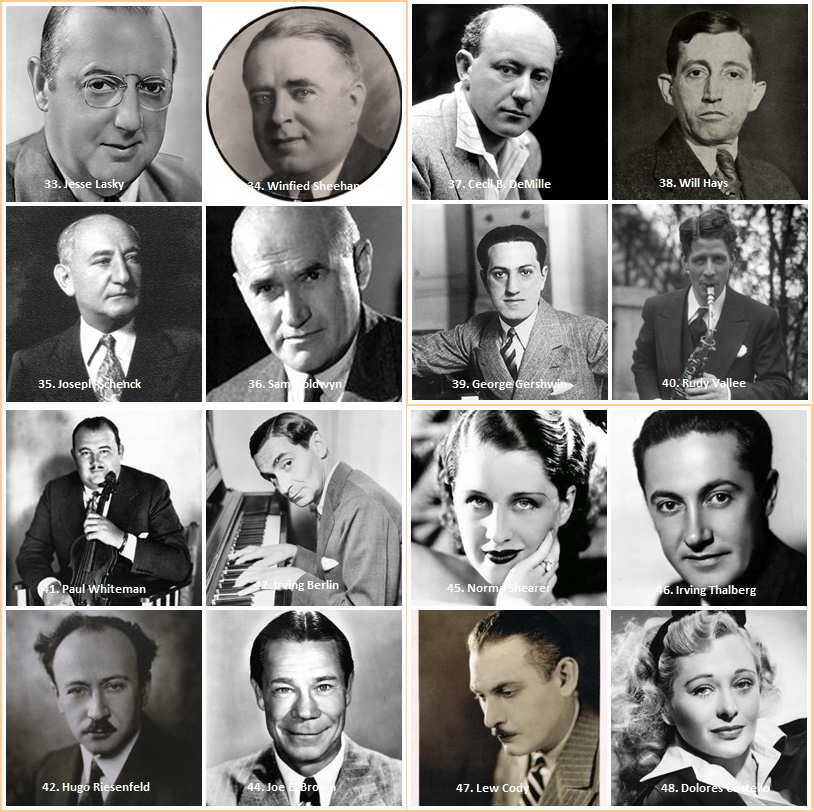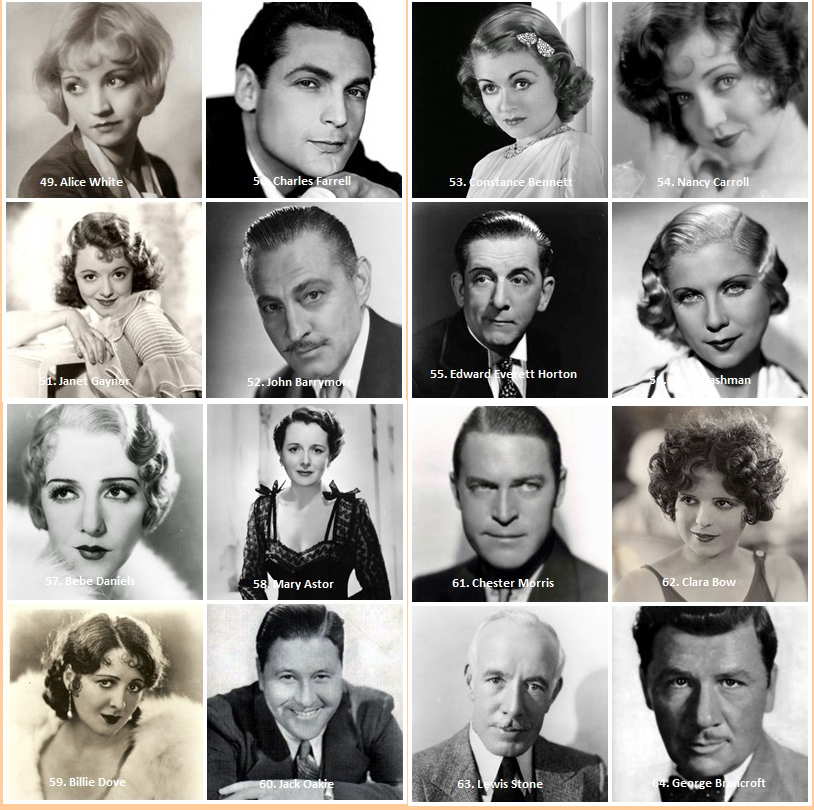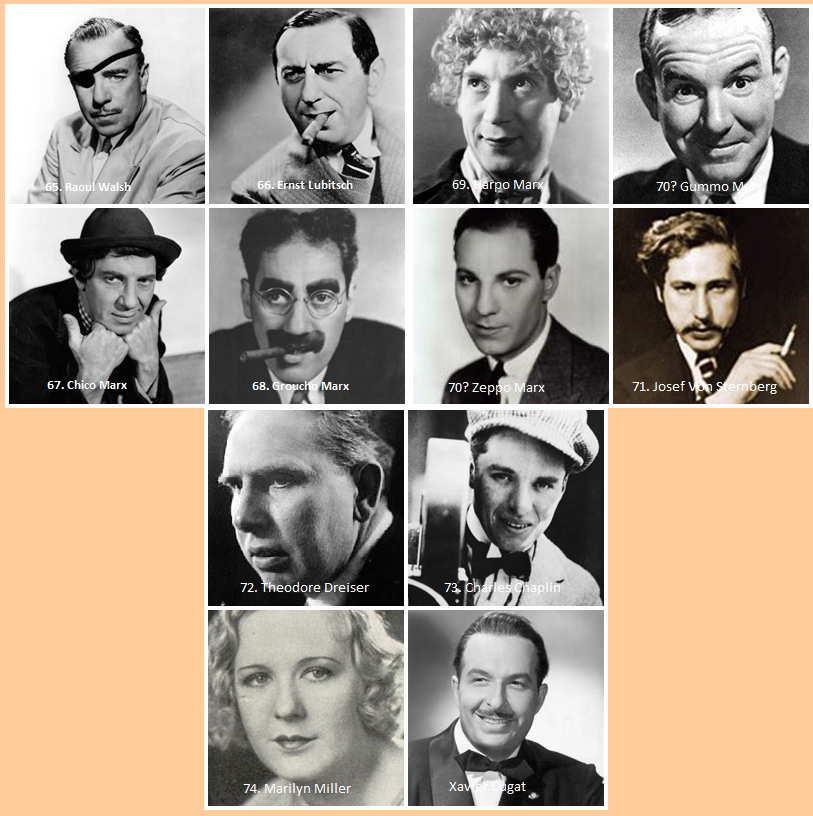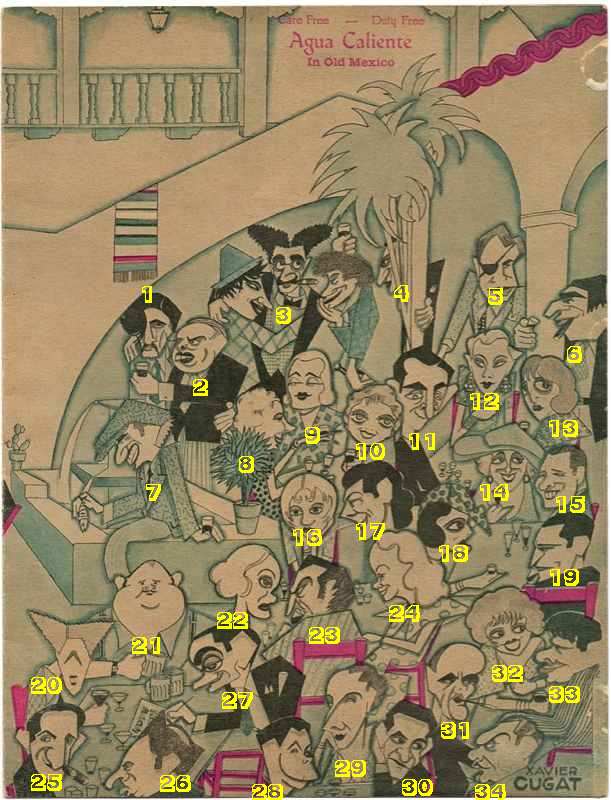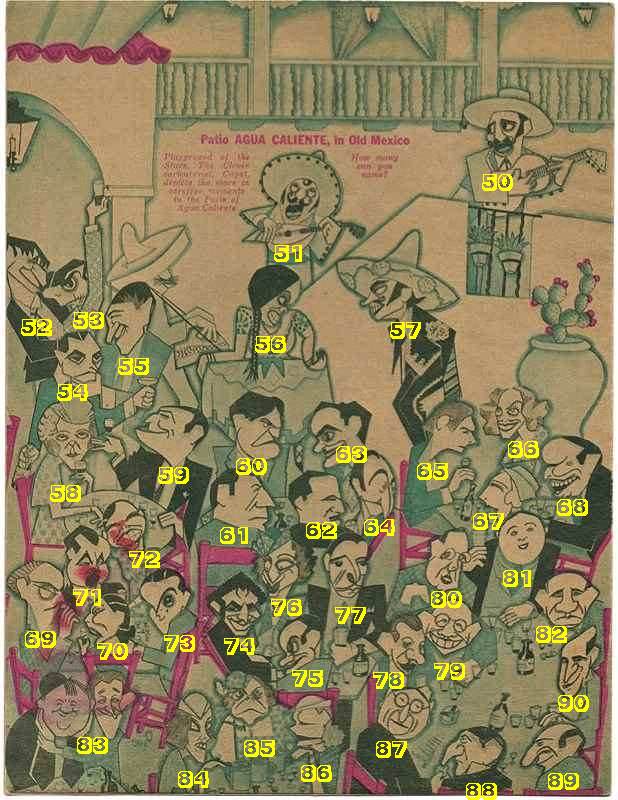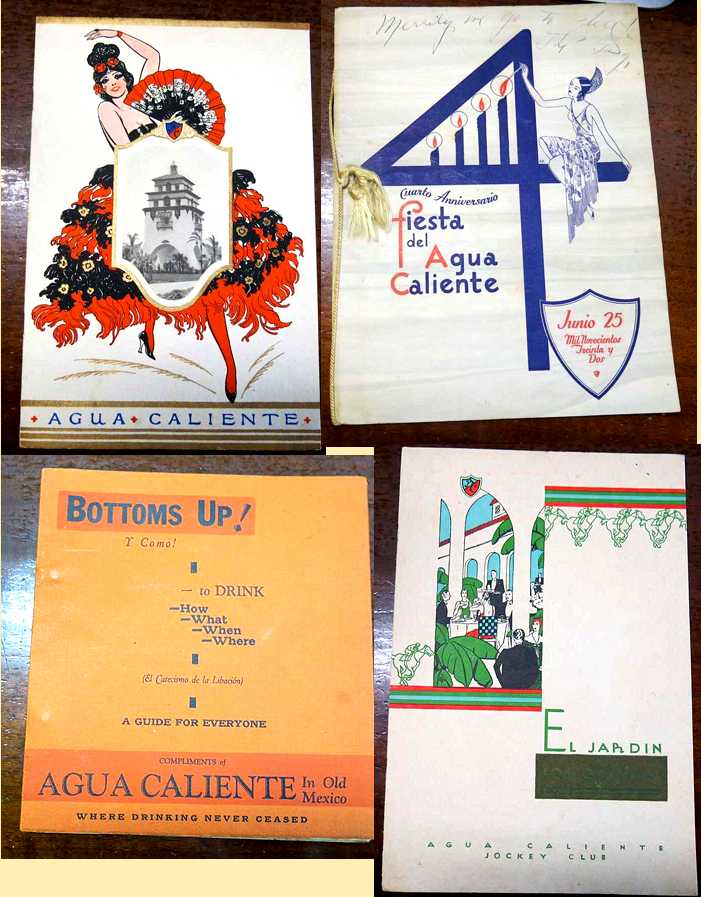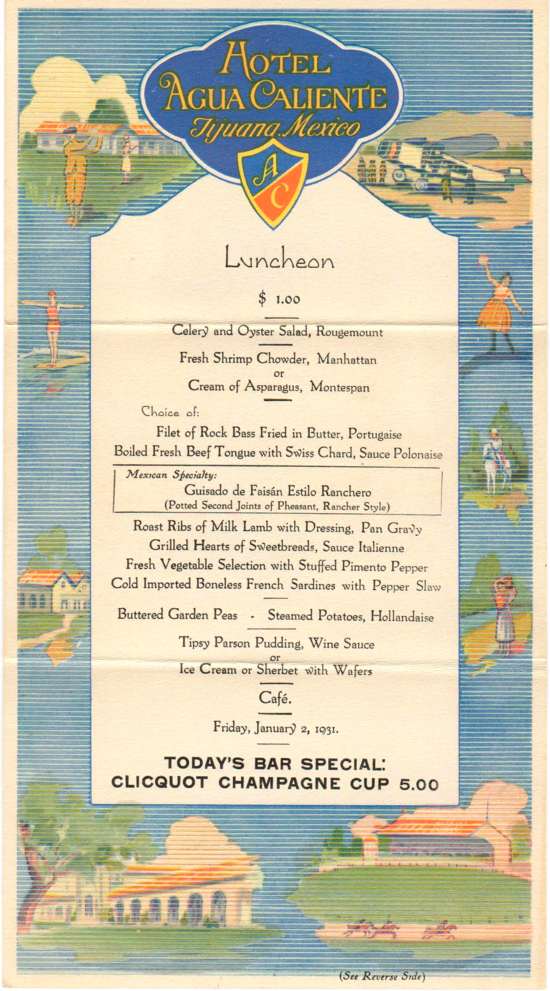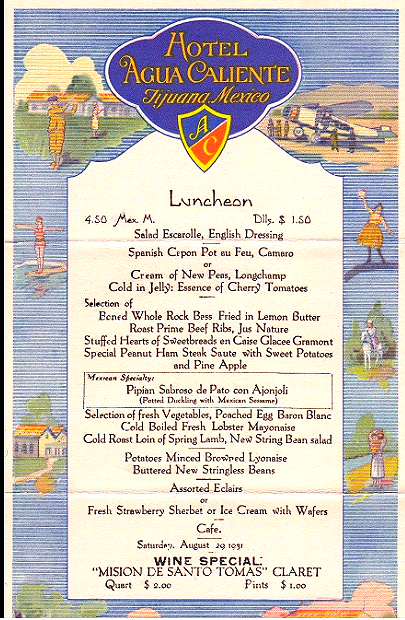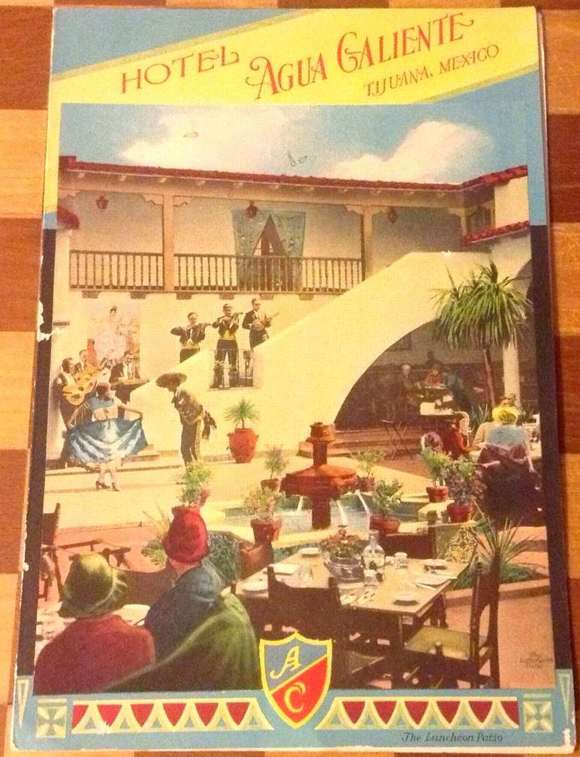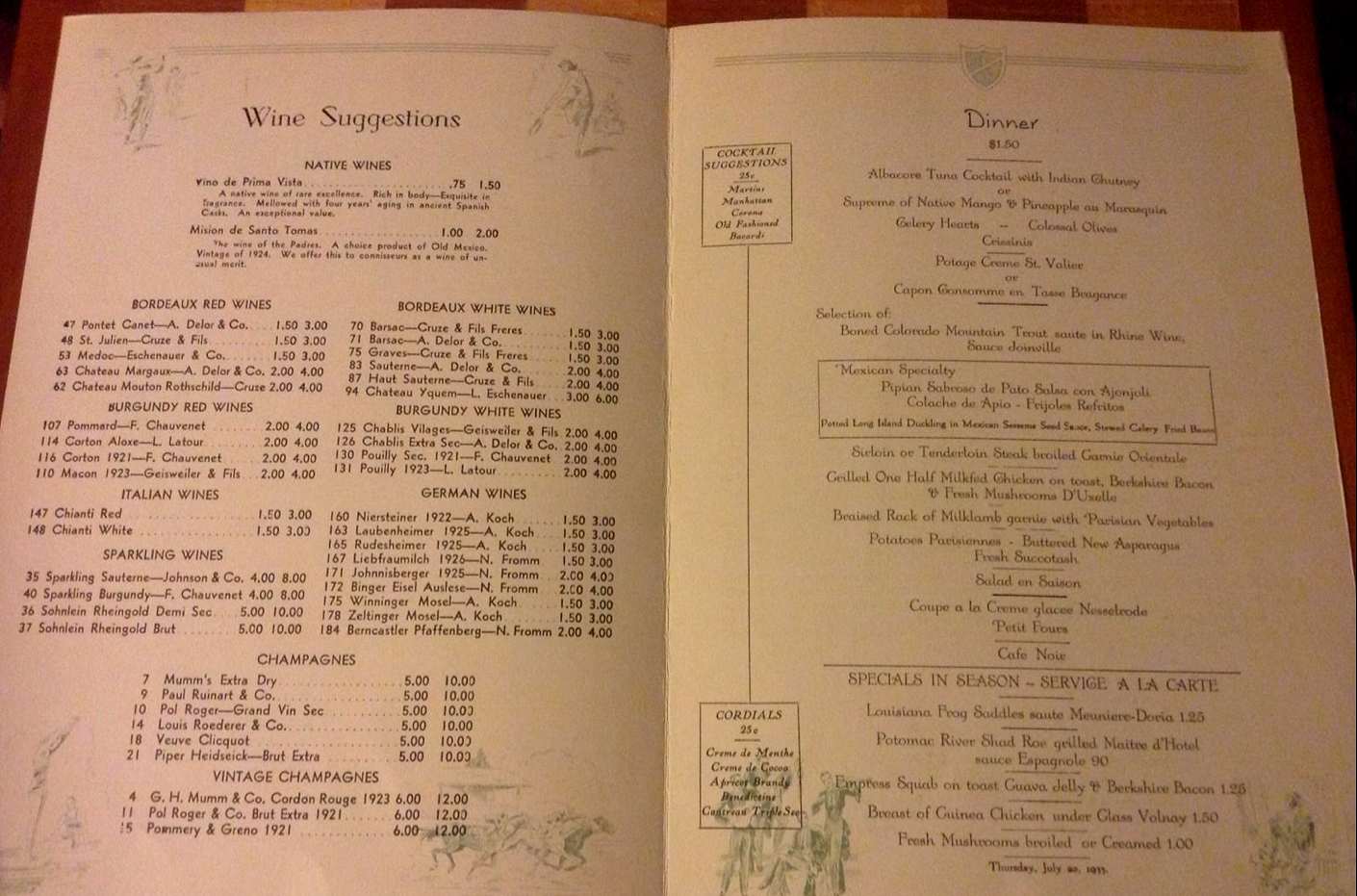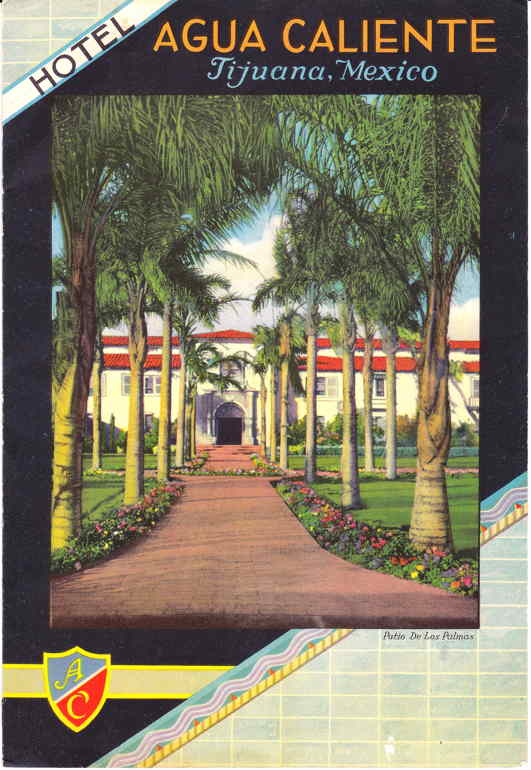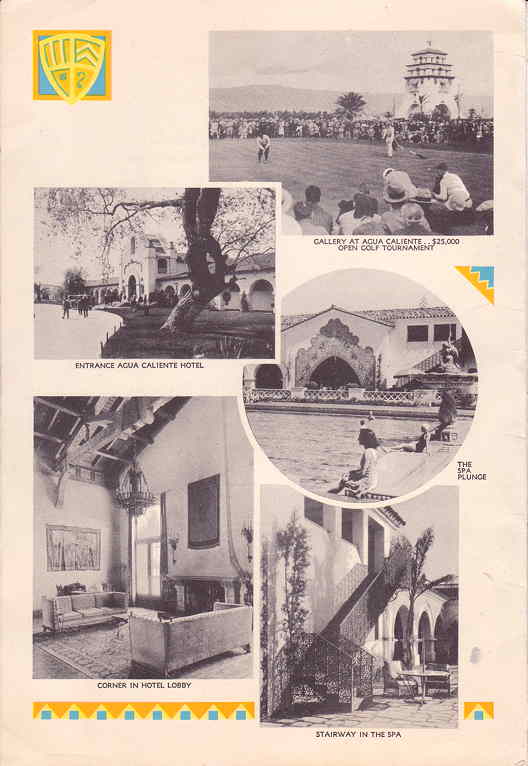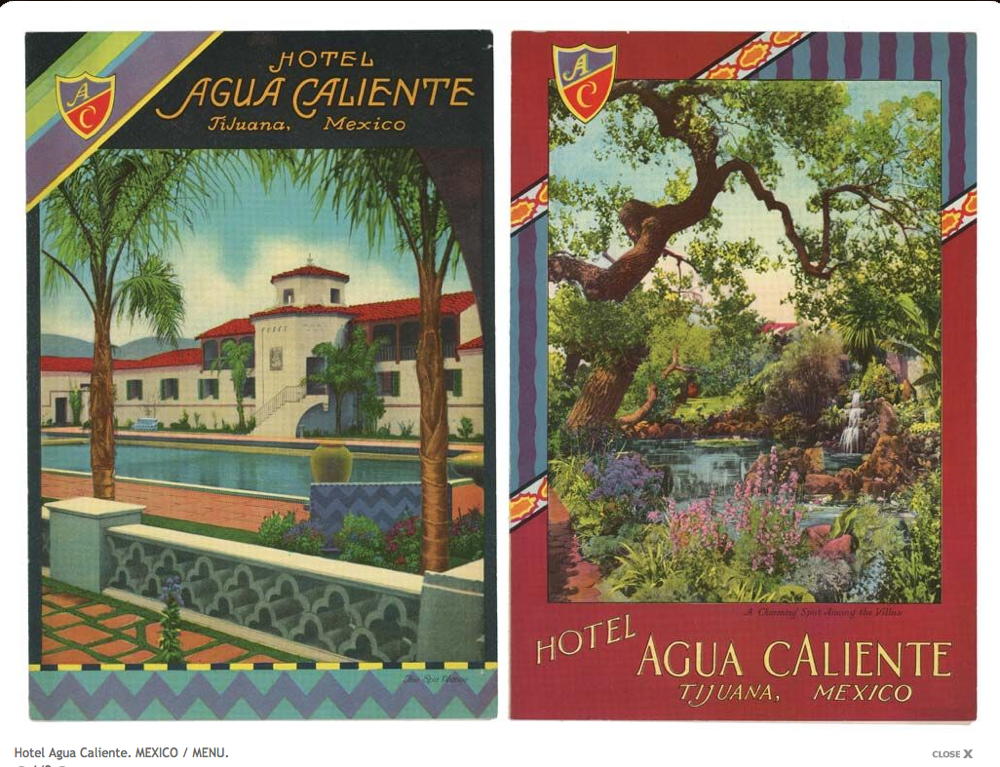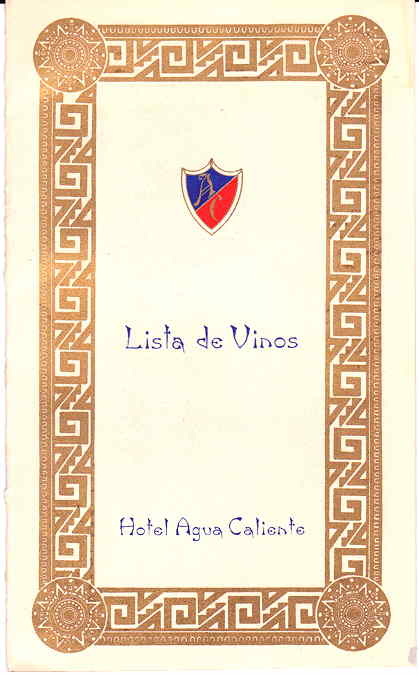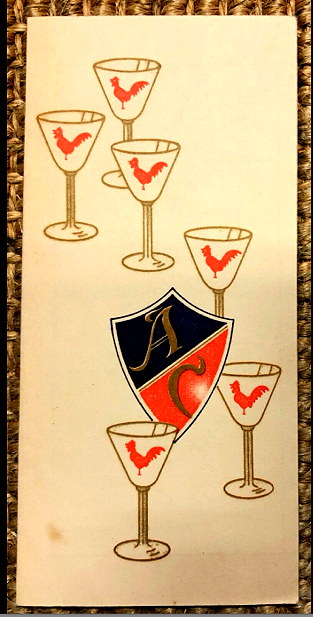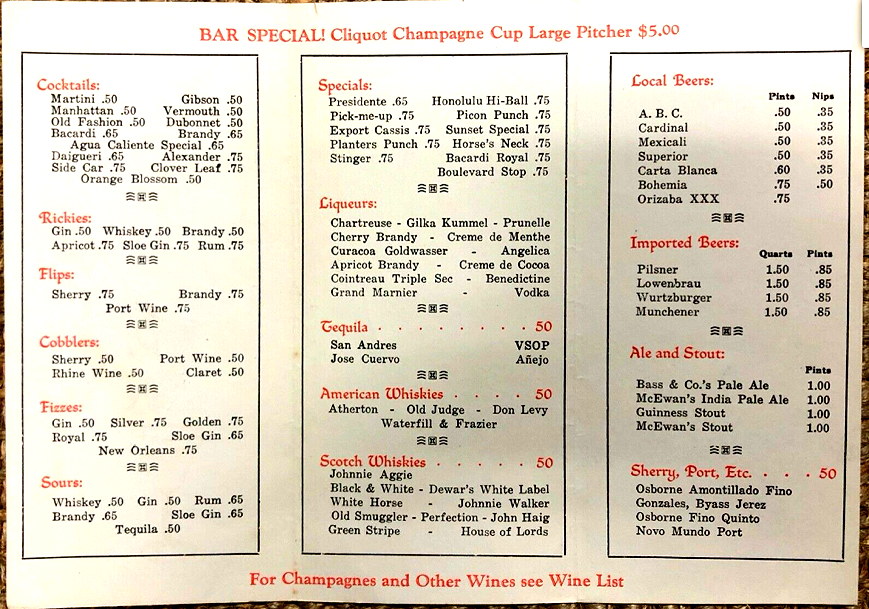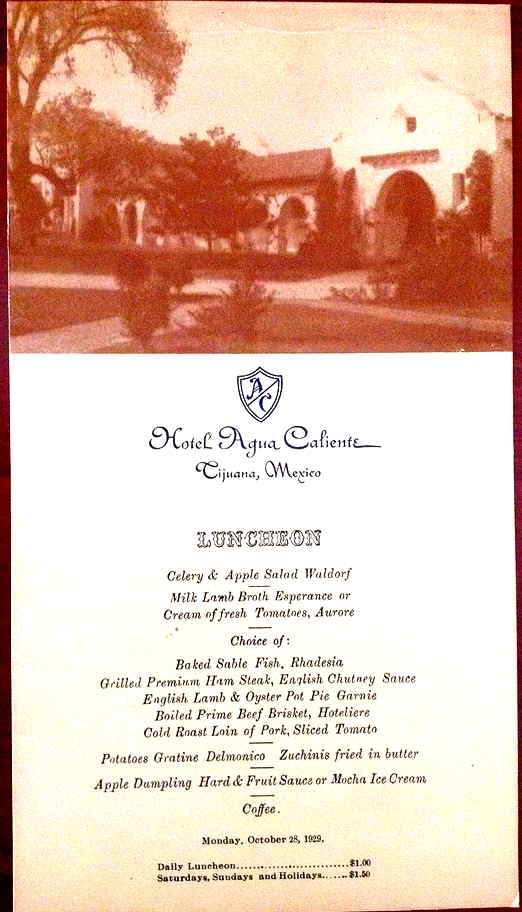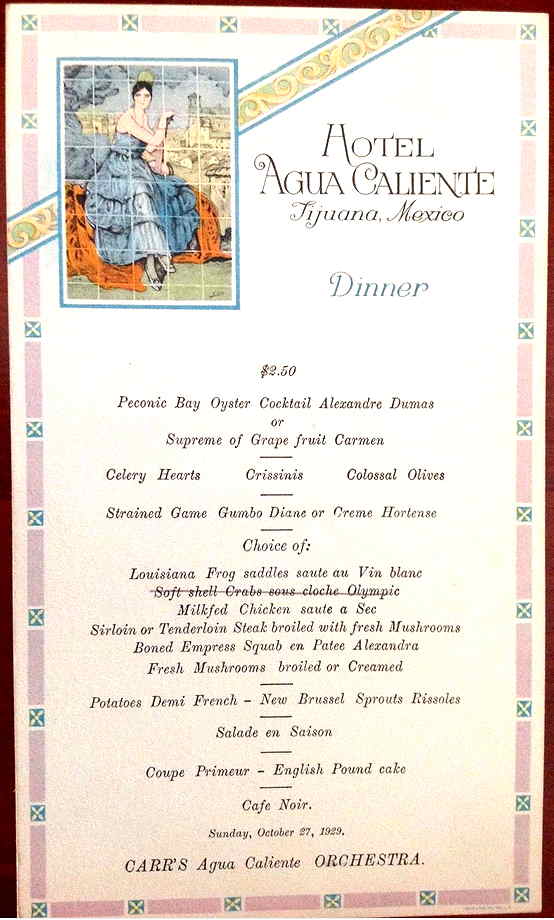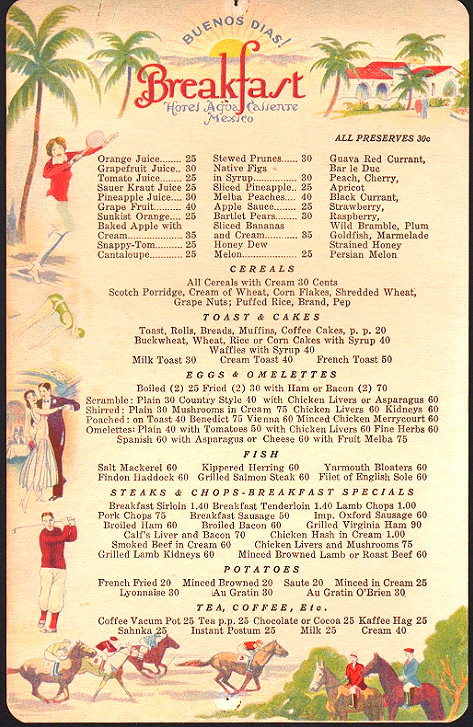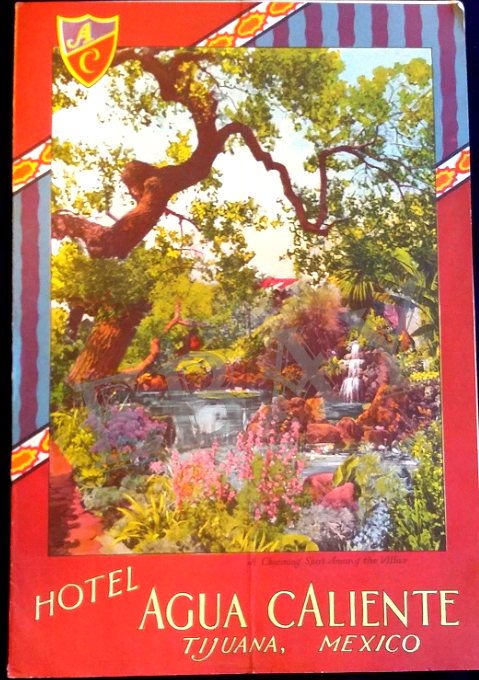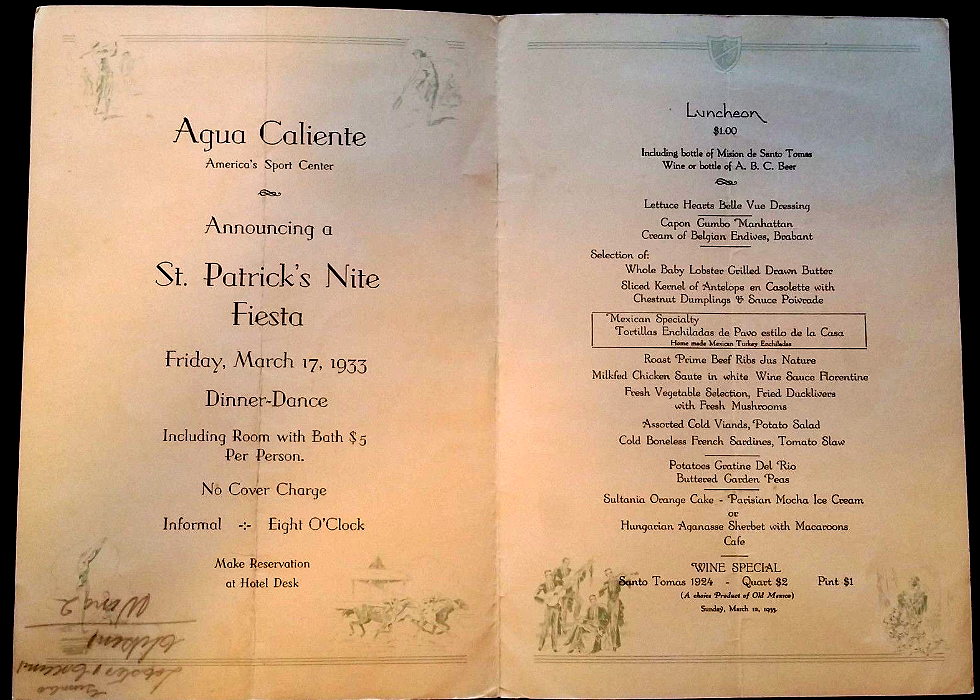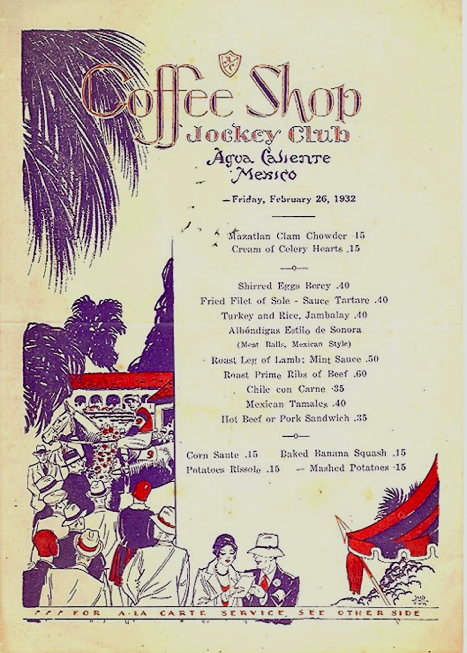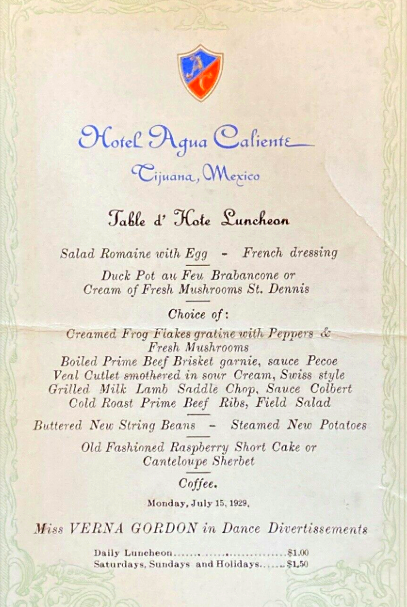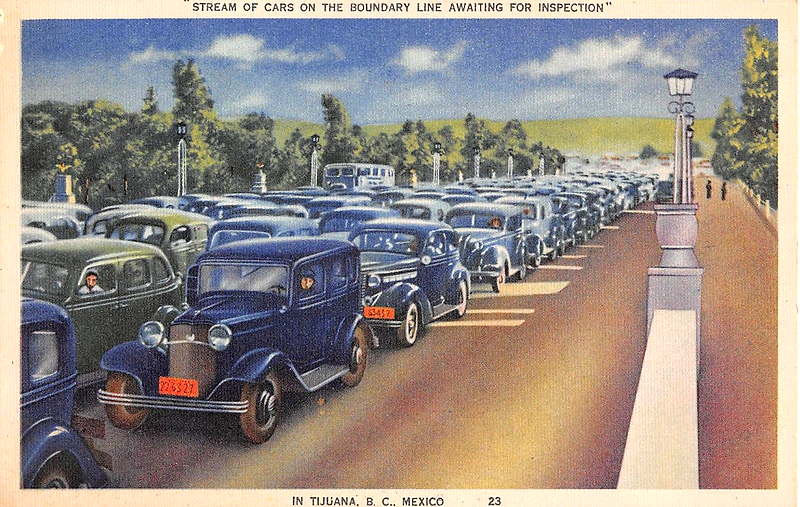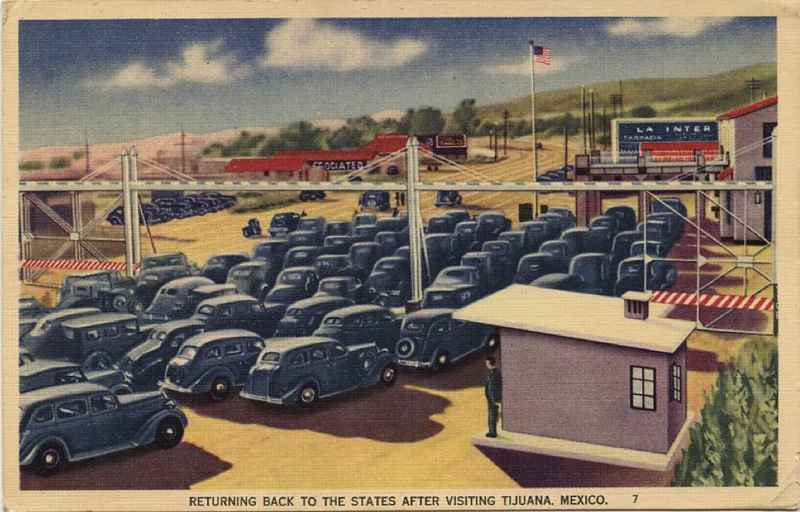3. HORSE
AND DOG RACETRACKS, GAMBLING TIMELINE,
and modern CALIENTE CASINO (modern sports book, slots,
video terminals and chip gambling there today).
back
|
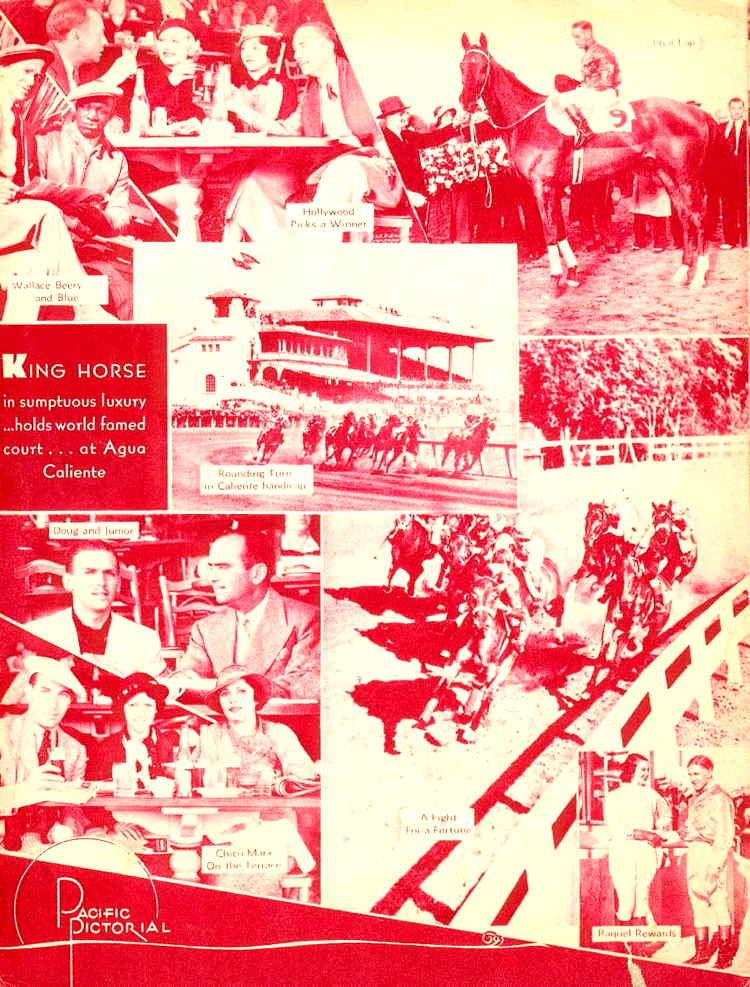
300. Montage of scenes from the Agua Caliente racetrack, including Hollywood celebrities at the track. Click here for an enlarged picture. |
|
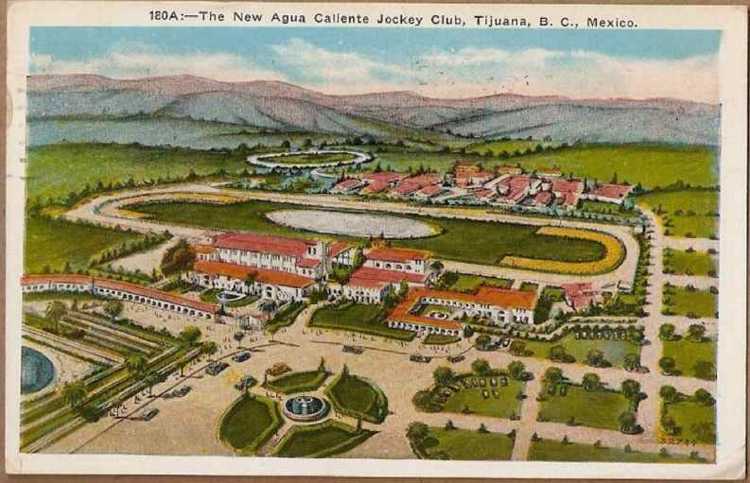
301. 1929 Agua Caliente Race Track.
BRIEF HISTORY OF
THE HORSE AND DOG TRACKS AT AGUA CALIENTE:
The $2.5 million
Agua Caliente racetrack opened in December
1929,
one year after the Hotel-Casino opened.
To
get the extravagant track they envisioned, the Border
Barons
and their architects visited the major tracks in the US and
Europe.
It was the site of several industry firsts,
including
starting gates, safety helmets, photo finishes, the first
public address race caller and �pick six� wagering. Both
Phar
Lap and Seabiscuit ran and won the Agua Caliente Handicap,
which for a time was the richest in the world with its
$100,000 purse! The race has been won by many champions, including
Round Table in 1958, Gallant Sir (1933 & 1934), who won it twice
and in record time, Phar Lap in 1932 and Seabiscuit in 1938. The
race
attracted wealthy Southern Californians.
But
in 1935, Mexican President L�zaro C�rdenas
outlawed gambling and the resort was
closed.
Though the race track continued to operate,
gambling was not legalized again until 1938, by which
time the track had already been replaced by the new Santa Anita Park in
Arcadia, California, United States, as the choice of owners to run their
horses. In
1947 a small dog track oval was inserted within the larger
horse
race track oval (see picture #327 below). In 1971 the
original
structure of the racetrack was destroyed in a fire. It
was later repaired, [reopened for horse racing, struggled
for
years, eventually discontinued horse racing May 17, 1992, due to
poor attendance and labor problems], and continues operation
today (in a rebuilt structure) as a dog track and a successful
national
and international sports book and casino (mainly slot and other
machines,
though some illegal live table games -- see pictures 338 and 343
below),
Wikipedia. Source.
On the map
at the top of this page the horse track
is location #17. This article enumerates
the many "firsts" in racing safety, efficiency and betting
that were at Agua Caliente.
Per a 1993 Los Angeles Times news article: "Although Caliente
is doing away with horse racing, the track's
dog races, which are run daily, and the popular sports
book operations will continue. And the track still offers
satellite wagering on horse races at tracks throughout
the United States. In addition, wagering is also
available on all major U.S. sporting events. Besides Nevada,
Caliente is the only place in the world that offers
legal all-out betting on U.S. sports other than horse and
dog racing. At Caliente, it is possible to wager on dog races
and a basketball game at the same time." Dog racing continues
today.
The first dog
track was established, at location 14 on the
map
above, about the time of the hotel opening,
but "in 1947, Caliente built an excellent greyhound
racetrack at the infield of the horse racetrack."
(Source.).
AGUA CALIENTE HANDICAP (COFFROTH HANDICAP).
"Initially run as the Coffroth Handicap at Tijuana Race
Course in 1917 and from 1921-1929, the Coffroth H. was renamed the Agua
Caliente Handicap with the closure of Tijuana and the opening of Agua
Caliente Racetrack in 1930. The Agua Caliente H. was run at Agua
Caliente from 1930-1934 and in 1938, before being run once more in 1958
as the Caliente Handicap."
A run-down of each of these races, with pictures, is found at this page.
In the text to the pictures below, I refer to these five
designations for the time period of the track. They were built at
two different locations -- TRACK #1 (Tijuana Racetrack) "was built very
close to the San Ysidro border gate" (source), and the others at location 17 in the map at the top of this page:
TRACK #1 (Tijuana Racetrack, 1916 built - 1929 abandoned)
TRACK #2 (Agua Caliente Racetrack, 1929 built - 1950s renovation)
TRACK #3 (Agua Caliente Racetrack, 1950s renovation - 1971 fire
destruction)
TRACK #4 (Agua Caliente Racetrack, 1974 rebuilt - 2007
demolished)
TRACK #5 ("Hipodromo [Racetrack] de Agua Caliente," 2007 built at same location
- present)
|
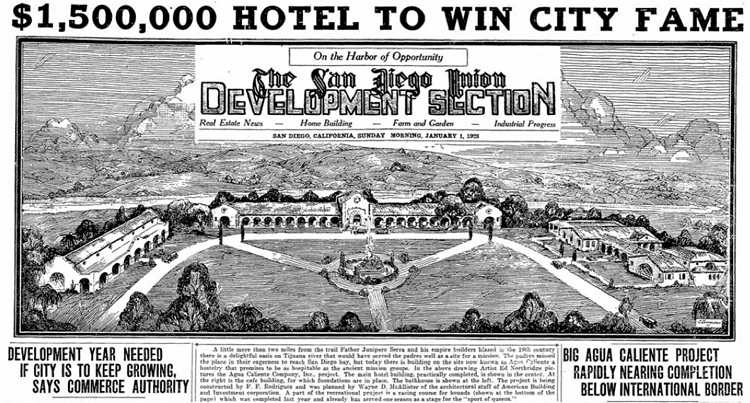
301a. Above newspaper
front page from January 1, 1928.
TIMELINE OF THE GAMBLING
SITUATION IN MEXICO, WITH EMPHASIS ON AGUA CALIENTE,
TIJUANA:
early history -- in the 19th
century, due to the the French influence, and during Porfirio
Diaz's 30-year reign, French-style casinos proliferated.
The 1911 Mexican Revolution ended Diaz's rule and put a hold
on the gambling industry. The Tijuana Race Track (1916-1929)
opened "following Mexico�s 1915 decision to legalize gambling."
(Source.)
1928 -- Agua Caliente Hotel
& Casino opens with full-scale gambling. (The dog
track there opened the year earlier, at location 14 in the map
above.)
1929 -- Agua Caliente (Horse)
Racetrack opens, supplanting the old 1916 Tijuana (Horse)
Race Track. Wagering on the races allowed. The Horse
Track is at location 17 in the map
above, the same location it rebuilt at over the
years, the same location as the present Hipodromo de Agua
Caliente (Agua Caliente Racetrack), which houses the current
dog track-Caliente Casino-sportsbook-video-slot machine
casino.
1935 -- Mexican President
L�zaro C�rdenas outlawed gambling, and
the resort was closed, never to re-open there. Also no
gambling was allowed at the race tracks, which continued to operate
without a ticket-teller window.
1938 -- gambling allowed once
again at the race tracks.
1947 -- the old dog track moved:
a small dog track oval was inserted within the larger horse
race track oval.
1947 -- a Mexican gaming law
was passed to solidify the ban on gambling (but horse-betting
continues at the racetracks).
1971 -- the race track was destroyed
by fire. Rebuilt, and reopened in 1974.
1989 -- the Tijuana-based Caliente
Racetrack received permission from the Mexican government
to offer sports betting. While not an outright approval of
legalized gambling, it certainly moved the country one step in
the "right direction."
1992 -- horse racing ended at
Caliente due to labor problems and competition from
California tracks, especially when, in 1973, California allowed Sunday racing.
"Ironically, a lot had to do with the population explosion in Southern
California. San Diego was growing as a major vacation spot for Los Angelinos
and crowds at the Tijuana border would back traffic up for miles. At times
it could take 90 minutes just to get from San Diego to the border parking
lots. For most people going to the races, it wasn't worth the struggle. As
the American crackdown on illegal drugs broadened, the lines of traffic got
even worse." (Source.) Dog
racing continues to this day.
2004 -- the Secretaria de Gobernacion
(similar to the U.S. Ministry of the Interior), which
oversees the gambling and raffles department, took action
and issued regulations which would allow the operation of certain
numbers-based games. Those opposed to gambling were greatly upset
when outgoing Secretary of State Santiago Creel approved more
gaming licenses in a month than had been approved from 1917 to
2004. As a result, there is all sorts of gambling throughout
Mexico, though no "live table games." There is much sports
book betting (online, by phone, in person -- on races and
sporting events throughout the world); Pari-Mutuel Betting
(mainly horse racing, dog racing and Jai Alai); video
gambling/slot machines ( for example, in the typical Mexican
bingo parlor, you might find as many as 200 to 300 machines. Payouts
usually average from 94 to 96 percent); lottery;
bingo; poker (various forms of it played
in many casinos and hotels, legal or not).
2007-8 -- the old Agua Caliente
racetrack building was rebuilt into the largest casino-sportsbook
in Mexico and a shopping center and sports stadium.
today -- today, the main casino-sportsbook-dog
track in Tijuana, Mexico, is called "Casino &
Racetrack Caliente." It is located at the site of the old 1929
Agua Caliente Racetrack. It's home page is
here.
The casino is often called "Caliente" or "Caliente
Casino." The dog track is named "Hipodromo
[Racetrack] de Agua Caliente." The company also owns
the nearby sports (soccer) stadium, "The Estadio Caliente."
....."Casino & Racetrack Caliente" is just one cog in the
world-wide gambling empire controlled by the Mexican-owned
Caliente Company (home
page), which operates and owns "full featured casinos
with modern electronic gaming terminals, bingo halls, sports
betting, live greyhound racing and simulcast horse racing.
... Its entertainment offerings now include the largest collection
of electronic gaming terminals in Mexico, the only greyhound track
in Mexico and a recently constructed premier class soccer stadium
in Tijuana." In Tijuana alone, it owns about 20 "Caliente
Casino" betting parlors. .... Mexican federal law prohibits live
games of chance � such as blackjack, poker and baccarat -- save for special
events. However, the electronic versions of these games are allowed in casinos,
among other types of games. And even live games have been seen there, permitted
by compliant officials (see picture 338 and 343 below).
predictions for the future --
one large real estate-hotel-vacation firm (Rosarito
Inn Condominium Hotel Suites) makes these predictions: "Mexico
has forayed into casino and gambling after many decades and new
facilities and permits are on the cards. A minimum of four
new services are planned along the Texas-Mexico border.
Besides this, over 35 gaming sites are expected to come up within
50 miles of the state's boundaries. Casinos may also come about
in the beachfront resort cities of Acapulco, Puerto Vallarta and
Cancun. Border towns, such as Tijuana and Ciudad Juarez will have
more casinos. Casinos are also expected to open in the Mexico City
area. ... It is speculated that with the [predicted] legalization
of gambling in Mexico, resorts worth over $500 million would open
in Acapulco and Mazatlan as potential casinos. Many gambling companies
of Las Vegas are keen to open casinos in the prospective market of
Mexico...."
Sources: here,
here,
and here.
Good brief hisory of the Caliente tracks here. And here -- home page for racing there, and short history of horse racing there.
|

301b. Fold-out postcard of the 1929 track, published by the Agua Caliente Co.
Click here for a bigger picture.
|
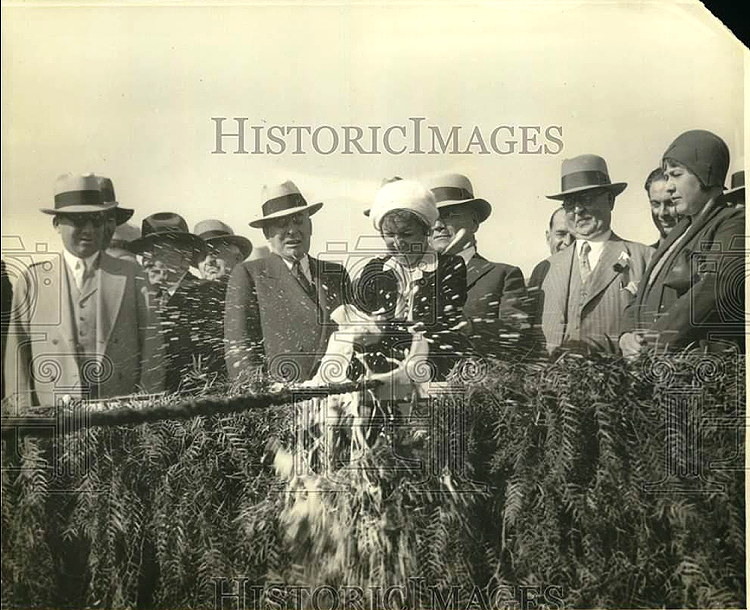
301bb. Dec. 12, 1929 Press Photo: Agua Caliente Jockey Club officials dedicate new racetrack. "Champagne
from the sunny vineyards of France formally christened the new
$2,000,000 racing plant here recently in preparation for the Inaugural
meeting which begins December 28 for eighty one days. Photo shows Betty
Jean Bowman, daughter of Wirt G. Bowman, President of the Agua Caliente
Jockey Club, dedicating the track. Wirt G. Bowman is right in back of
her, and George W. Schilling, Steward, is on the extreme left."
|
ENTRANCE
SIDE OF RACETRACKS
AT TIJUANA-AGUA
CALIENTE OVER THE YEARS:
TRACK #1 --Tijuana Racetrack: 1916 built - 1929 abandoned--
the ENTRANCE SIDE, picture below:
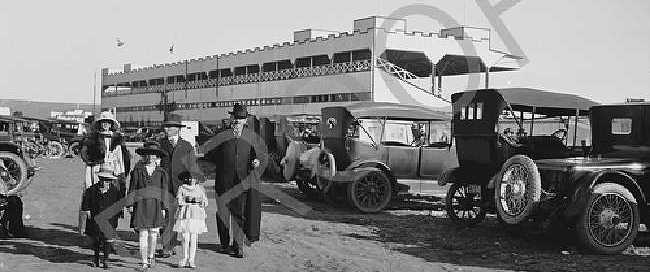
TRACK #2 --Agua
Caliente
Racetrack: 1929 built (at a location different than the Tijuana
Racetrack) - 1950s renovation). Built by the Agua Caliente Casino-Resort people. ENTRANCE SIDE,
picture below:
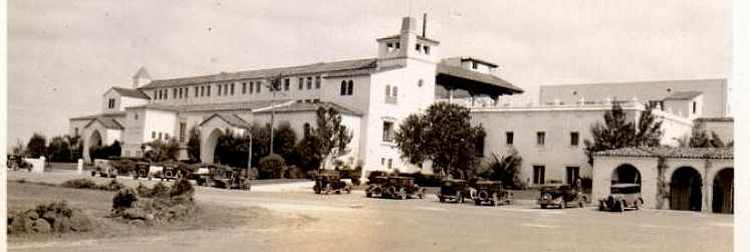
TRACK #3 -- Agua Caliente
Racetrack: 1950s renovation - 1971 fire destruction --
ENTRANCE SIDE, picture below:
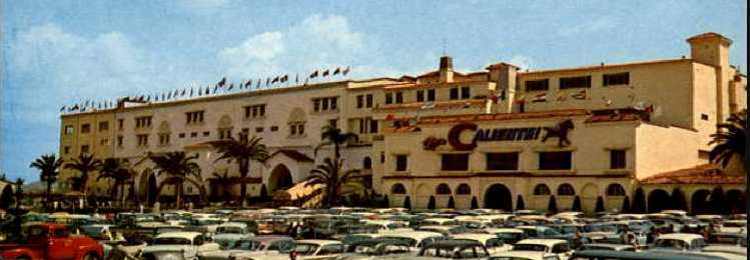
TRACK #4 -- Agua Caliente Racetrack: 1974 rebuilt after the fire - 2007
demolished. -- ENTRANCE SIDE, picture below:
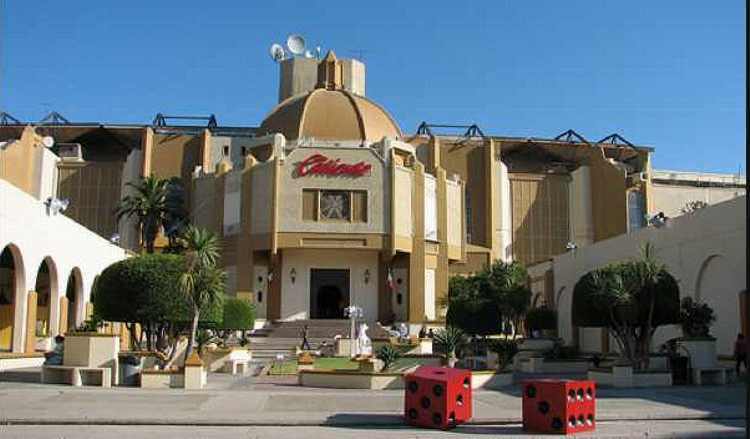
TRACK #5 -- "Hipodromo
[Racetrack] de Agua Caliente:" 2007 built - present. -- ENTRANCE
SIDE, below:

301c. Above are five different entrance facades
to the grandstands of the Tijuana and Agua Caliente racetracks
over the years.
|
GRANDSTAND SIDE OF RACETRACKS AT TIJUANA-AGUA CALIENTE OVER THE YEARS:
TRACK #1 --Tijuana Racetrack: 1916 built - 1929 abandoned, picture
below:
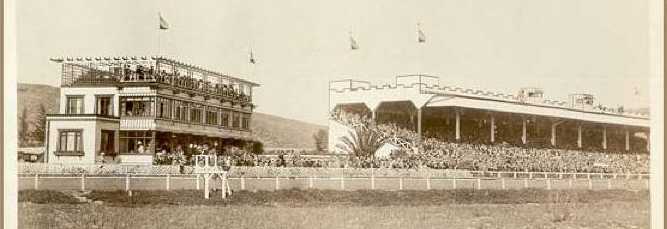
TRACK #2 -- Agua Caliente
Racetrack: 1929 built at a new location - 1950s renovation. (see picture #309 below).
Original 1929 grandstands, and Jockey Club (to
the left, with awnings), picture below:
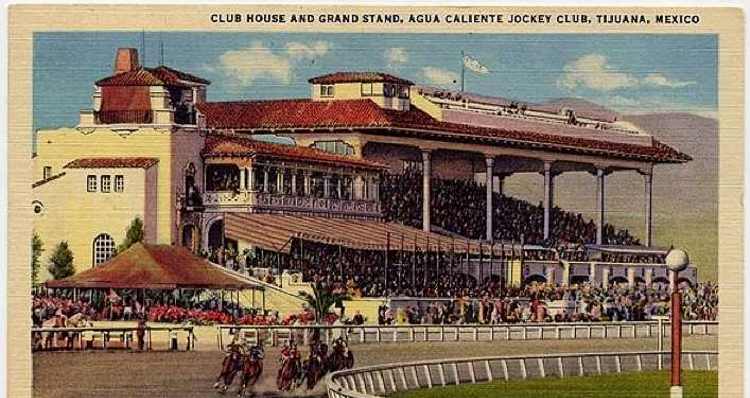
TRACK #3 -- Agua Caliente Racetrack: 1950s renovation - 1971
fire
destruction. Many renovations/expansions were made
to the track between 1929 (opening date of Agua Caliente Track) and the
1971 totally destructive fire. The middle picture here is from a
postcard seemingly postmarked in 1962, and no zip code in the address,
indicating that period. The lowest of the three pictures is from a
postcard postmarked 1967. The three pictures of Track #3 below:
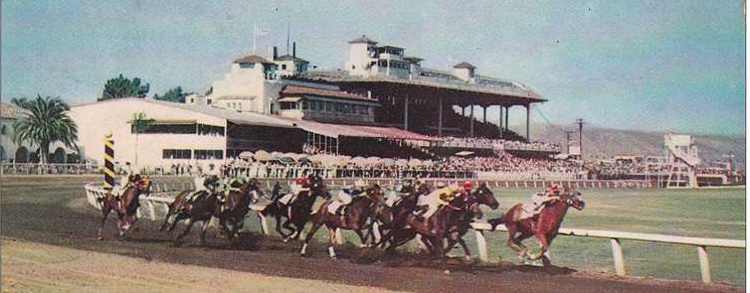
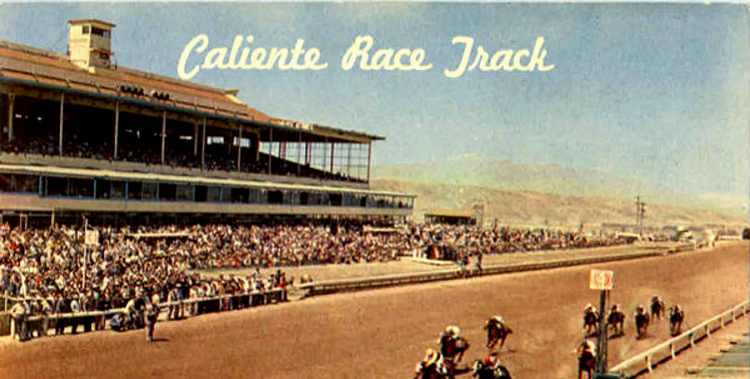
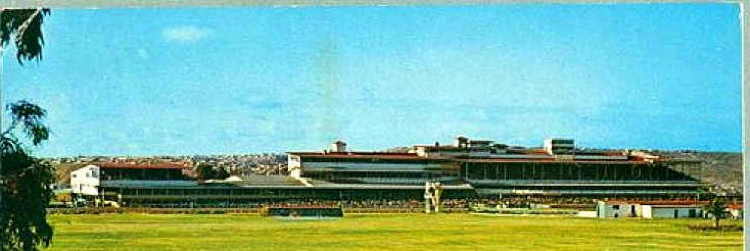
TRACK #4 -- Agua
Caliente Racetrack: 1974 rebuilt after the 1971 fire - 2007 demolished. (see picture
#324 below). The new grandstands after the
1971 fire, picture below :
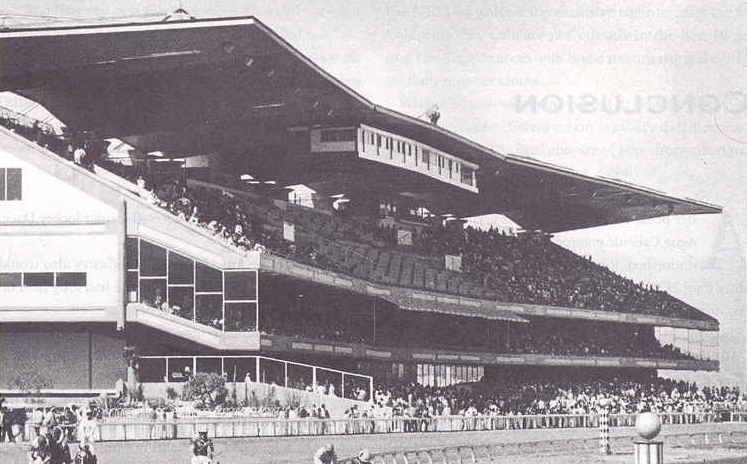
TRACK #5 -- "Hipodromo [Racetrack] de Agua Caliente:" 2007 built
- present. -- (see picture #329 below). The current
incarnation (c. 2008), and hardly a grandstands -- mainly
a small viewing area. That is a solid red roof. Dog
racing only. Pictured below:
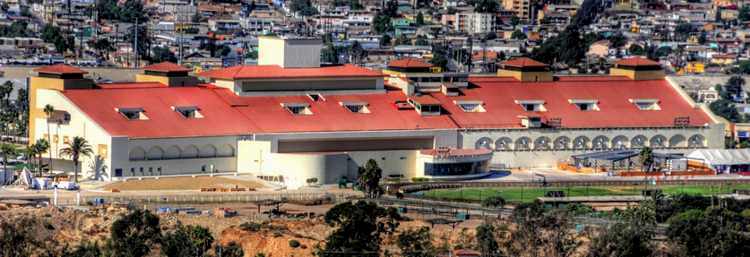
301d. Above
are five different grandstand facades of the Tijuana and
Agua Caliente racetracks over the years..
|
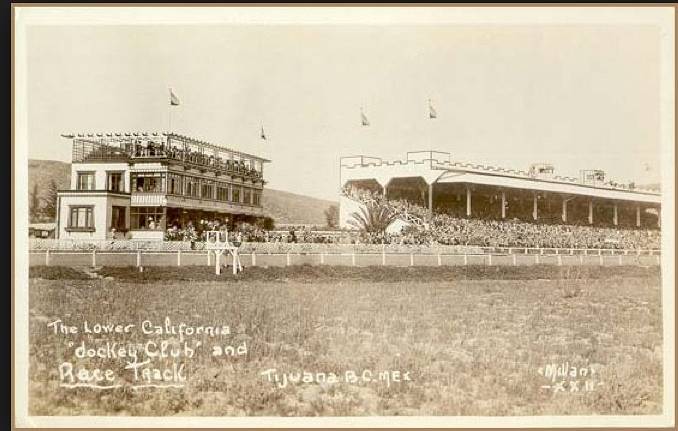
302. TRACK #1 (Tijuana
Racetrack, 1916 built - 1929 abandoned). This
is the "Tijuana Race Track," which was used from 1916
to 1929. It closed when the Agua Caliente Racetrack was
built in 1929. (Actually the Tijuana Race Track
"was inaugurated in 1916, and almost immediately destroyed
by the great flood of 1916. .... This track was subsequently
rebuilt close-by, and races were run there until the Agua Caliente
Race Track (or racetrack) was opened in 1929.")The Agua Caliente
Track is pictured below at #303a. Both tracks are similar
in that the grandstands are on the right and the fancy jockey
club is nearby to the left. However, if you look closely,
you will see obvious differences: the Tijuana track has
a low-roof grandstand with many columns, and the clubhouse
is a fair distance away. On the other hand, the Agua Caliente
track has a grandstand with a high roof and few columns, and the
Jockey Club is quite close to the grandstands. You may
read about the two tracks at this web page.
Another information-packed web page of the two tracks here.
|
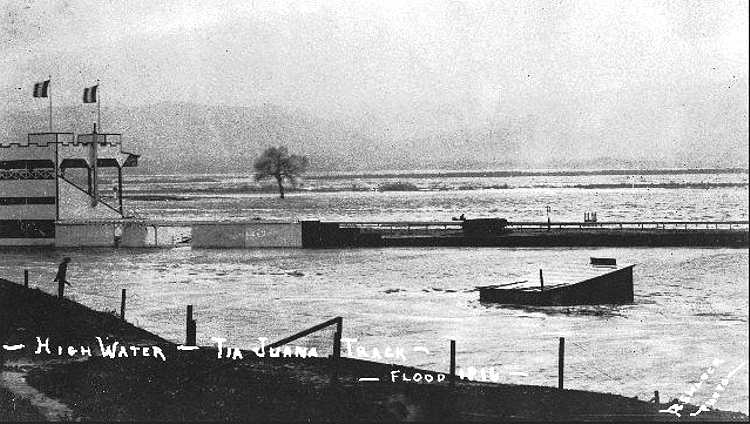
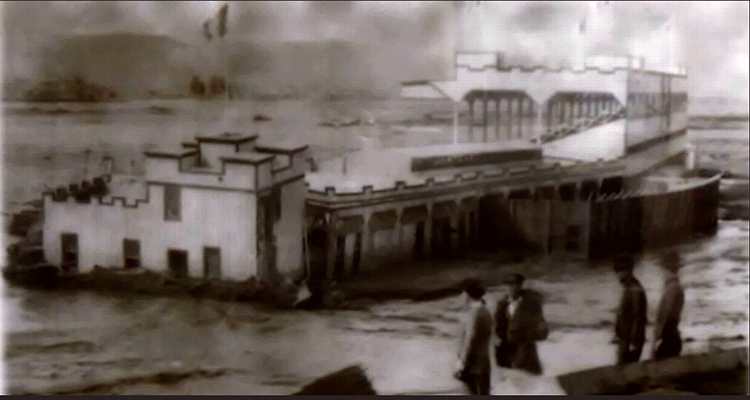
302a. TRACK #1 (Tijuana Racetrack, 1916 built - 1929 abandoned).
As noted above, the Tijuna Racetrack was destroyed
by a great flood shortly after it open in 1916, and was subsequently
rebuilt. Pictures of the flooded grandstands, above. (Source.
Other pictures there too.) |
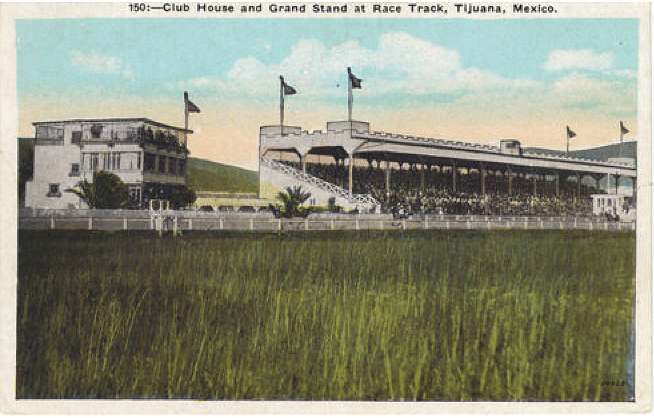
302b. TRACK #1 (Tijuana
Racetrack, 1916 built - 1929 abandoned) -- the first
Tijuana horse track.
|
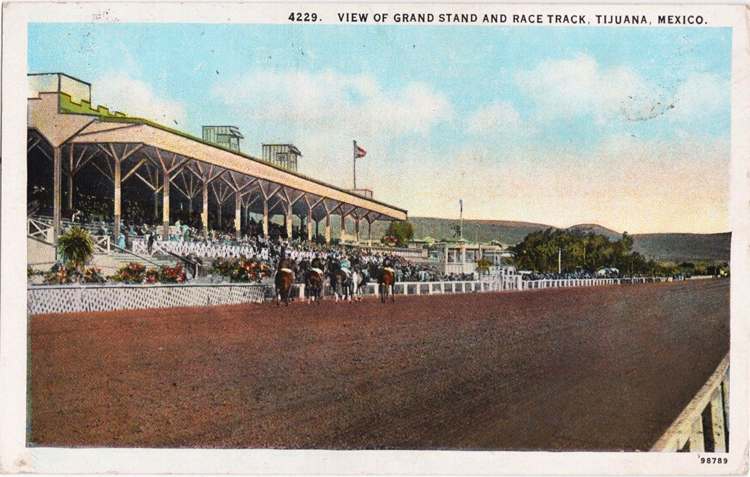
302c. TRACK #1 (Tijuana Racetrack,
1916 built - 1929 abandoned). The first Tijuana horse
track.
|
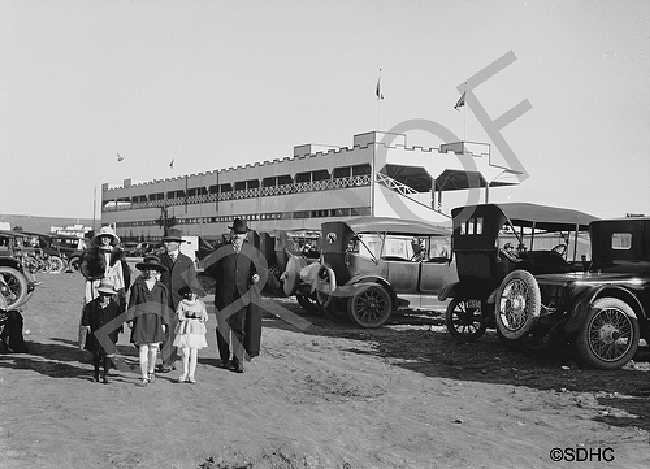
302d. TRACK #1 (Tijuana Racetrack,
1916 built - 1929 abandoned). Entrance to Grandstands, the
first Tijuana horse track. (Source.)
|
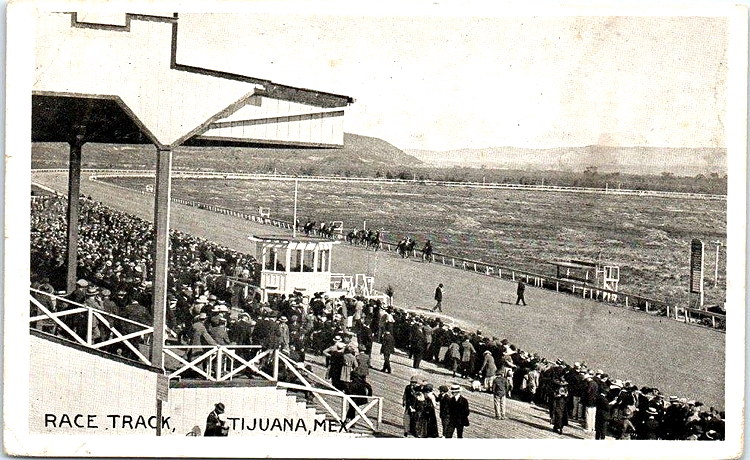
302e. TRACK #1 (Tijuana Racetrack,
1916 built - 1929 abandoned). Real Photo Postcard.
|
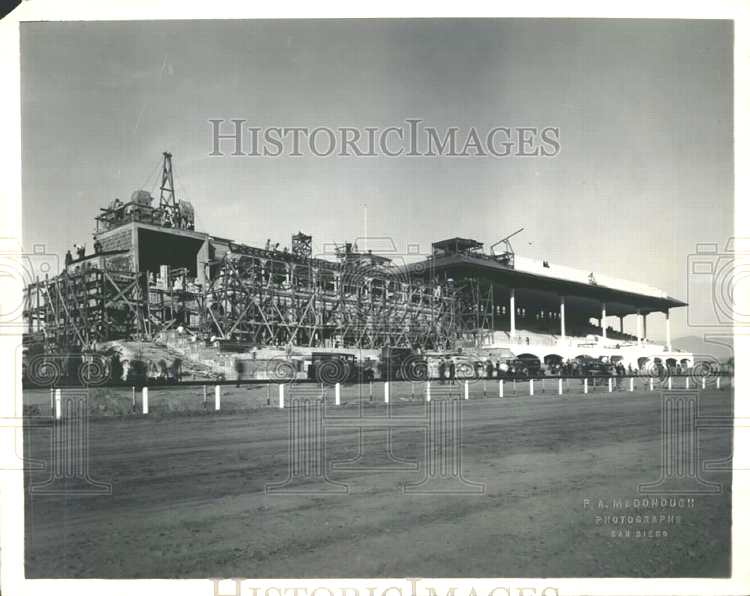
303. TRACK #2 (Agua Caliente Racetrack,
1929 built - 1950s renovation). -- December 1929 press photo of the
"new Agua Caliente Racetrack, to be completed by Opening Day of the
Inaugural meeting December 28, 1929." In the photo, the grandstands,
on the right, are practically completed; the Jockey Clubhouse, on the
left, is under construction; and the press box is atop the grandstands.
|
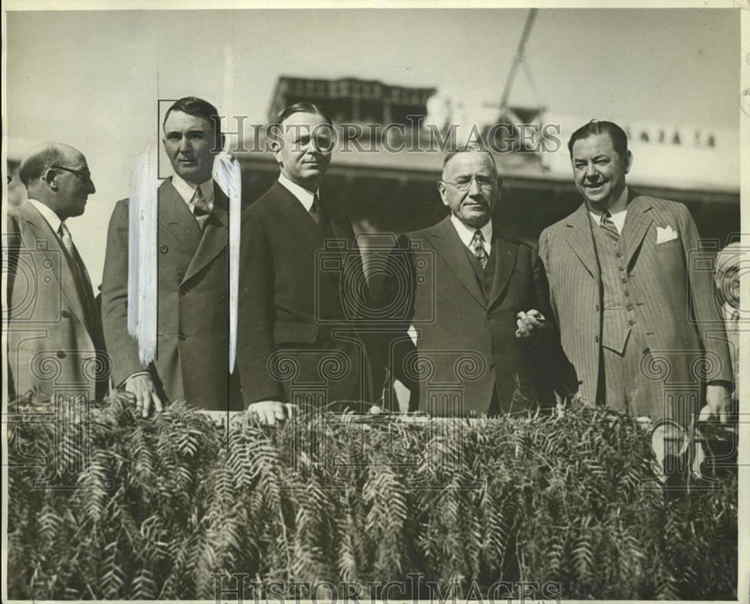
303a. TRACK
#2 (Agua Caliente Racetrack,
1929 built - 1950s renovation). Owners and officials at the
dedication ceremonies for the new $2 million Agua Caliente
Racetrack, which opened December 28, 1929. Left
to right are: George W. Schilling, Associate Steward and Placing Judge;
James N. Crofton, General Manager; John P. Mills, San Diego real estate
operator; Wirt G. Bowman, President of the Agua Caliente Jockey Club;
and Baron Long, a hotelier. Crofton, Bowman and Long were
the �three Border Barons,� who owned the resort. Back of the press photo here . (I own this photo. The white surrounding Crofton is a white-out paste added to the picture to isolate Crofton for a separate picture of him.)
|
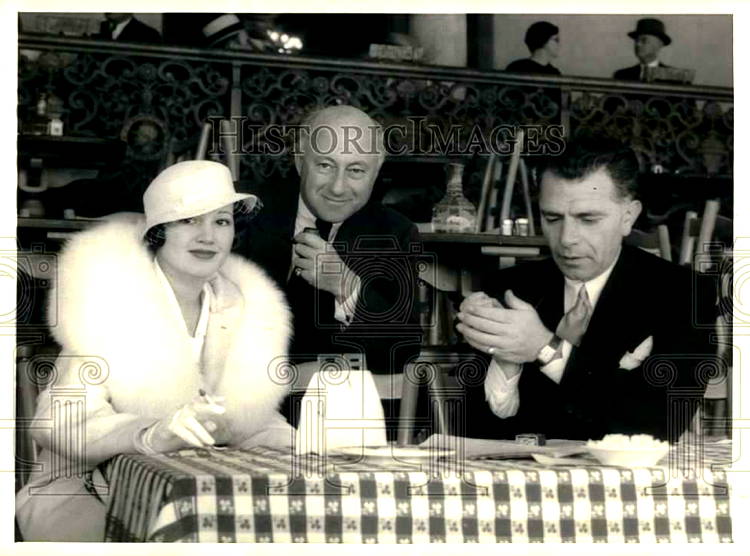
303ab. Cecil B. DeMille (center; famous movie director) with Mr. and Mrs. Wesley Ruggles (he, also a noted director) pictured at the Agua Caliente Race Track where they witnessed Gallent Sir win the annual Agua Caliente Handicap (1933). |
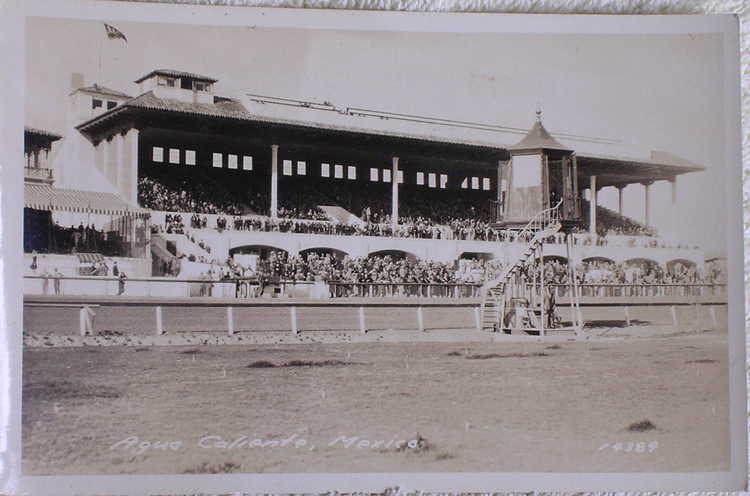
303b. TRACK #2 (Agua Caliente Racetrack,
1929 built - 1950s renovation). Nice close-up Real Photo Post Card of the grandstands.
|
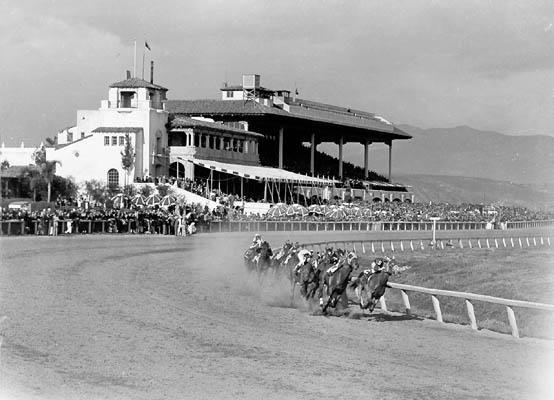
303c. TRACK #2 (Agua Caliente Racetrack, 1929 built
- 1950s renovation).-- Agua Caliente Racetrack,
1929 built. Here is a fine, unobstructed shot of the Jockey
Club.
|
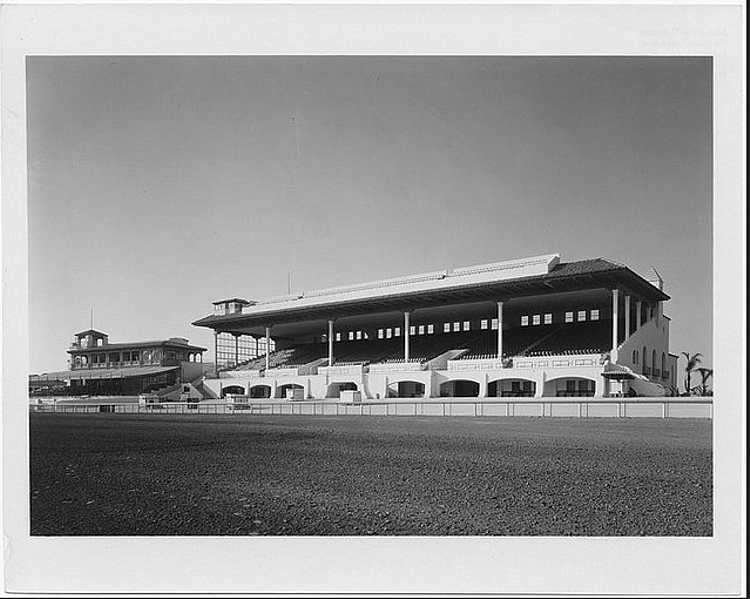
303d. Uncluttered view: TRACK
#2 (Agua Caliente Racetrack, 1929 built - 1950s renovation).--
source).
|
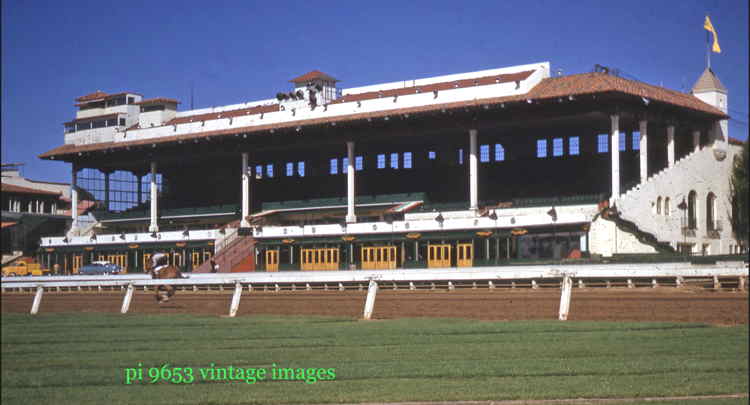
303e. Uncluttered view: TRACK
#2 (Agua Caliente Racetrack, 1929 built - 1950s renovation). |
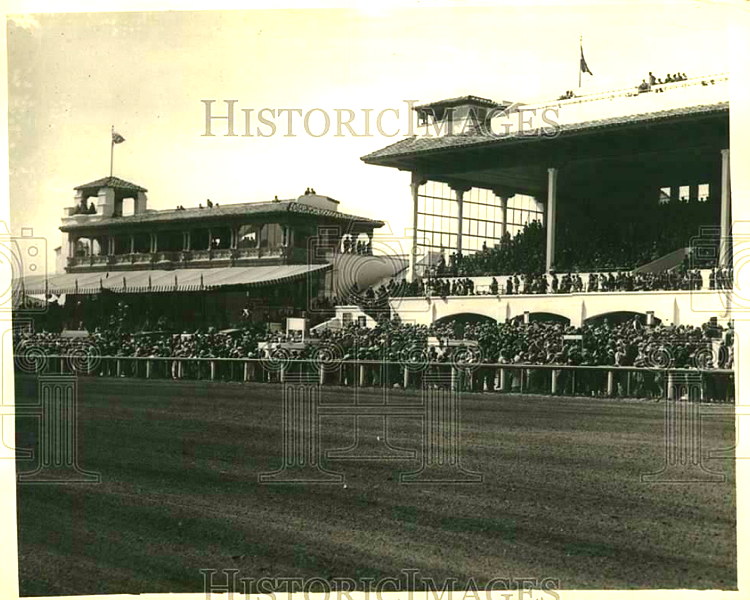
303f. TRACK
#2 (Agua Caliente Racetrack, 1929 built - 1950s renovation. March
23, 1930, press photo. Unusually large crowd due to the annual running
of the Agua Caliente Handicap, world's richest track purse.
Victorian won it that day.
|
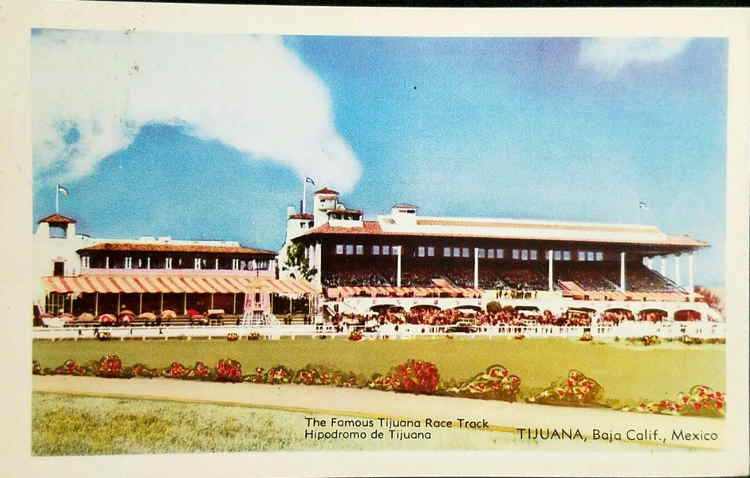
303g. TRACK
#2 (Agua Caliente Racetrack, 1929 built - 1950s renovation). |
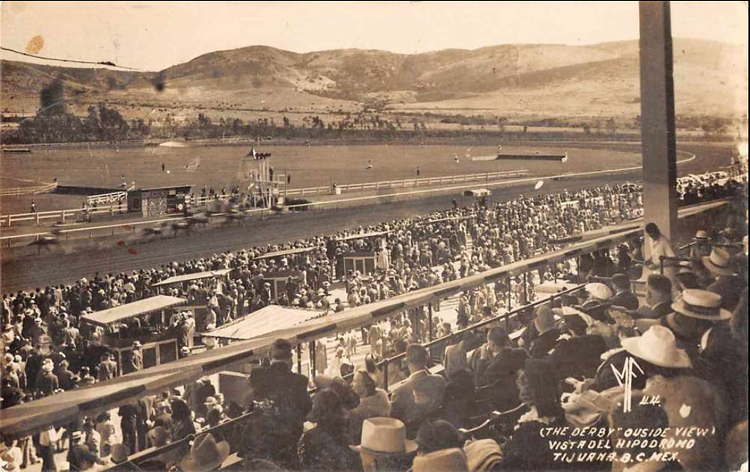
303h. TRACK
#2 (Agua Caliente Racetrack, 1929 built - 1950s renovation). View from the inside. Real Photo Postcard.
|
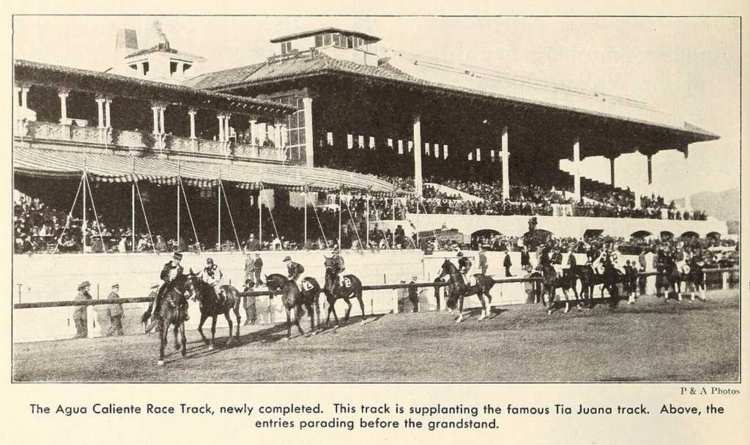
304. TRACK #2 (Agua Caliente Racetrack, 1929 built
- 1950s renovation).
|
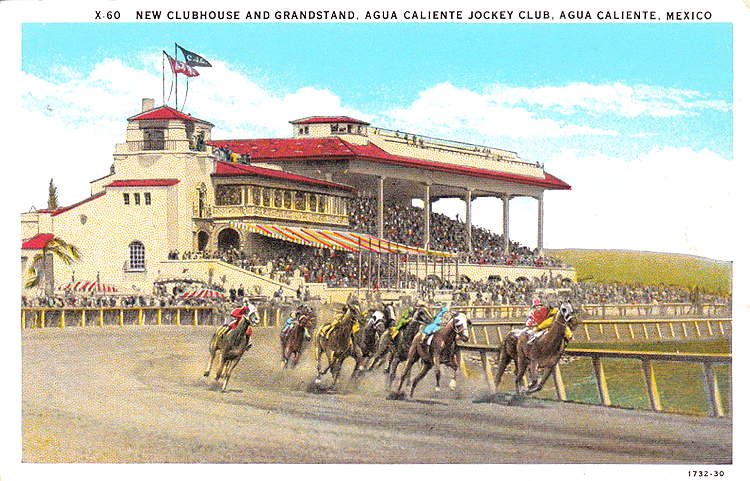
304a. TRACK #2 (Agua Caliente Racetrack, 1929 built
- 1950s renovation).
|
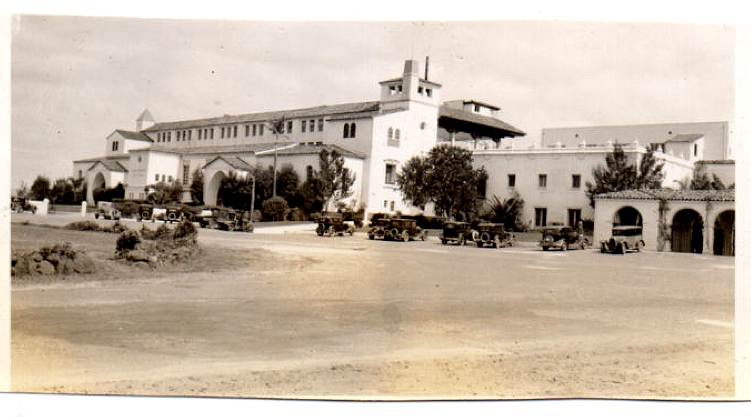
305. TRACK
#2 (Agua Caliente Racetrack, 1929 built - 1950s renovation). The
original 1929-built horse track. Early
photo of entrance side to Agua Caliente Race Track Grandstands
and Jockey Club, c. 1929.
(Club House and
Grandstand bleachers, and racetrack were on opposite
side.)
|
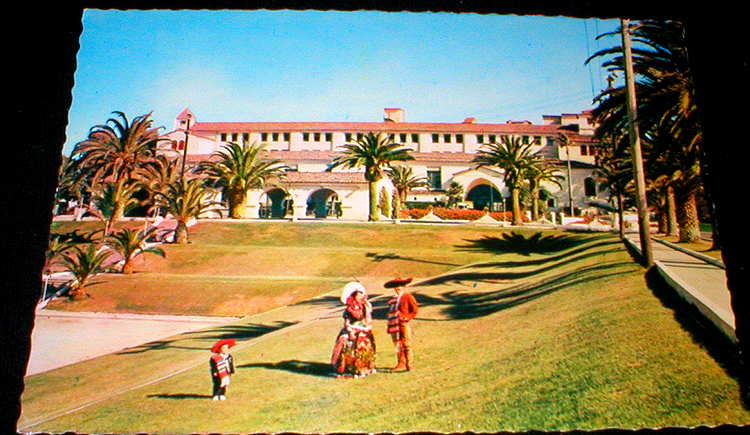
305a. TRACK
#2 (Agua Caliente Racetrack, 1929 built - 1950s renovation).
|
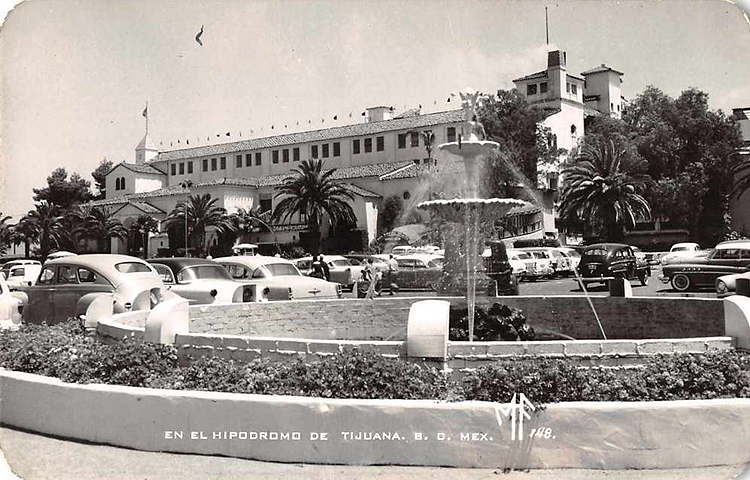
305b. TRACK
#2 (Agua Caliente Racetrack, 1929 built - 1950s renovation). Another Real Photo Postcard of the track entrance.
|

305c. TRACK #2 (Agua Caliente Racetrack, 1929
built - 1950s renovation). Wide postcard of the early track.
Click
here to see a very large picture of this magnificent postcard. The
line across the center was deliberatly put there -- it was intended that
the card be folded in half to be used as a postcard (the necessary post card
form is printed on the back, with space to write a message). On the
back it says "Published by Agua Caliente Co., Wirt G. Bowman, Pres," and
"Post Cards of Quality -- The Albertype Co., Brooklyn NY."
|
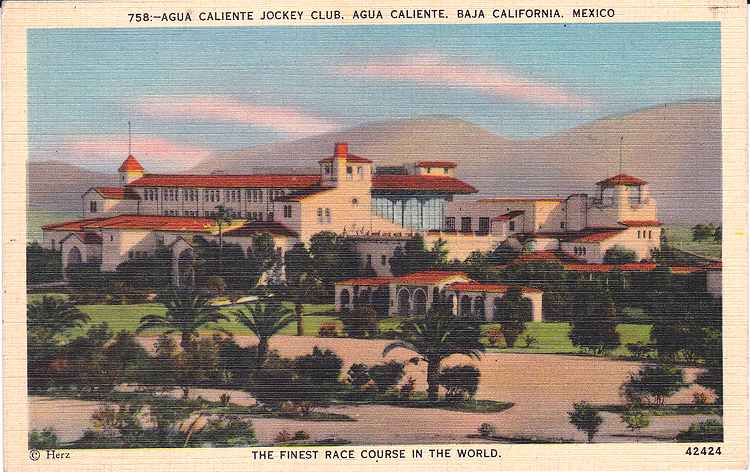
305d. TRACK #2
(Agua Caliente Racetrack, 1929 built - 1950s renovation).--
Entrance side. I have seen the same postcard with
a 1934 cancellation. Notice that on the bottom it proclaims,
"The Finest Race Course In the World," certainly the one which offered
the richest purses in the world at one time.
|
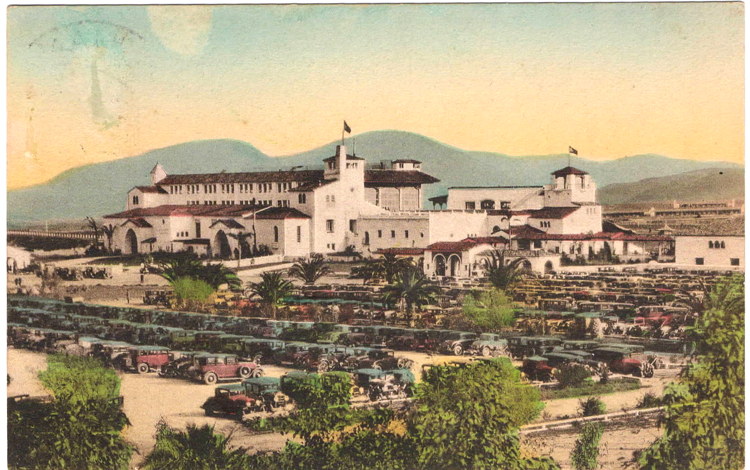 s s
305e. TRACK #2
(Agua Caliente Racetrack, 1929 built - 1950s renovation).--
Entrance side.
|
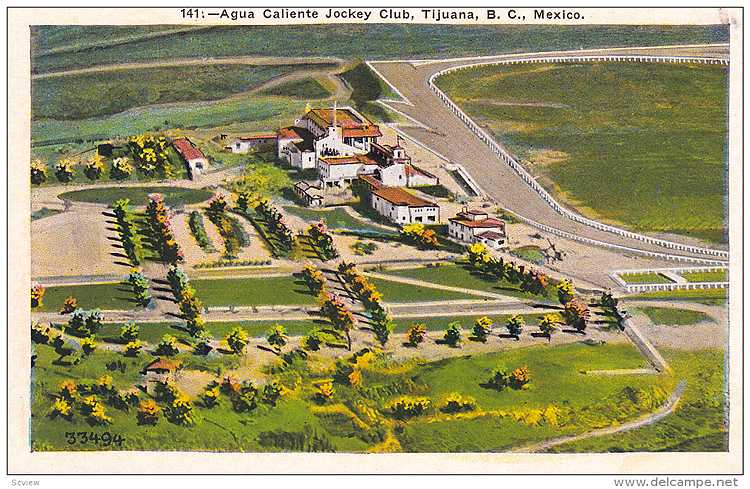
306. TRACK #2 (Agua Caliente Racetrack, 1929 built -
1950s renovation). The original 1929-built
horse track.
|
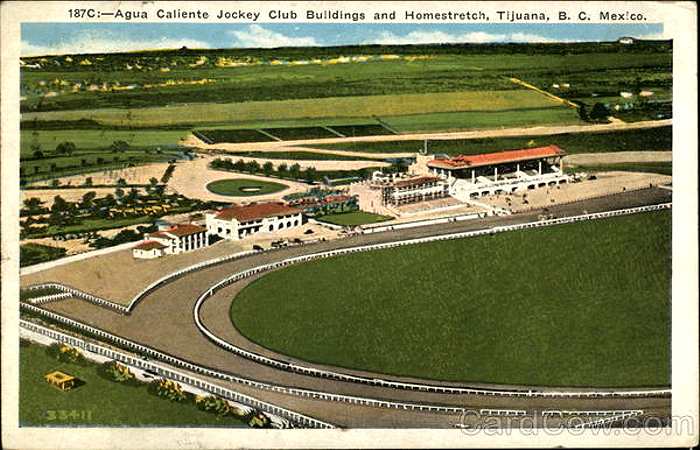
306a. TRACK #2 (Agua Caliente Racetrack,
1929 built - 1950s renovation). Original 1929-built track.
Similar view as the above postcard.
|
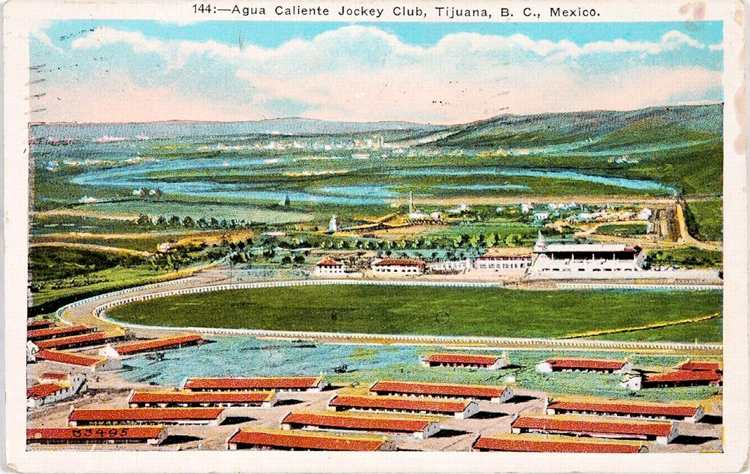
307. TRACK #2 (Agua Caliente Racetrack, 1929 built -
1950s renovation). The original 1929-built horse track.
Postmarked January 1931. In the distance: center-left
you see the white Bell Tower, and center-right
is the tall Minaret at the Spa.
|
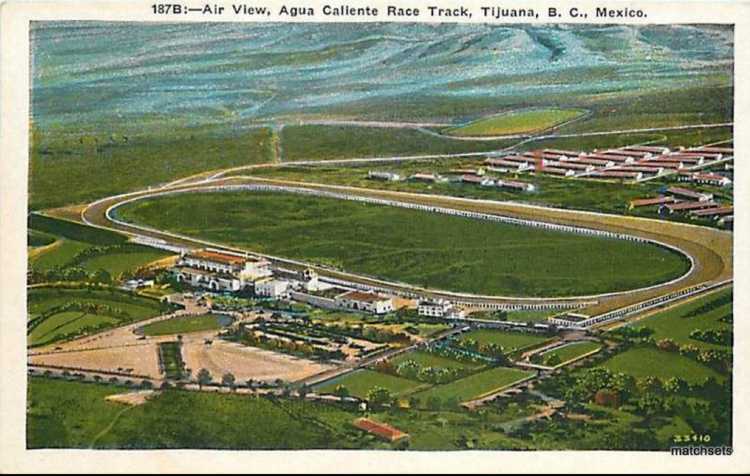
307a. TRACK
#2 (Agua Caliente Racetrack, 1929 built - 1950s renovation).
Original 1929-built track in beautiful verdant
location, so different from today. Compare to the present
incarnation of the Caliente track at the same location:
here
and here.
|

307b. Agua Caliente track and Tijuana
environs then (1929) and now (2012). (Source and enlargement,
2nd picture.)
|
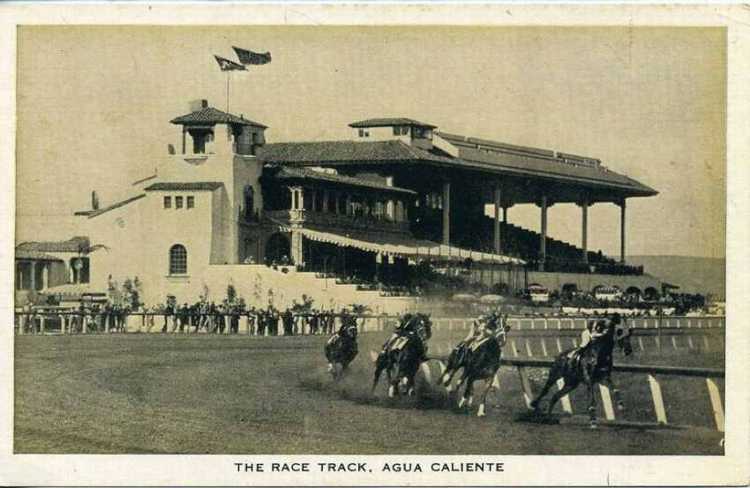
308. TRACK #2 (Agua Caliente Racetrack, 1929 built
- 1950s renovation). Real Photo post card: Agua
Caliente Jockey Club: Club House
in foreground, Grandstand next to it. The
original 1929-built horse track.
|
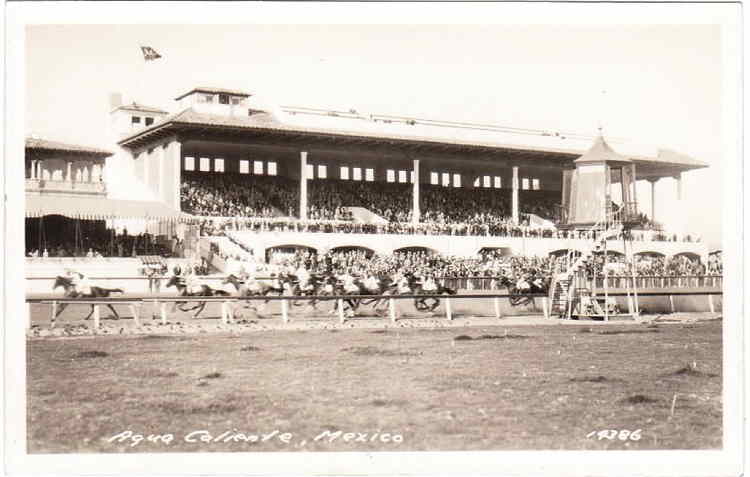
308a. TRACK #2 (Agua Caliente Racetrack, 1929 built
- 1950s renovation). Real Photo Post Card, Sepia Toned. Rare postcard. |
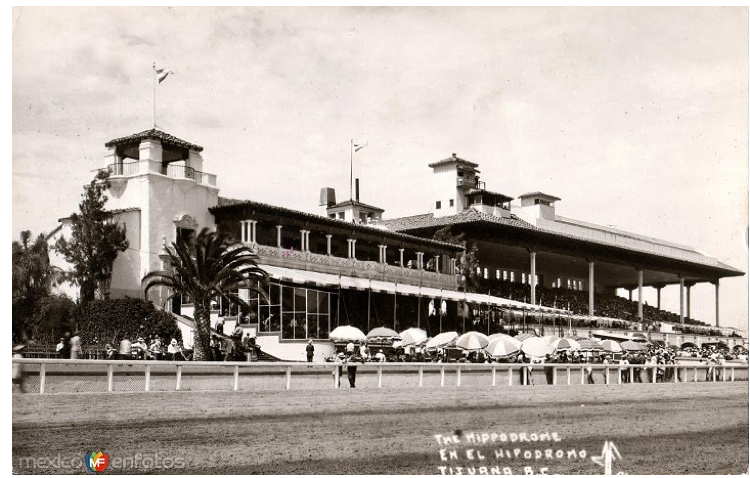
308b. TRACK #2 (Agua Caliente Racetrack, 1929 built
- 1950s renovation). Real Photo Post Card.
|
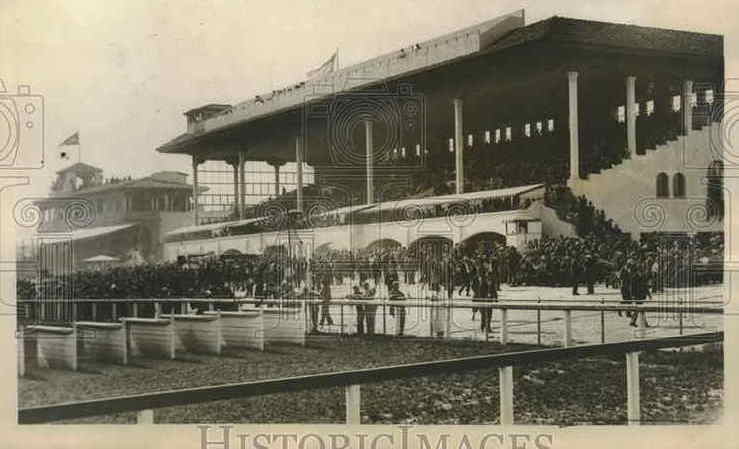
308c. TRACK #2 (Agua Caliente Racetrack,
1929 built - 1950s renovation). Original 1929 track. March
1931 press photo of Jockey Club and Grandstands during the running of
the second Agua Caliente Handicap. Robert M. Eastman's Mike Hall
won.
|
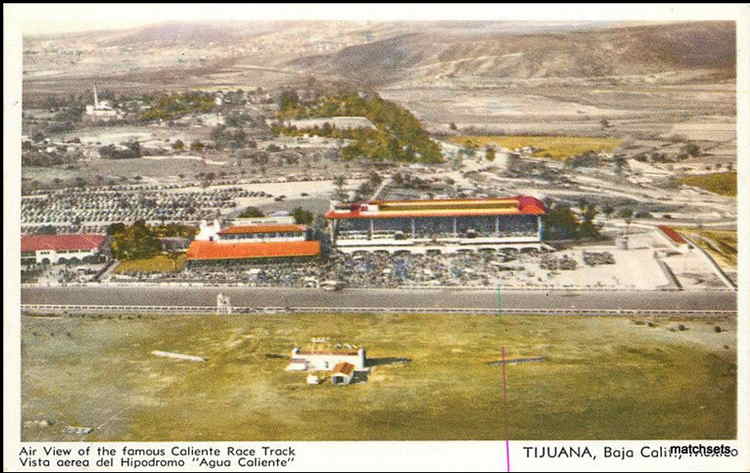
308d. TRACK #2 (Agua Caliente Racetrack,
1929 built - 1950s renovation). Aerial view.
|
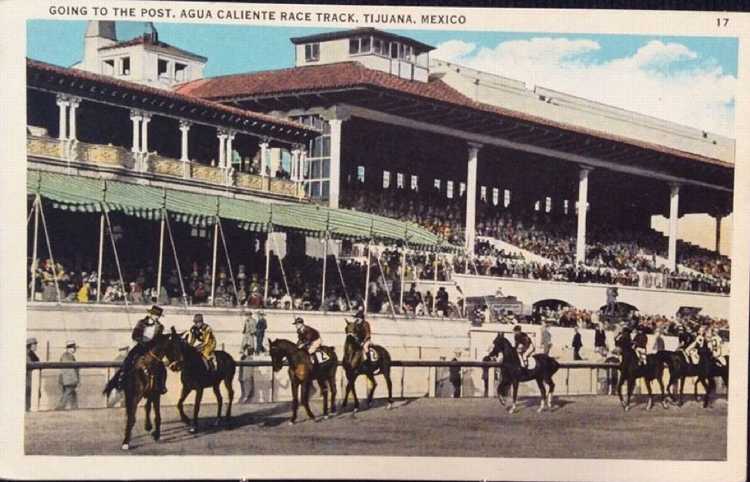
309. TRACK #2 (Agua Caliente Racetrack,
1929 built - 1950s renovation). Original 1929 track.
Good view, good postcard. Must be rare -- I never saw it before
(Sept 2014).
|
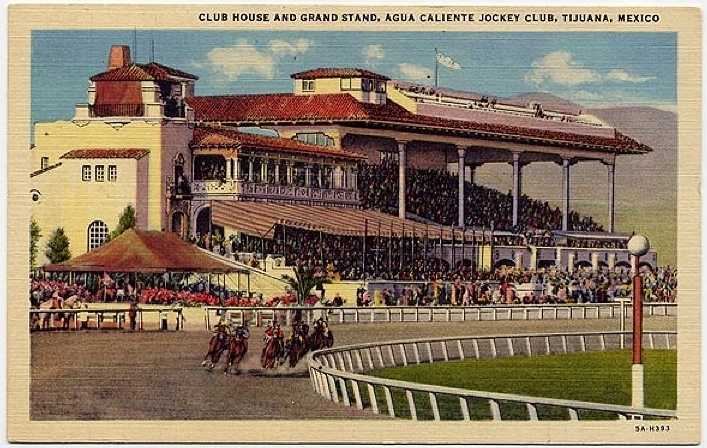
309a. TRACK #2 (Agua Caliente Racetrack, 1929
built - 1950s renovation). The original 1929-built horse
track. Beautiful post card of Agua Caliente
Jockey Club: Club House
to left, Grandstand to right.
|
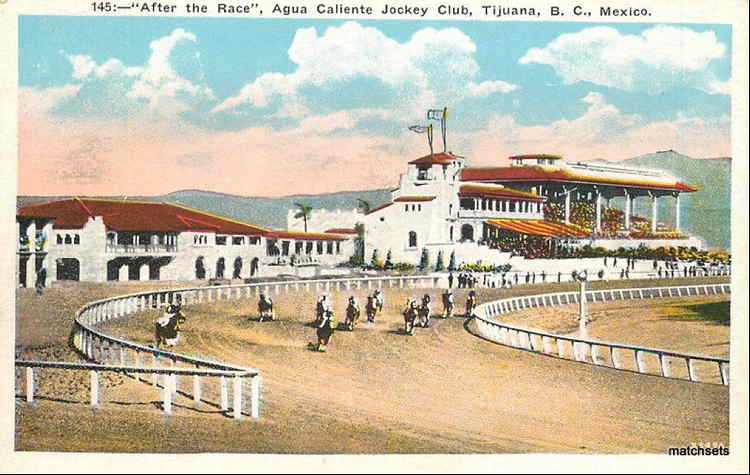
309b. TRACK
#2 (Agua Caliente Racetrack, 1929 built - 1950s renovation).
|
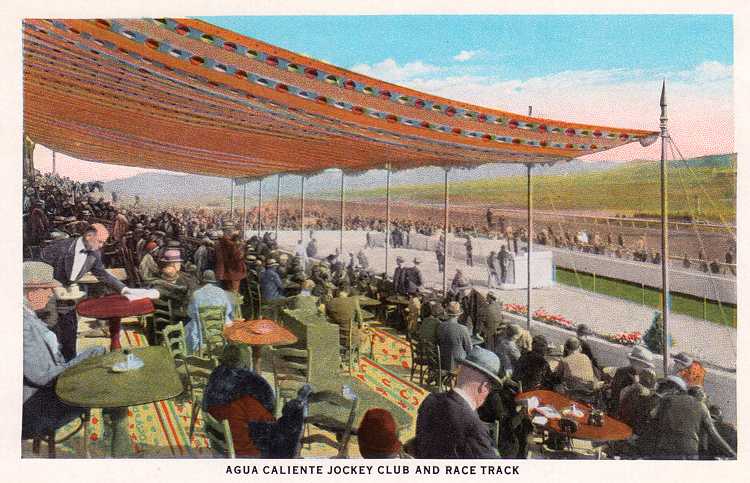
309c. TRACK
#2 (Agua Caliente Racetrack, 1929 built - 1950s renovation). Original
1929 track. View of the track from inside the Jockey
Club.
|
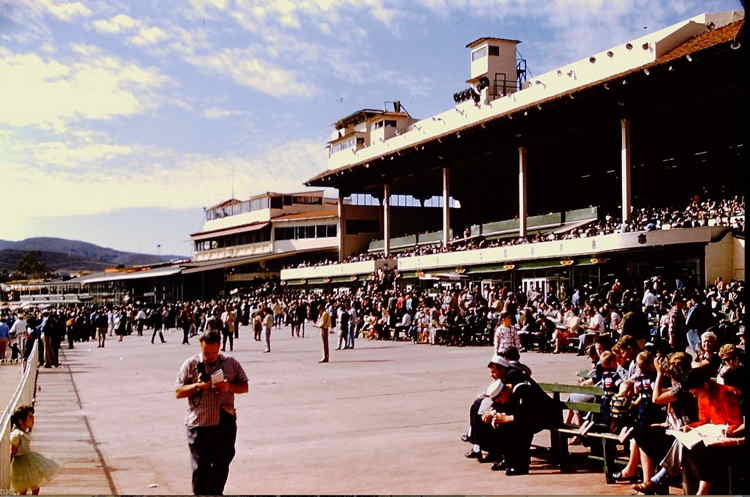
309d. TRACK #2 (Agua Caliente Racetrack, 1929 built
- 1950s renovation). The original 1929-built horse
track.
|
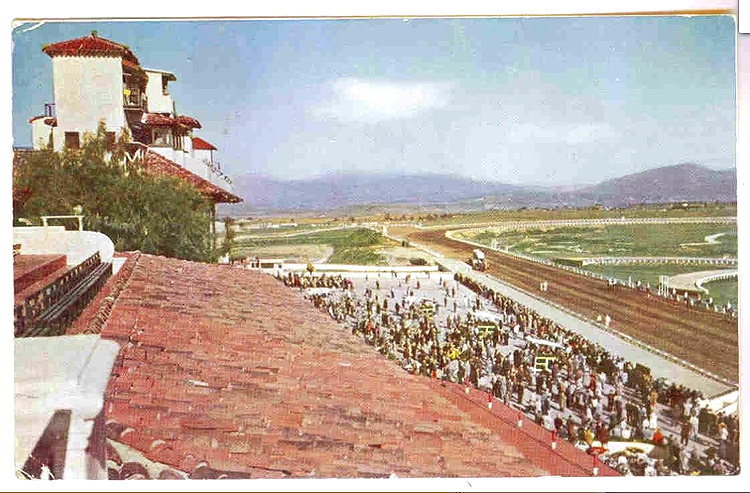
309e. TRACK #2 (Agua Caliente Racetrack, 1929 built
- 1950s renovation). Rare view, from top of Club House, and rare postcard. Dated 1950 on reverse side.
|
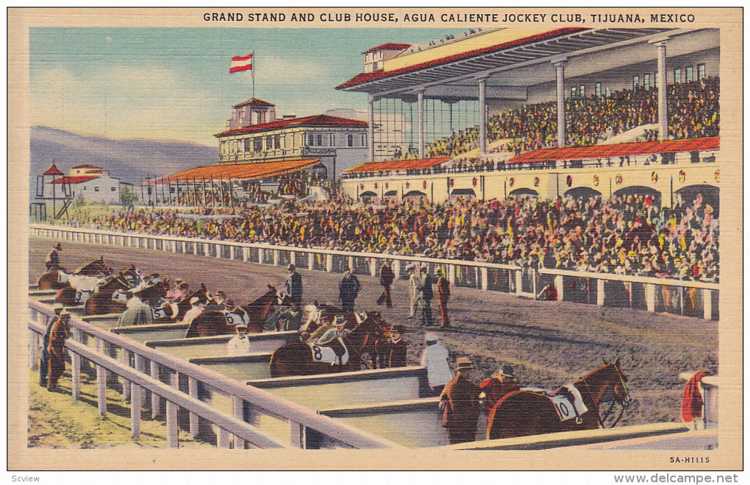
310. TRACK #2 (Agua Caliente Racetrack, 1929 built
- 1950s renovation). The original 1929-built horse
track.
|
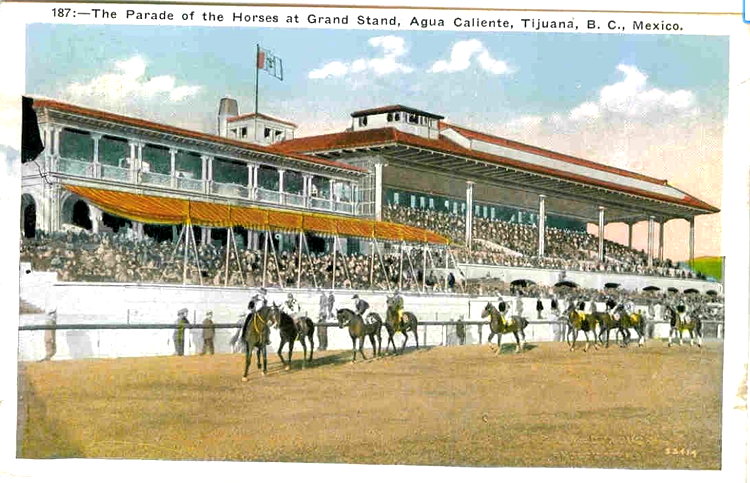
310a. TRACK #2 (Agua Caliente Racetrack, 1929 built
- 1950s renovation). The original 1929-built horse
track.
|
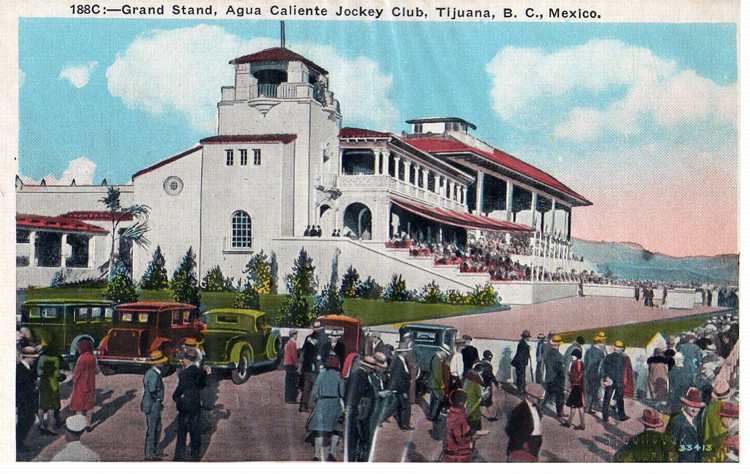
311. TRACK #2 (Agua Caliente Racetrack, 1929 built -
1950s renovation). Rare view of the side of
the Jockey Club building. The original
1929-built horse track. Alongside it in the
background (with the long red roof) is the Grandstands
building.
|

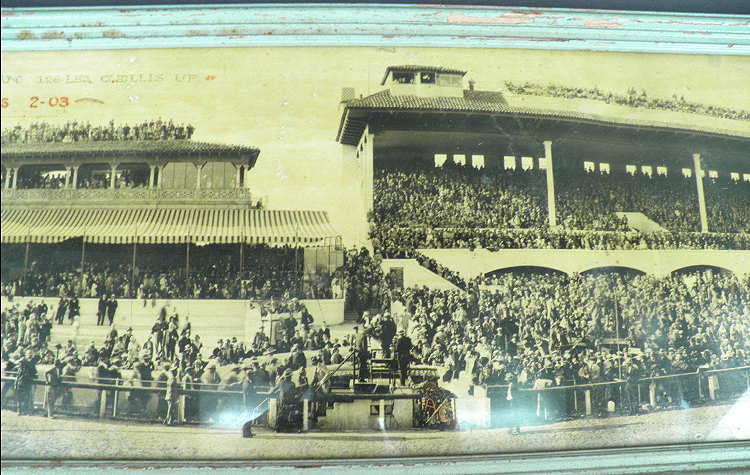
311a. TRACK #2 (Agua Caliente Racetrack, 1929 built -
1950s renovation). This is a framed 10 x 20 inch photo,
by O. A. Tunnell, of the grandstands at the $140,000 March 23, 1930,
running of the Agua Caliente Handicap, won by Victorian. At the
time it was the richest race in North America. The race was won by
many champions, including Round Table, Gallant Sir, who won it twice
and in record time, Phar Lap and Seabiscuit. More about the
race here by Wikipedia.
|
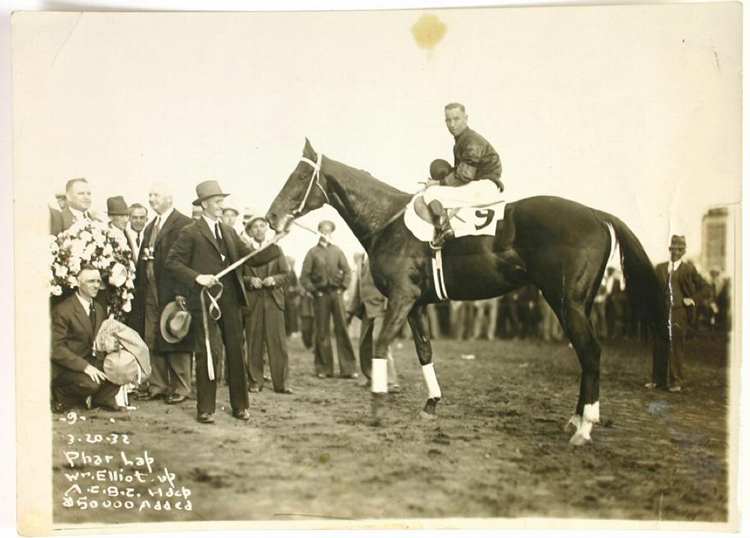
312. Phar Lap, the great New
Zealand-Australian race horse, shown here
with his trainer, jockey and farrier right after
his victory in his final race, the Agua Caliente Handicap
(March 20, 1932). He mysteriously
died of poison (intentionally or accidentally) April
5, 1932. He was originally obtained for a mere
160 guineas, and he looked and performed unimpressively
at first, finishing last in his first race and out of
the money in the next three races. He quickly improved
and won 32 of his last 35 races. Of the three losses,
two were very close, and in the third one he carried
an unusually heavy weight. In his final race, at
Agua Caliente, he circled the entire field from dead last
with ��s of a mile to go and held off American Derby
winner, Reveille Boy, to win the race in track-record time!
When he died, he was the third highest stakes-winner in
the world. Click here and here to see a
newsreel video of his thrilling Agua Caliente Handicap
victory. See the race programe of the famous race here.
|
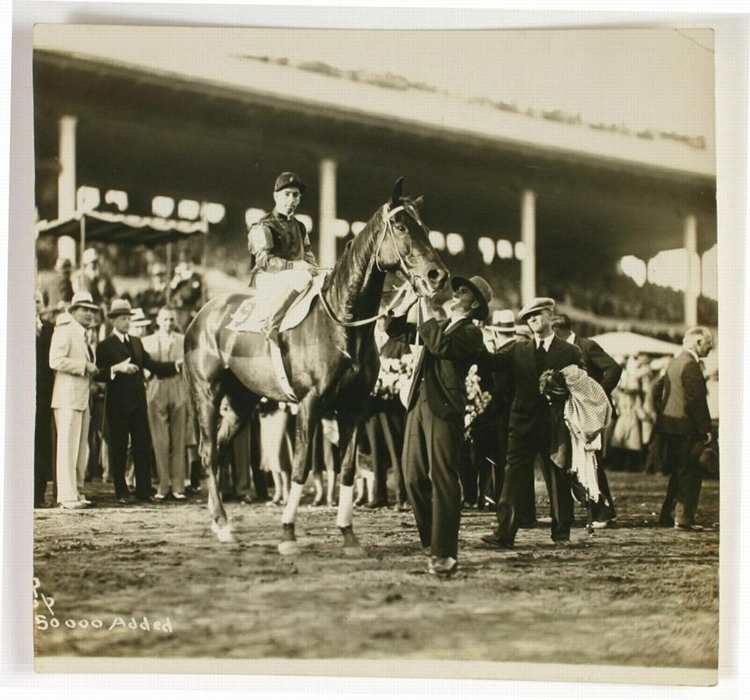
312a. Beautiful photo depicts " Phar Lap, after
winning the Agua Caliente Handicap. His trainer Tommy Woodcock
holds his reins, while race jockey Bill Elliott sits on his back. A crowd
of people are in the background, including farrier [a specialist in equine
hoof care] James Smith, who is holding what is possibly Phar Lap's blanket,
as well as the race course's main grandstand. See the story about
Phar Lap in the row above. Original
picture in MuseumVictoria.
|
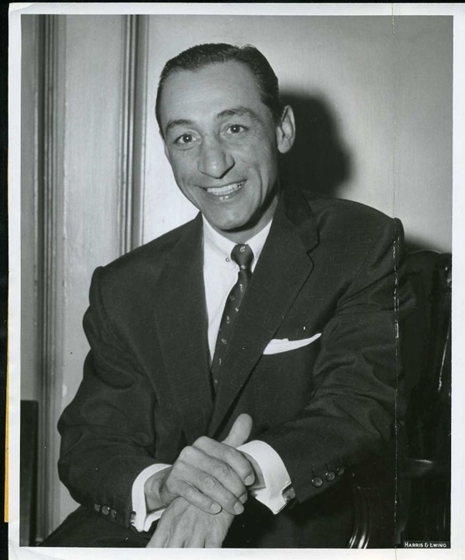
312b. Eddie Arcaro (1916-1997) won his first race in 1932 at the Agua Caliente racetrack;
he was 16 years old. He won more American classic races than any other
jockey in history and is the only rider to have won the U.S. Triple
Crown twice.
|
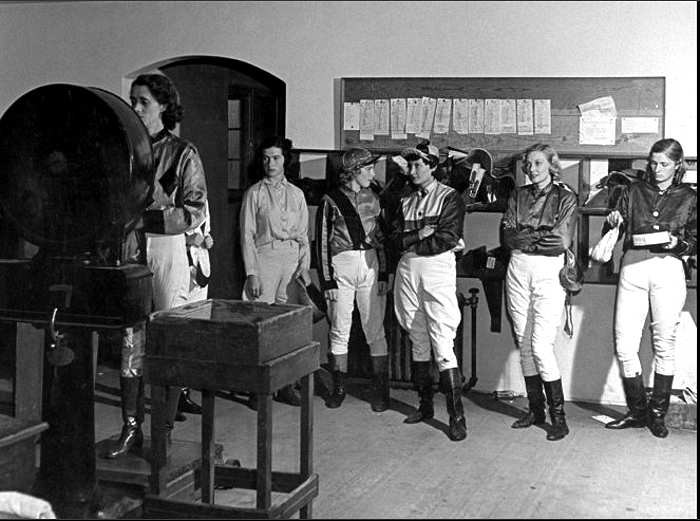
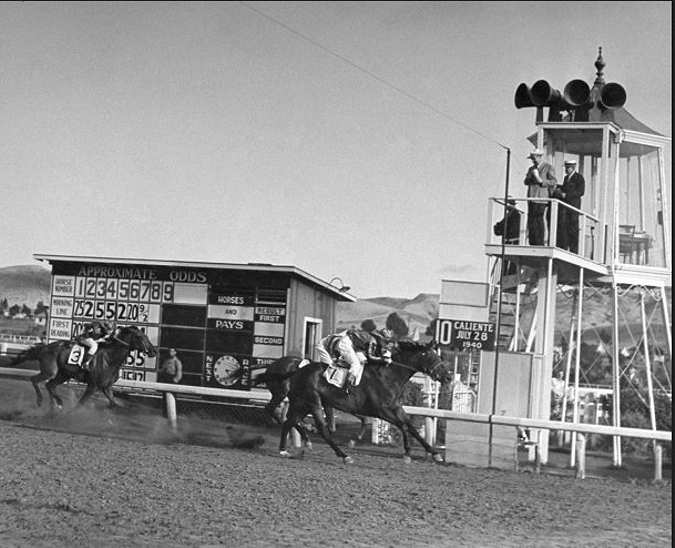
312c. All-girl-jockey race -- The Powder Puff Derby at Agua Caliente.
The track held two all-female-jockey races per year. One interesting
fact: "Because the girls generally refuse to diet and because they average
about 10 lbs. more than men jockeys, their races are usually scheduled at
the high weight of 130 lbs." "Most of the girls are rodeo performers,
enter for the fun of it." Weighing-in in top picture. (Source:
Life magazine August 18, 1940 issue.) |
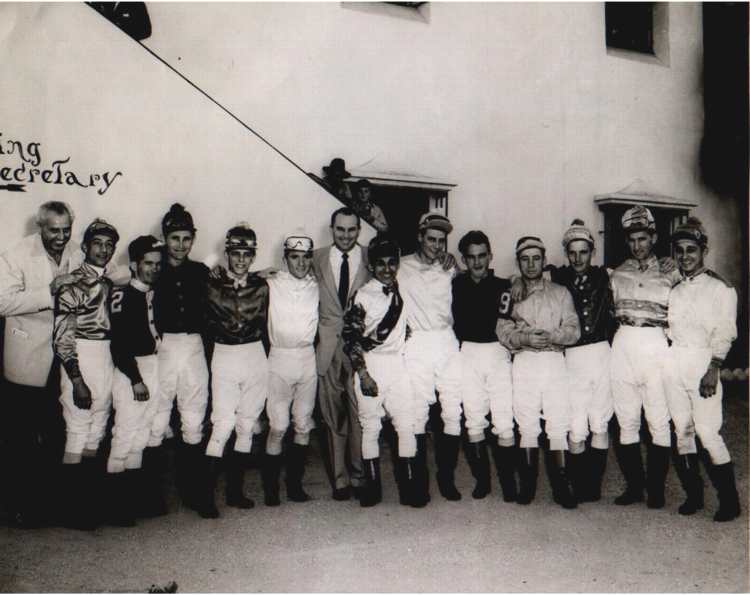
312d. Jockeys assembled at Caliente for
the Woolf Memorial: (left to right) Eddie Arcaro, Wiiliam Shoemaker,
Merlin Volzke, Walter Blum, William Harmatz, Jockey's Guild President
Bert Thompson, Pete Moreno, Jimmy Nichols, Gordon Glisson, Johnny
Longden, Ray York, Mel Peterson and Rojelio Trejos (source
and source).
"George Monroe Woolf (May 31, 1910 � January 4, 1946),
nicknamed "The Iceman", was a Canadian-born thoroughbred race horse
jockey. An annual jockey's award given by the United States Jockeys'
Guild is named in his honor. He became known for riding the people's
champion Seabiscuit to victories in 1938. During the running of
the fourth race at Santa Anita Park on January 3, 1946, Woolf fell from
his horse, Please Me, as he rounded the clubhouse turn, and died of
a concussion. ... Most observers think his diabetic condition may
have resulted in his suffering a dizzy spell or fainting" (per Wikipedia). |
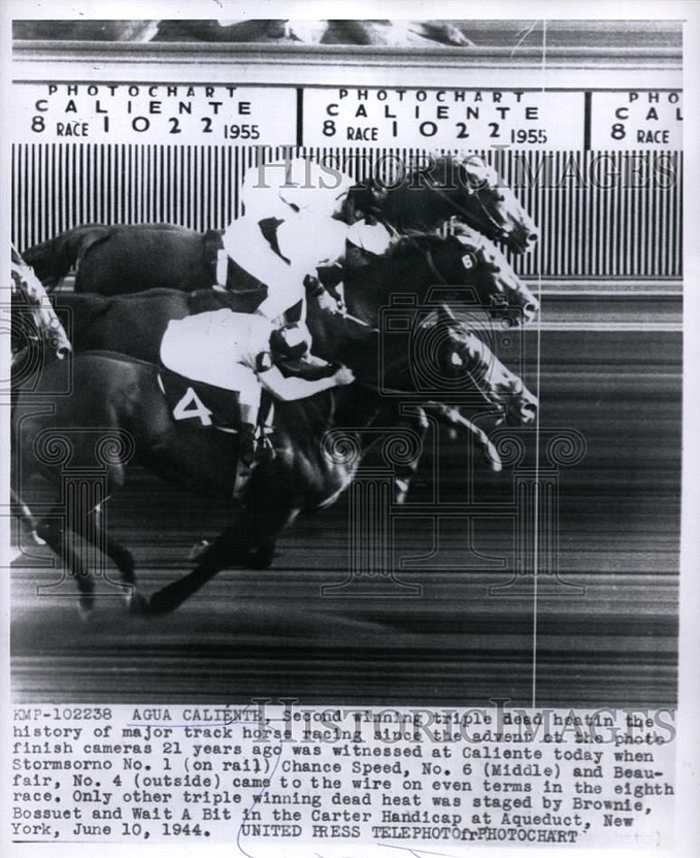
313. 1955 press photo of rare TRIPLE DEAD HEAT,
at Agua Caliente track. Since photo finish cameras
were introduced in 1934, there have been only two triple
dead heats: at the Aqueduct track in New York in 1944,
and one here, as of 1955 anyway!
|
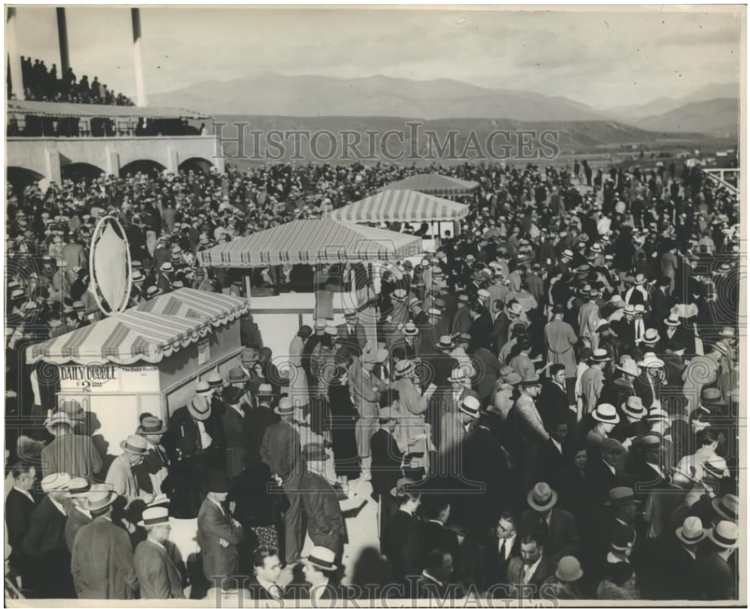
314. 1933 Press Photo of the "Second Largest
Crowd in Mexican racing history, for Race
at Agua Caliente Race Track". TRACK #2a ORIGINAL -- Agua
Caliente Racetrack, 1929 built - 1950s
|
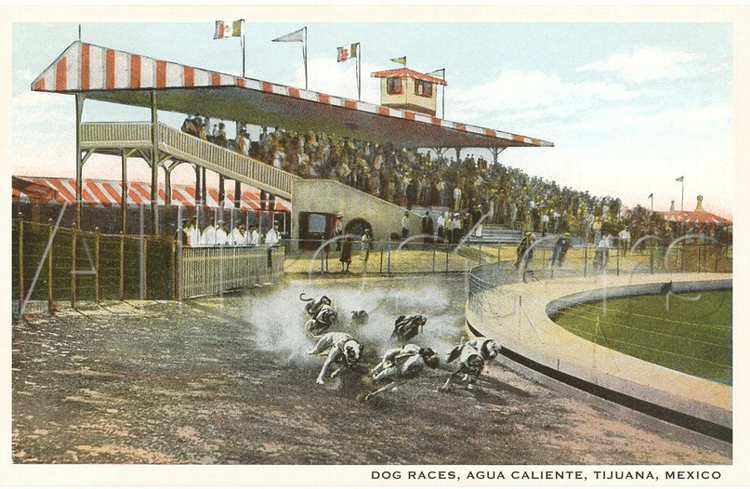
315.
Original Agua Caliente Dog Track.
DOG TRACKS AT AGUA CALIENTE TIMELINE:
� 1927-1947:
the dog track and the horse track were at separate
locations. "Greyhound racing was introduced to Mexico
through Caliente Greyhound Racetrack. ...Caliente organized
its first Racetrack in 1927, in an area where the majestic
Casino of Agua Caliente now stands" (source).
The dog track was located next to the bungalows and Casino; the track
is seen at location #14 in the map
above. The horse track was separate,
built in 1929, and was some distance away from the dog
track, to the west across Blvd. Agua Caliente; it
is seen as location #17 on the map
above. You can clearly see the two
tracks (Dog and Horse) on the map here
too.
� 1947-1992:
the dog track was moved to inside the horse track.
"In 1947, Caliente built an excellent [quarter-mile]
greyhound racetrack at the infield of the horse racetrack"
(source).
In the aerial view
picture below, you can see the small dog track oval inside the larger
race horse track oval. The horses ran
during the daytime on Saturdays and Sundays, and the
greyhounds at night all week. All this activity,
still at location
#17.
� 1992-present:
in
1992 the horse-racing was discontinued in Tijuana
due to labor problems and competition from California tracks,
leaving dog racing by itself at the track. As you
can see from the aerial
picture below, the small dog-race oval track remained (as did the
sports book), but the larger oval horse track was mostly demolished
for the new sports stadium. So the small casino-sports book-dog
track-stadium are all located at location
#17, the spot of the old 1929 Agua Caliente
Race Track. Caliente track details (Facility address,
mailing address, website, email address, upcoming race
entries) here.
Click here
for a bunch of videos of the Agua Caliente racetrack, including two videos
showing greyhond races (2008, 2010), one of Phar Lap's
great victory (1932) and one of Charlie Chaplin at the track
(1935). Click here for a recent greyhound race there -- note the nearby new sports stadium.
"In the United
States, greyhound racing is controversial. Over the
past five years the industry�s demise has been expedited
as more and more U.S. states outlaw the practice. Today
(March 2012), dog tracks operate in just seven states" (source)
(also see).
"You can see the dogs run daily at no charge at the Caliente
Race Track. Races begin nightly at 7:45 p.m., with an
additional matinee at 2 p.m. on Saturdays and Sundays"
(source).
|
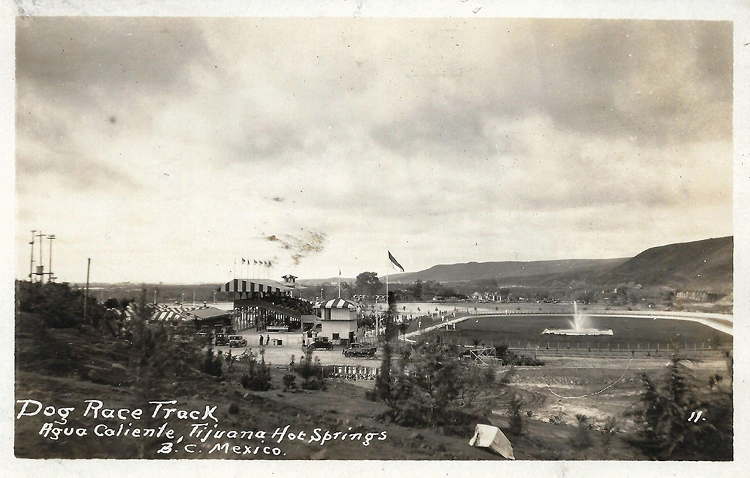
315a. Original Dog Track. Real Photo Postcard.
|
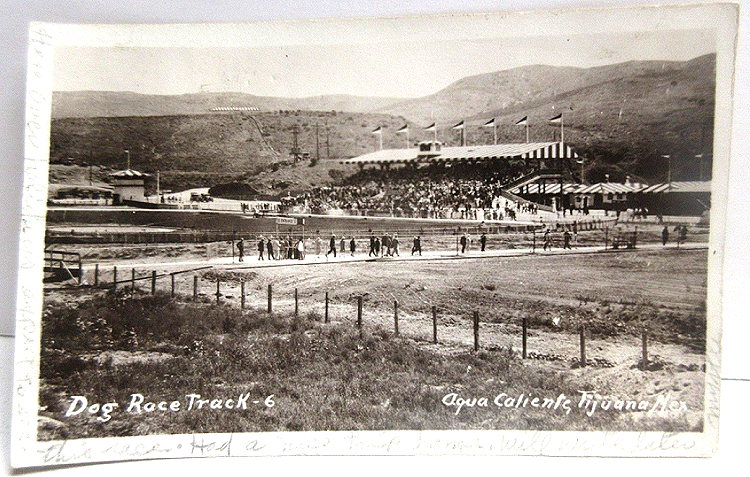
315b. Original Dog Track. Real Photo Postcard. 1927. Incredibly, this went for $306 at auction on eBay, March 7, 2018, item #122993935836.
|
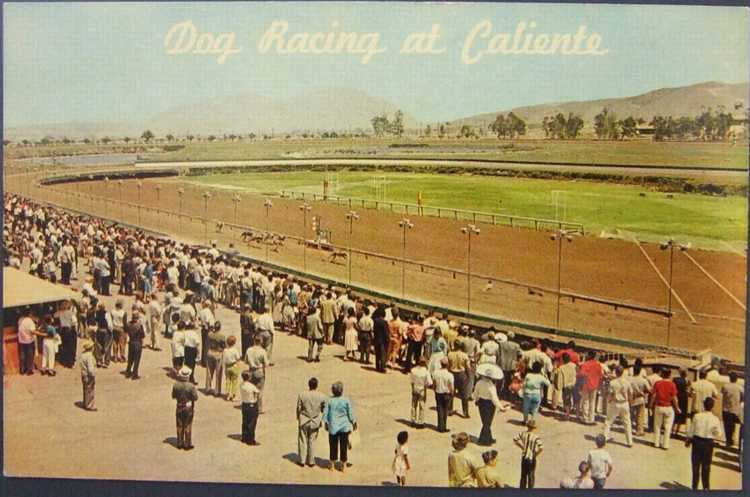
316.
Dog racing at Agua Caliente.
|
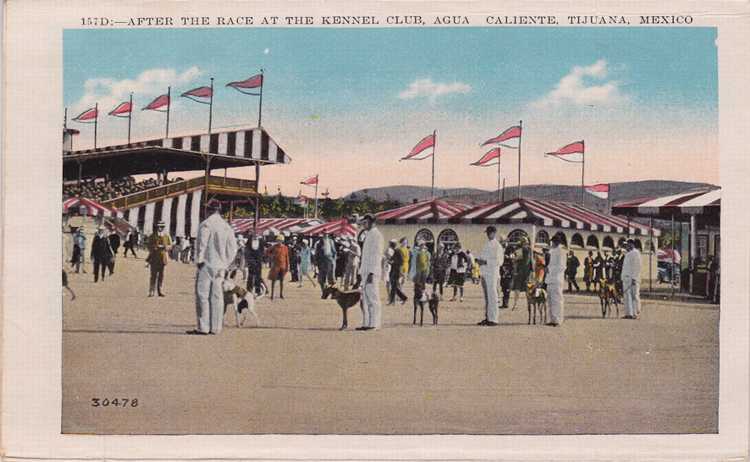
317.
Kennel Club at dog track. I have seen another postcard of this scene with a 1936 postmark. so the scene must be 1936 or earlier.
|
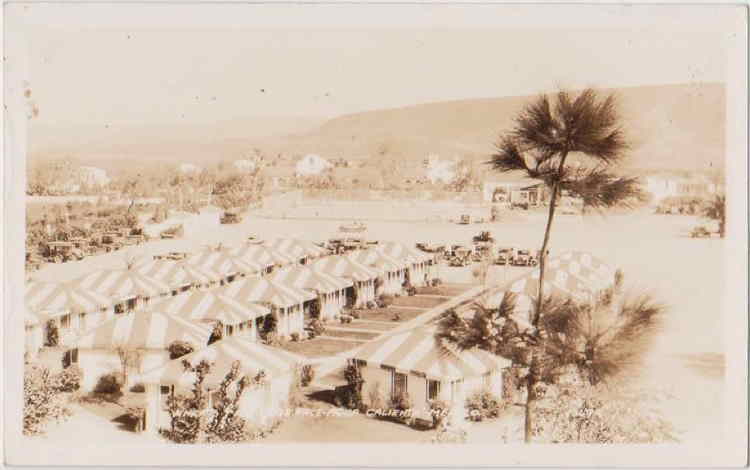
317a. Kennel Club, Dog Track, Agua Caliente.
This is a Real Photo Post Card (RPPC). The faint printing near
the bottom of the card says, "Where the Dogs Race - Agua Caliente,
Mexico". Went for c. $105, including postage, on eBay June 2015.
|
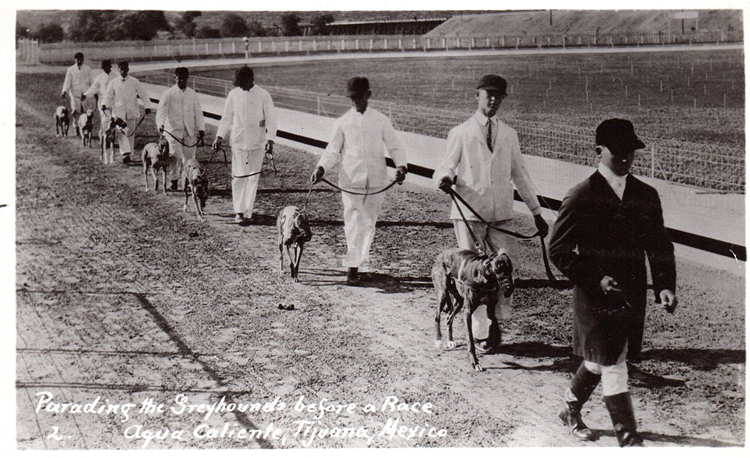
317b. "Parading the Greyhounds before a Race, Agua Caliente, Tijuana, Mexico." Real Photo Post Card.
|
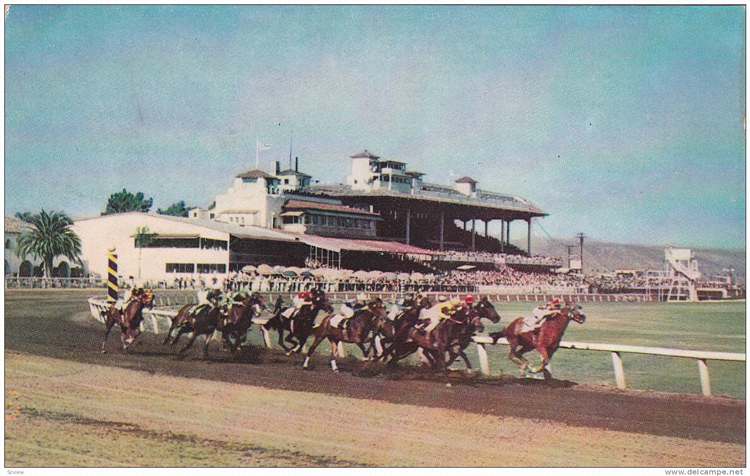
318. TRACK #3 (Agua
Caliente Racetrack, 1950s renovation - 1971 fire destruction).
The old 1929-built horse track in the 1950s
or 1960s. Undated postcard. Note the additional
grandstand added on the left, next to the Jockey Club grandstand.
|
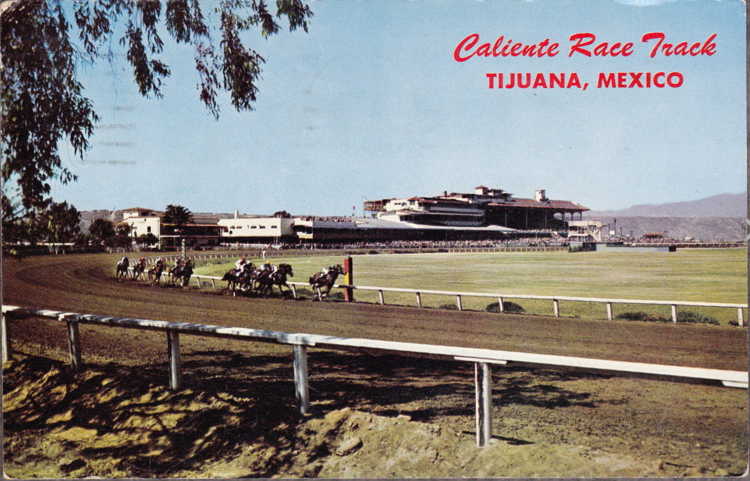
318a. TRACK #3 (Agua
Caliente Racetrack, 1950s renovation - 1971 fire destruction).
This postcard was postmarked 1967 on the back so the picture could be no later than 1967.
|
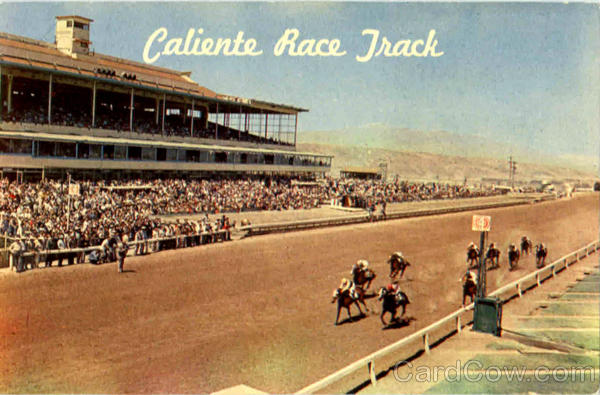
318b. TRACK
#3 (Agua
Caliente Racetrack, 1950s renovation - 1971 fire destruction). I used to think this was the rebuilt grandstands after
the 1971 fire because it is unlike the 1929 one in
so many ways: the 1929 one had only 6 tall columns in front,
a very high roof and only one above-ground grandstand tier.
The one in this postcard has many more columns, and two
grandstand tiers above ground level. However,
as David Jimenez Beltran notes in his book about the track (cited
below), in 1949 "Caliente closes for remodeling for the first of five
such renovations at the hands of [John] Alessio." The picture here is from a postcard seemingly postmarked in 1962, and no zip code in the address, indicating that period.
|
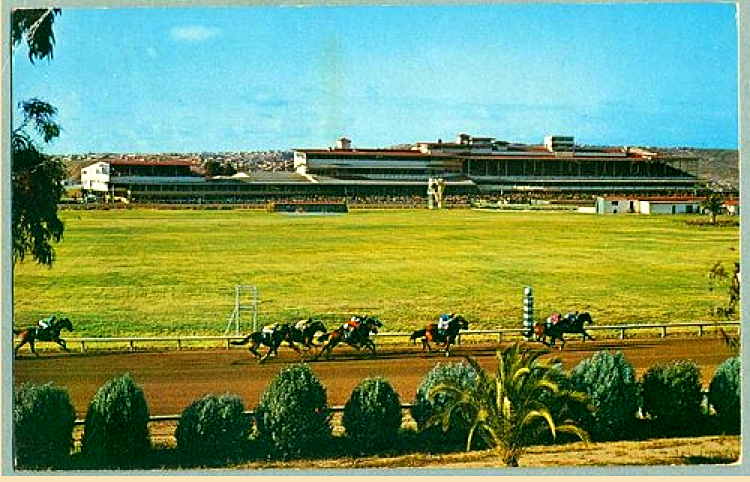
318c. TRACK
#3 (Agua
Caliente Racetrack, 1950s renovation - 1971 fire destruction).
Wonderful (and quite rare) postcard of mine, postmarked Jan. 24, 1967,
proof of the extensive renovations of the original 1929 track, proof
that the greatly changed look and enlargement of the track occurred
prior to the 1971 fire.
|
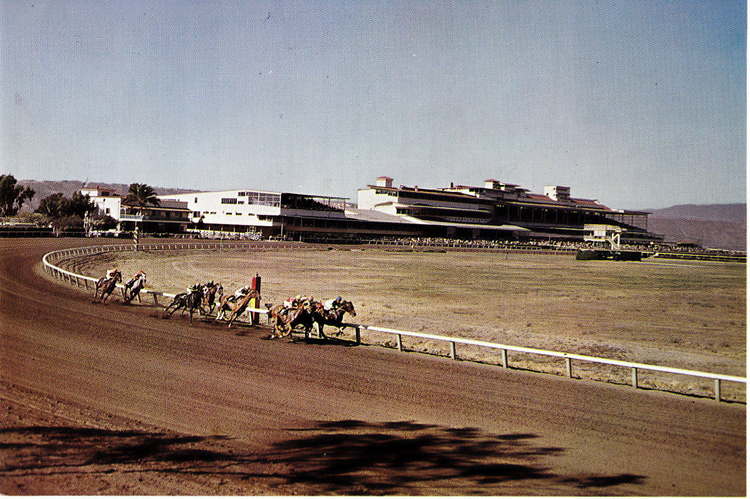
318d. TRACK
#3 (Agua
Caliente Racetrack, 1950s renovation - 1971 fire destruction). From an 11" x 8 1/2" photo of Caliente Race Track from a horse racing publication. Fine photo. |
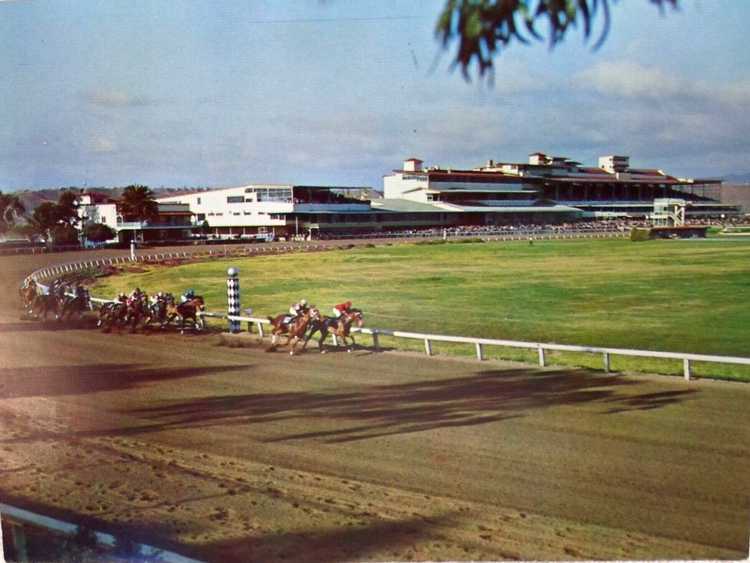
318e. TRACK
#3 (Agua
Caliente Racetrack, 1950s renovation - 1971 fire destruction).
|
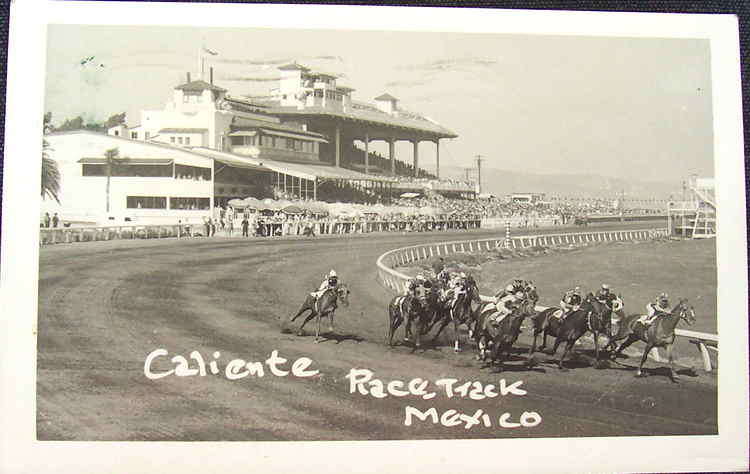
318f. TRACK
#3 (Agua
Caliente Racetrack, 1950s renovation - 1971 fire destruction).
Real Photo Postcard, cancelled in 1952. Minor renovation: pretty much the same as Track #2 -- they just added a building (in foreground) next to the Jockey Club.
|
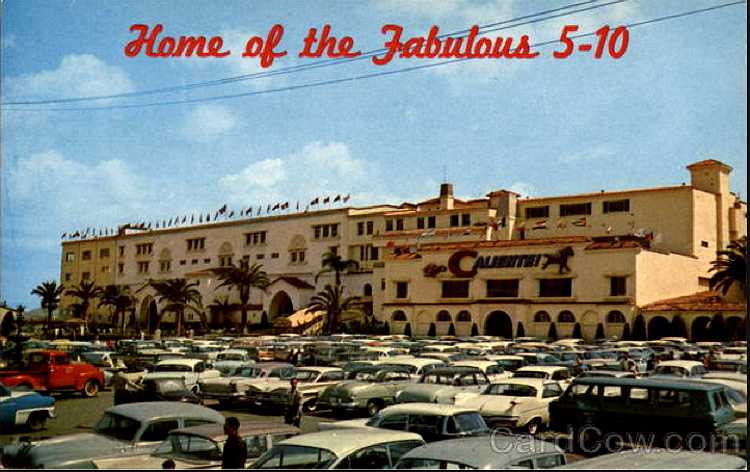
319. TRACK
#3 (Agua Caliente Racetrack, 1950s renovation - 1971 fire destruction).
Horse Track, prior to the 1971 fire, probably in the
1960's. One of the many rebuildings and improvements
to the racetrack after its 1929 birth. The scene you see here is
estimated to be from the 1960's. The astute seller of the
postcard has said, "You can see a 1961 to 1964 Chevrolet Corvair
"CorVan" Panel Truck, a 1960 Chrysler Imperial, a 1948-1953
GMC or Chevrolet Pick-up and many more vintage 1950's and 1960's
cars." Additionally, printed
on the back of the postcard it says,
"Caliente
race track � where there is weekend racing
throughout
the year, and in the evenings the fabulous 49er
betting
on dog races. This is a highlight of your visit to
Tijuana."
I just discovered (Dec. 2014) on eBay the very same postcard, and
the seller shows the back with its October 15, 1965 cancellation date,
so the picture has to be from 1965 or earlier.
(The Caliente race
track is the originator of the Pick 6 [in the North
American continent], then known as the 5-10 and later on
the 4-9'er. Some racetrackers called it the Big Six. A
Pick 6 is a type of wager offered by horse racing tracks.
It requires bettors to select the winners of six consecutive
races. Because of the great difficulty in picking six straight
winners, plus the number of betting interests involved, payoffs
for successful wagers are quite high, sometimes in the millions
of dollars. The revolutionary impact of this bet on track
attendance is examined here.) More on
the 5-10 in the next row.
|
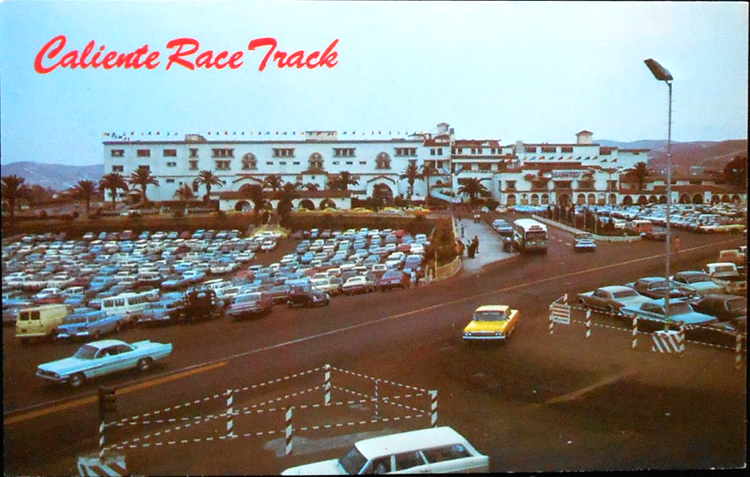
319a. TRACK
#3 (Agua Caliente Racetrack, 1950s renovation - 1971 fire destruction).
|
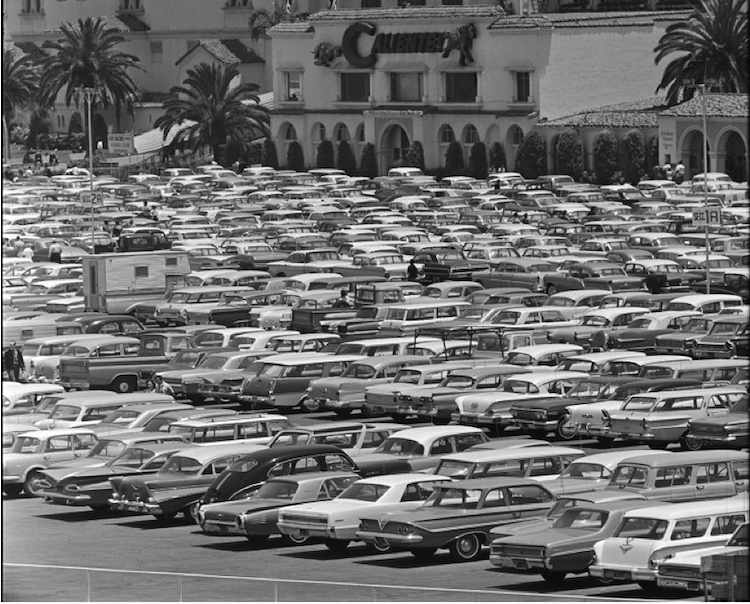
319b. TRACK
#3 (Agua Caliente Racetrack, 1950s renovation - 1971 fire destruction). A 1964 view of the parking lot and entrance. (Source.)
|
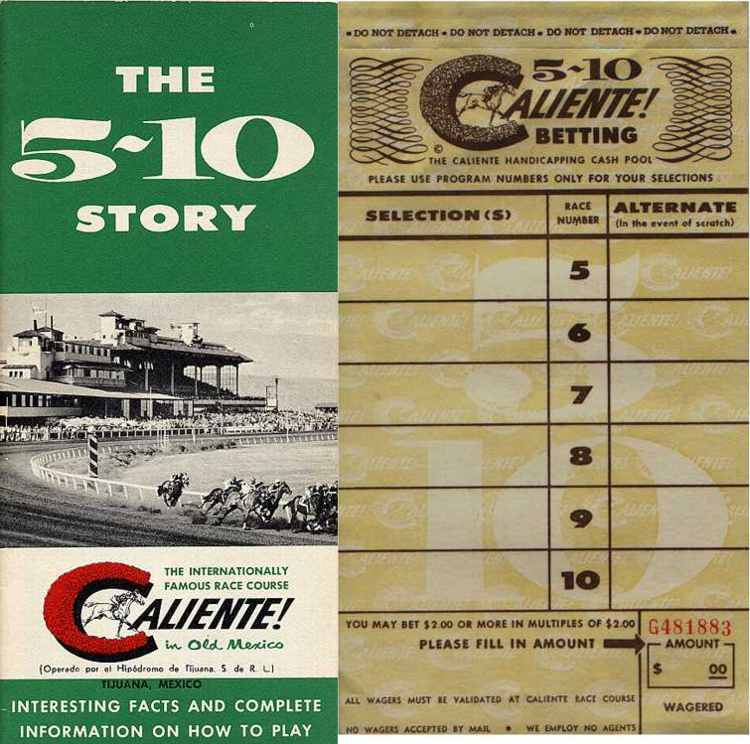
320. The famous 5-10 (Pick 6) bet, a Caliente first!
Brochure at left, bet slip at right. On April 15, 1956,
Agua Caliente unveiled its new bet, which would turn this tiny track into
a powerful weekend magnet for gamblers. Agua Caliente was the site of
several industry firsts, including starting gates, safety helmets, and
�pick six� wagering. Caliente�s famous 5-10 was the forerunner to many pick-six
wagers and had big payoffs. The object of the wager was to select six consecutive
winners. The bet was placed on races five through ten, hence the name the
�5-10.�
"The bet was placed by filling out a double-sided serial-numbered
form. Local players quickly named this betting slip �la forma.� One would
write out selections in one column and alternate selections in another.
This was done in case of a late scratch.
"The slip was then stamped at a betting window and sent downstairs
to a room where several workers would sort out the tickets with winning
numbers as the races progressed. It was fascinating to see the workers
quickly sort through stacks of betting slips. Later, Caliente would punch
the betting slip and the amount bet on the 5-10 would tally on the tote
system, thanks in part to some customers who tried to cash illegitimate
or forged tickets.
"They had unleashed a monster. This beast would for the next two
decades draw an unprecedented flow of horseplayers to the city of Tijuana
unseen since the glory days of the Agua Caliente Casino in the 20�s and
30�s. Caliente held all the aces, with no Sunday racing in California and
this bet with �get rich quick� possibilities of lottery proportion. California
racing was tied to a bland menu of Win, Place and Show betting and could
do little to change or compete with the betting format found at Caliente."
(Sources here
and here.)
|
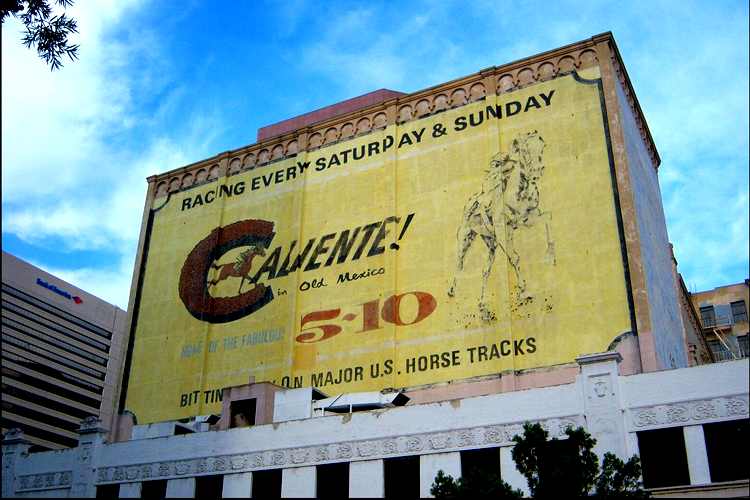
321. The famous Caliente Racetrack 5-10 sign in San Diego:
"Betting Daily on Major U.S. Horse Tracks." That tag line referred to
the sports book at the Caliente racetrack. The above Caliente Racetrack
advertisement sign in San Diego tells an interesting story. It was
painted on the brick of a large movie theatre building, and thanks to preservationists
both the building and sign remain there today despite the deterioration and
disuse.
The California Theatre was built in 1927 and was San Diego's premiere
movie palace in its heyday. The theatre, at 1122 Fourth St. in downtown,
is on the ground floor of a nine-story building, empty now for over 20 years,
which takes up an entire city block. The faded 40 x 80 foot yellow
sign is on the western side of the building. The theatre closed in the
1990s, and horse-racing ended at Caliente in 1992. An historic landmark
preservation law spared the theatre building, but in 2011 the sign was threatened
with being painted over and replaced with a Newcastle Brown Ale beer sign.
The Caliente sign must have been painted before 1966 because preservationists
invoked the "45-year review" rule to determine the historical significance
of structures more than 45-years-old. The preservationists prevailed.
References: article,
another
article, YouTube
video of the historic theatre, and current Facebook page of
the theatre. |
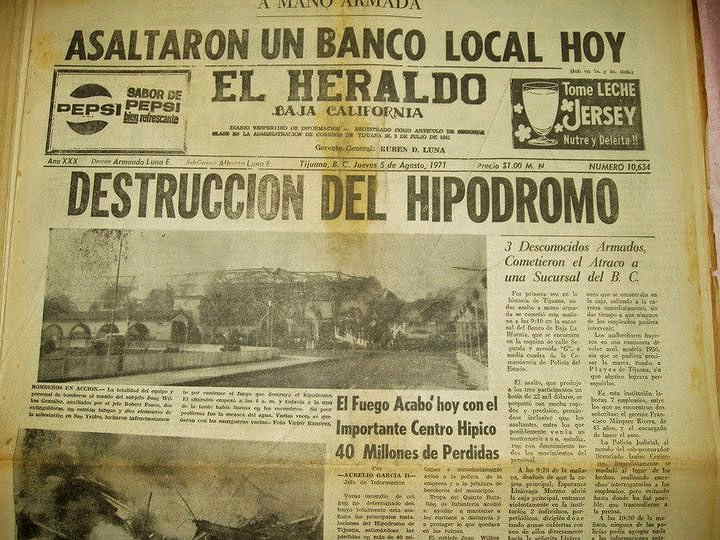
322. 1971
-- Horse-Dog track destroyed by fire. "When
fire erupted in the forty-two year old grandstand of the Caliente
Race Track on August 5, 1971, firefighters from San Diego
joined Tijuana firemen in battling the blaze. Water had to be
trucked in from more than a mile away. The loss of the uninsured grandstand
was placed between $10-15 million and cost 3,500 jobs at the racetrack."
(source) . .. ..... Headline and story from local Baja California, Mexico, newspaper: Destruction of Racetrack.
|
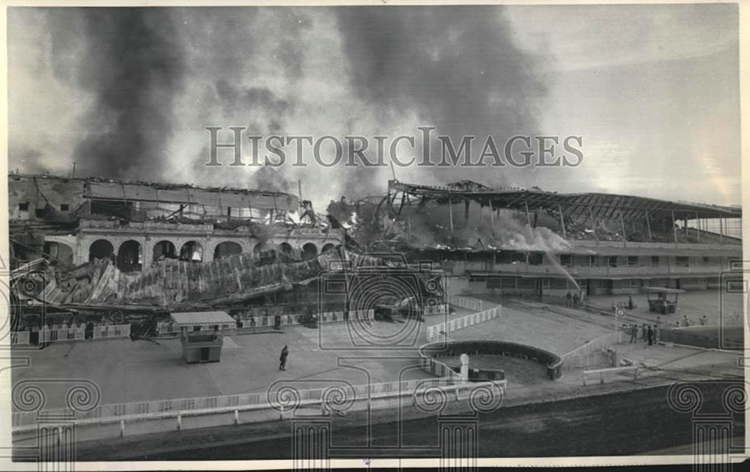
322a. Press photo of the 1971 fire. Text there says the grandstand, clubhouse and offices were all destroyed, but no injury to people, horses or dogs.
|
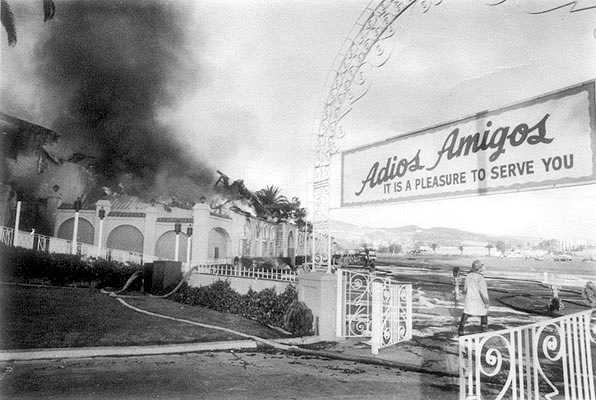
322b. Charred remains from the 1971 fire, above. (The grandstands were rebuilt in 1974.)
|
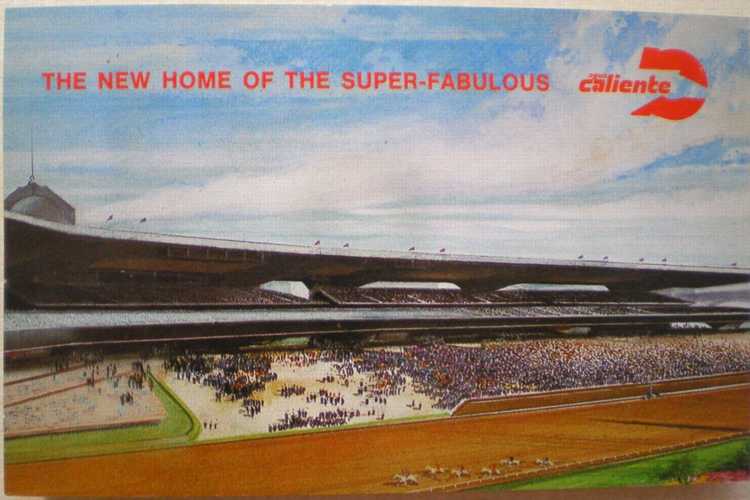
323.
The track was rebuilt after the 1971 fire.
The back of this postcard reads, "Mock
up of the new Agua Caliente Race Track, fine Arts Museum
& Theatre. � Tijuana, most visited city in the world."
.... "The "new" Caliente opened in 1974, but it was never
really completed. It had promised to be a major shopping, entertainment
and racing complex, but it never reached its goals. With the
advent of simulcasting and inter-track wagering in California
in the 1980s, thoroughbred racing gradually disappeared at Caliente.
Only the dogs continued running (Source)."
|
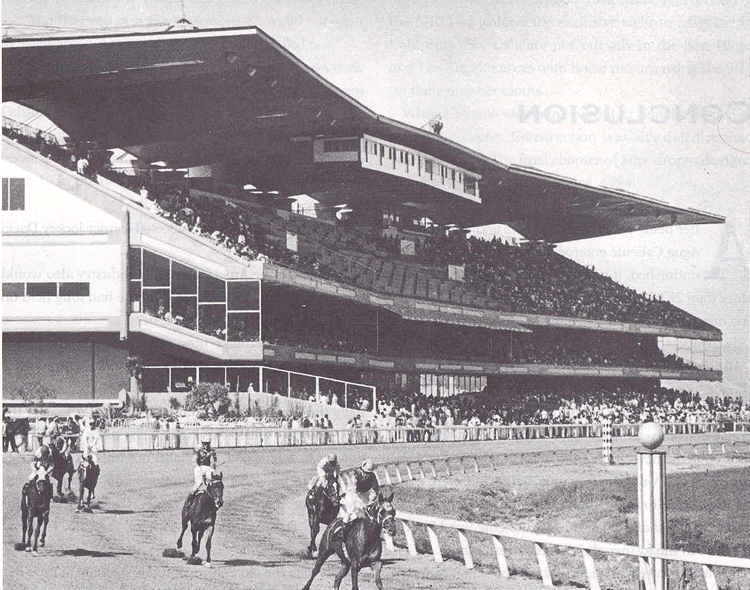
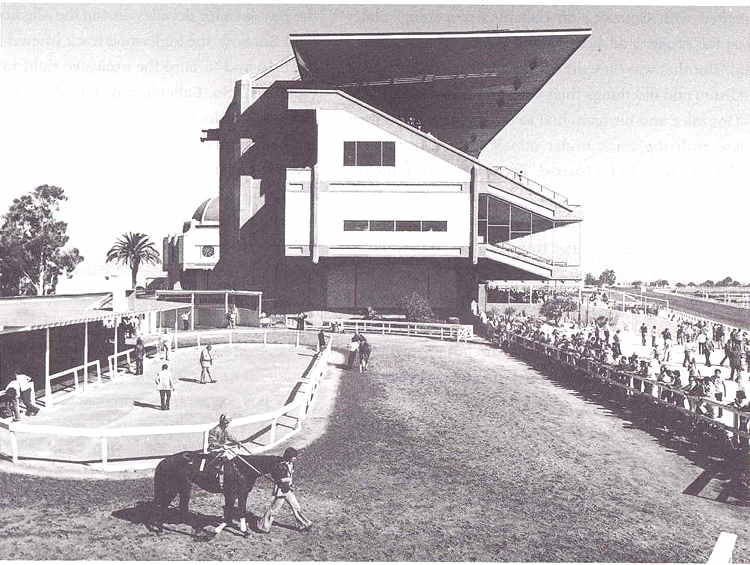
324. TRACK
#4 (Agua Caliente Racetrack, 1974 rebuilt after 1971 fire - 2007 demolished).
These pictures of the rebuilt track are from David Jimenez Beltran's
book "The Agua Caliente Story: Remembering Mexico's Legendary Racetrack"
(pp. 169, 172). I'm surprised that I have never seen a postcard
or any other picture of it, but Beltan's book is so autoritative, I
assume they are pictures of the track after the 1971 fire as he
asserts. Also, note the domed front entrance peeking out (from the
left) in the bottom picture, a sure sign of the post-fire track (seen in the second picture just below)..... ... Confirmation that these are the pictures of the rebuilt track is found in these pictures and article in
my copy of the June 21, 1976, issue of "The Blood-horse" magazine. The
article, entitled "A Phoenix in the Sun," is about the rebuilt
racetrack after the 1971 fire.
|
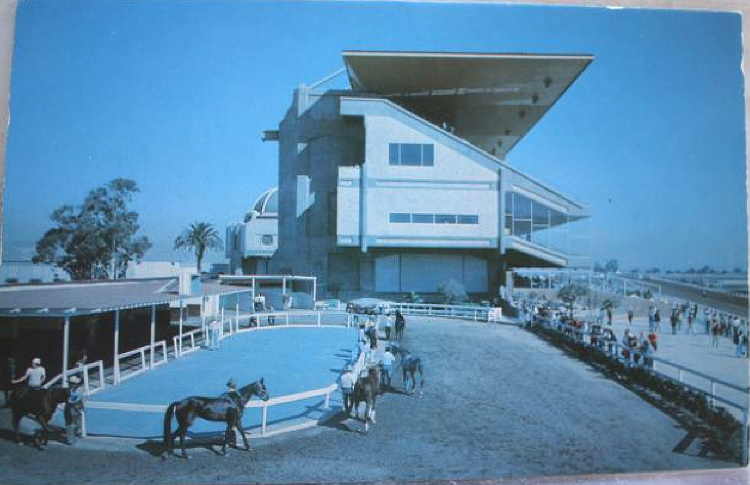
325. TRACK
#4 (Agua Caliente Racetrack, 1974 rebuilt after 1971 fire - 2007 demolished).
Lo and behold, the day after I entered the above pictures, I came
across this postcard on eBay -- virtually the same scene as in the book;
only the horses and people have moved about some! It is an unused
postcard. The back is printed in English, though it says,
"Hipodromo [Racetrack] De Agua Caliente, Tijuana, Mexico." It's a standard size, 3.5� by 5.5�, postcard. |
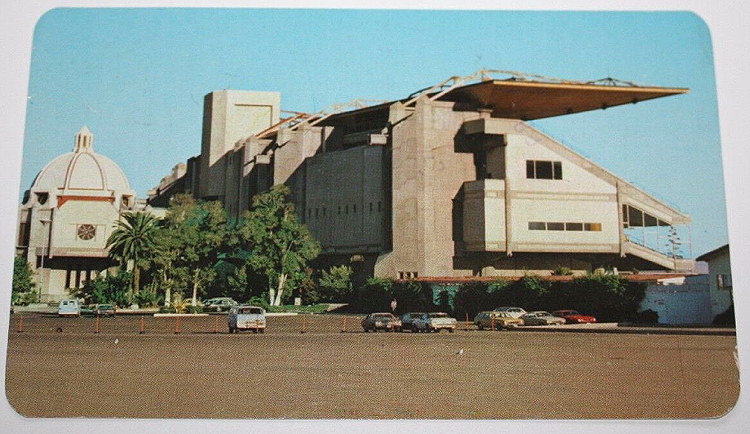
325a. TRACK
#4 (Agua Caliente Racetrack, 1974 rebuilt after 1971 fire - 2007 demolished).
|

326. TRACK #4 (Agua Caliente Racetrack, 1974
rebuilt - 2007 demolished). POST-1971 FIRE: (1974
- c. 2007) -- the rebuilt Agua Caliente entrance after
the 1971 fire, designed by Javier Zeptien, had a more modern
streamlined appearance, per "The Agua Caliente Story,"
by David Jimenez Beltran. Even though the picture continues
to be shown on web sites as the current Caliente dogtrack-sportsbook-casino,
it was torn down, no longer exists. The building was
rebuilt, as seen in pictures 329 to 333.
"The [horse] track
struggled on until 1992, when it was finally laid
to rest. But Caliente is not the kind company to surrender
easily. The early nineties were the age satellite broadcast.
Noticing the growing market in offtrack betting, Caliente
invested bravely in telecommunications technologies, formed
new partnerships and alliances and began offering satellite transmissions
straight from the track. The company had found a new face.
... Caliente was quick to see the value of the internet,
as it was to expand in to other sports, such as Football,
Basketball, Hockey, Baseball, Boxing, Golf and Auto Racing.
It was the first company to build an online sportsbook linked
with satellites and now enables millions of people all over South
America to watch and place bets on sporting events all around
the world. During the last decade of the century, the corporation
has extended its operations to countries such as Antigua, Argentina,
Austria, Aruba, Brazil, Colombia, Curazao, Ecuador, El Salvador,
Panama, Paraguay, Peru, Uruguay and Venezuela. ... So it�s one
of those rags to riches, back to rags and then back to riches
stories. As the website explains in its broken English: �The hard
times had been faced with enormous mettle; when turning to the millennium,
it has turned 85 respectable years.� ... May it turn 85 more� " (Source)
Per a 1989 New
York Times article: "With one eye, [the
customer] can watch a pack of live horses charging
down the Caliente stretch. With the other, he can glimpse
a bank of nearby television monitors showing three other
races in progress: thoroughbreds in California, harness
horses in New Jersey and greyhounds in Florida. And because he
is at Caliente, a $5 taxi ride from the Mexican border with California,
he can legally have a bet down on all four races. Nowhere else
in North America can a race bettor find this much action, and
Caliente offers its largely American clientele a setting as exotic
as the betting. .... Caliente's operators say they lose money on
their live races and stage them for little more than decoration. What
keeps Caliente in business is an advanced version of what many American
tracks are increasingly turning to in their own fight for survival:
betting on races being run somewhere else." Always trying to offer
something more, they have bets crossing more state and international
boundries, more exotic bets in an exotic location, no reporting to the
IRS, better odds than Las Vegas, etc. ''Del Mar has threatened us with
extinction,'' Arturo Alemany, Caliente's director for American operations,
said this week. ''We always have to offer something more, so now
we have added New York racing. If race books like ours come to California,
we'll get sports betting. If California gets sports betting, we'll get
casinos. If California gets casinos? Well, we'd have to throw in the
girls.'' Alemany said Caliente's hope for the future lies in changing
Tijuana's image from that of a shady border town to a ''Disneyland for
bettors.'' He said Caliente has begun marketing tourist packages for
couples: the idea is for one partner to go shopping and sightseeing
while the gambler in the family spends the day in a race book. .....
"Caliente burned to the ground in 1971, but was rebuilt and sold
a decade later to Jorge Hank Rhon, who moved the on-track race book
from a building behind the track into the clubhouse to keep out
the vagrants who once gave it a seedy look. Admission to the race
book is now $10, fully refundable in bets, and the place is clean
and bustling."
|
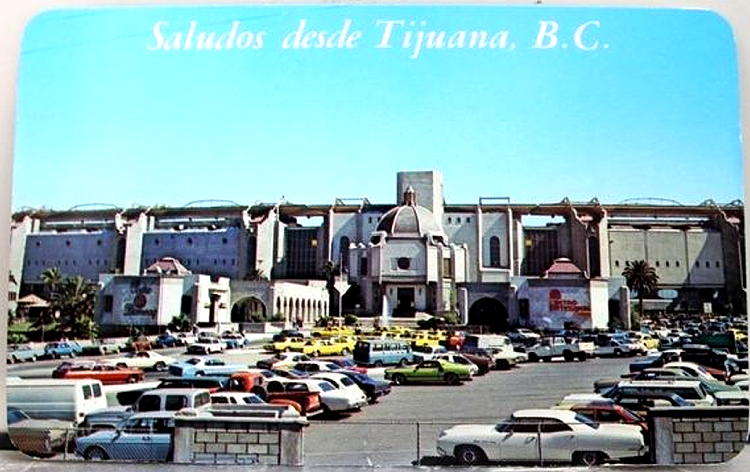
326a. TRACK #4 (Agua Caliente Racetrack, 1974
rebuilt - 2007 demolished). Rare postcard.
|
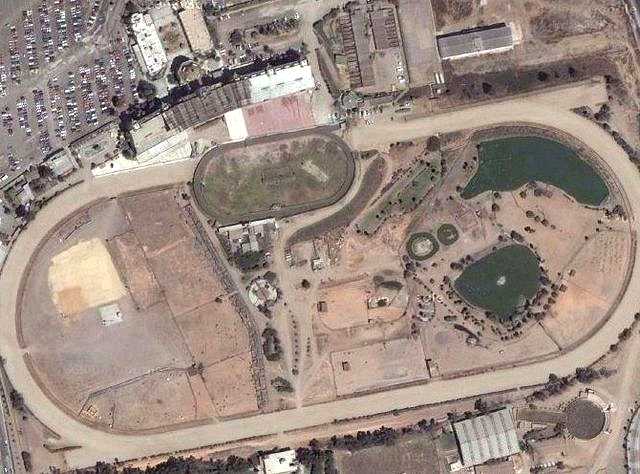
327. THE LAST COMBINED HORSE AND DOG
TRACK -- REBUILDING FOR THE
PRESENT CASINO-SPORTS BOOK-DOG TRACK. Above
is an aerial view of the old tracks. Since 1947 a
small dog track oval was built inside the larger race horse
track oval, as clearly seen above. But since 1992 there
was no longer horse racing at the Agua Caliente, Tijuana, track.
Therefore, they eventually planned to do away with the horse
track and build a sports stadium. Look at the areial view
below to see how this was accomplihed.
|
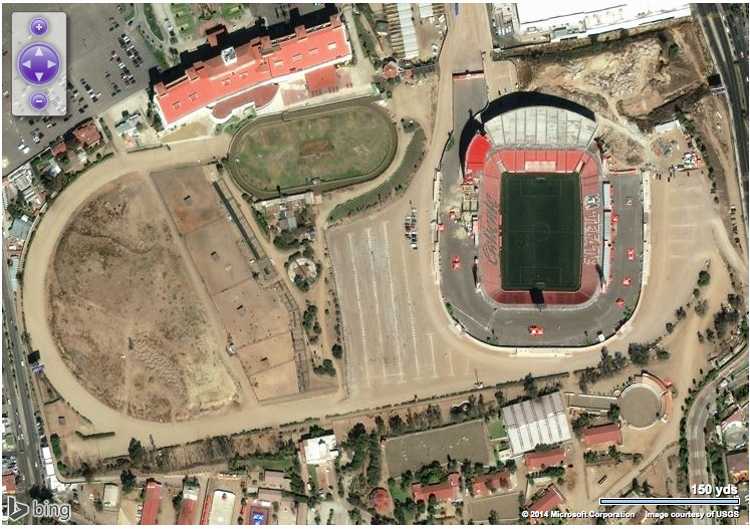
328. PRESENT TRACK -- DOG RACING
ONLY, AND ESTADIO CALIENTE STADIUM -- Aerial
photo of the current Casino-Sports Book-Grandstand
(long red structure at upper-left), dog track ( just
below -- small oval) and the Estadio Caliente stadium (at
right, large oval; built so Tijuana could host a major league
soccer team). Interactive map of this here.
(The very large incomplete oval (on the left-center) is
the remains of the defunct HORSE TRACK, which became useless after
horse racing ceased in the 1990s.)
***** Wow! Here is a terrific
wide and high aerial view of what you see in the above picture.
Click here. The
casino-sports book-grandstand, the dog track, and the
new sports stadium are a little below the center of the
picture. *****
|
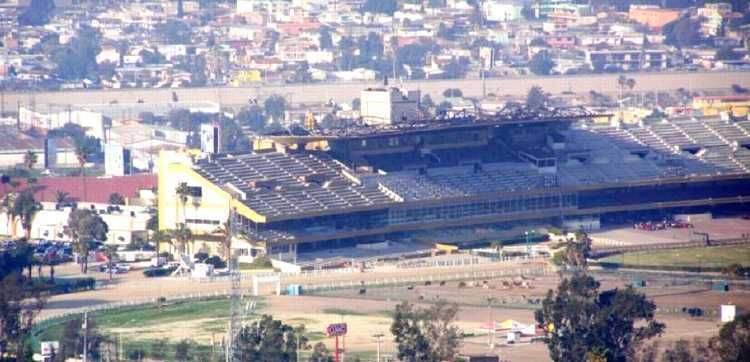
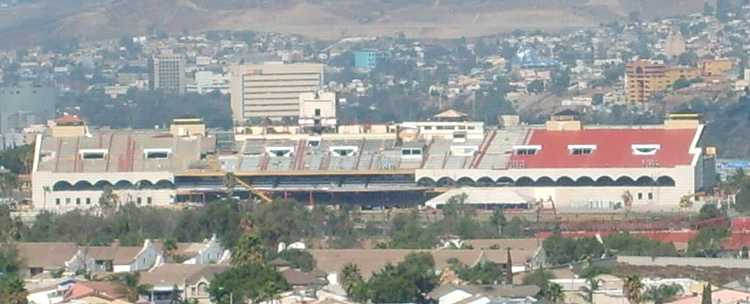
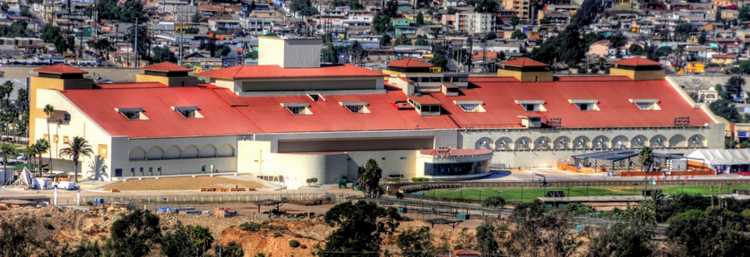
329. TRACK #5 ("Hipodromo [Racetrack] de Agua Caliente,"
2007 built - present). BUILDING
THE CURRENT CASINO-SPORTS BOOK-DOG TRACK.
Above are three pictures of the same building -- the
phases of construction of the new Casino-Sports Book-Grandstand
(called "Casino & Racetrack Caliente"), about 2007. Notice, for
example, how the red roof is started and completed. Sources here
and here.
Another view of this (dated Sept 2007) here.
This 2007 post calls it "Hip�dromo
[racetrack] de Agua Caliente" (source).
..... ..... Here
and here
are other views.
In 2004, a Mexican
law was passed allowing limited gambling, but machines
(slots, computer terminals) only. "The famous Agua
Caliente Casino, ... reopened its doors this past Friday April
5th [2008], after being closed for a long time" (source
and source).
The casino-sportsbook-dogtrack
(pictured above, at the old Agua Caliente (Horse) Racetrack)
is officially called "Casino & Racetrack Caliente" or
just "Caliente Casino," and here
is the web site for it. It shows the formal address, room rates, telephone
number, map, etc. The website for the Caliente
holding company that owns numerous Caliente Casinos
throughout Mexico is here.
|
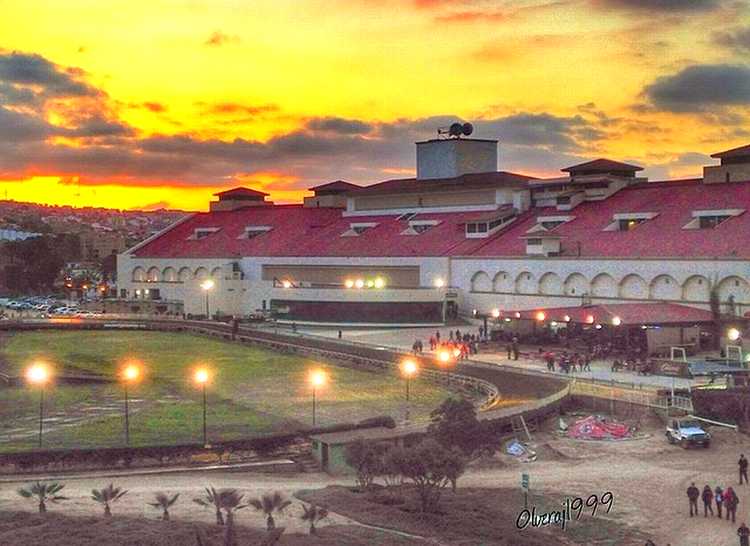
330.
TRACK #5 ("Hipodromo [Racetrack]
de Agua Caliente," 2007 built - present). PRESENT TRACK -- DOG RACING ONLY --
the rear side of the new Casino-Sports Book building. Source.
Note that without horse racing, there are no large crowds like
before, so no large grandstands needed! Also
a greyhound track would be smaller than a horse racing
track.
Here
is a superb, clear, wide-angle shot of the same scene --you can clearly see
that the red roof is just that, a roof, not grandstand seats. Here
and here
are other shots; the second one looks like the building (especially the
roof) is uncompleted.
|
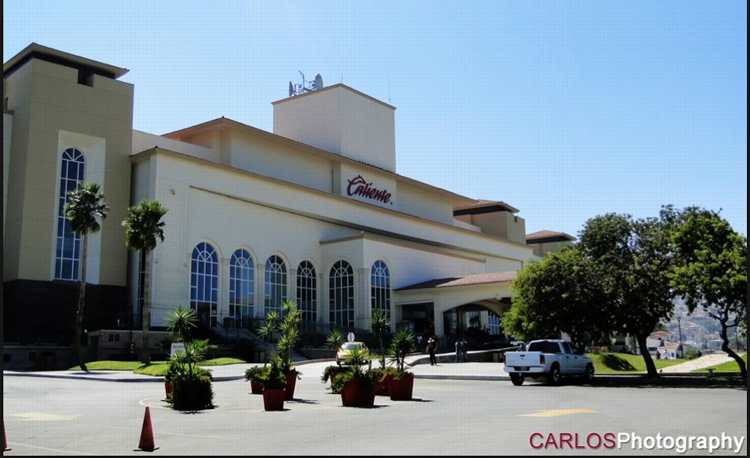


331. TRACK #5
("Hipodromo [Racetrack] de Agua Caliente," 2007 built - present).
PRESENT TRACK -- DOG RACING
ONLY -- CURRENT
TRACK, COMPLETE WITH CASINO AND SPORTS BOOK: Hipodromo
de Agua Caliente -- A view of the current
casino entrance. The dog track is on the reverse
side of the building. "Famous since its inception,
the Caliente [Grayhound] Racing Track & Casino
offers fun for your visit to the city. Play on its machines,
enjoy your favorite sports and win in their greyhound racing,
an exciting experience," per their web
site . The facility has a
large sports playing field and hosts many
sporting events. Technically table games (black
jack, craps, roulette, etc.) are illegal, but slot
machines, poker rooms, bingo and sports book betting are
allowed. The chips shown below, at the end of this
section, are from blackjack games, which frequently occur
when officials are bribed. So consider them illegal
chips. ... .... It is currently owned by millionaire
politician Jorge Hank, who renamed it "Hip�dromo de Agua
Caliente," and it no longer holds horse races but rather greyhound
races, per Wikipedia.
At their web site, they say, "The Caliente�
Casino at the Agua Caliente Racetrack, located in Tijuana,
is the gaming establishment with the most electronic gaming
terminals in Mexico with more than nine hundred installed
machines." (Source.)
A wider, more distant
view of the front of the present building here.
|
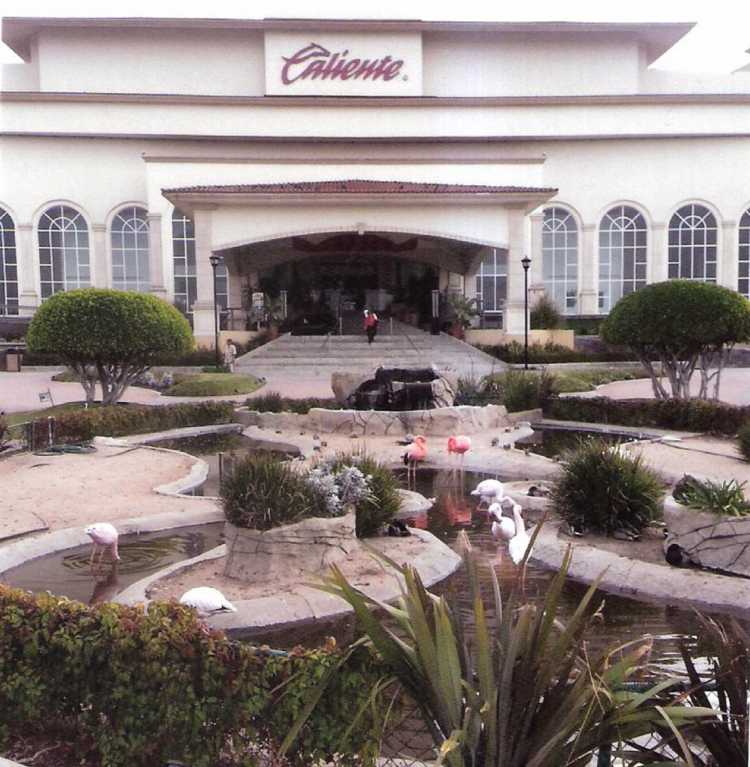
332. TRACK #5 ("Hipodromo [Racetrack] de Agua Caliente,"
2007 built - present). PRESENT TRACK -- DOG RACING ONLY --
another view of the current casino-dog track-sports
field entrance.
|
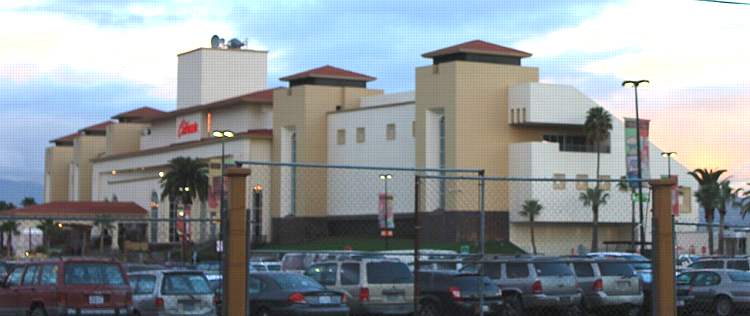
333.
TRACK #5 ("Hipodromo [Racetrack]
de Agua Caliente," 2007 built - present). PRESENT TRACK -- DOG RACING ONLY --
Another view of the building.
|
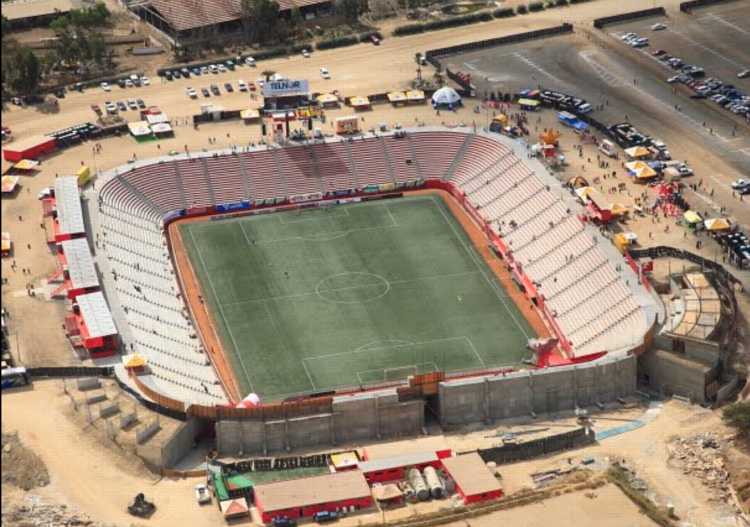
334.
Estadio Caliente stadium was built on the much
of the grounds of the old race track. It is close
to the current Casino-Sports Book-Dog Track (see above).
It is used mainly for football (soccer) games, hosting
a major league team for that sport. Source.
"The Estadio
Caliente is a multi-use stadium in Tijuana, Baja California,
Mexico, that is mostly used for football matches. ... The
stadium hosts home matches for the Mexican professional
football team Club Tijuana, who play in the Liga MX, Mexico's
First Division. ... The stadium was opened in November
2007, according to schedule. The stadium originally had a capacity
of 13,333. On March 2008, the capacity was increased to 21,000
with eventual expansion to 33,333. ... Stadium owner Jorge Hank
Rhon's main reason for constructing the stadium was his wish to
have a professional soccer club in the city. ... Because the Mexican
Football Federation says that teams participating in the First
Division must have a stadium with a capacity over 15,000, Club Tijuana
officially became qualified for promotion to the Primera Divisi�n
de M�xico when the capacity was increased. ... The construction
of the stadium was planned in two parts. The first part finished
the ground and lower sections of the stadium. In the second phase,
the stadium's capacity was increased," per Wikipedia.
|
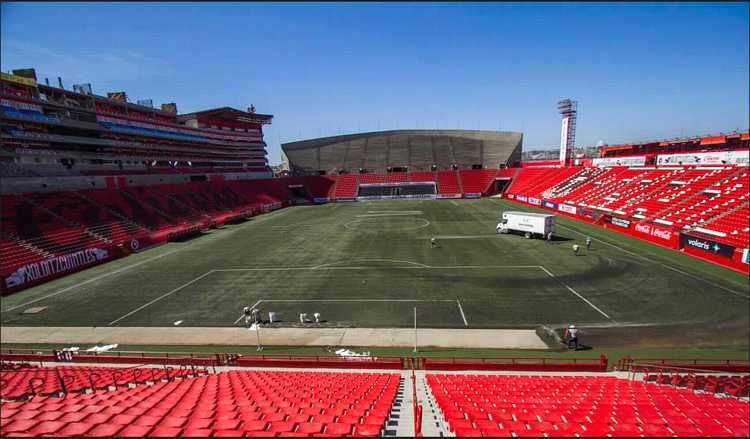
335. Stadium, under construction,
photo 2013.
|
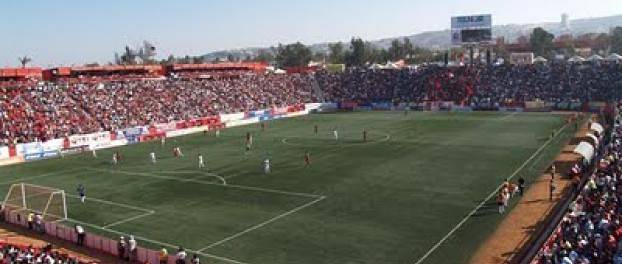
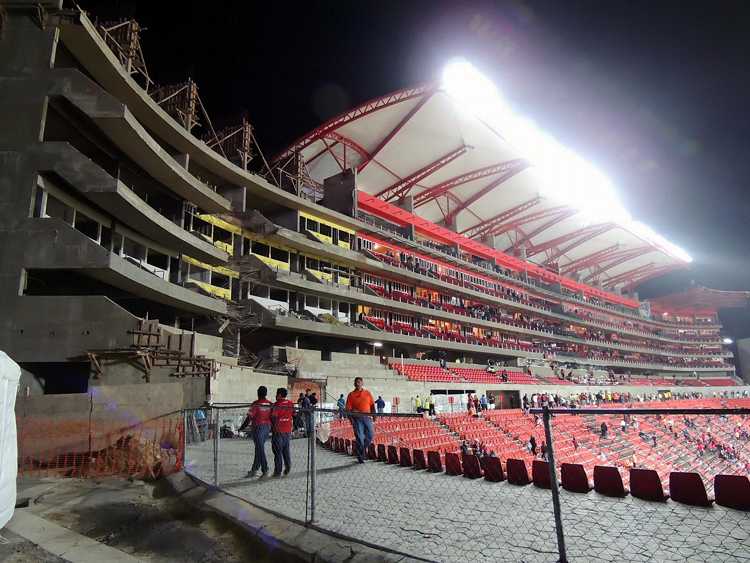
336. Estadio Caliente stadium (lower picture,
2014). Take a look at this interesting
site,
which shows pictures of the stadium over the years; construction is constantly
going on. The current seating capacity of
the stadium is 21,000 as of May 2014, and the completion target
seating capacity is 33,333. The lower picture here
was taken March 2014.
|
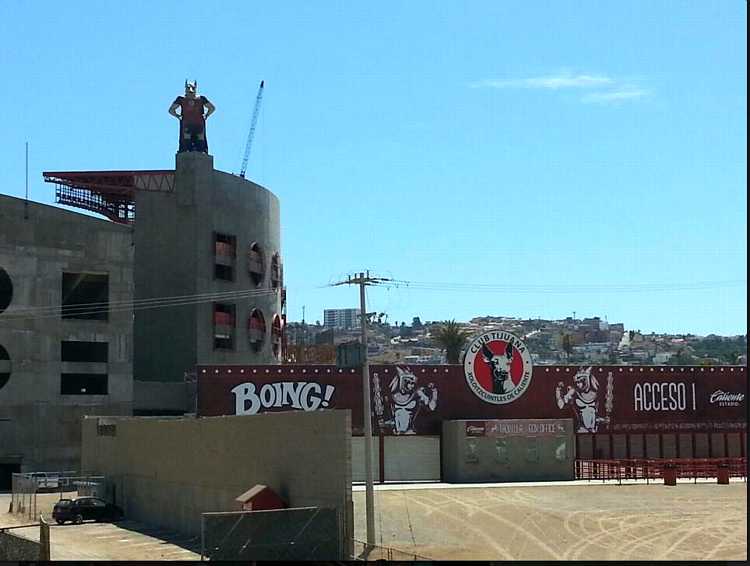
337.
The stadium was built to host a major football
(soccer) team, and it became the "Club Tijuana
Xoloitzcuintles de Caliente, commonly referred to as Xolos
de Tijuana, or simply as Xolos, the Mexican professional
football club from Tijuana, Mexico. It was founded in January
2007. The colors that identify the club are red and black. On
December 2, 2012, Xolos became champions of the Liga MX." Per Wikipedia. Note
the dog logo/mascot, as the stadium is right next
to the Caliente dog track.
|
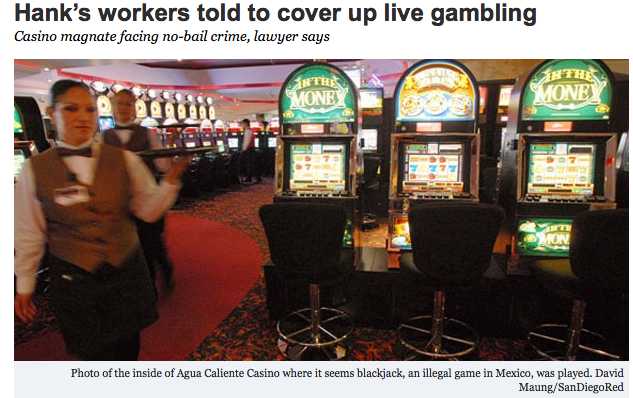
338.
The Casino-Sports Book-Dog Track is currently
owned by millionaire politician Jorge Hank, who renamed
it "Hip�dromo [Racetrack] de Agua Caliente."
The casino-sports book is called "Caliente Casino" and also
"Casino & Racetrack Caliente . The above
picture is from a 2011 San Diego Red news story about Hank
and the casino. "Mexican federal law prohibits live games
of chance � such as blackjack, poker and baccarat -- save
for special events. However, the electronic versions of these
games are allowed in casinos, among other types of games."
Live blackjack gems have been going on there for so long, many employees
said they thought they were legal. But employees were warned
to deny there were live games after Hank's arrest on gun
charges. Hank is a leading figure on the PRI political party,
winning and losing elections, being investigated, arrested and
released for many supposed crimes over the years. Story
here.
"Jorge Hank Rhon
(born January 28, 1956) is a Mexican politician,
businessman and owner of Mexico's largest sports betting
company, Grupo Caliente. An eccentric and controversial
personality, he served from December 2004 to February 2007
as the president of the municipality of Tijuana. He is the son
of former Mexico City mayor Carlos Hank Gonz�lez and Guadalupe
Rhon. Hank is the father of 19 children with several different
women; he is also the stepfather of Matador Alejandro Amaya. ...
He moved to Tijuana in 1985 to manage the Agua Caliente Racetrack
and formed the Grupo Caliente which includes the dog racing track,
a hotel, a mall and a network of entertainment centers in 19 states
of Mexico as well as 13 countries of Central, South America and Europe.
The number of employees of the racetrack grew from 700 to close to
6,000.... Hank has long been target of diverse rumors and accusations
by the media and political rivals, like having links with organized
crime, or being related to the 1988 murder of an Investigative Journalist
in Tijuana. Also, in 2011 Mexican troops raided his property without
a warrant and allegedly seized 88 firearms, 2 of which could be
linked to homicides by ballistic evidence. Hank's defense lawyer,
told the judge that all was political Frameup to prevent him from running
for the 2013 state elections, being most of the weapons were planted
by the military. The federal judge ruled that the raid was performed
without a warrant, and that all evidence against Hank was inadmissible.
No formal charges of any crime have ever successfully been leveled against
him." Source:
Wikipedia.
The casino-sportsbook-dogtrack
(pictured above, at the old Agua Caliente (Horse) Racetrack)
is officially called "Casino & Racetrack Caliente" or
just "Caliente Casino," and here
is the web site for it. It provides the formal address, room rates,
telephone number, map, etc. The website for the
Caliente holding company that owns numerous Caliente
Casinos throughout Mexico is here.
|
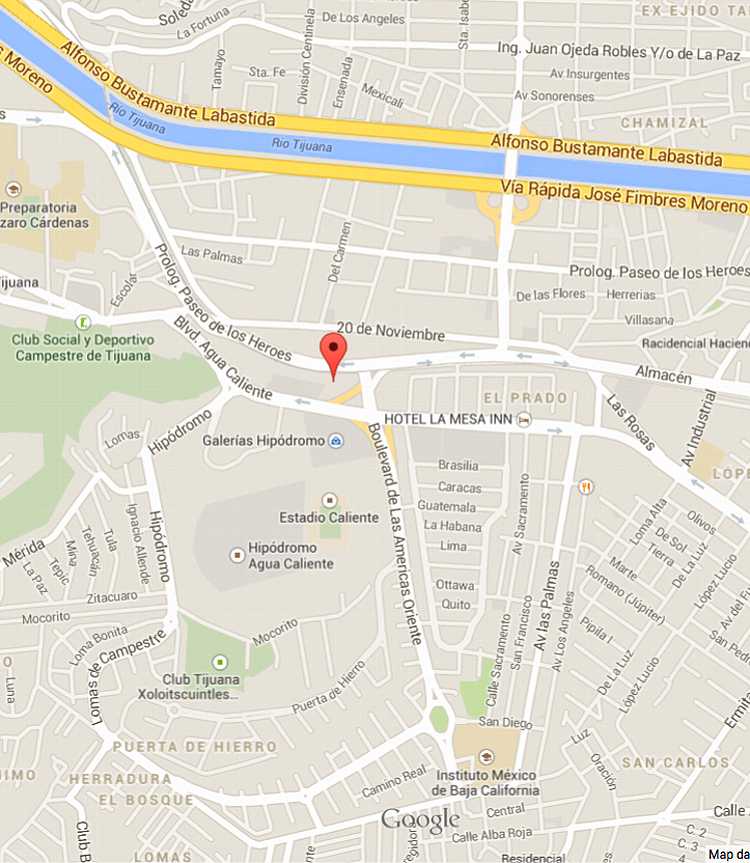
339.
Google satellite map of today's Casino-Sports
Book-Dog Track (named "Hipodromo [Racetrack] Agua Caliente"
on the map) and sports stadium ("Estadio Caliente"
on the map). Both are located on the grounds
of the famous old Agua Caliente rack track -- location #17
on the
map at the top of this page. The
old Agua Caliente hotel (now demolished) was at
the red teardrop on the map here.
|
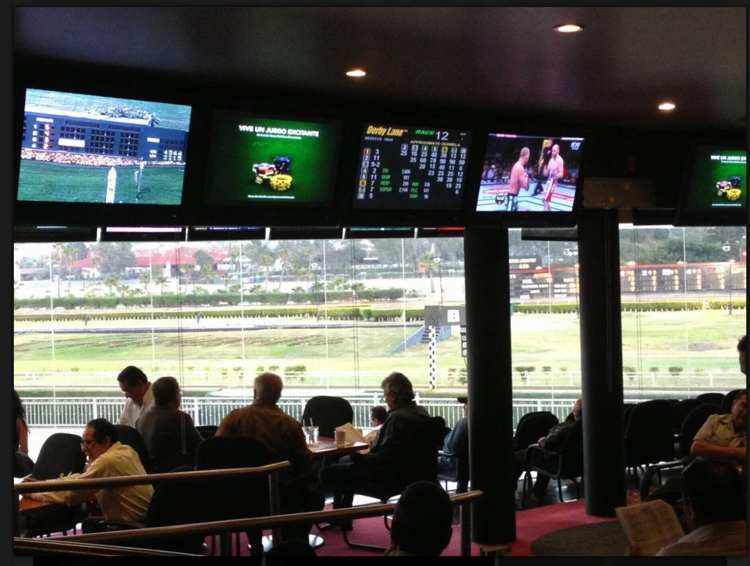
340. TRACK #5 ("Hipodromo [Racetrack] de Agua Caliente,"
2007 built - present). View of dog track from
inside "grandstands"-sports book. c. 2013. (Source)
|
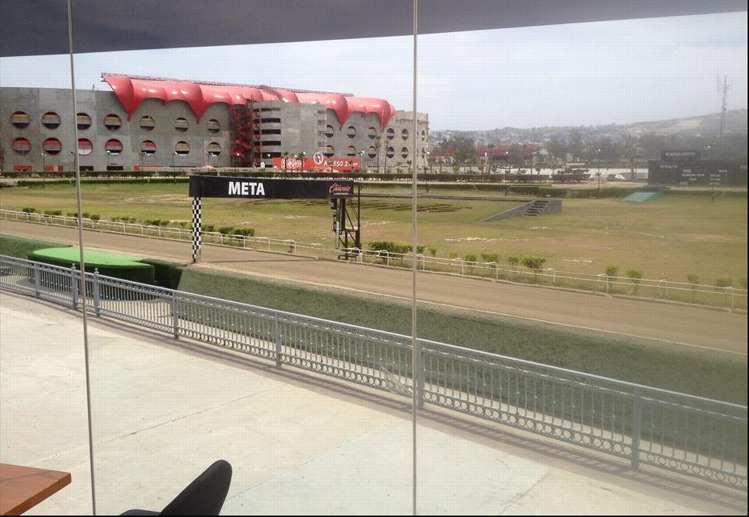
341. View from racetrack
"grandstands" across dog track to Estadio Caliente
stadium. c. 2014. (Source)
|
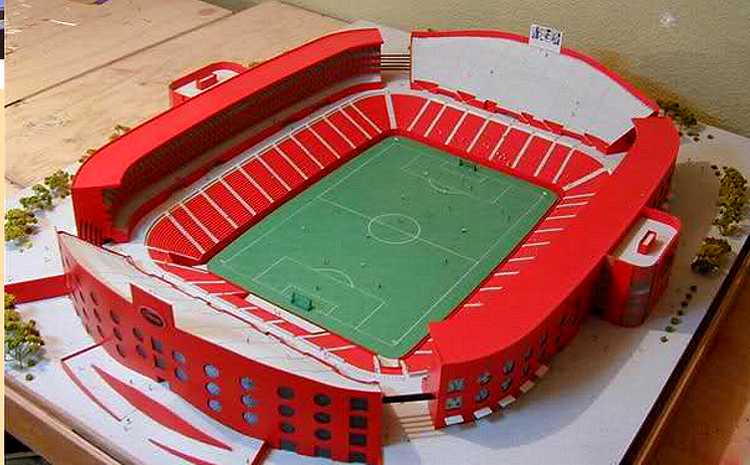
342. Model of the planned stadium.
The actual stadium is constantly being added to. The
current seating capacity (in May 2014) is 21,000. The "target"
seating capacity is33,333. (Source.)
That link will discuss the building of the stadium and
shows pictures of the Estadio Caliente over the years. "Construction
of the stadium where a public pond used to be started in 2007
and the Benue was opened in November that year. Initially with capacity
at 13,333 people it had one tier of stands based on land slope, U-shaped,
with northern end open. Already then it was clear that the venue
will grow further."
|
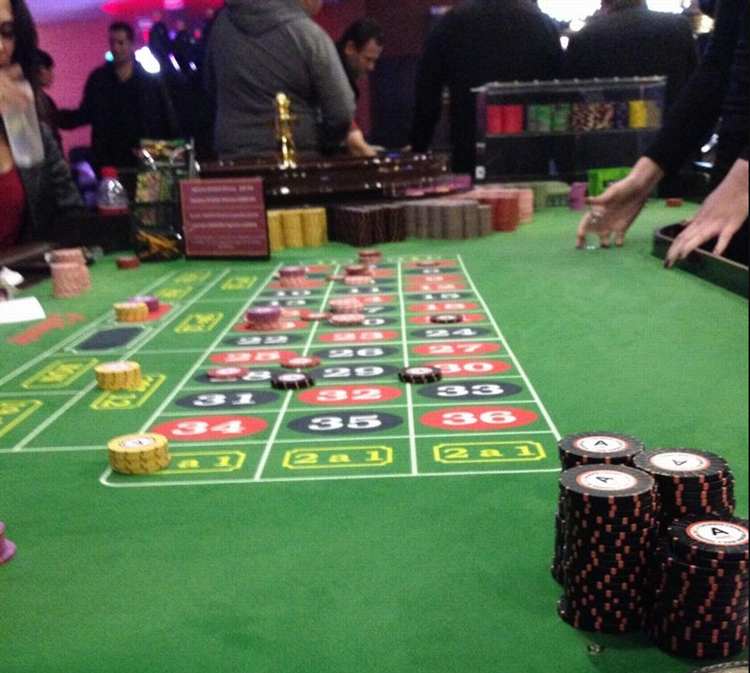
343. Proof
that there is live gambling inside Caliente Casino at
the Hipodromo Agua Caliente (Agua Caliente Racertrack).
c. 2013. (source)
|
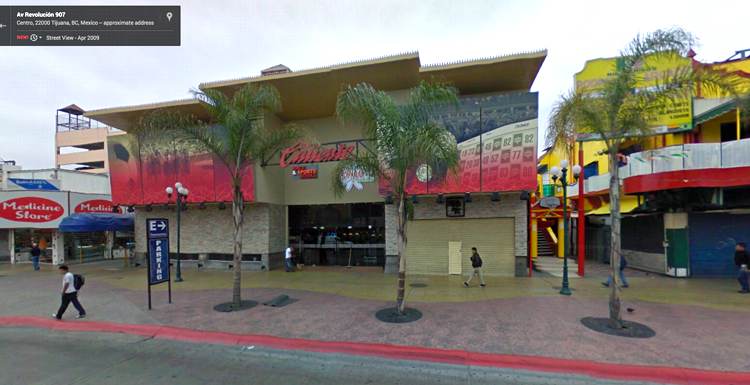
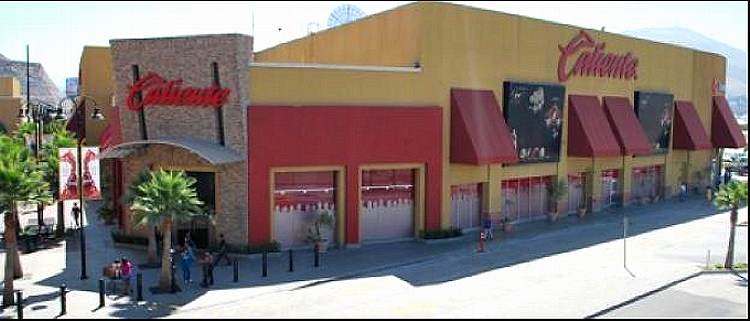
344. Another
Caliente Casino in Tijuana? At first, finding these
places confused me. And then I learned that the enterprise
has many "Caliente Casinos" spread across Mexico, about 20 inTijuana
alone. Each has sports book electronic terminals and gambling
machines. Click here
to read about it at the Company's home page. More here about the Caliente casinos.
The top-most one, photographed
in April 2009, is at Av Revolucion 907, near Carrillo Puerto
Y/o Tercera, about 2 miles from the largest Caliente Casino at
the "Hipodromo [Racetrack] Agua Caliente." The signs over
the entrance, above, read, in English!, "Caliente ... ... Race
and Sports Books. ... . . Bingo." (Source.)
The bottom pictured one is at
Blvd. Insurgentes #1815 Locales 1A-5A, Centro Comercial
Macroplaza Fracc. del R�o 3a. Etapa La mesa, 22235,
Tijuana (source).
|
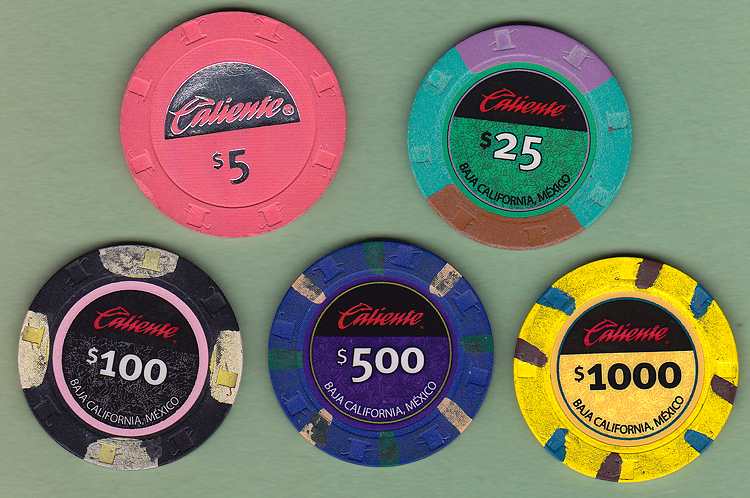
345. The first three chips were taken from illegal
(bribed officials) blackjack games at Caliente,
in 2014. The chips are in Mexican pesos,
even with the dollar sign! 100 pesos = $7.66
(March 2014). ... .... The last two chips (500
and 1000, also both in pesos) were sent to me in October 2014.
|


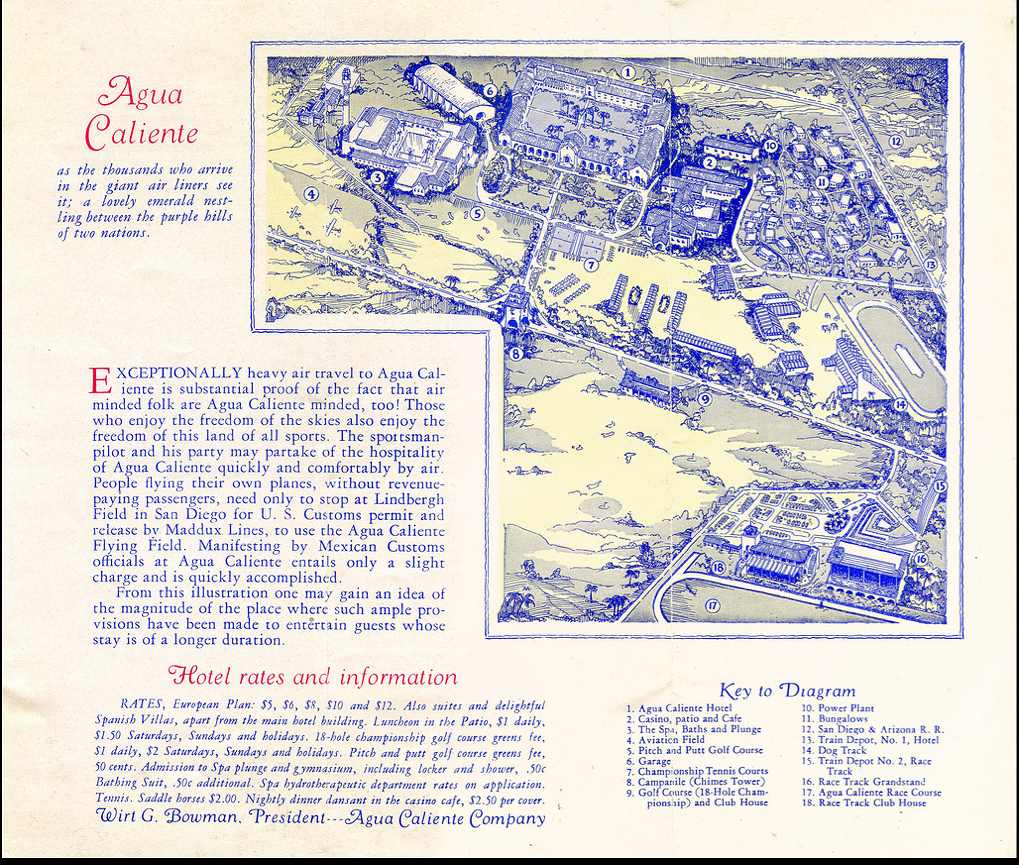
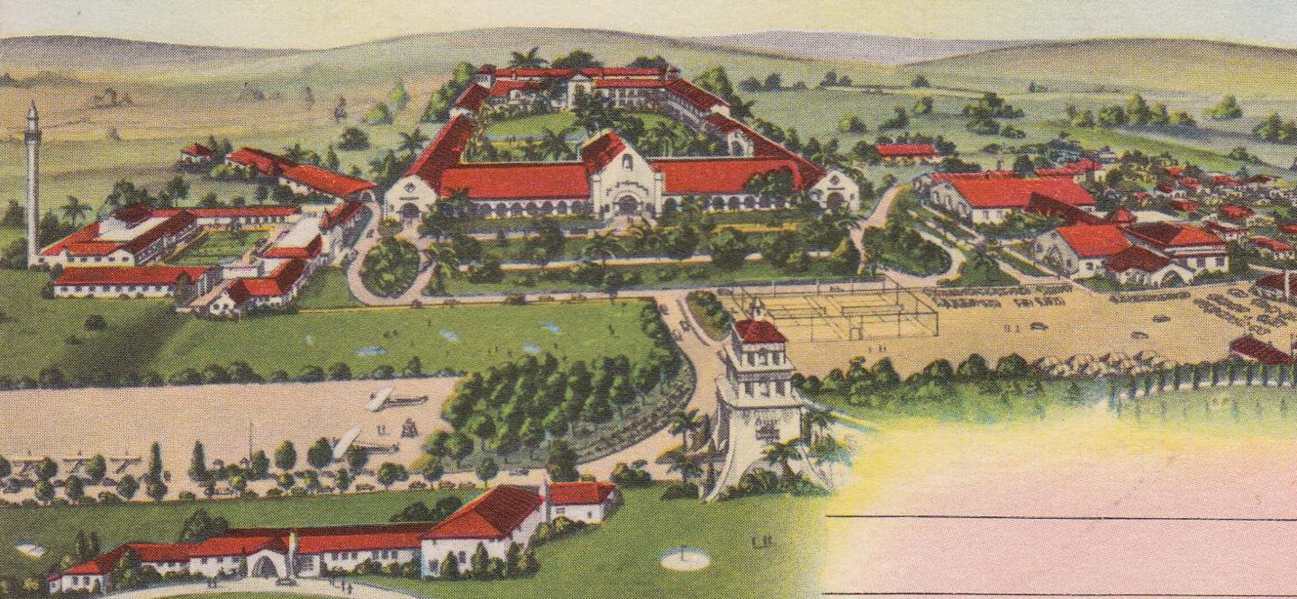
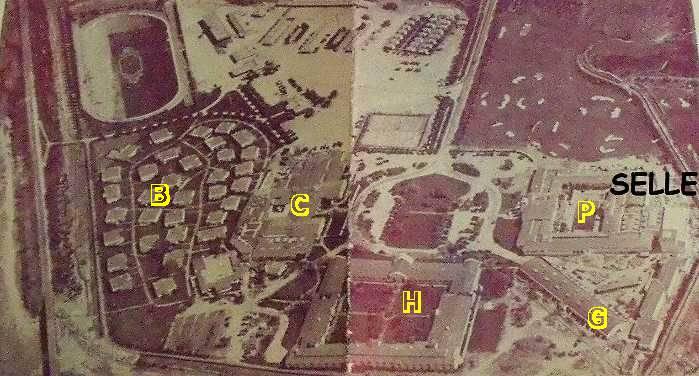
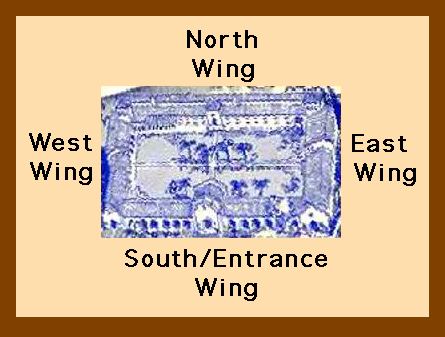
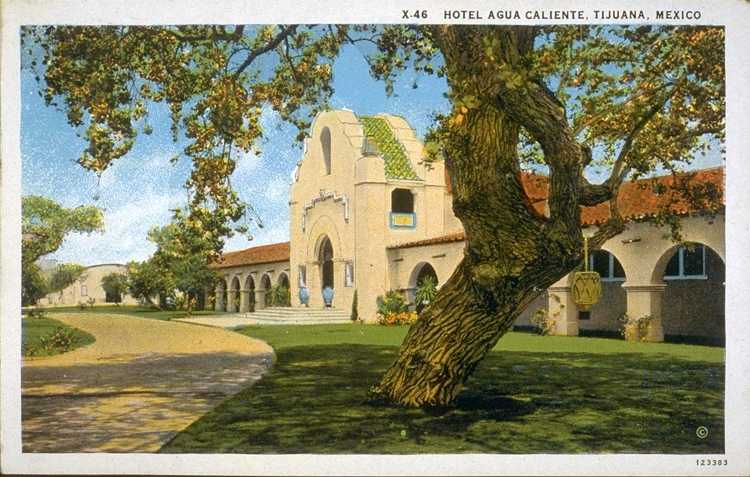
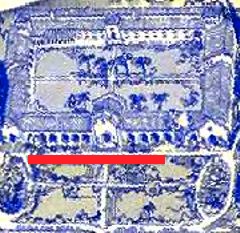
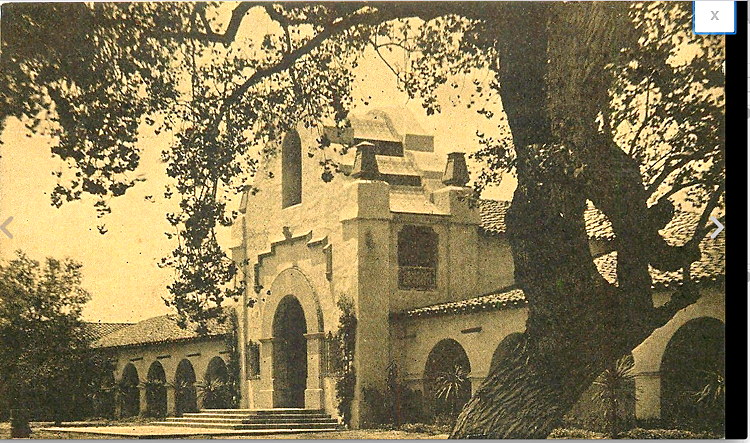
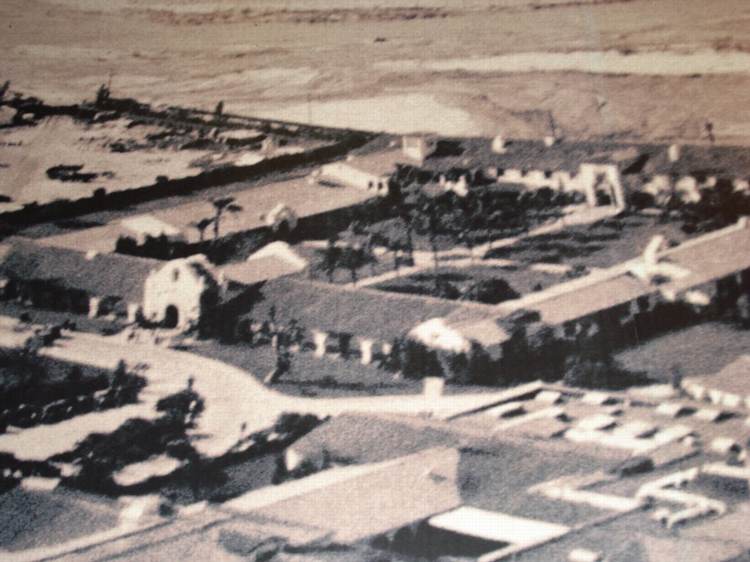
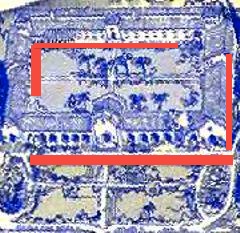
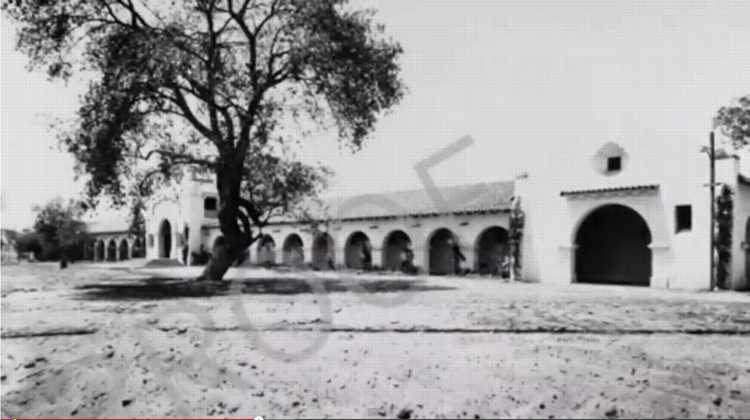
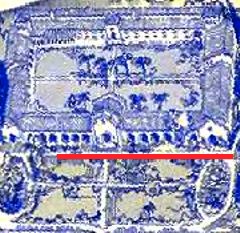
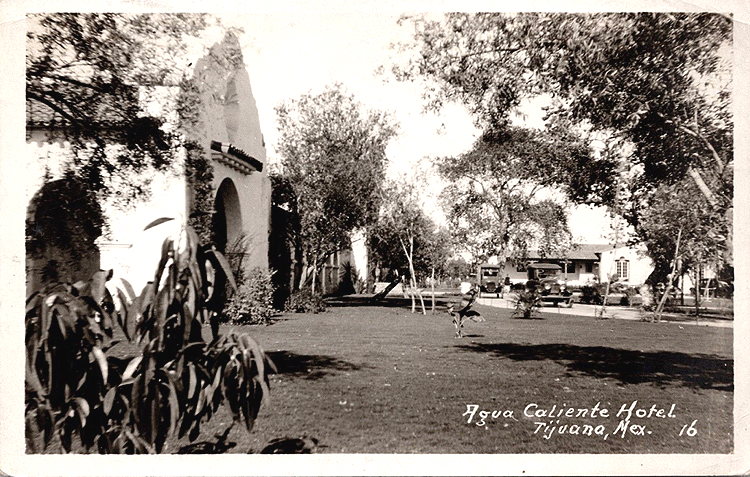
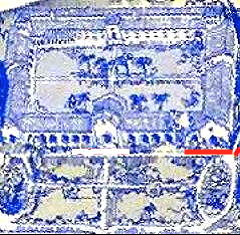
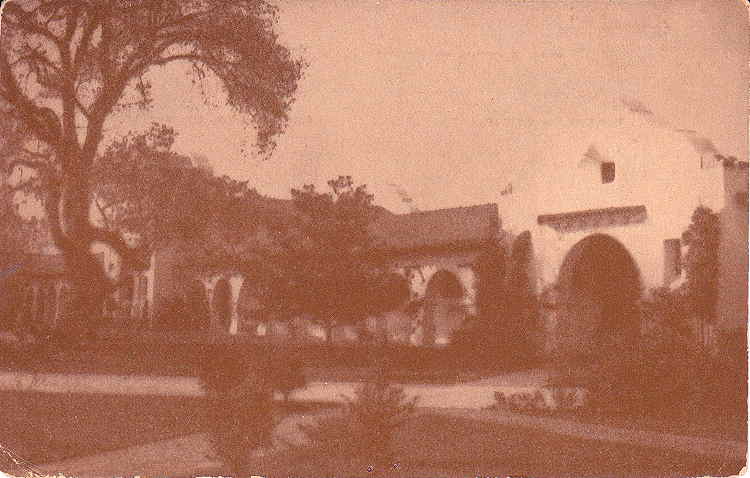
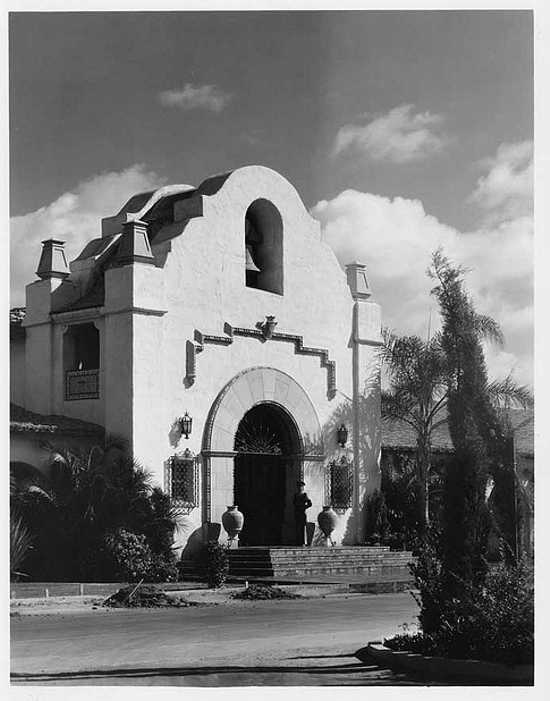
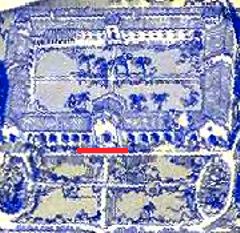
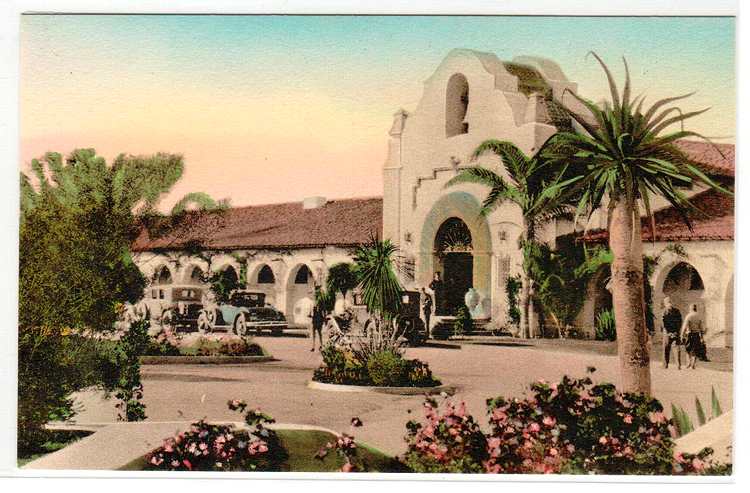
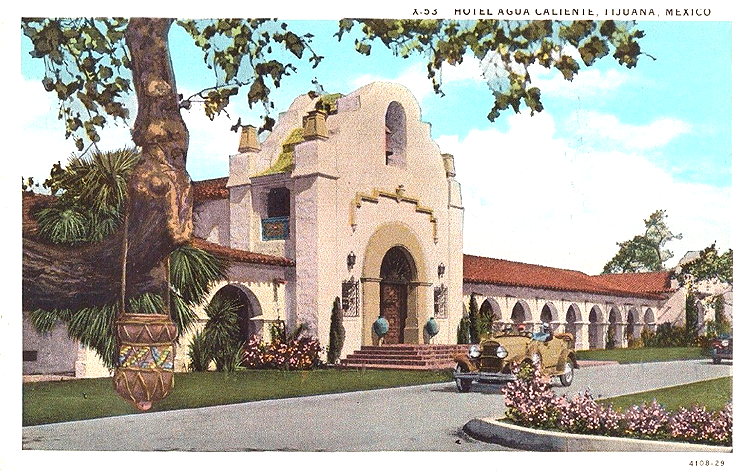
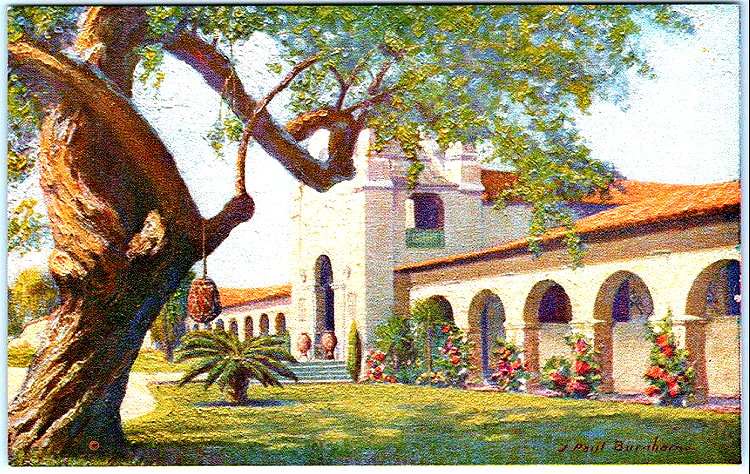
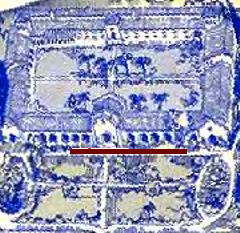
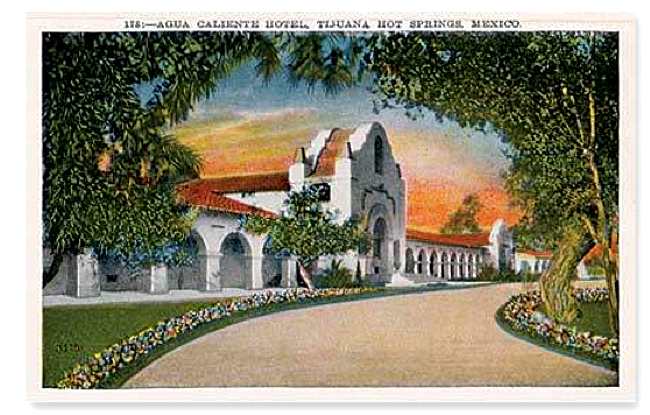
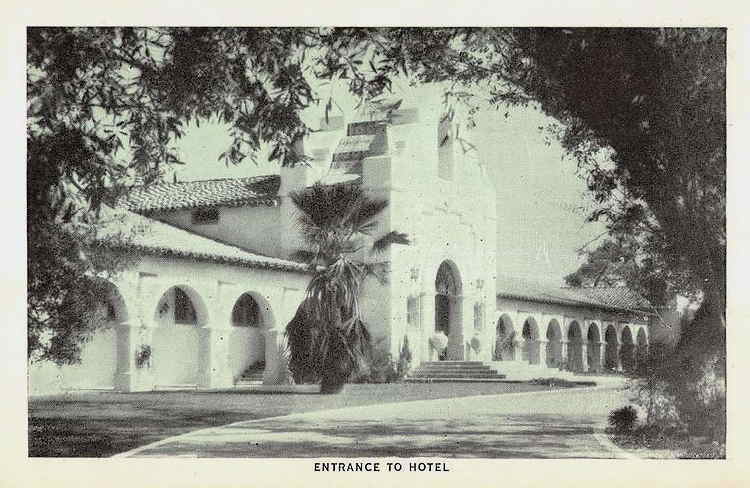
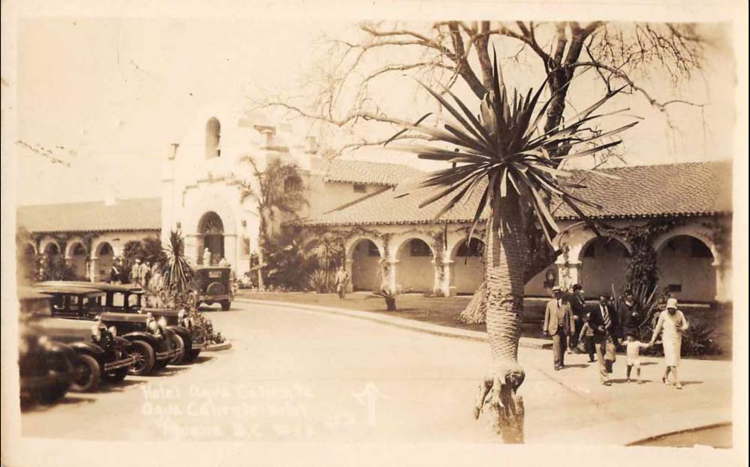
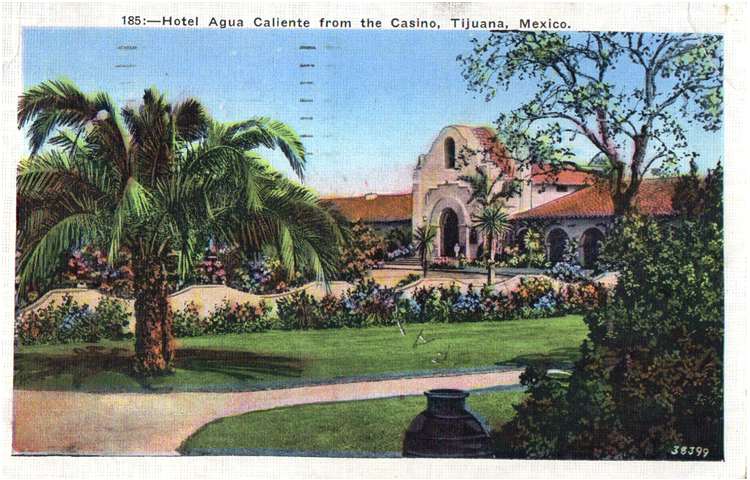
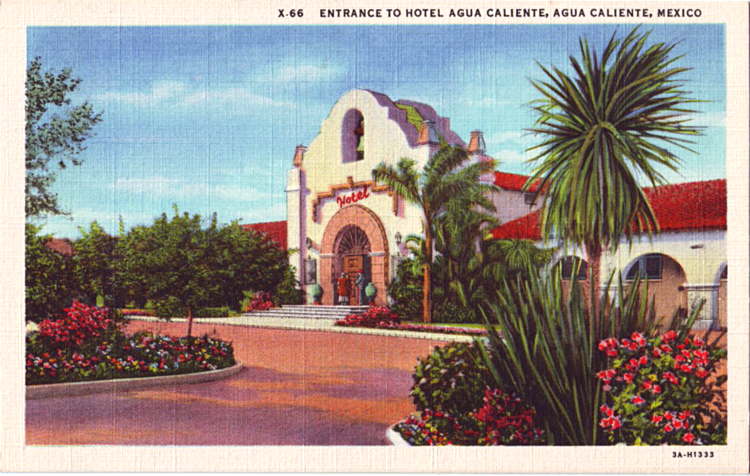
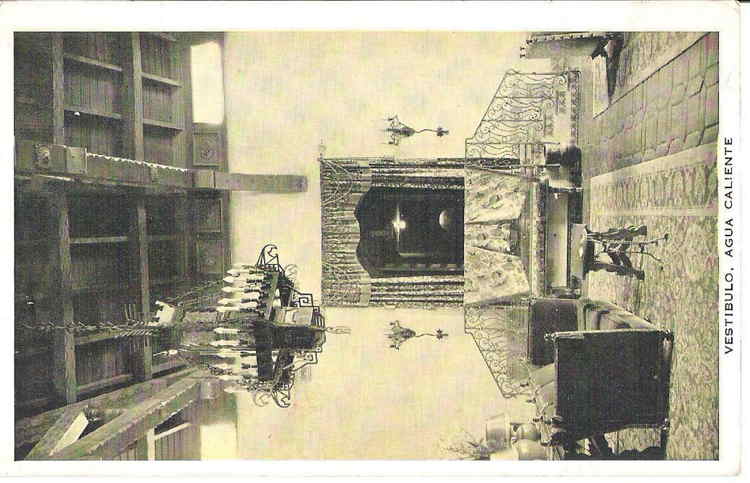
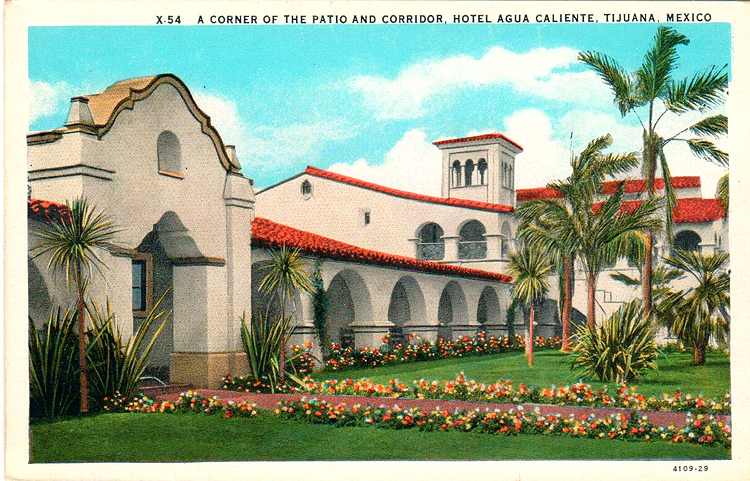
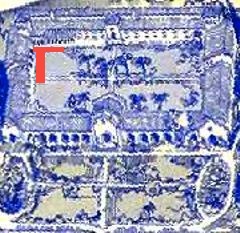
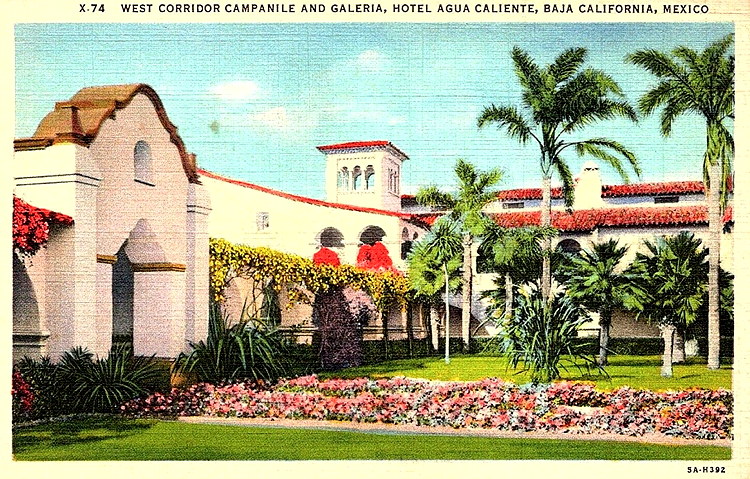
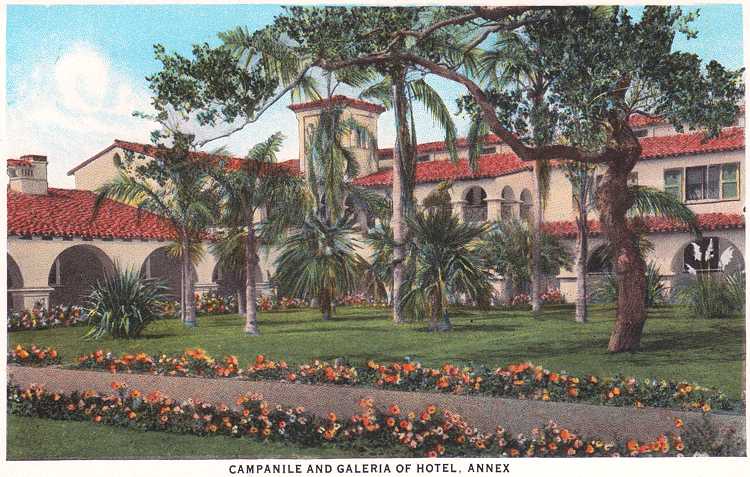
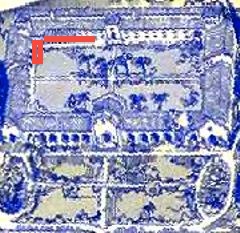
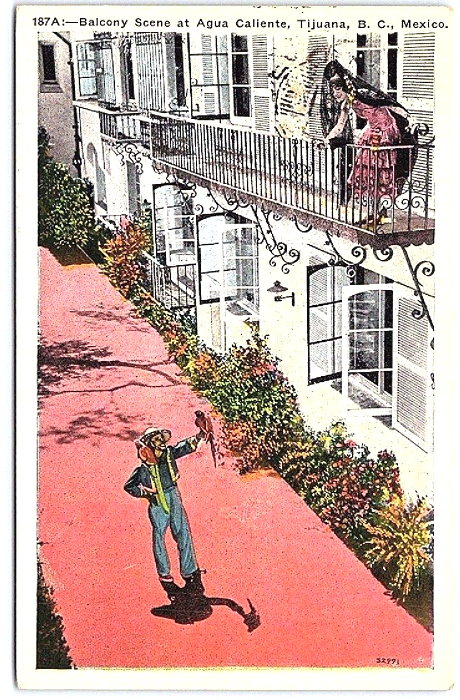
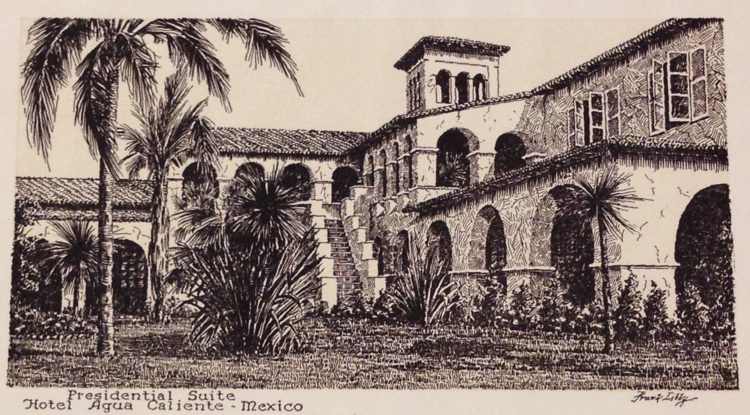
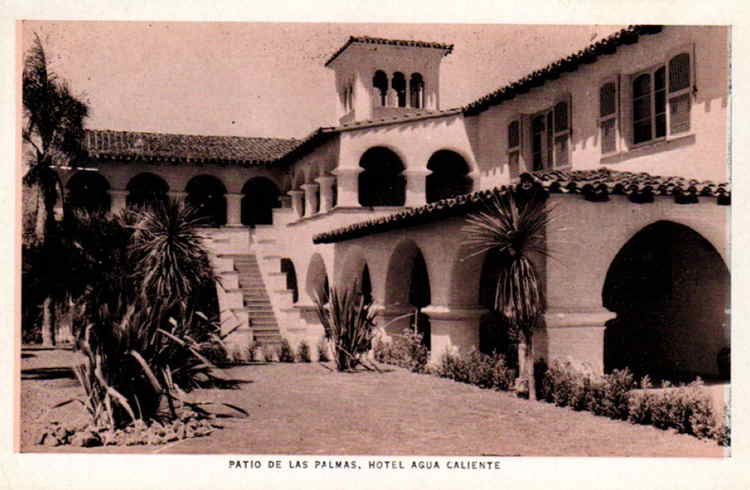
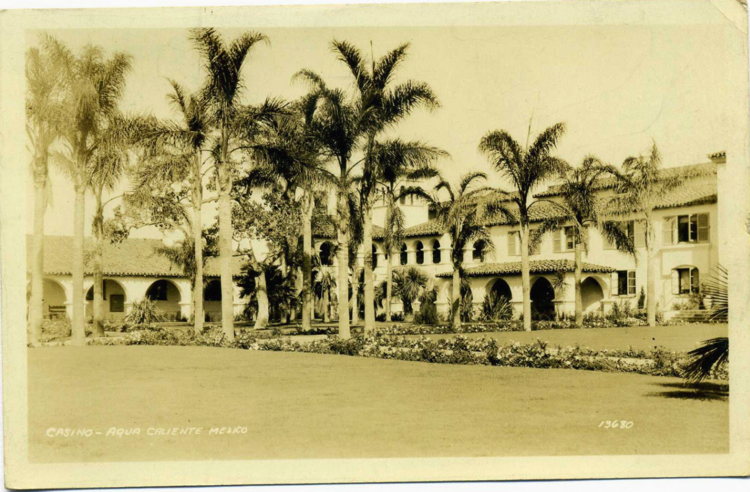
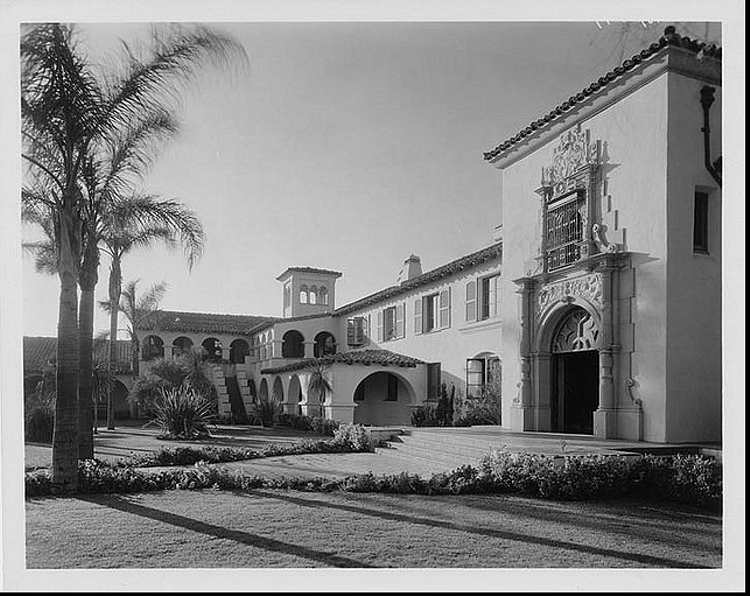
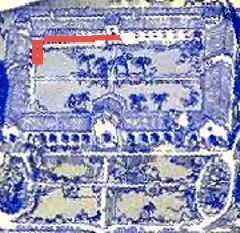
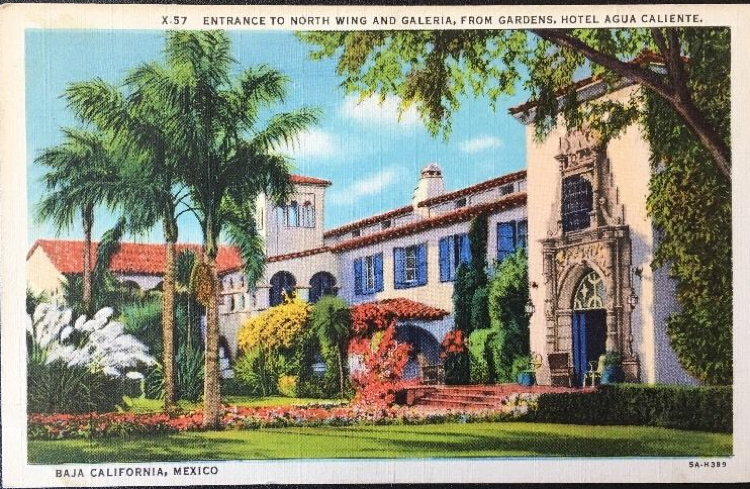
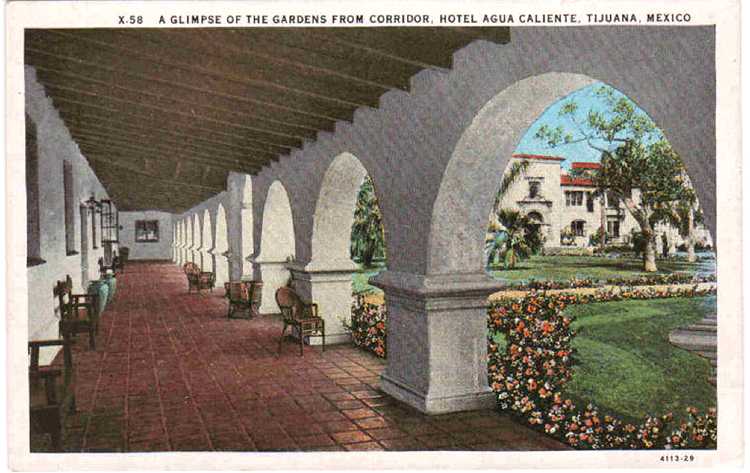
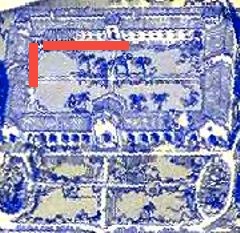
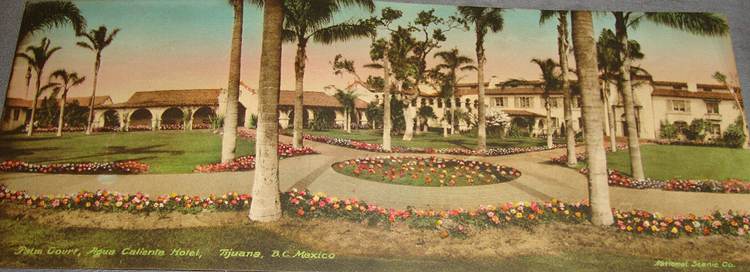
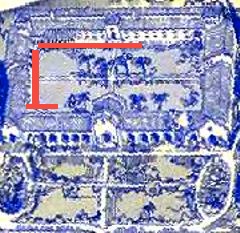
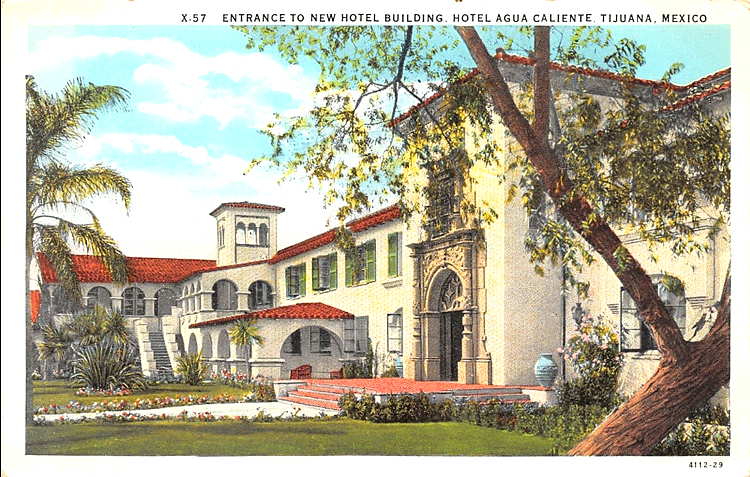
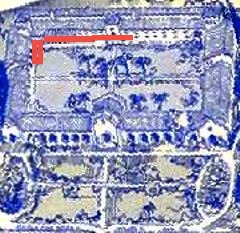
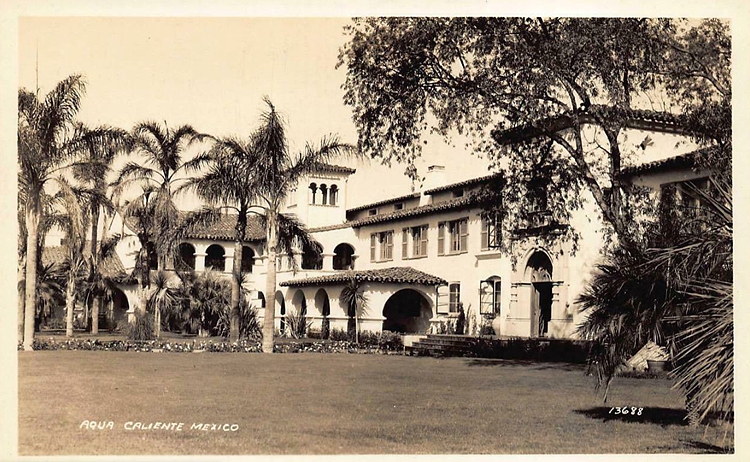
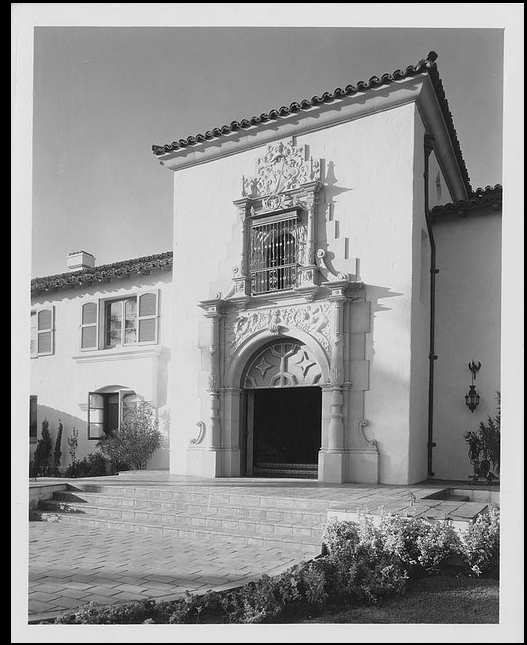
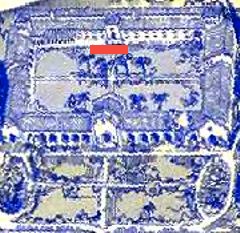
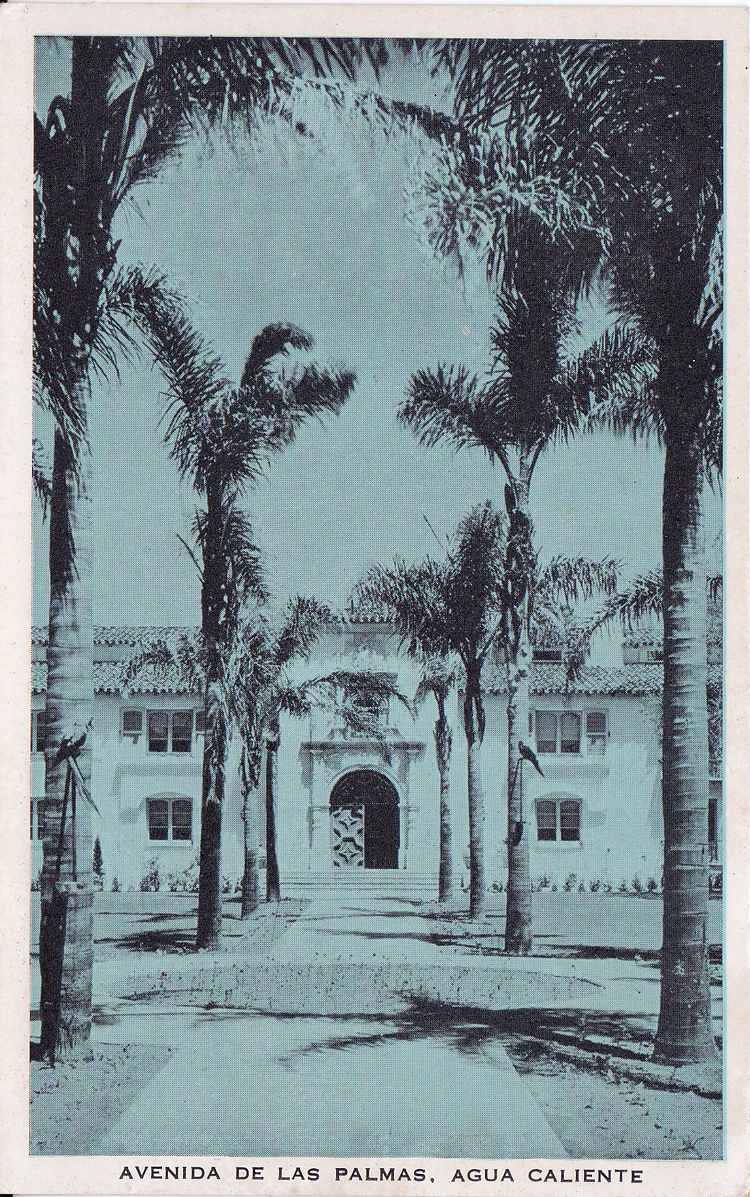
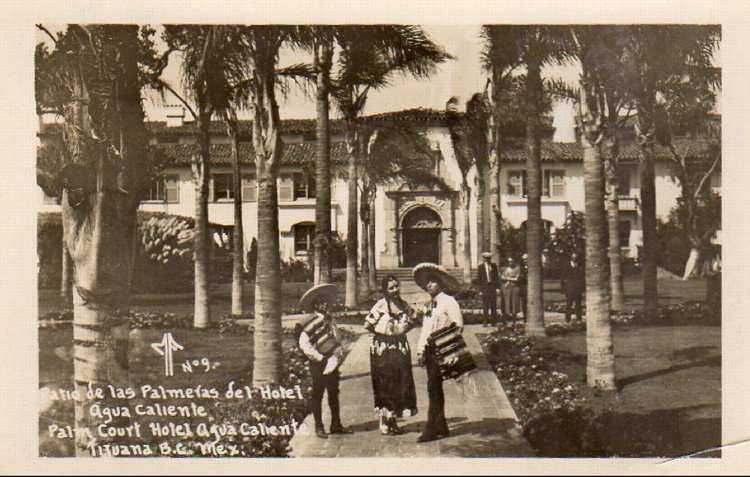
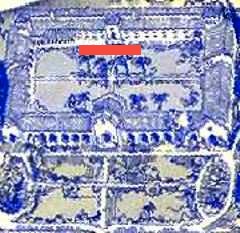
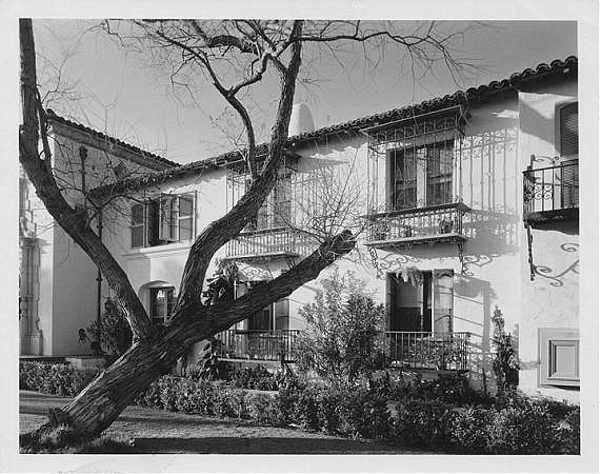
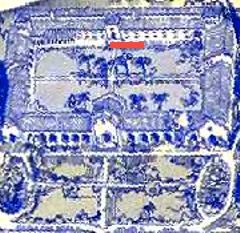
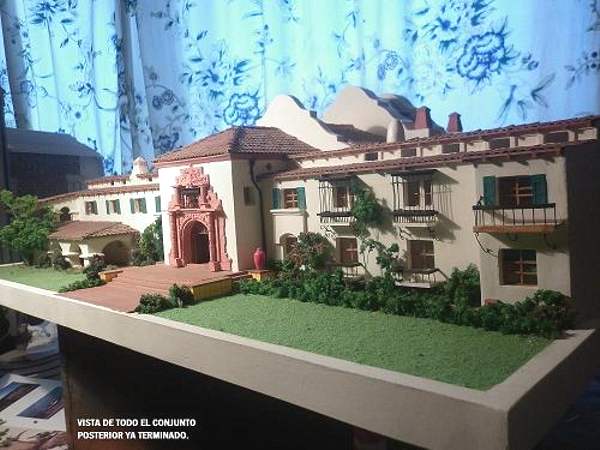
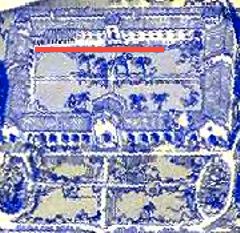
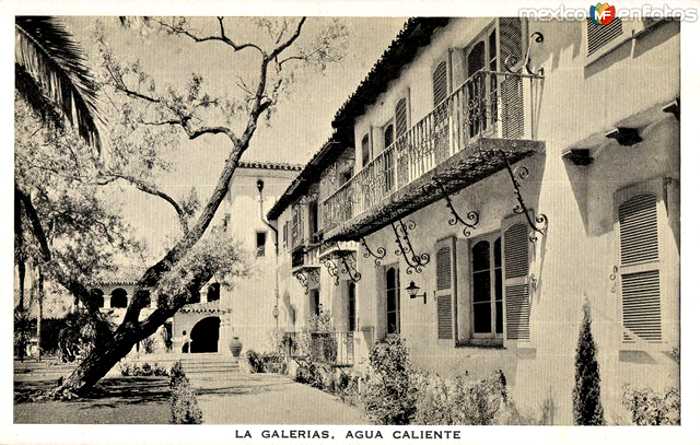
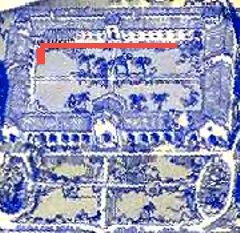
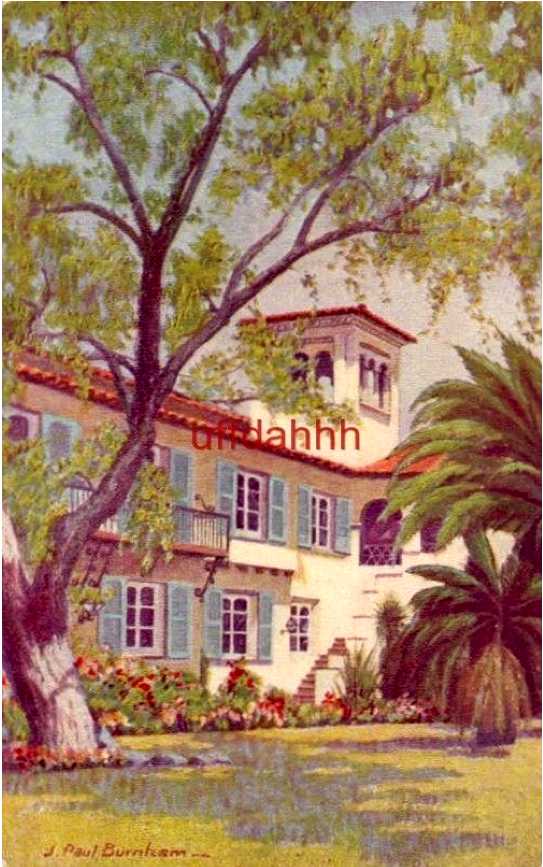
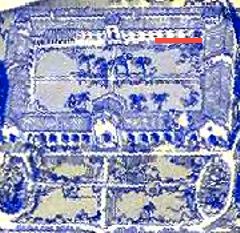
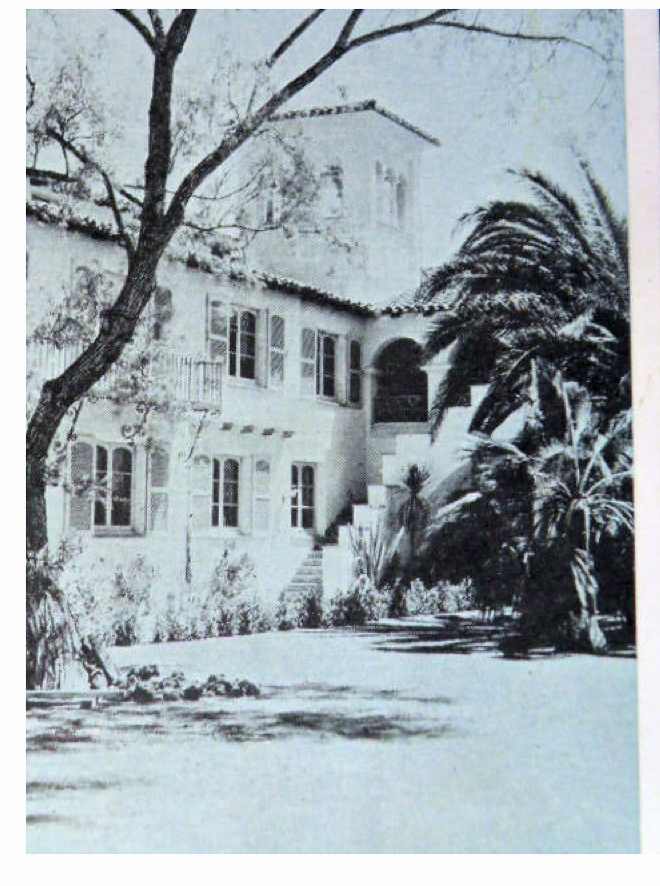
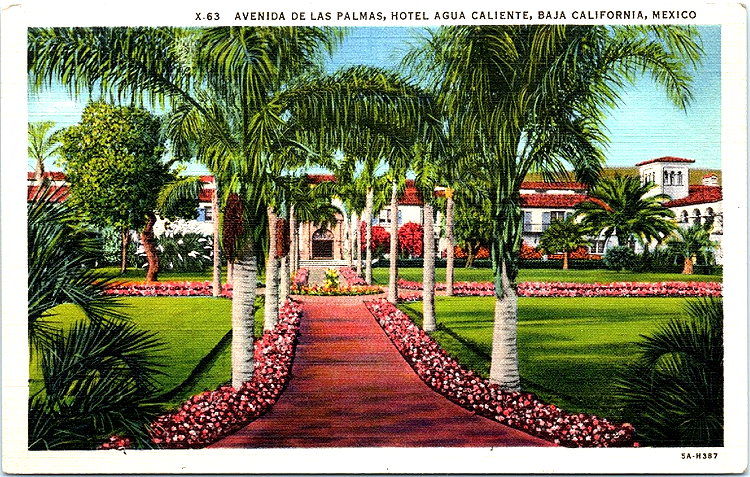
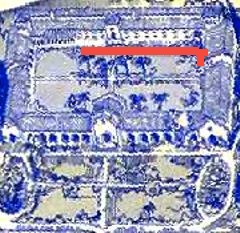
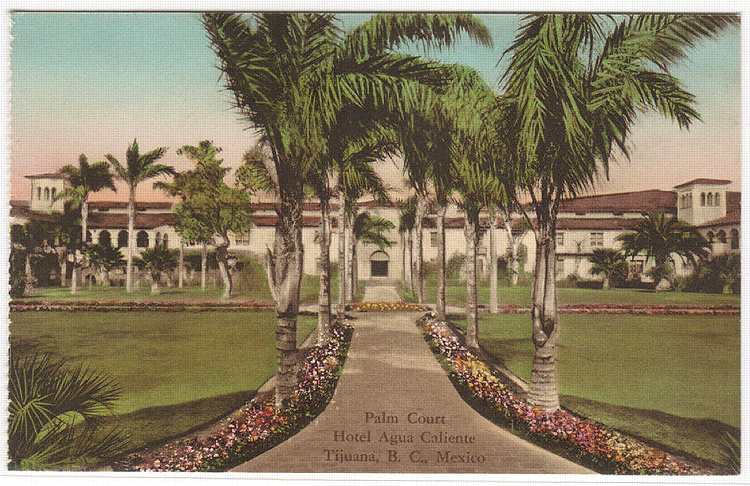
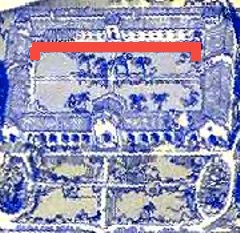
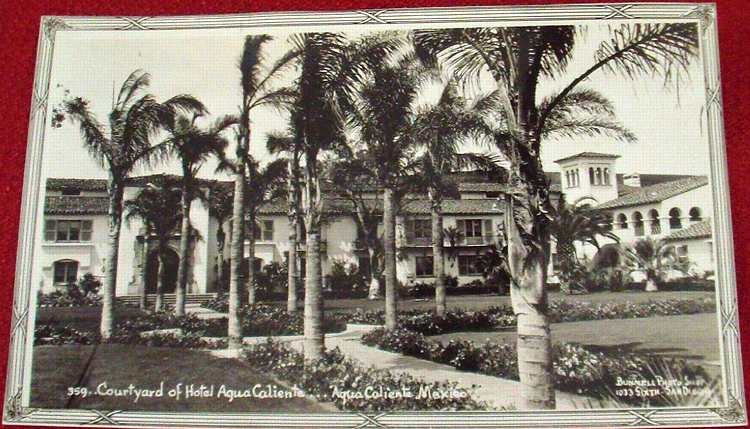
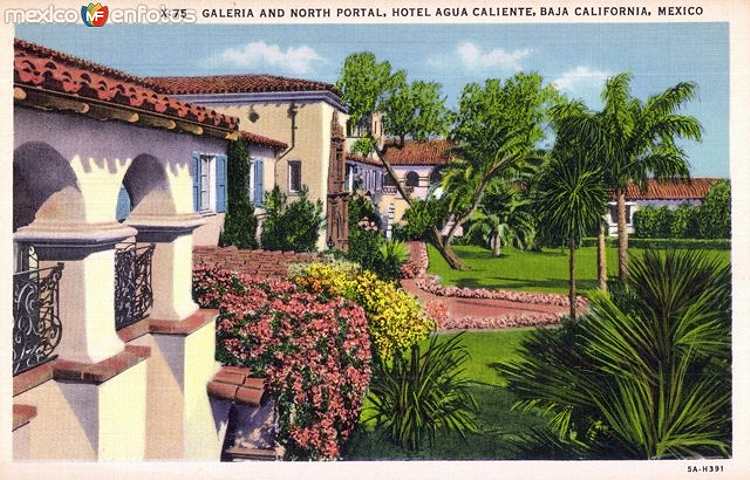
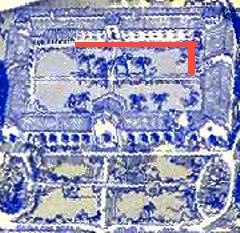
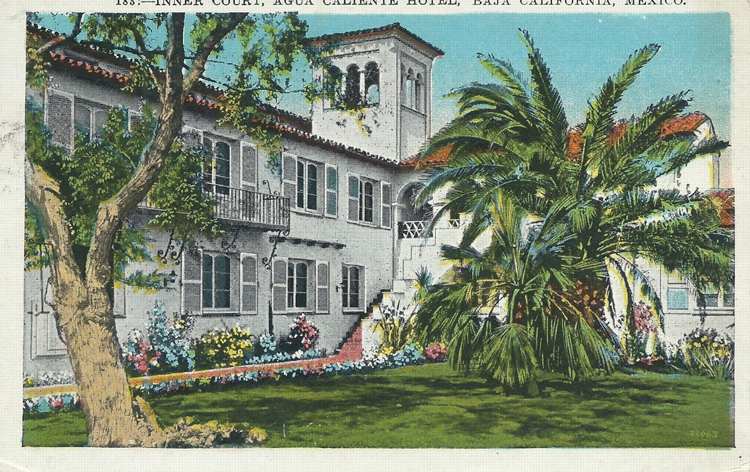
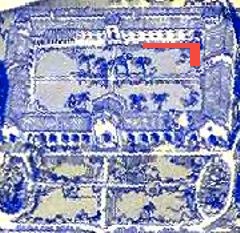
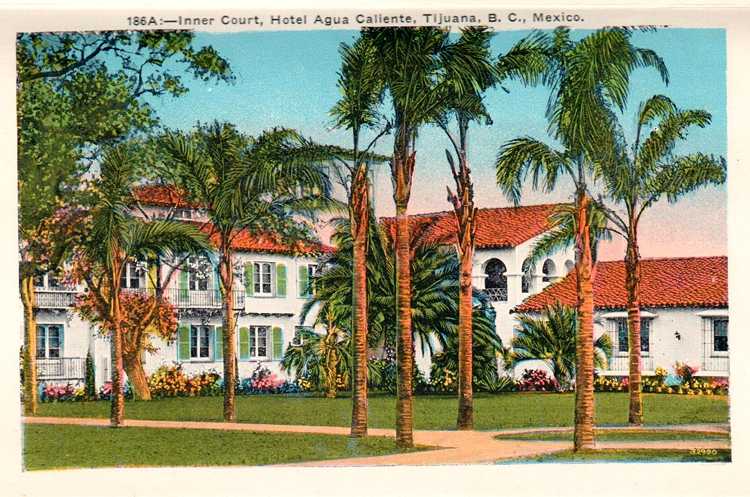
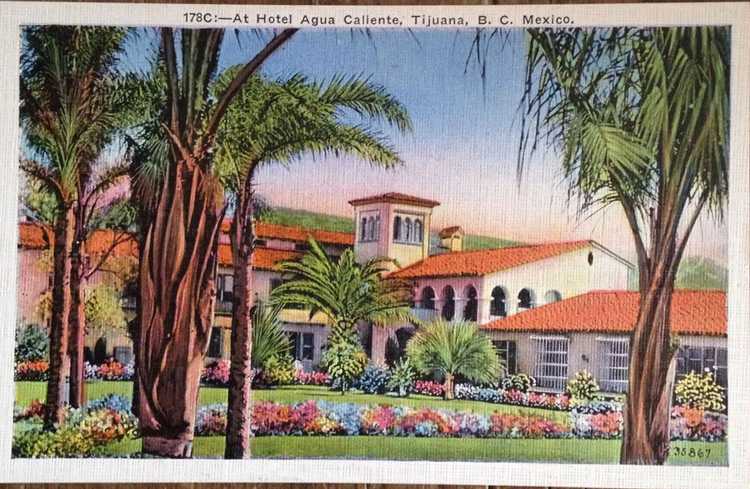
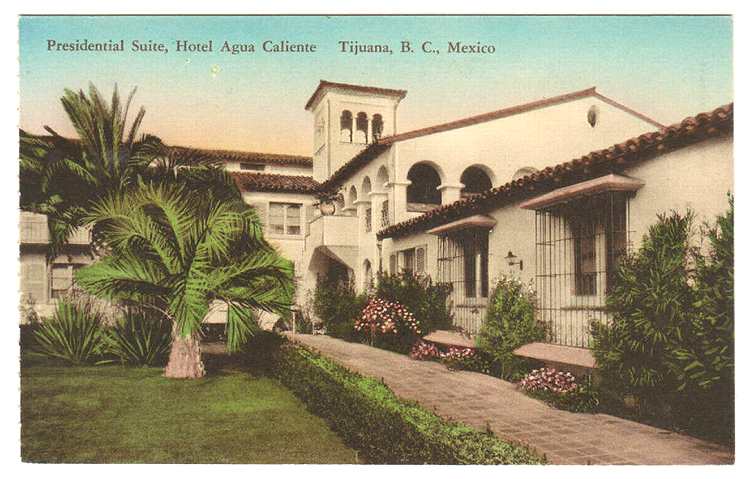
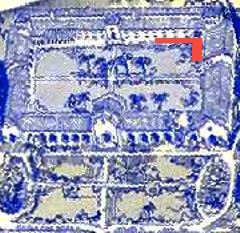
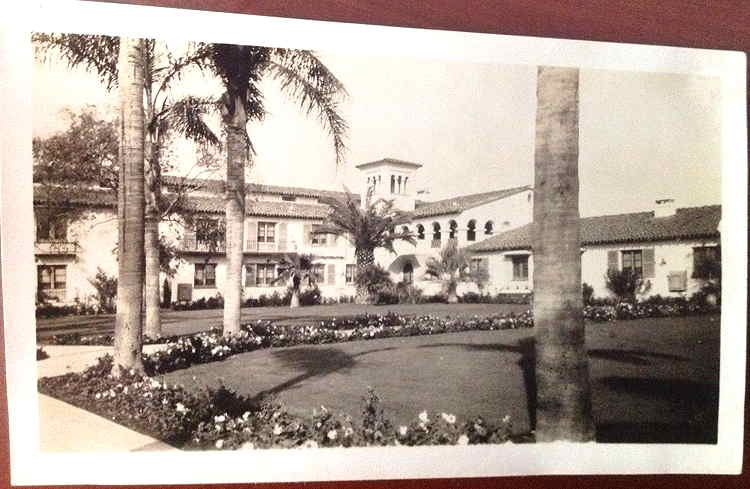

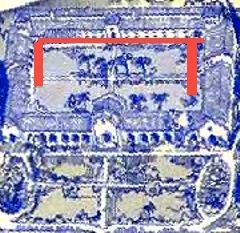
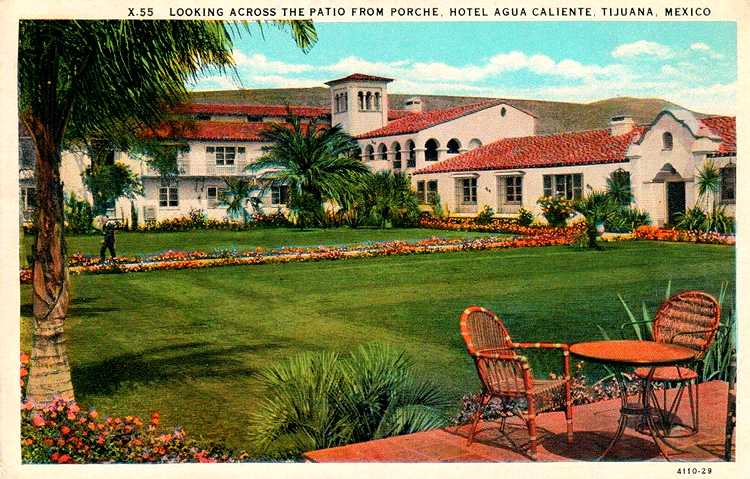
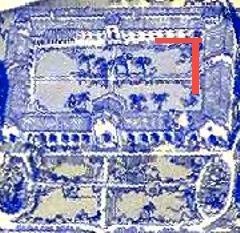
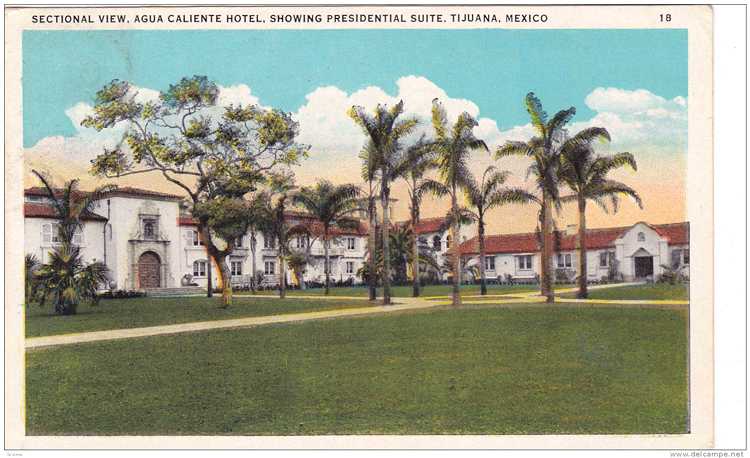
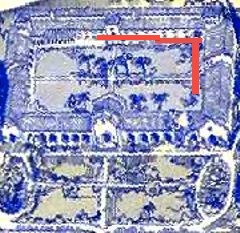
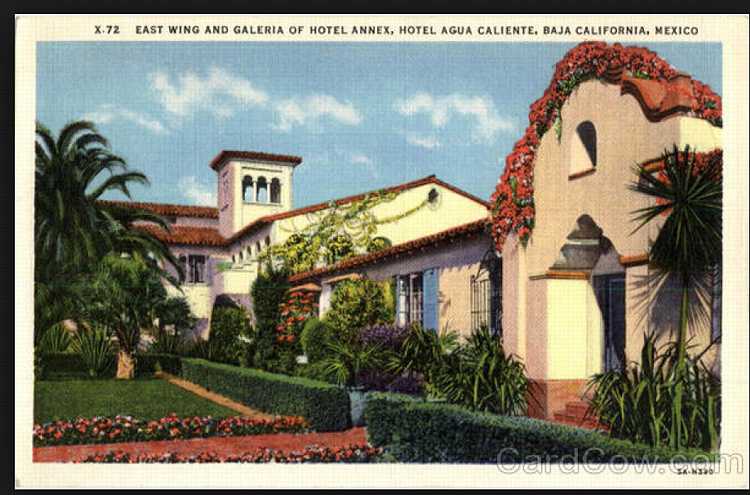
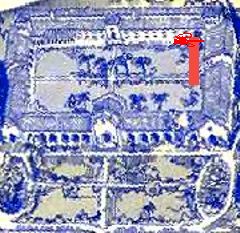
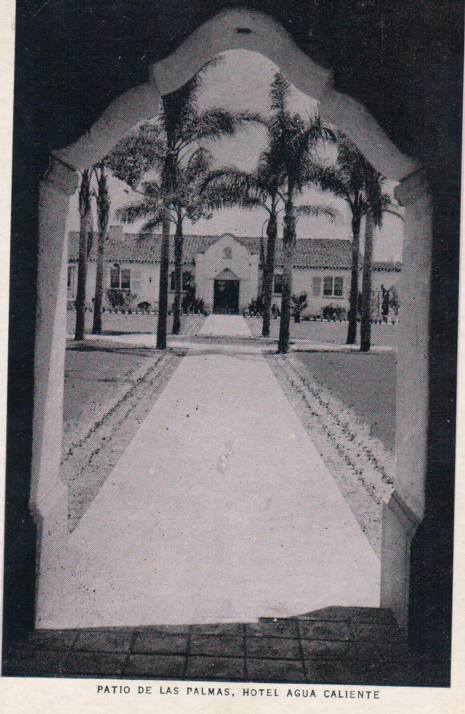
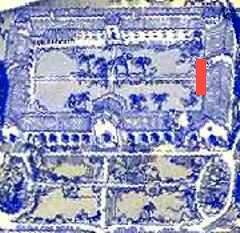
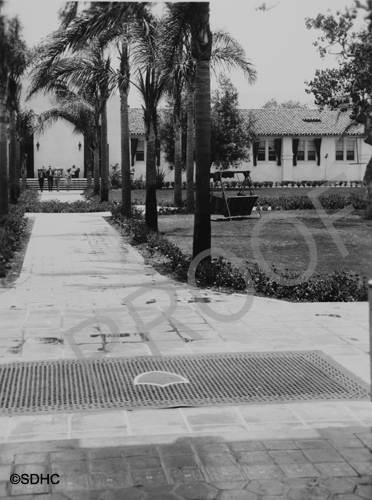
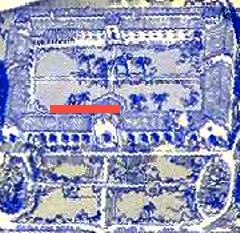
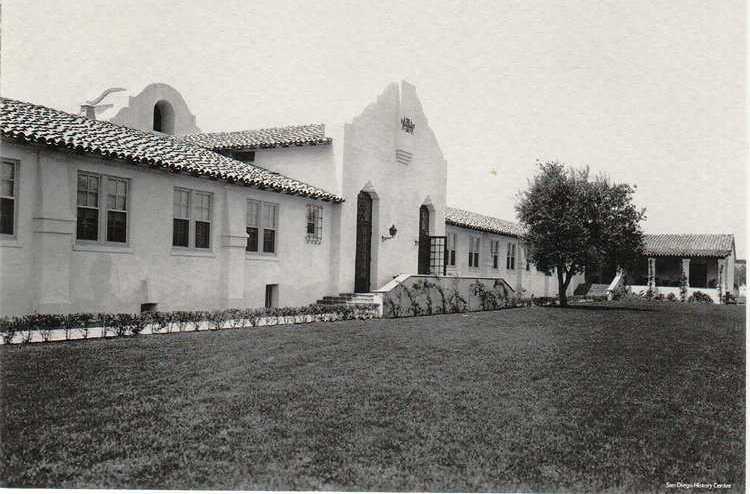 136.
SOUTH WING, COURTYARD SIDE. Early
picture of the Hotel. Note the rudimentary start
of the West Wing in the distance. It would be
completed later. Also note that the Palms courtyard
with the Avenue of Palms walkway had not yet been built.
136.
SOUTH WING, COURTYARD SIDE. Early
picture of the Hotel. Note the rudimentary start
of the West Wing in the distance. It would be
completed later. Also note that the Palms courtyard
with the Avenue of Palms walkway had not yet been built.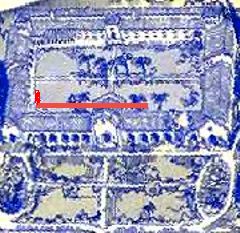
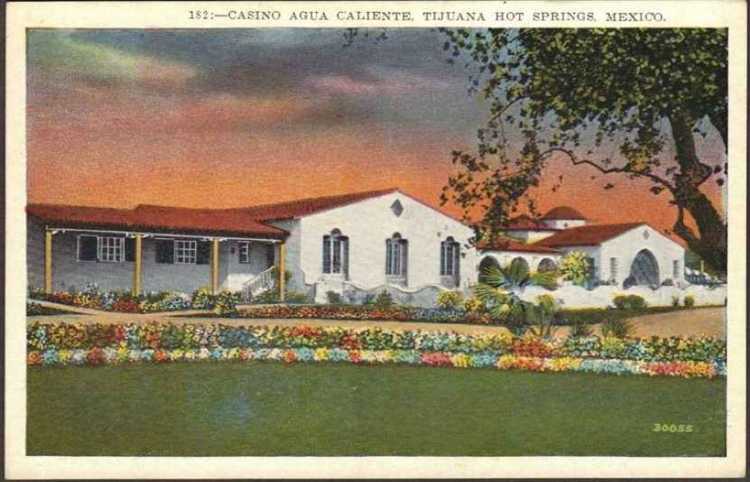
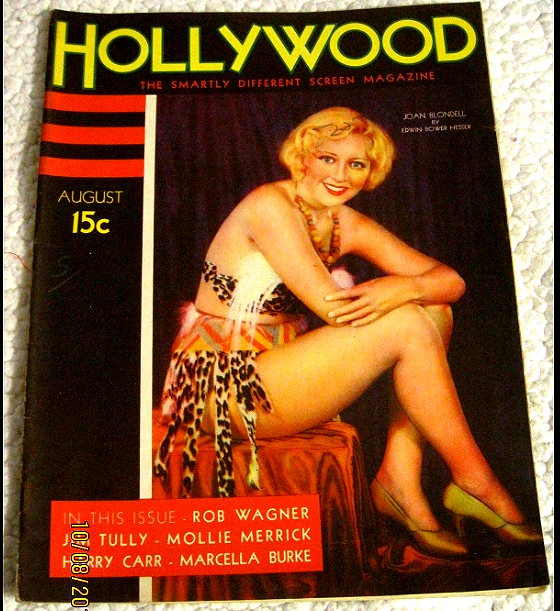
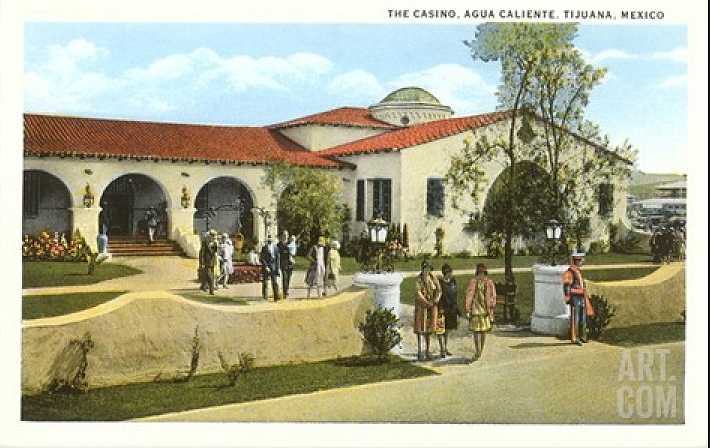
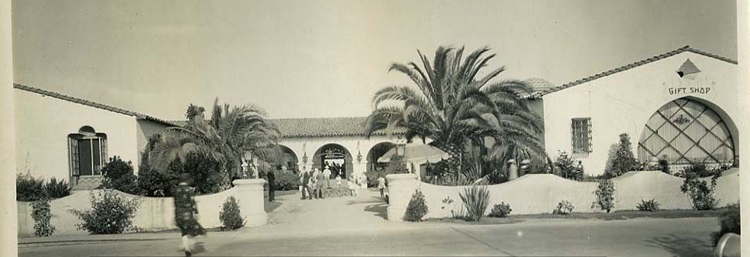
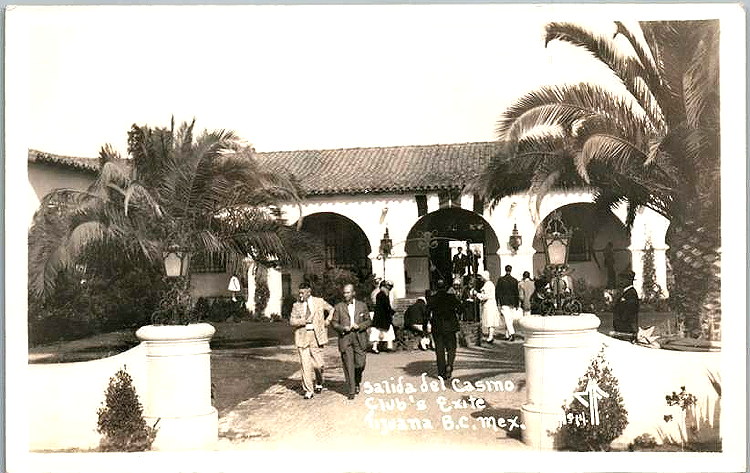
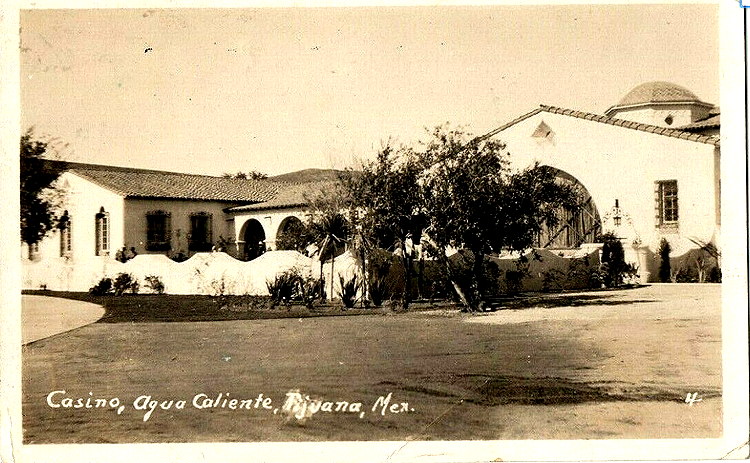
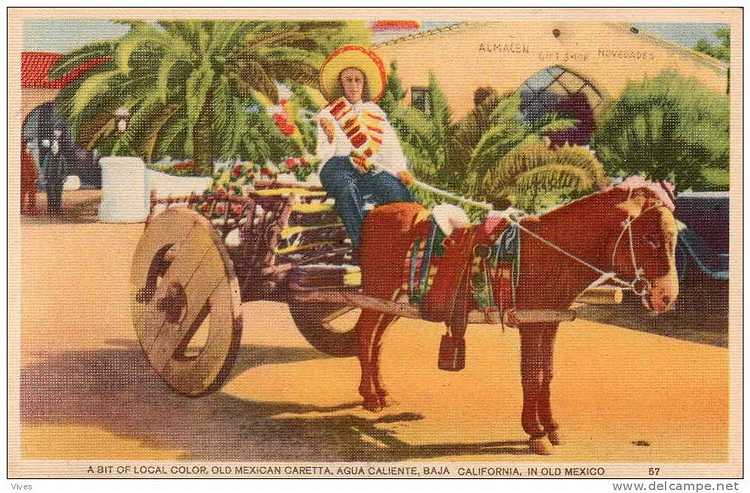
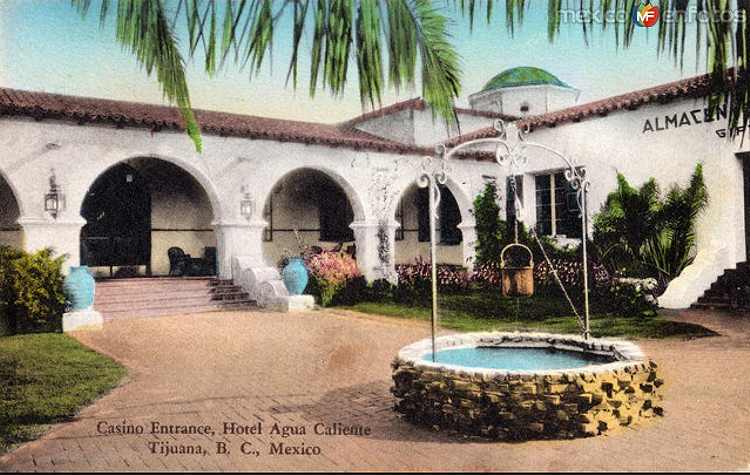
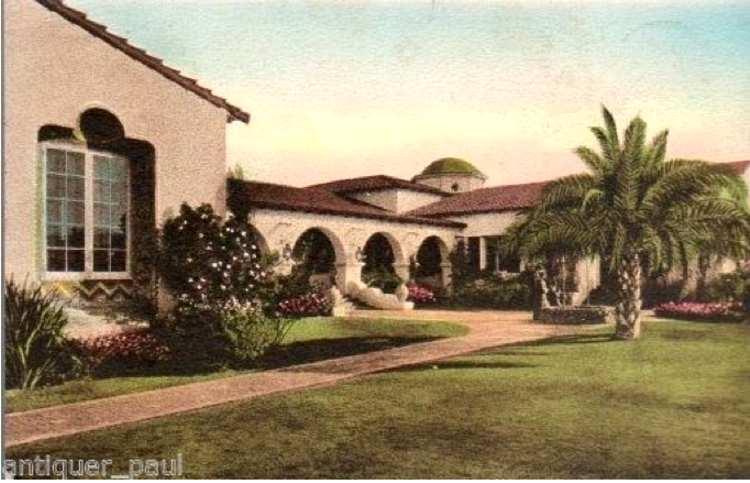
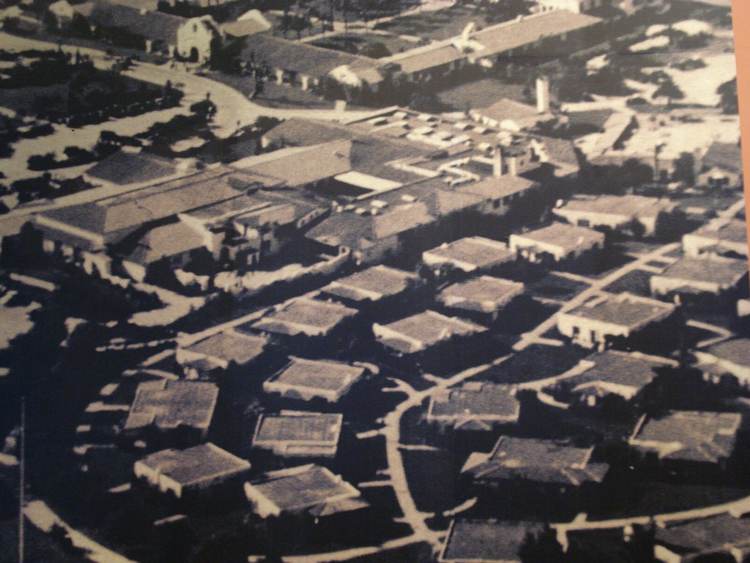
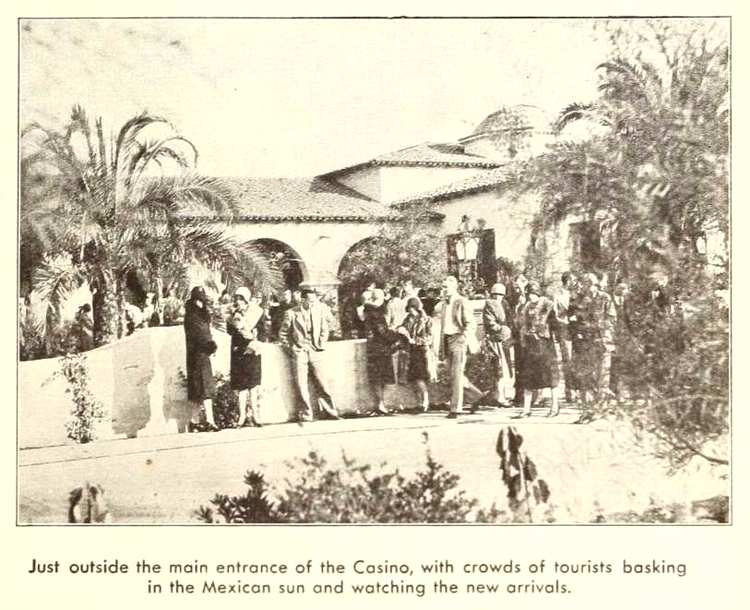
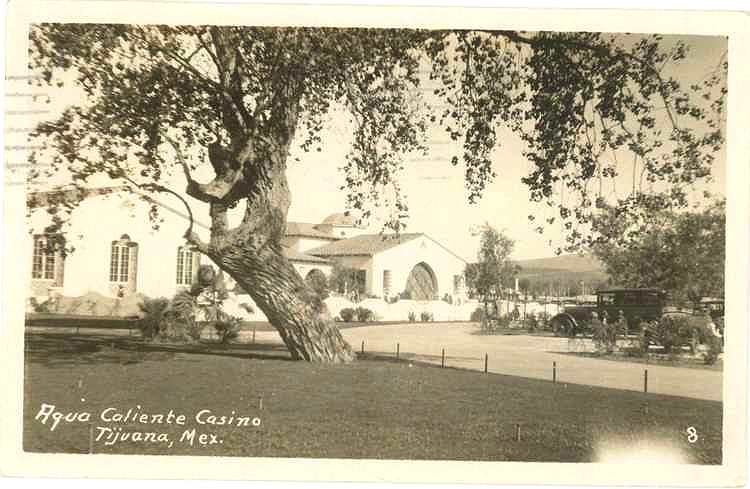
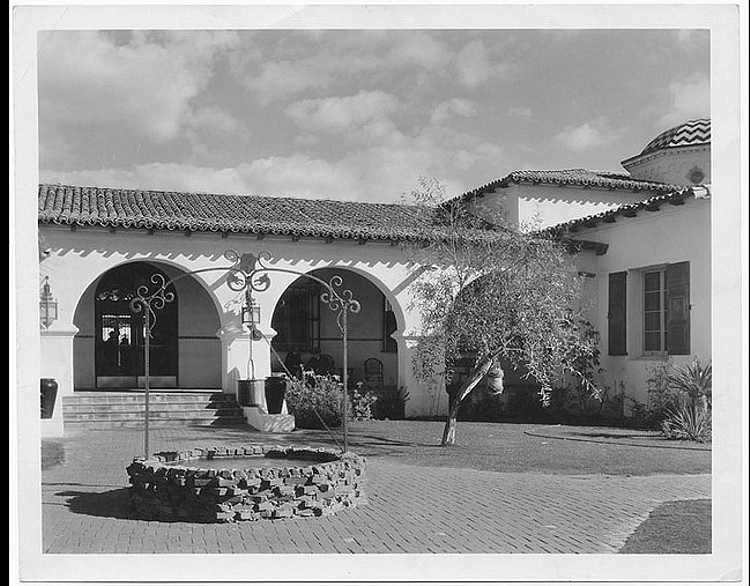
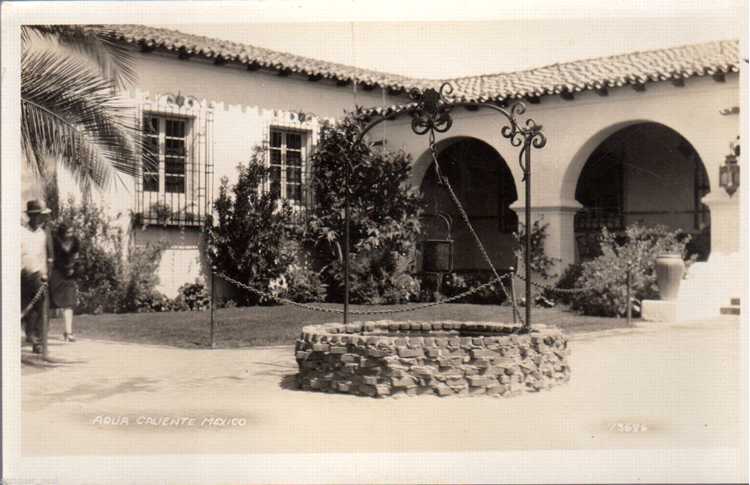
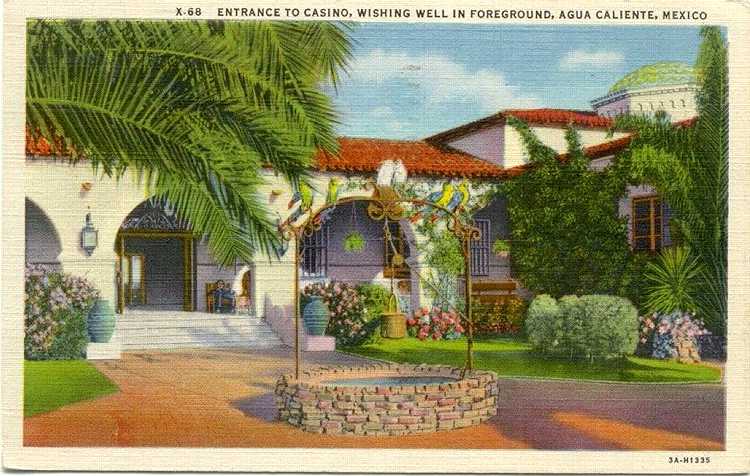
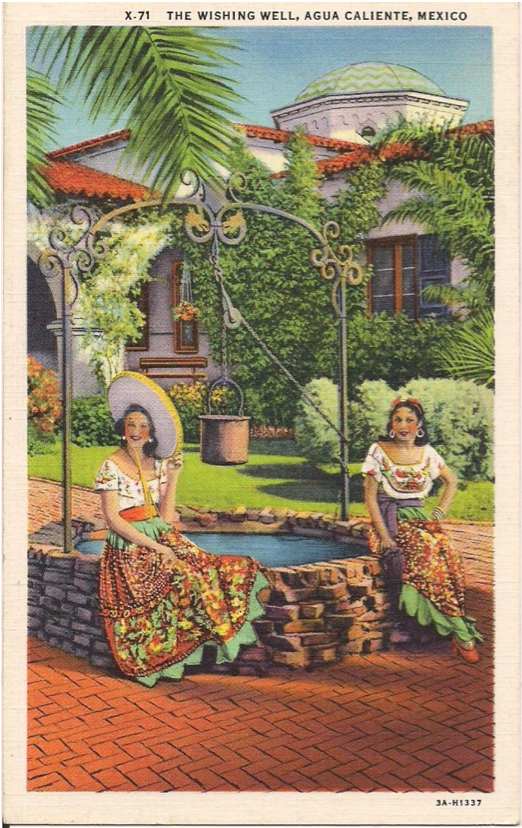
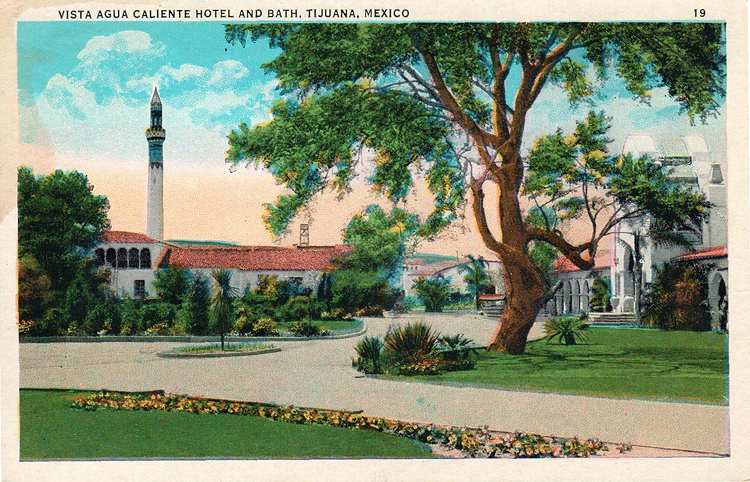
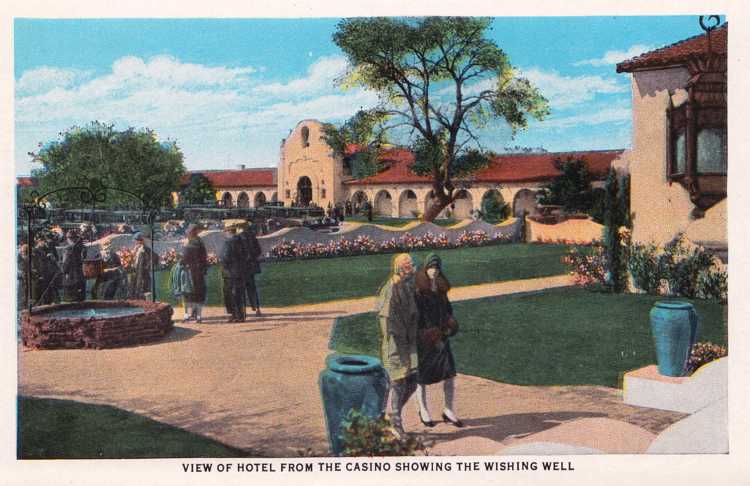 213. I am particularly fond
of this rare postcard, mainly for the perspective
it sheds on the resort
complex. Look at the two postcards near
the top of
213. I am particularly fond
of this rare postcard, mainly for the perspective
it sheds on the resort
complex. Look at the two postcards near
the top of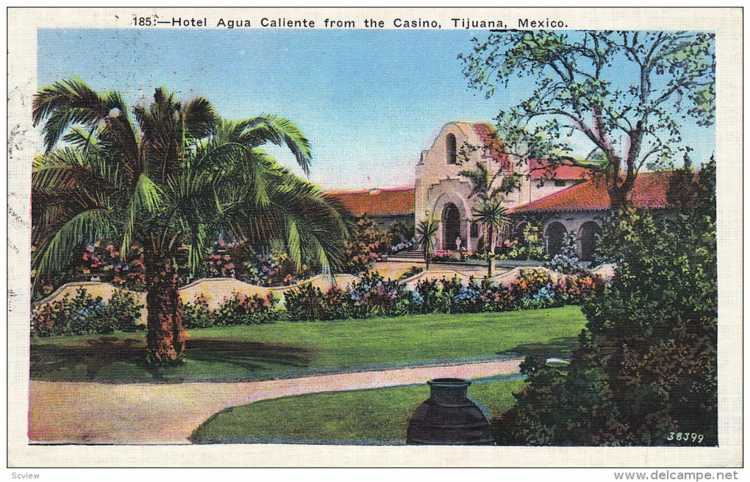
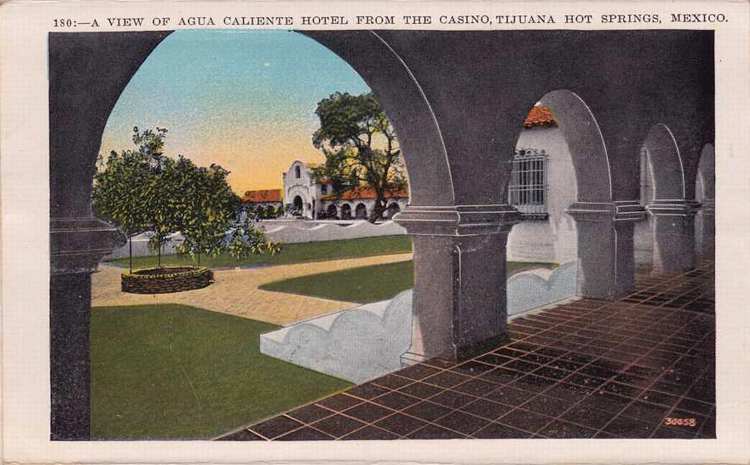
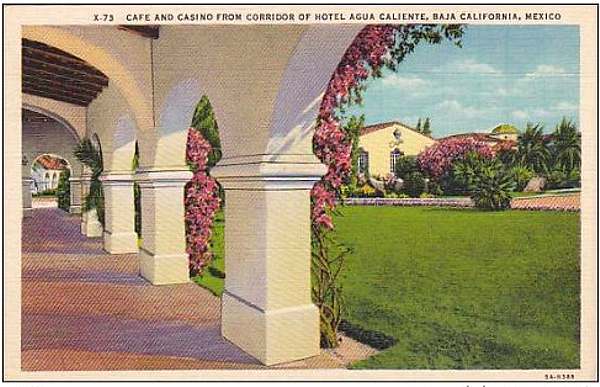
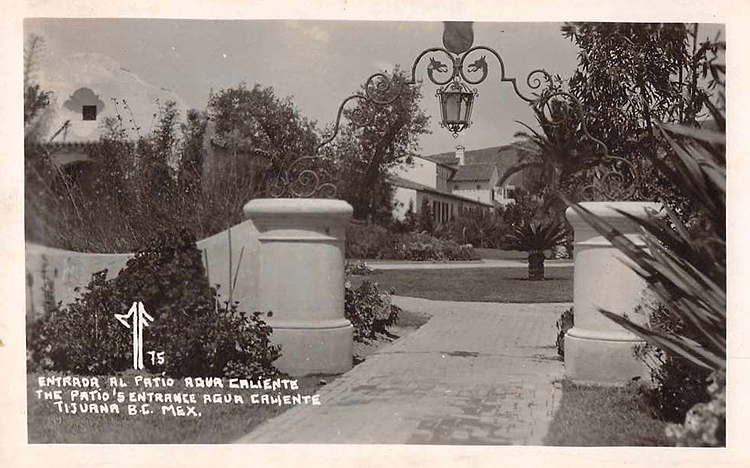
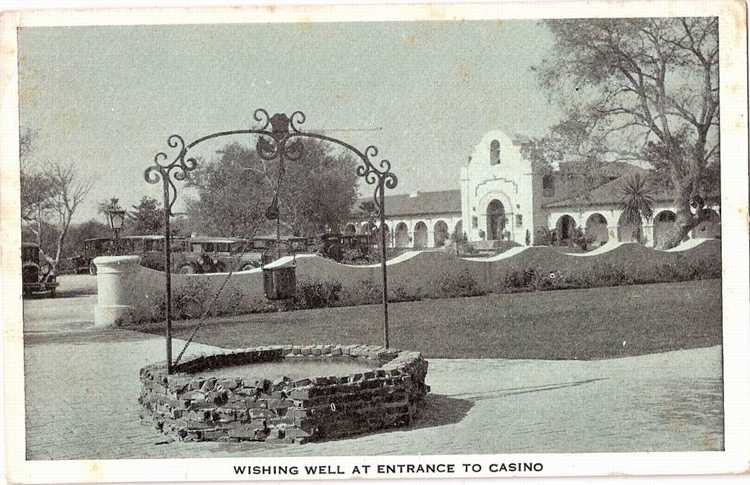
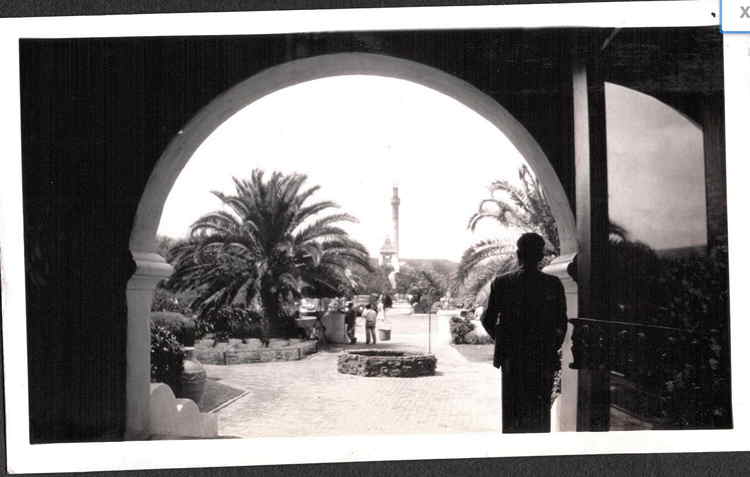
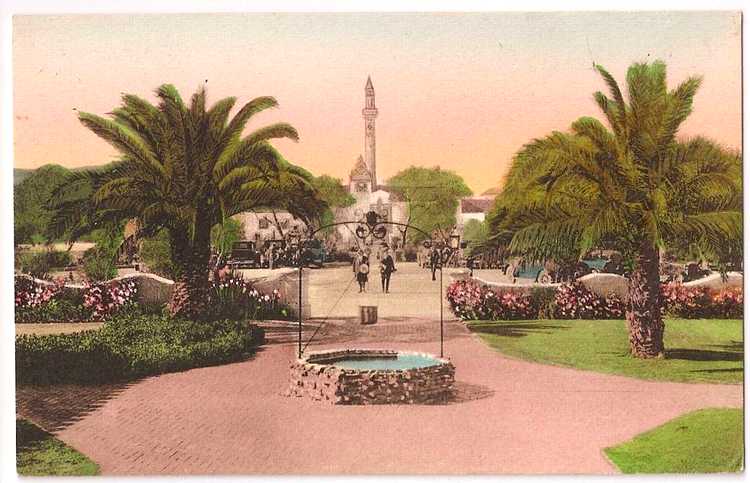
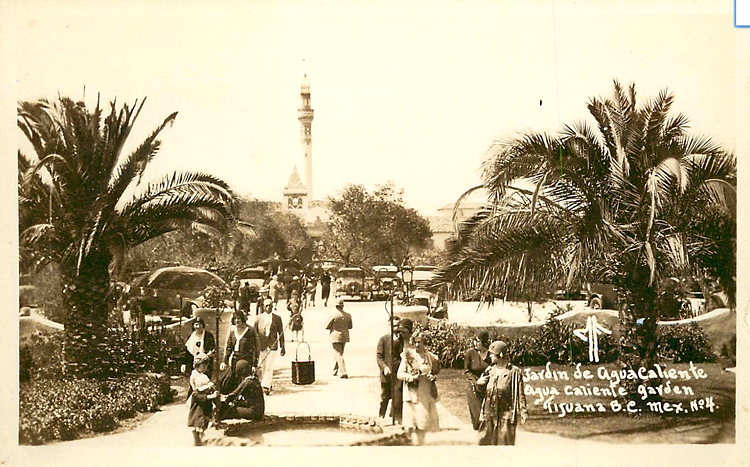
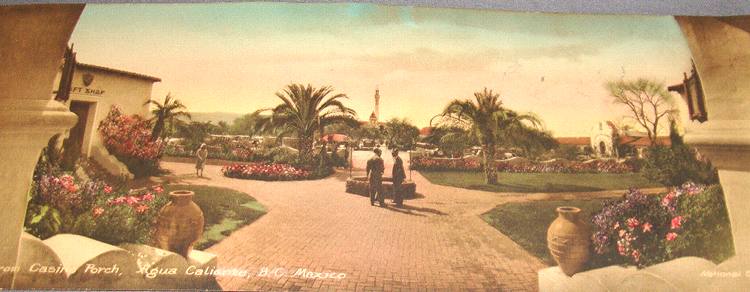
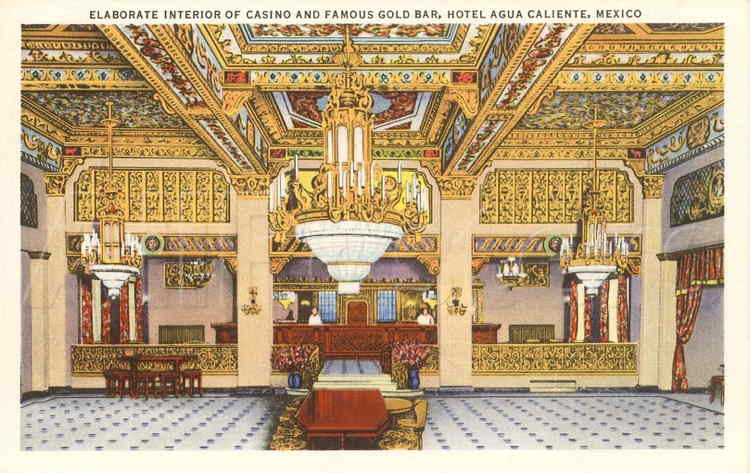
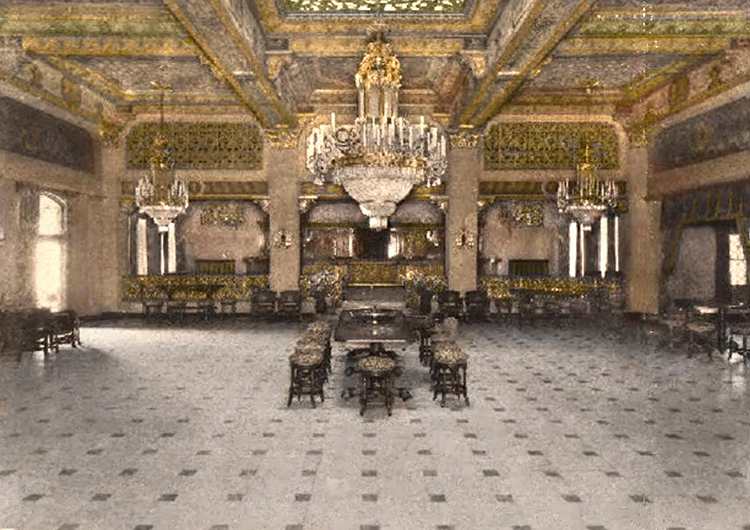
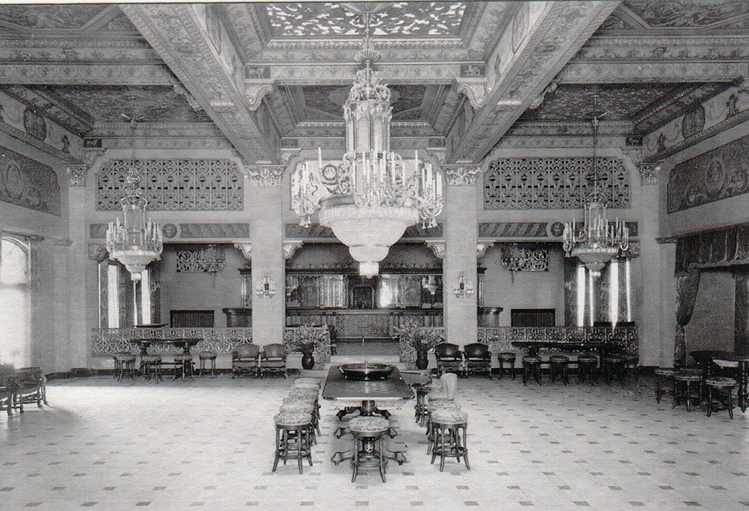
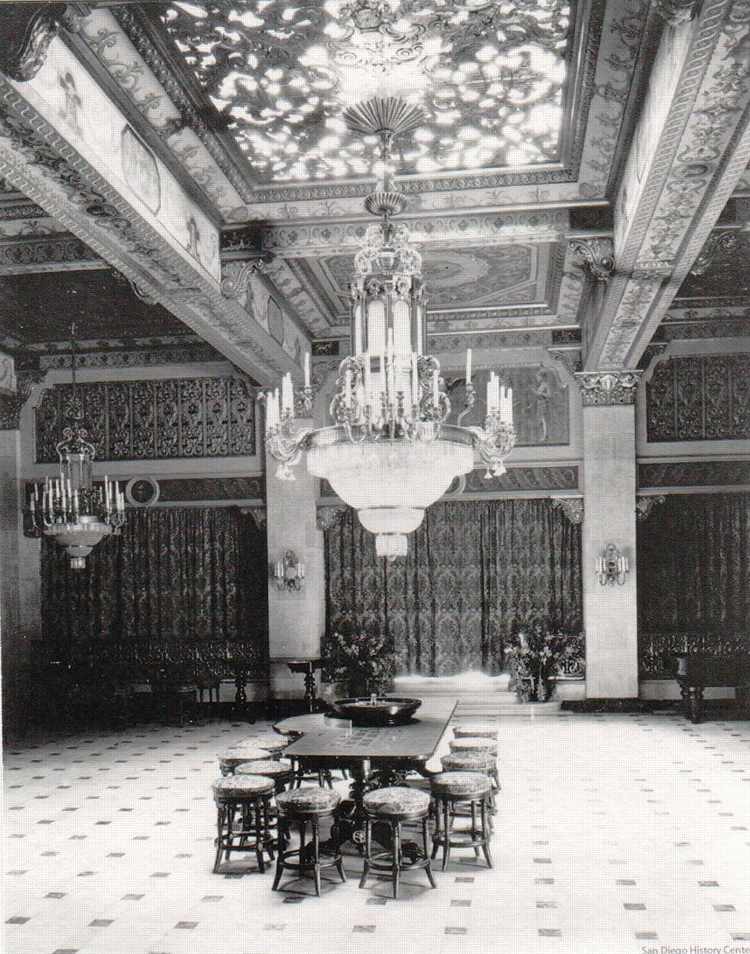
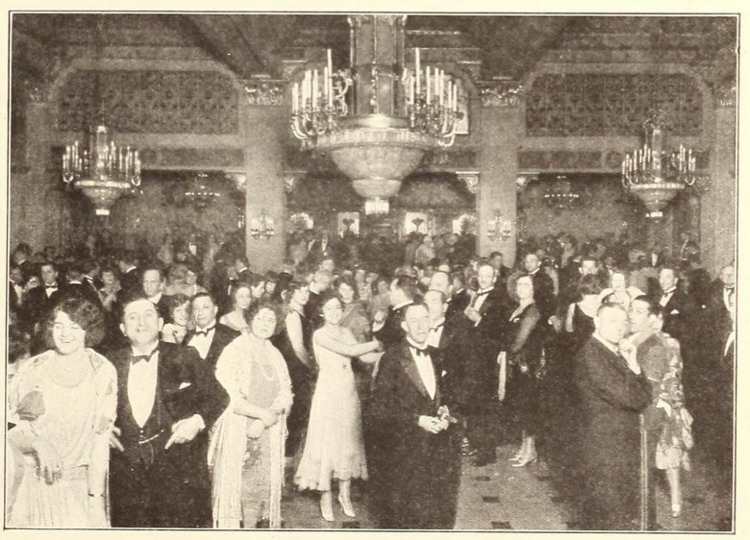
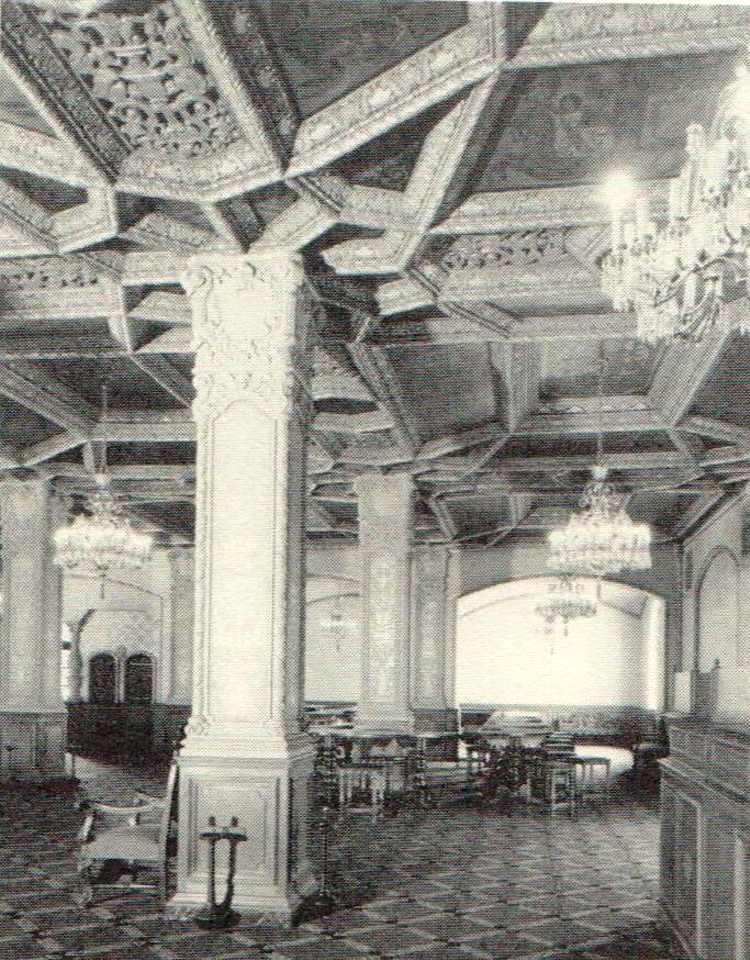
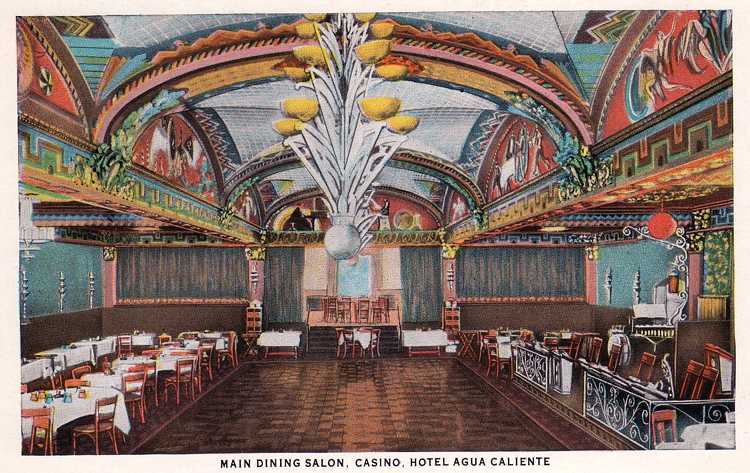

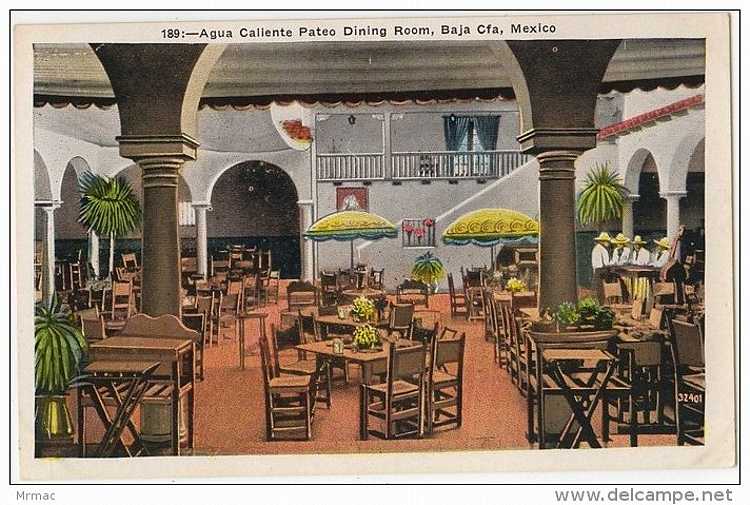
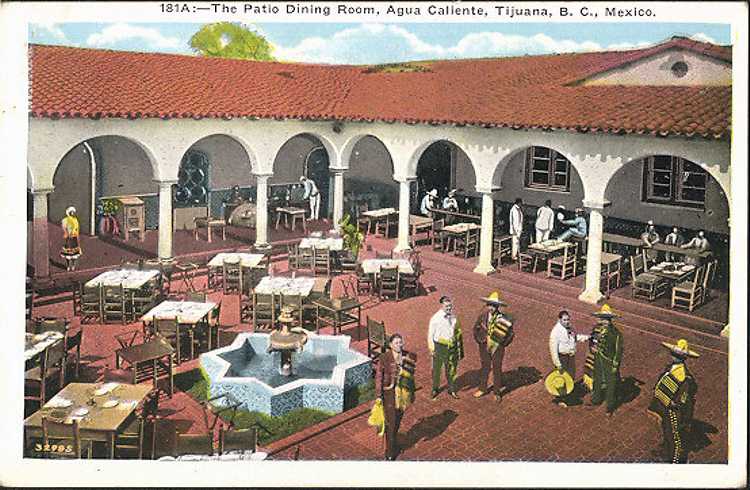
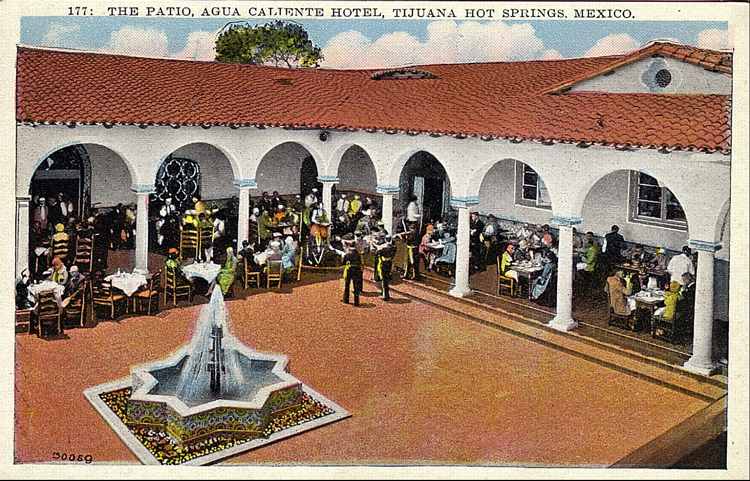
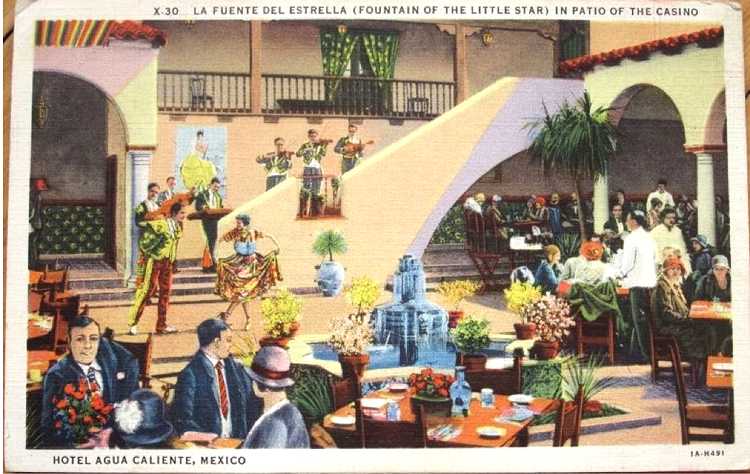
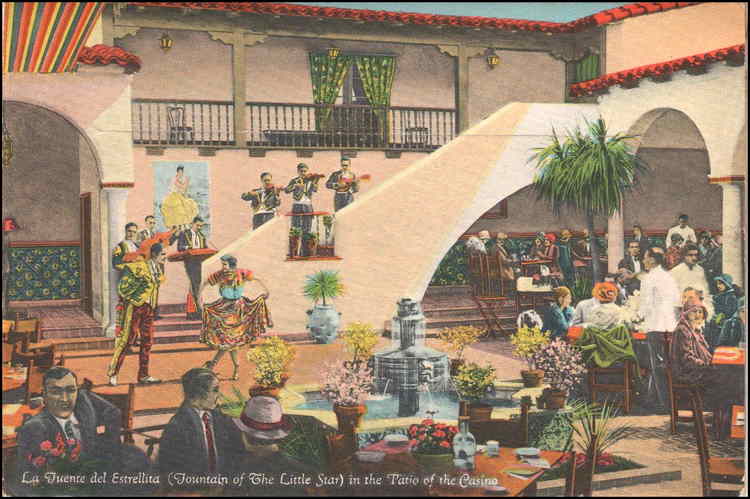
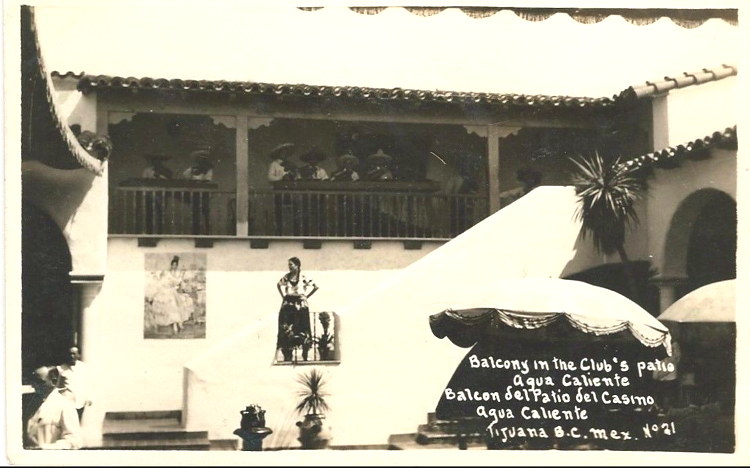
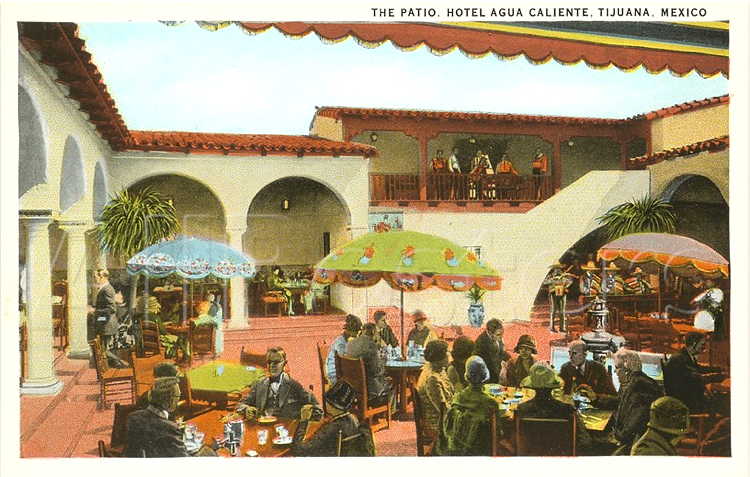
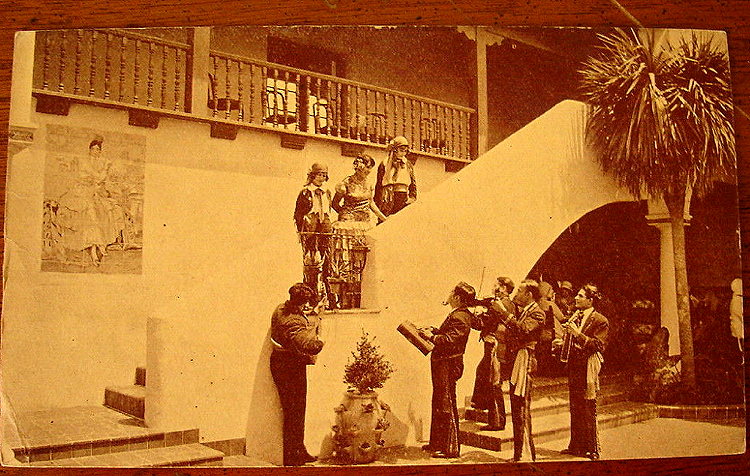
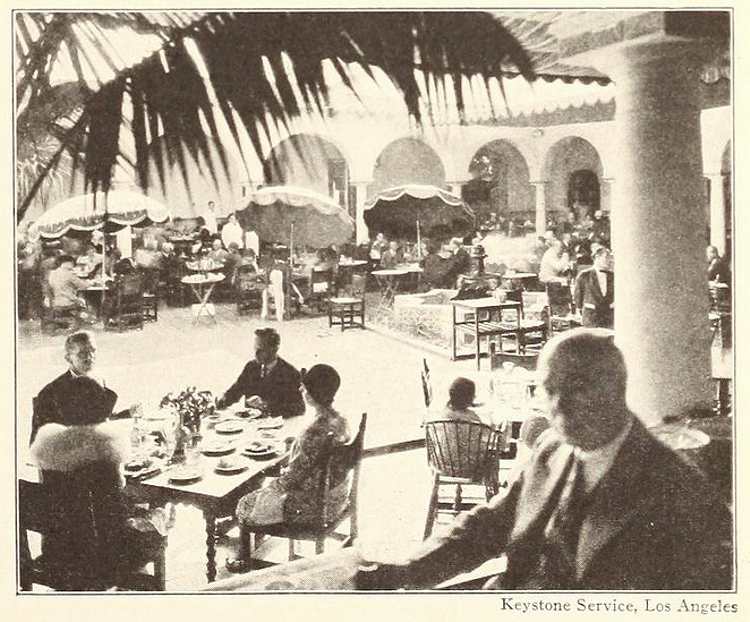
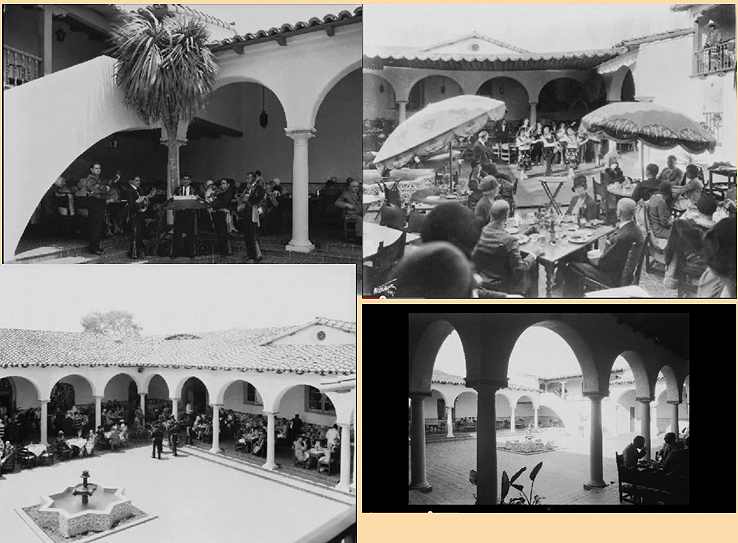
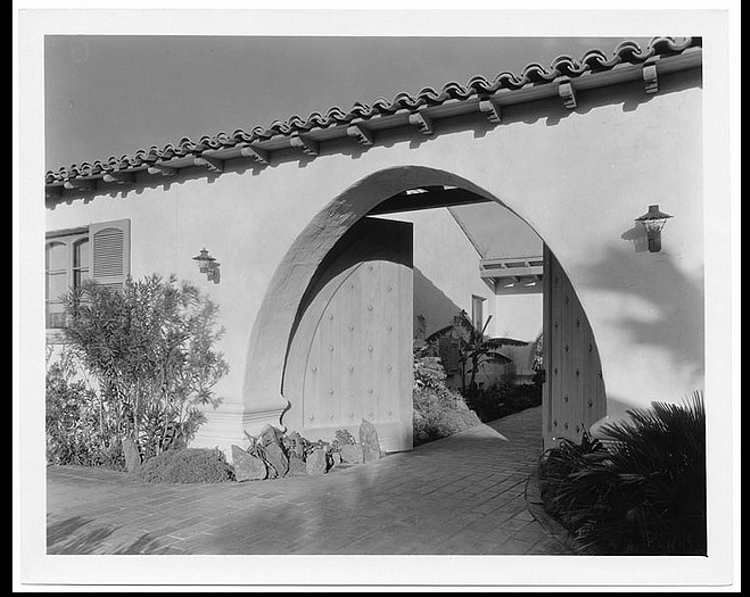









































 s
s


















































































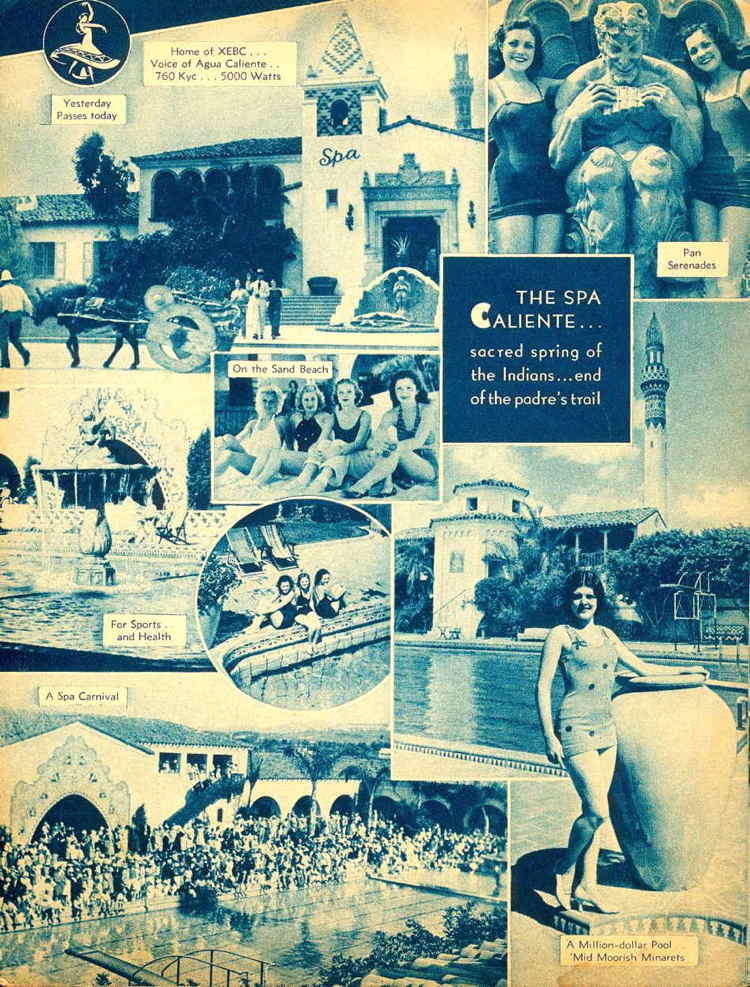
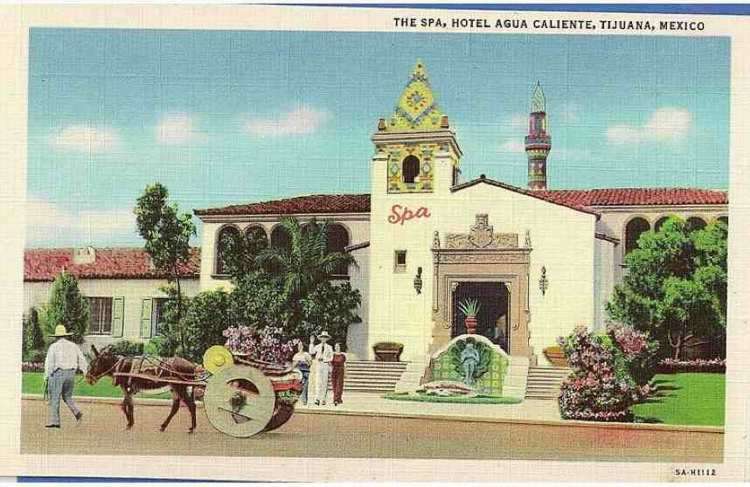
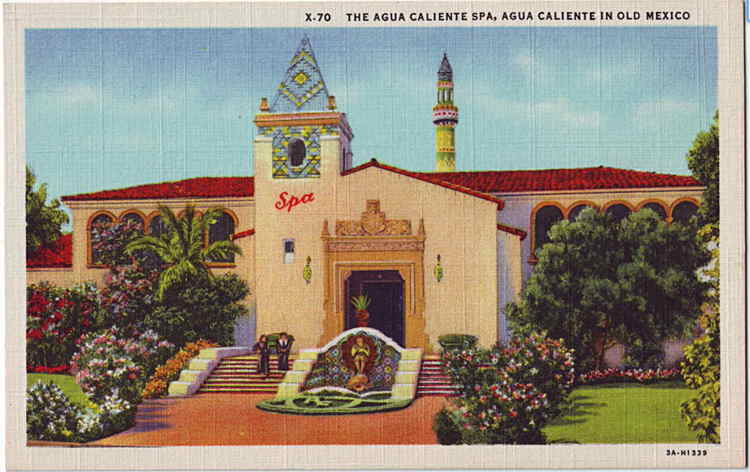
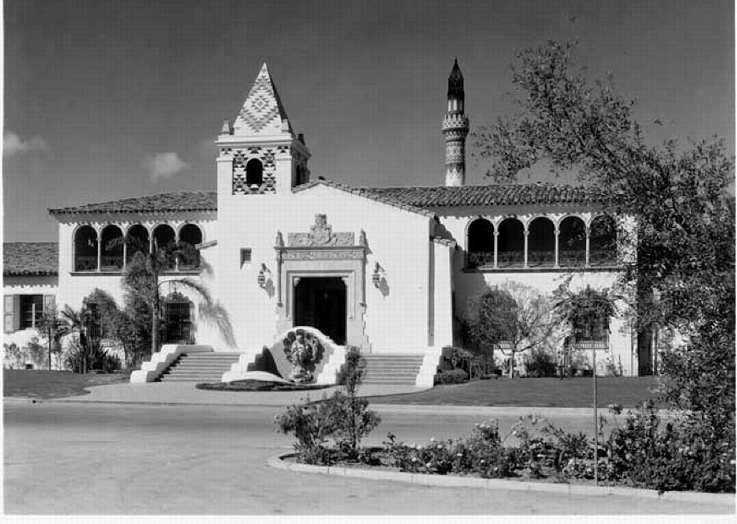
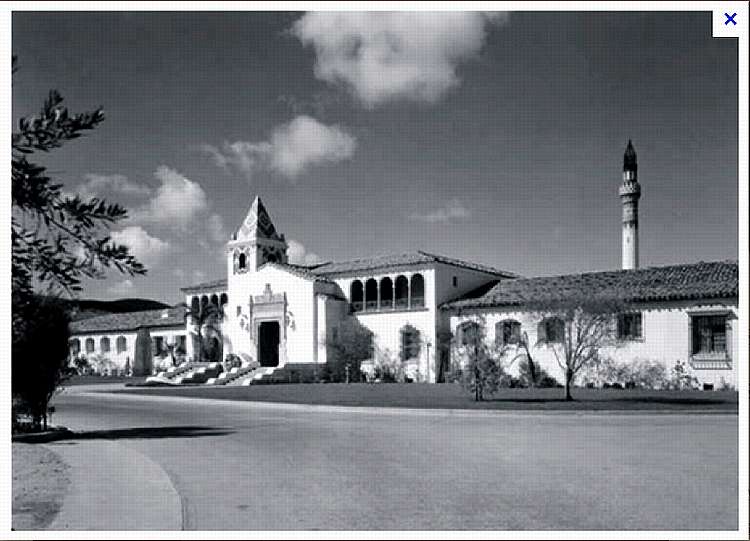
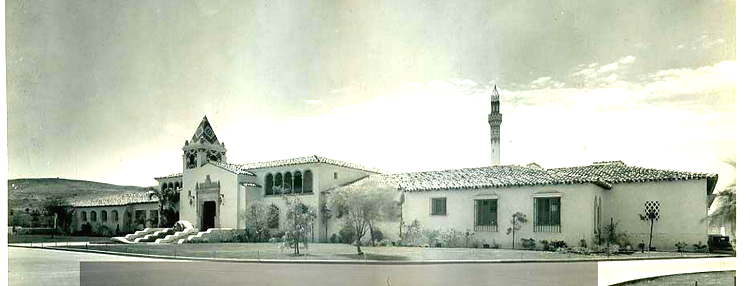
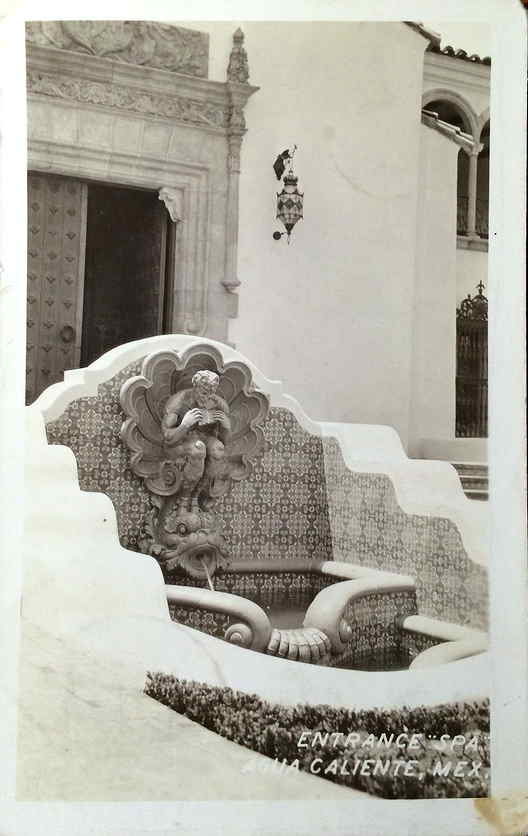
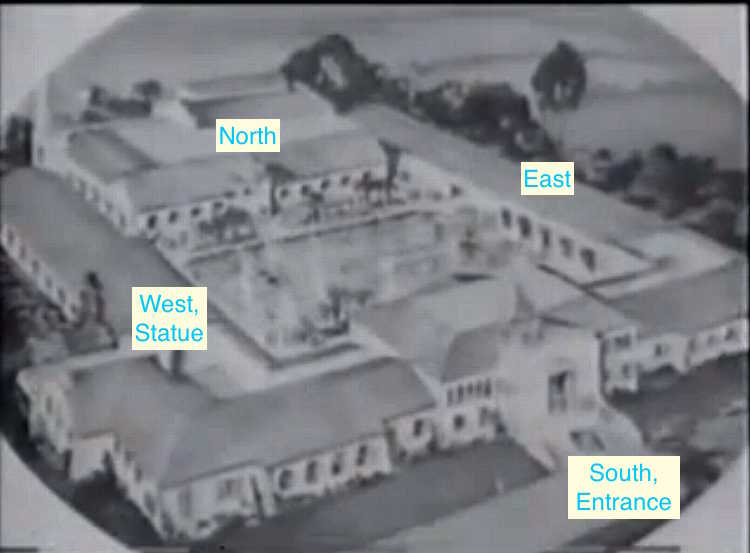
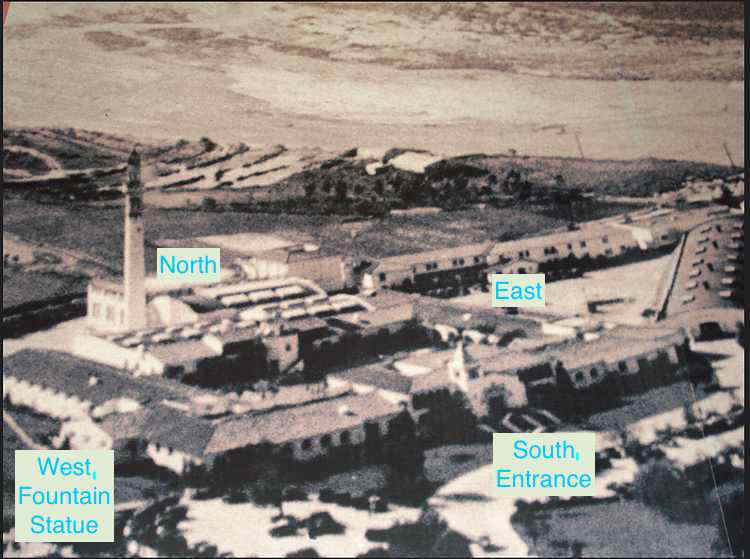
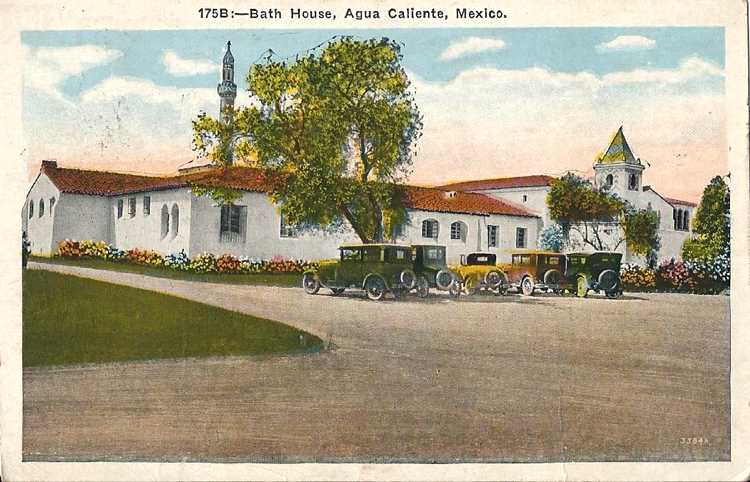
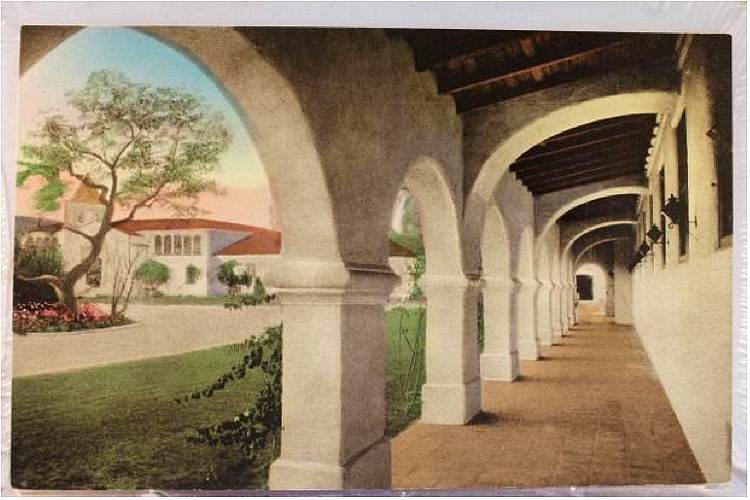
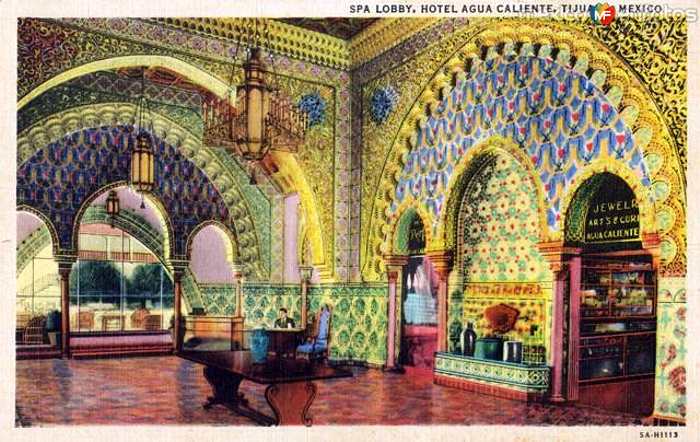
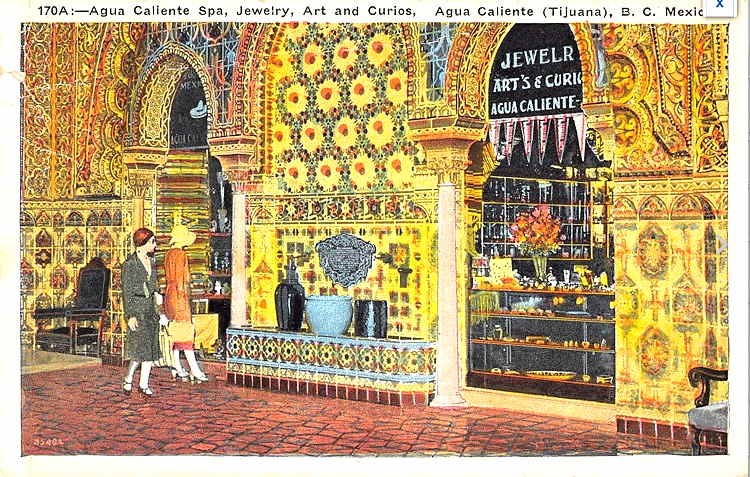
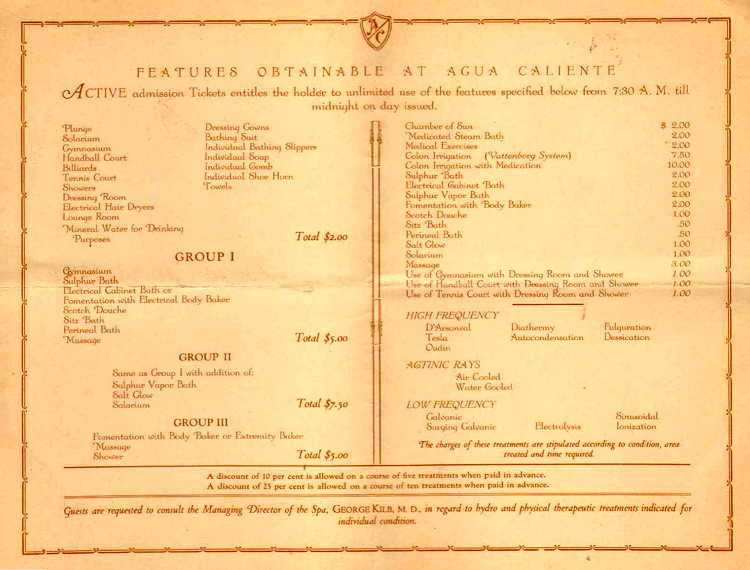
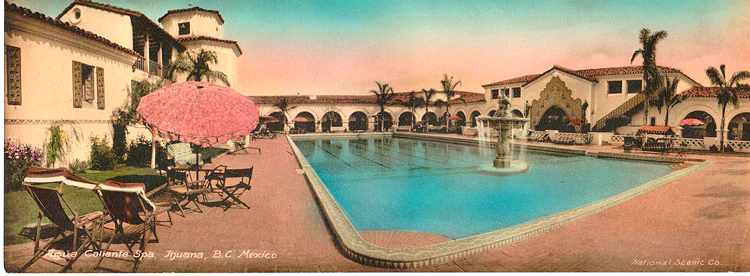
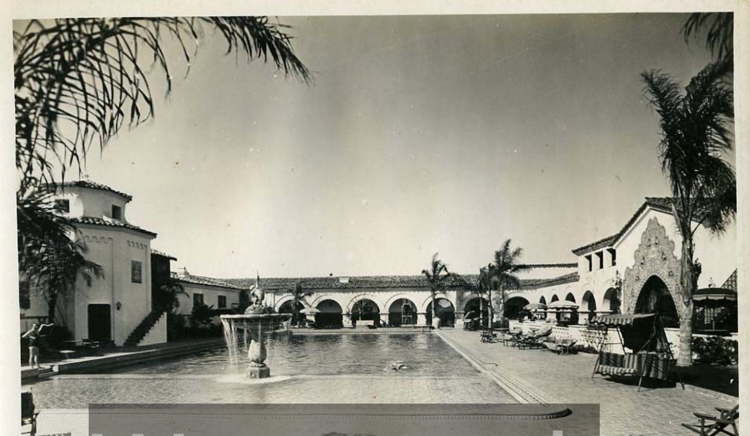
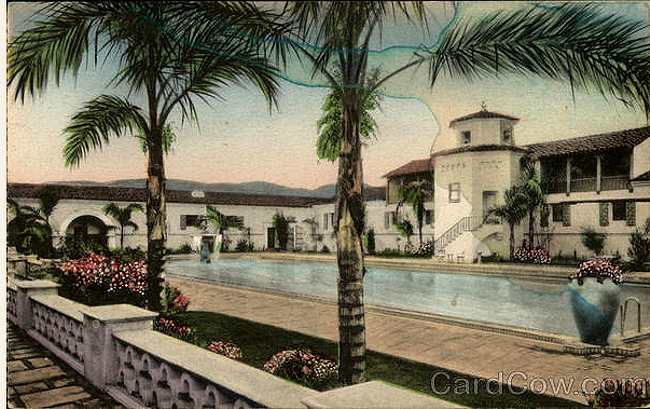
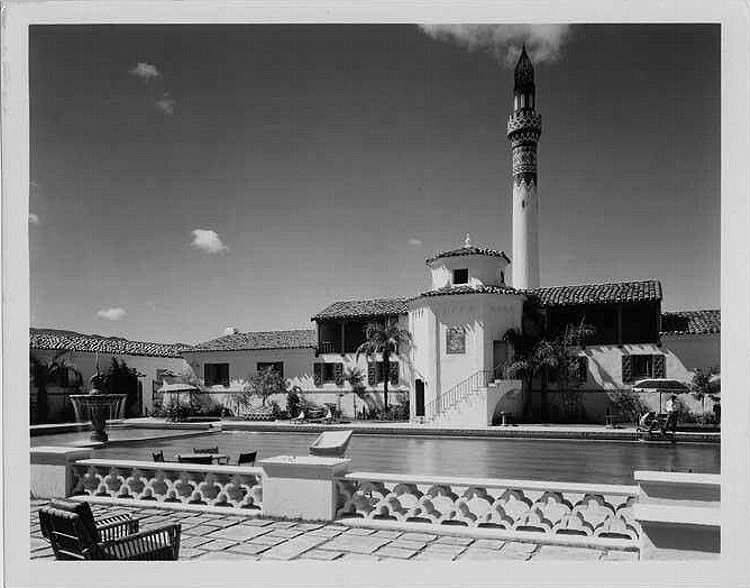
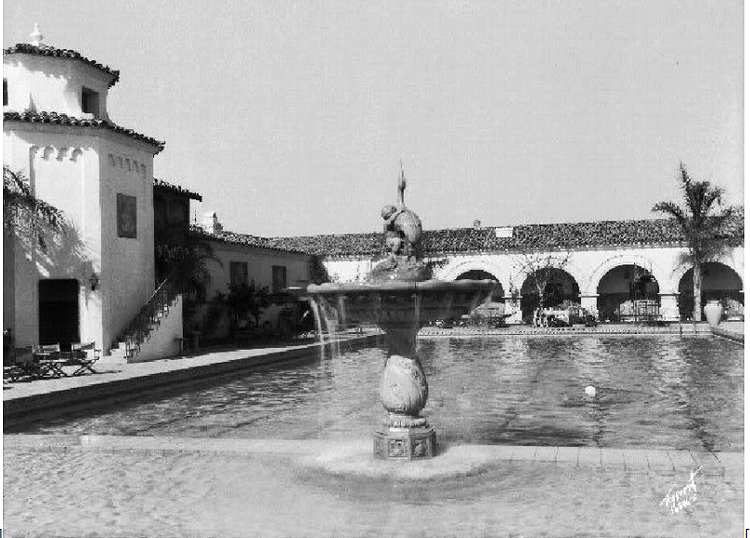
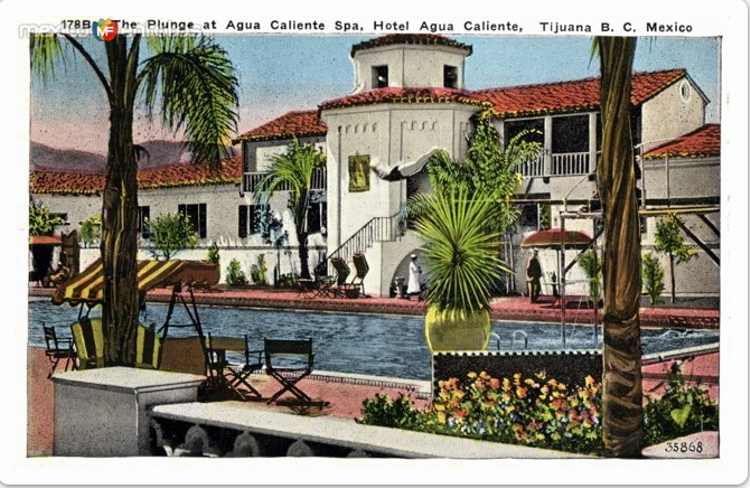
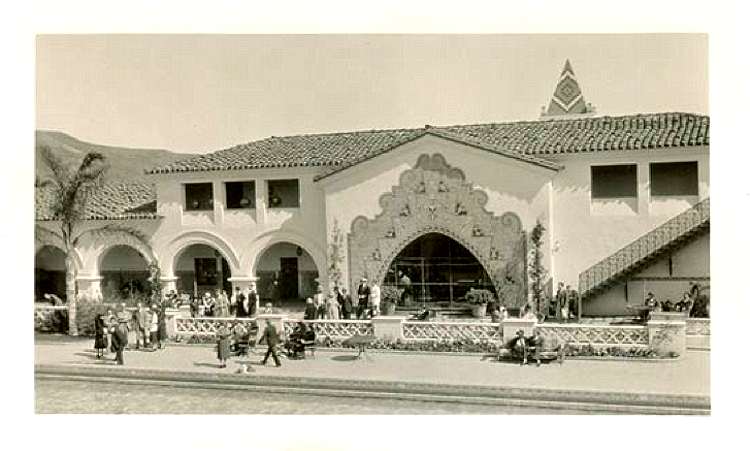
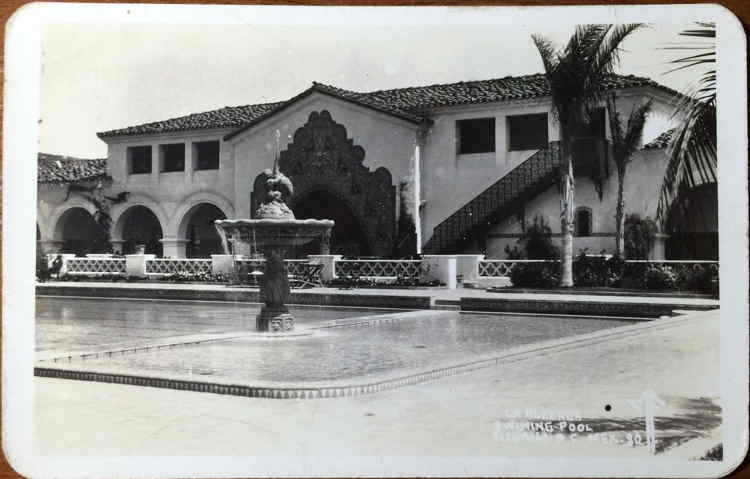
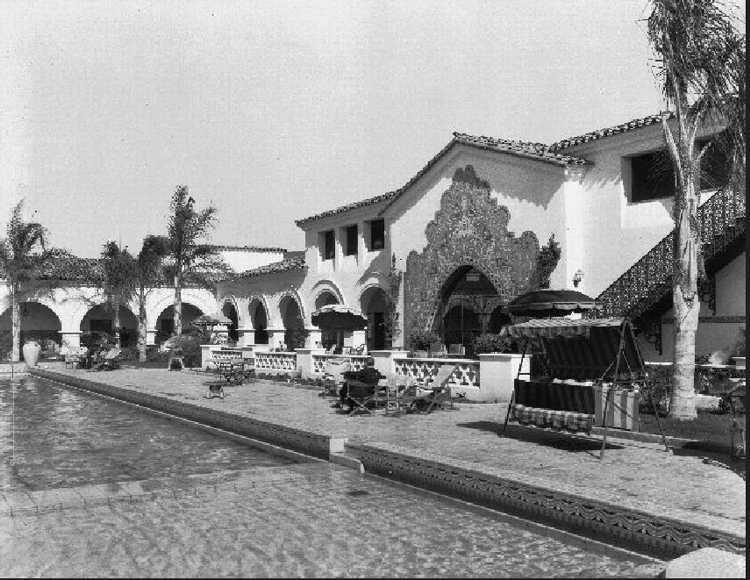
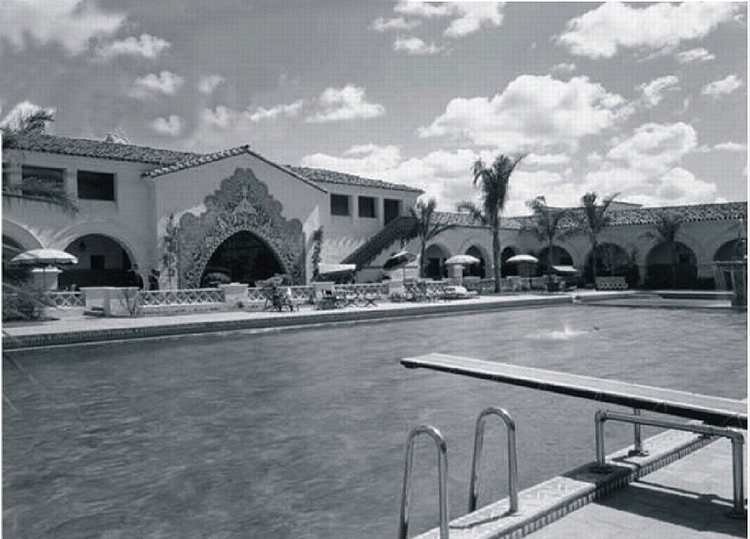
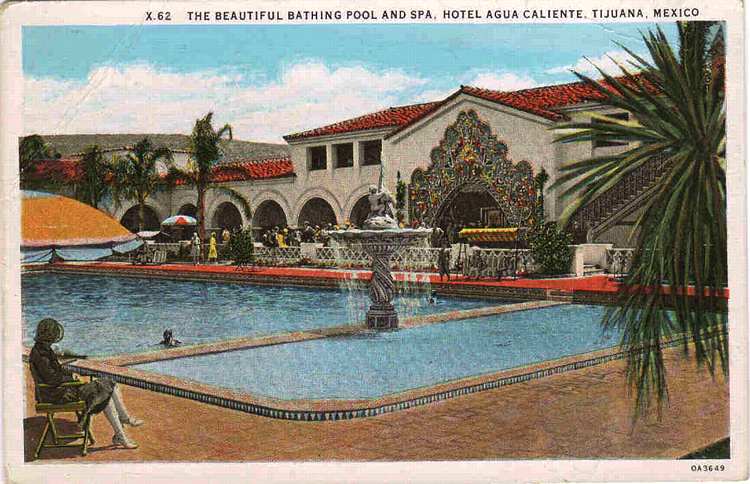
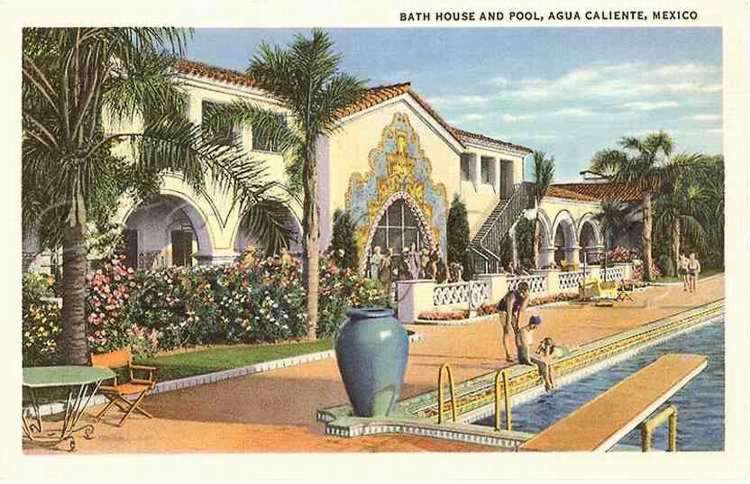
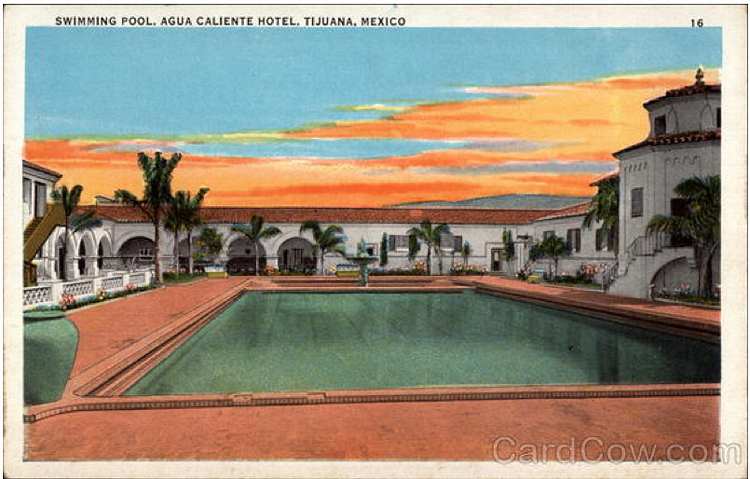
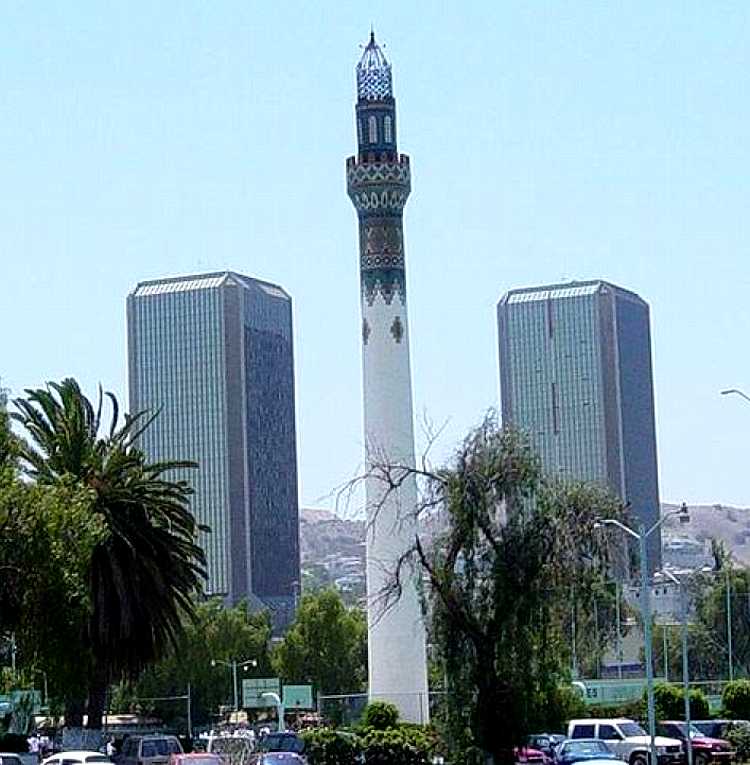
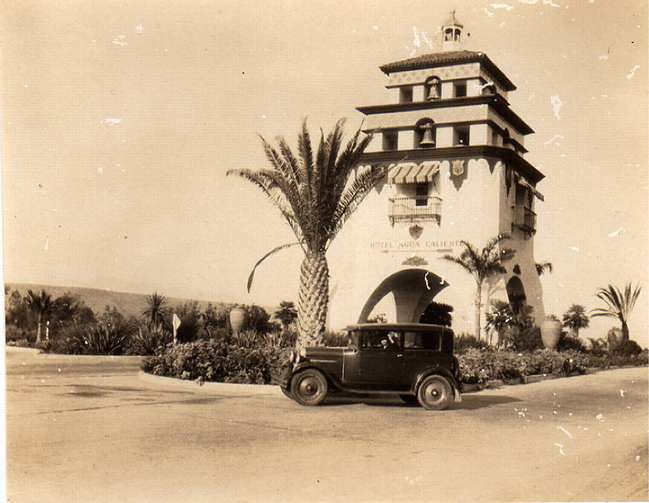
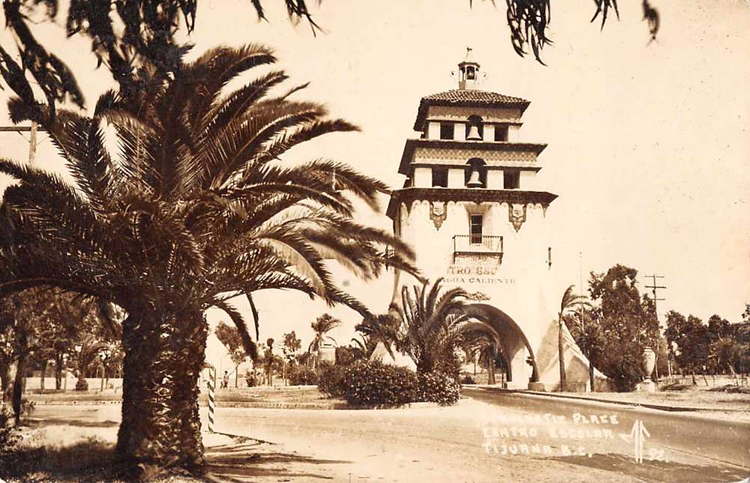
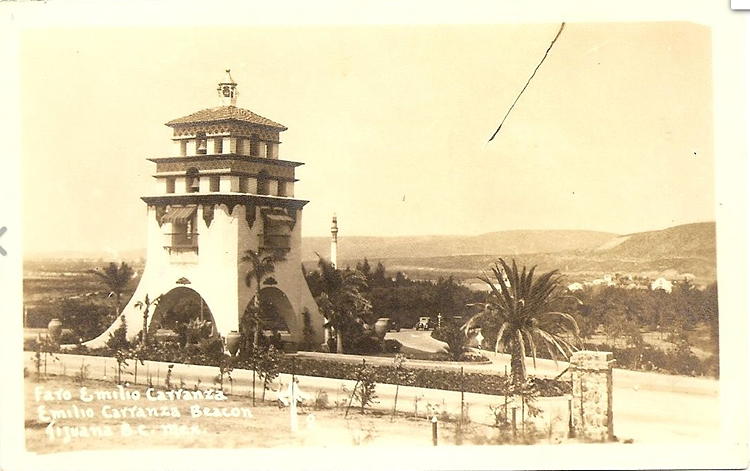
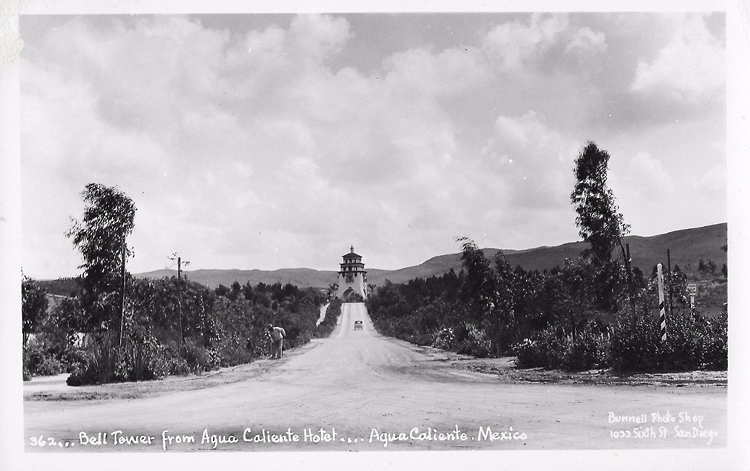
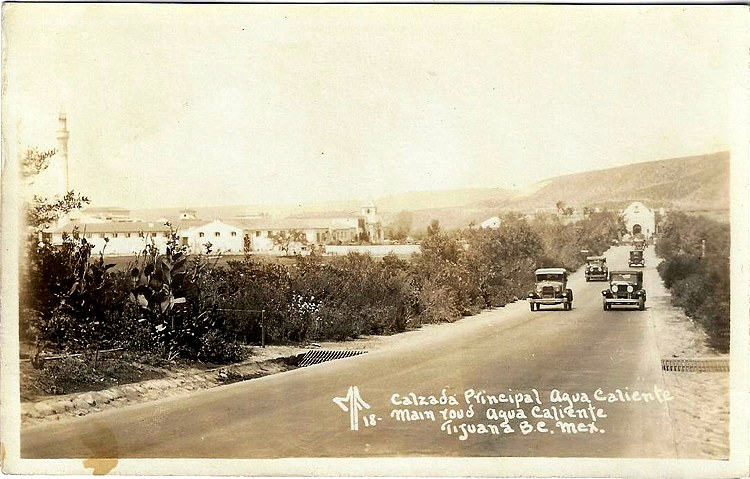
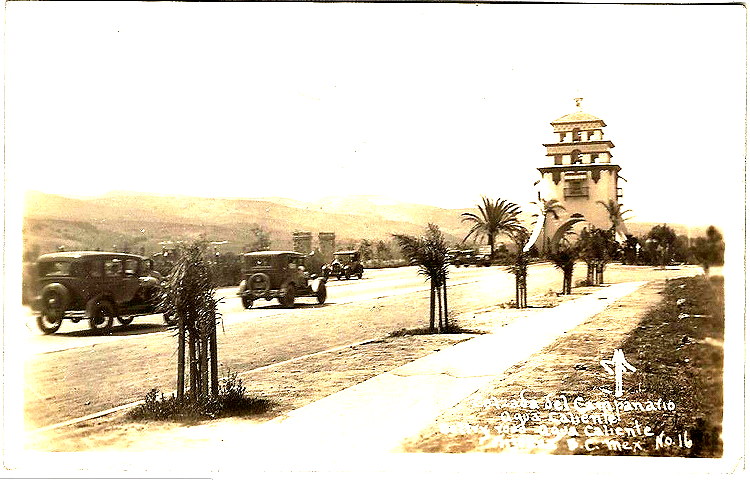
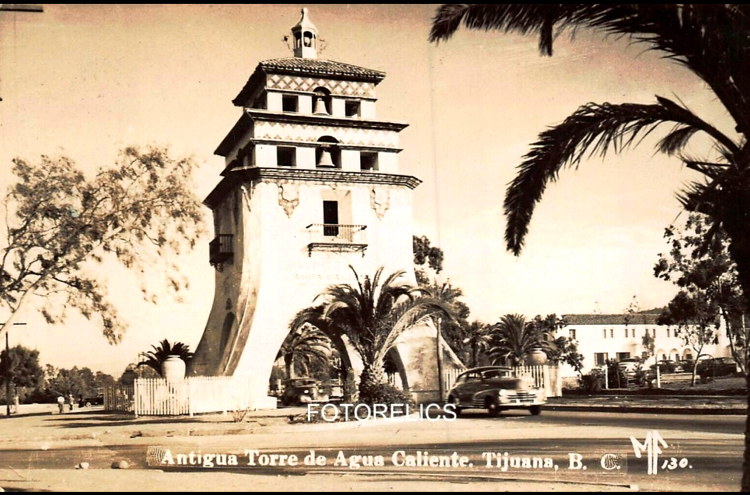
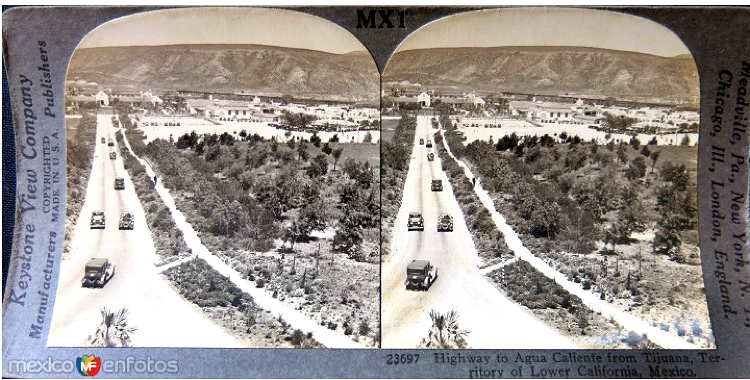
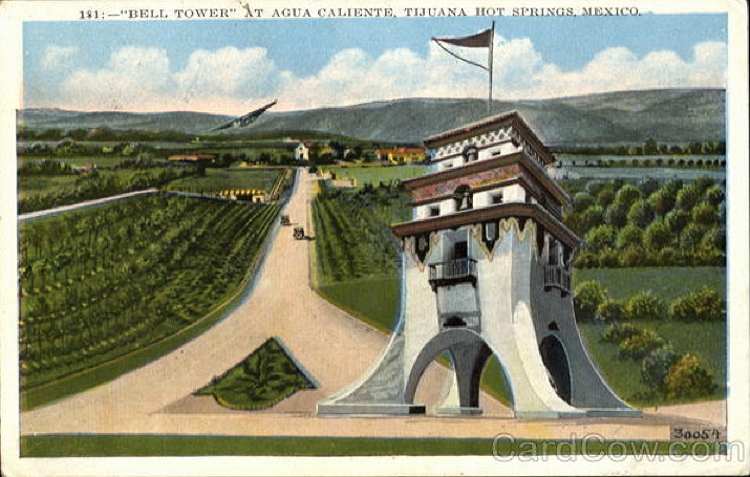
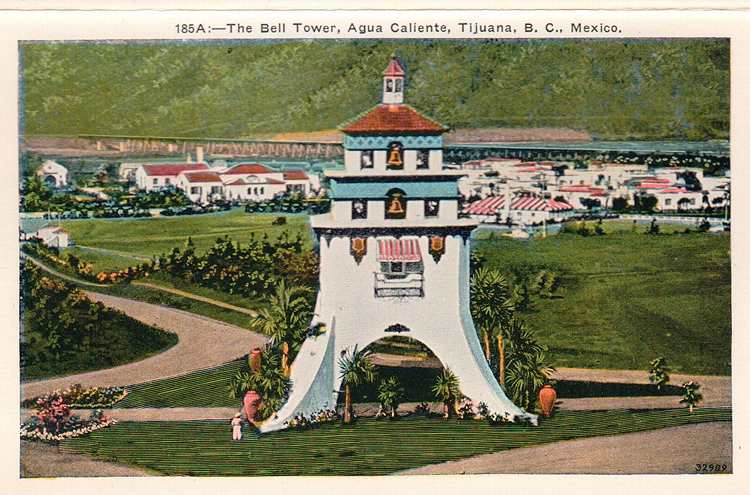 503. Looks like Casino and Bungalows in the
background. The large white structure at upper-left
near the margin looks like the end of the front
Entrance-South Wing of the Hotel. Same
scene with a plane on
503. Looks like Casino and Bungalows in the
background. The large white structure at upper-left
near the margin looks like the end of the front
Entrance-South Wing of the Hotel. Same
scene with a plane on 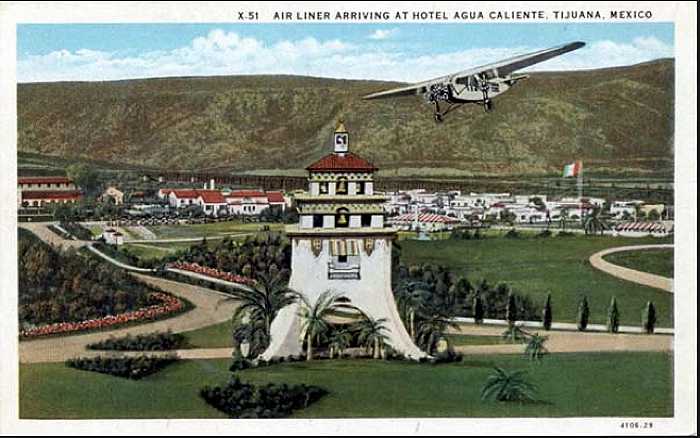
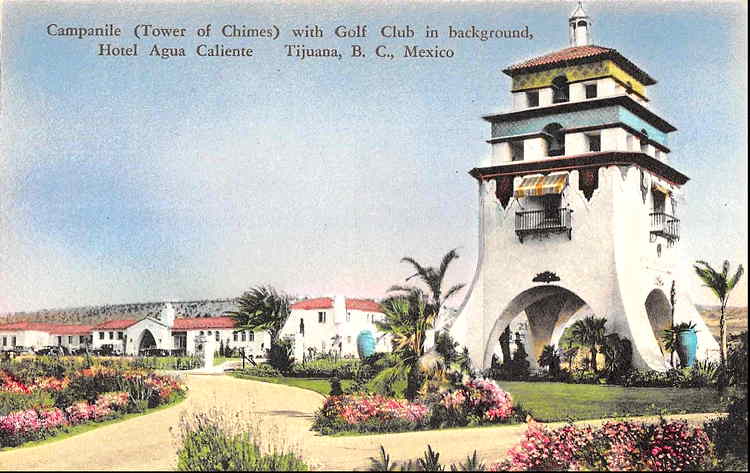
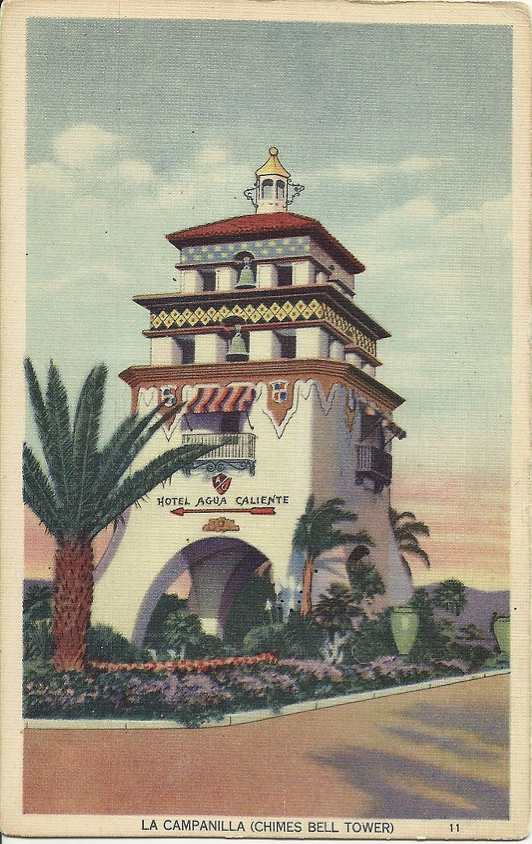
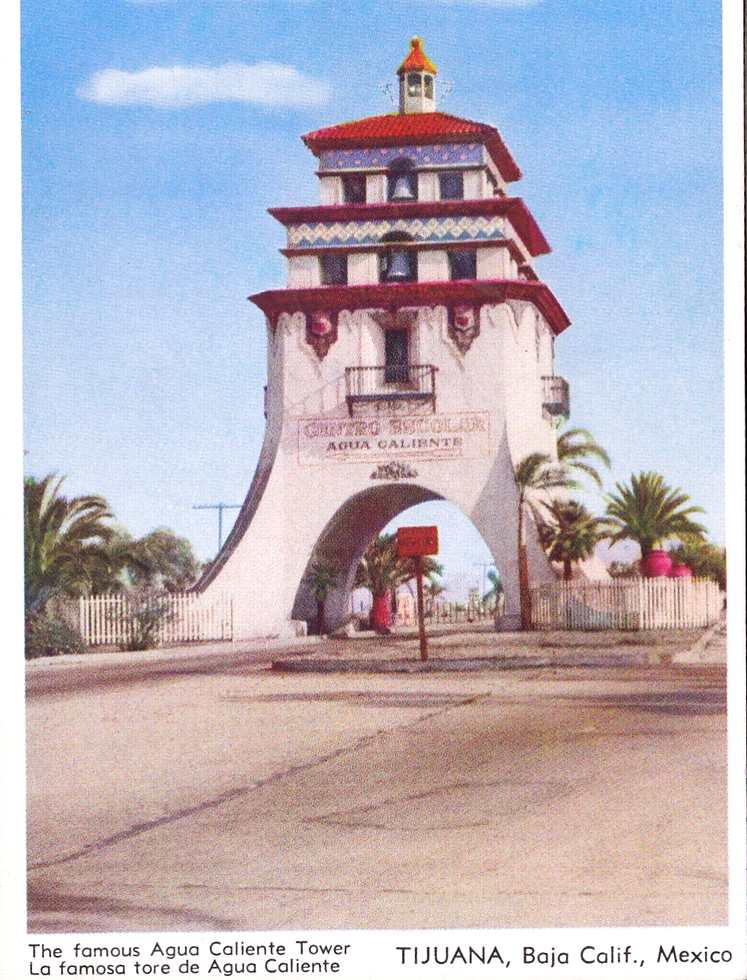
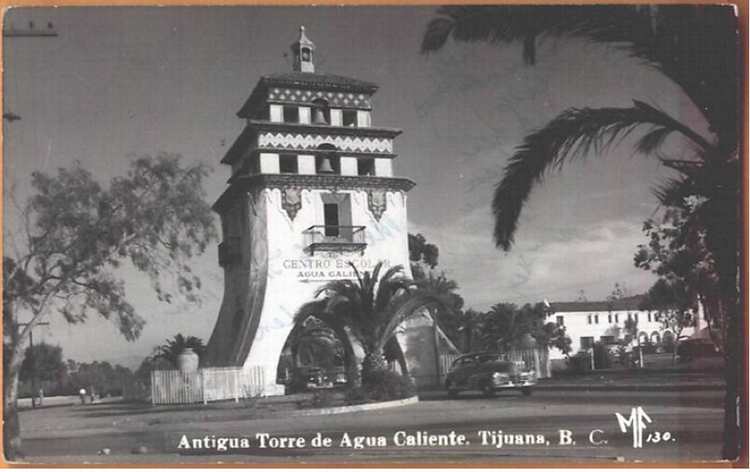
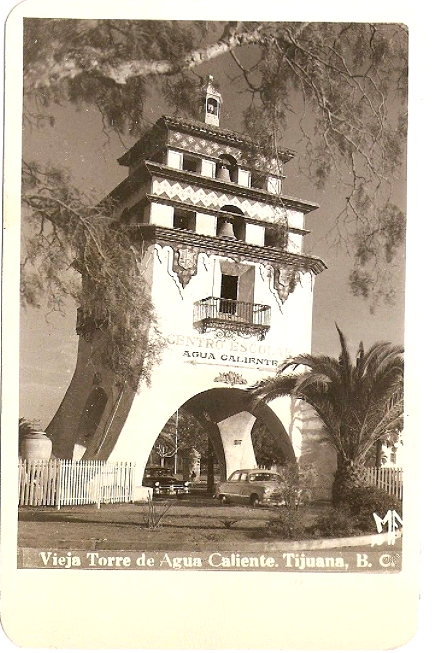
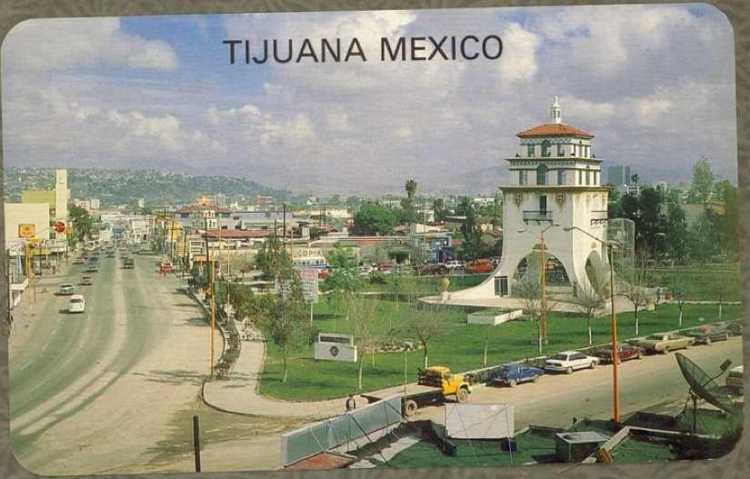
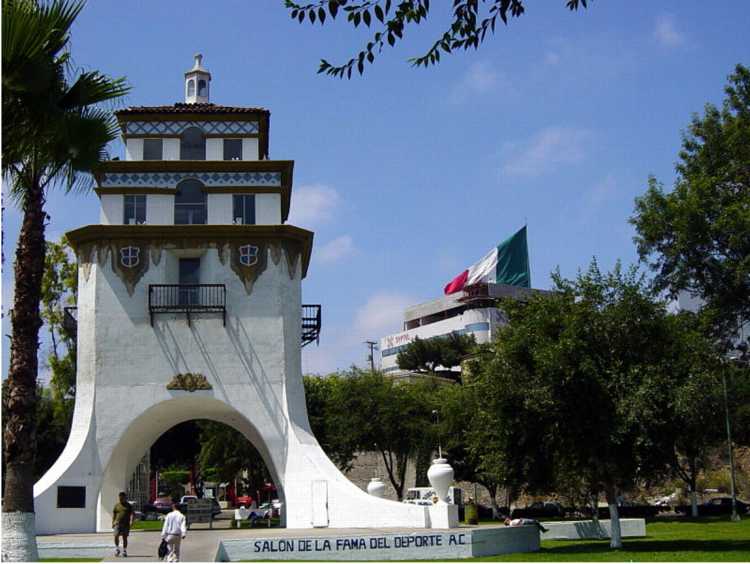
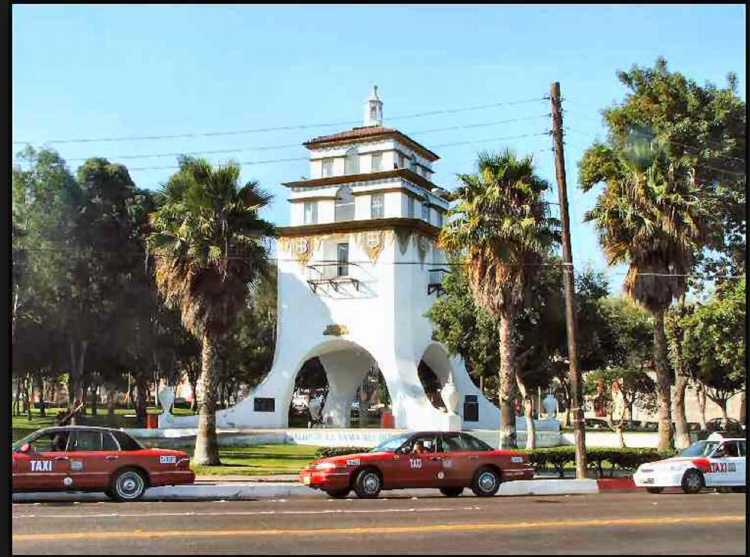
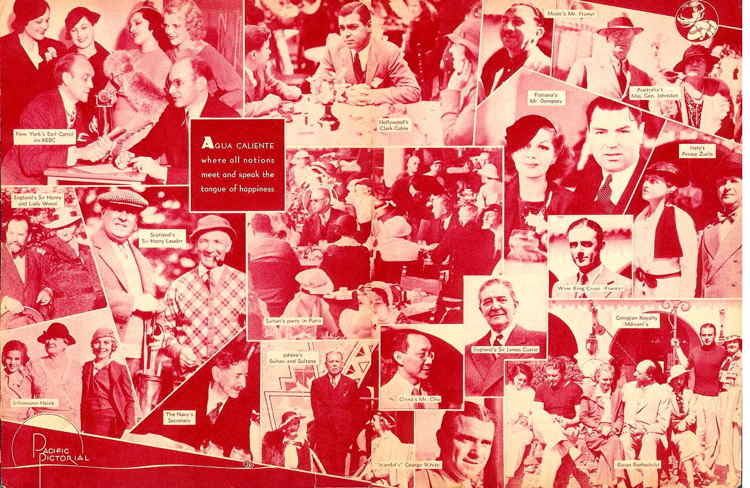
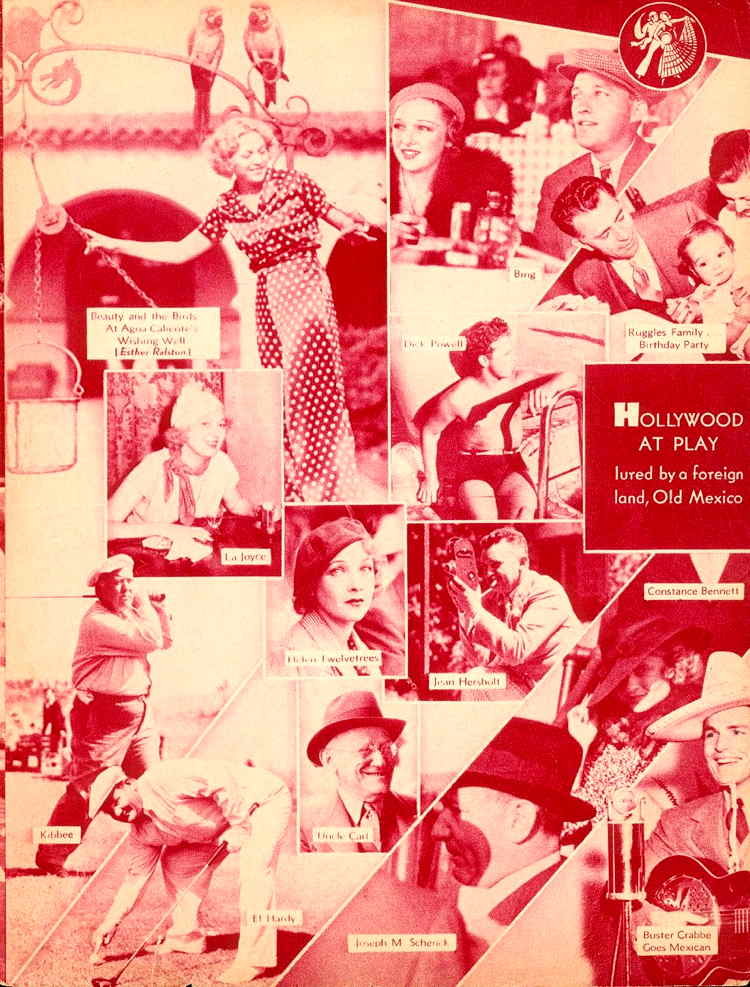
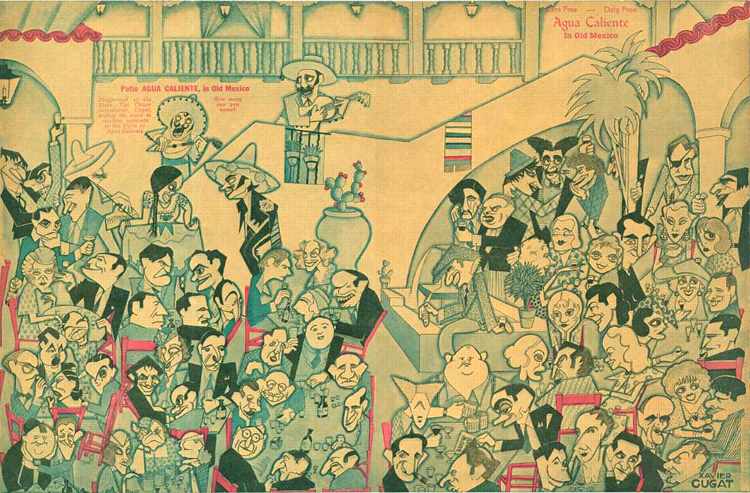
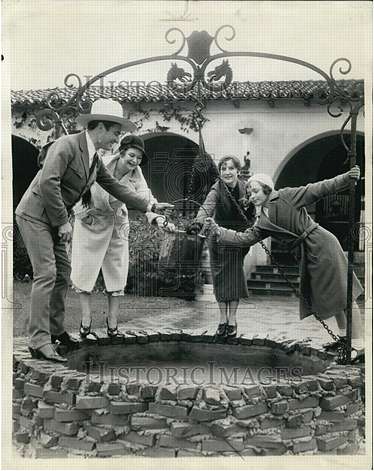
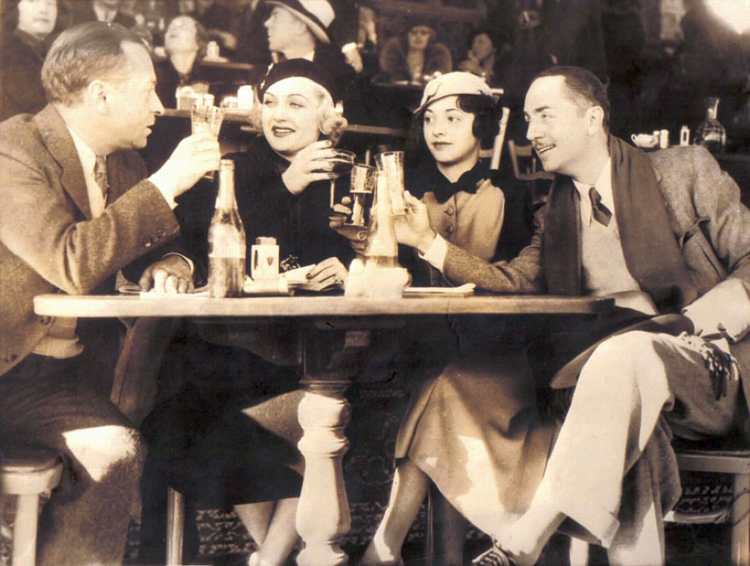
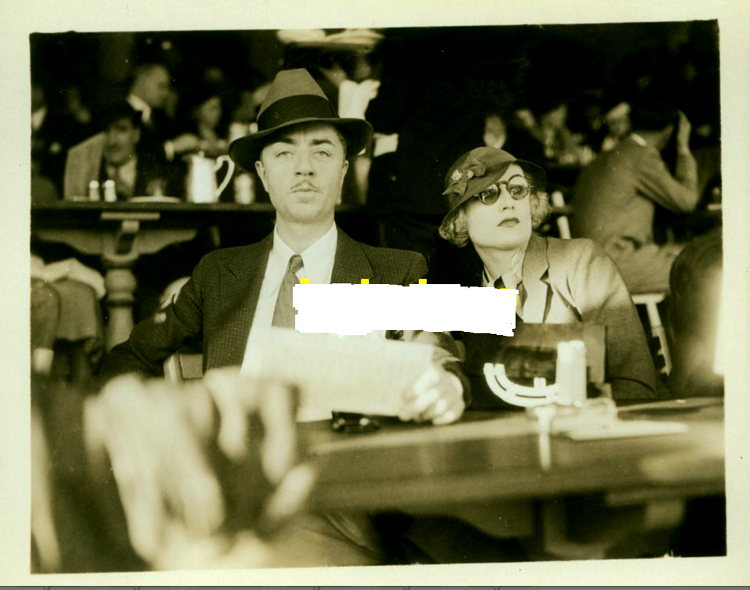
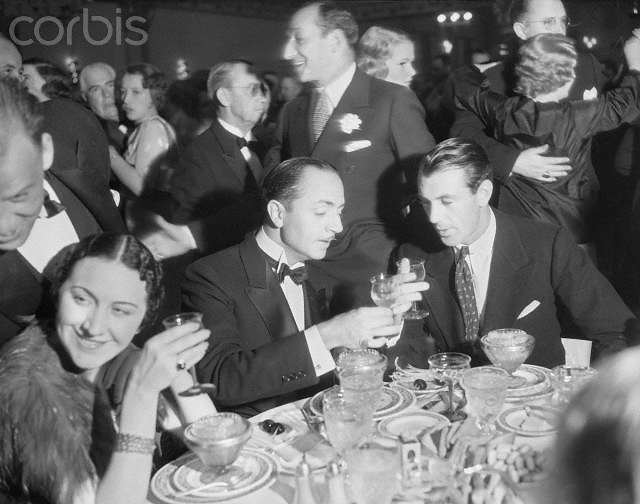
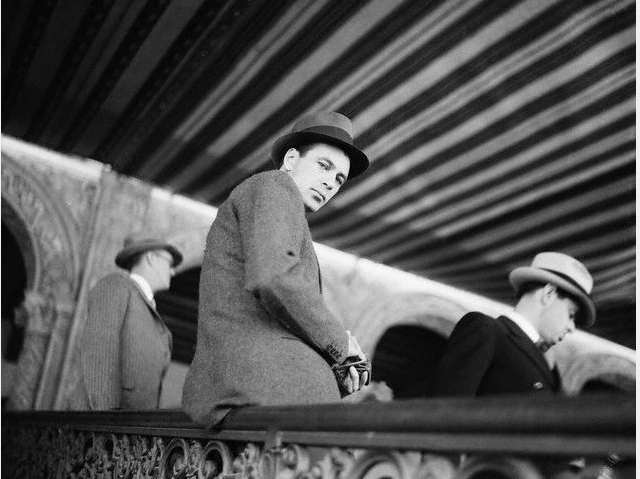
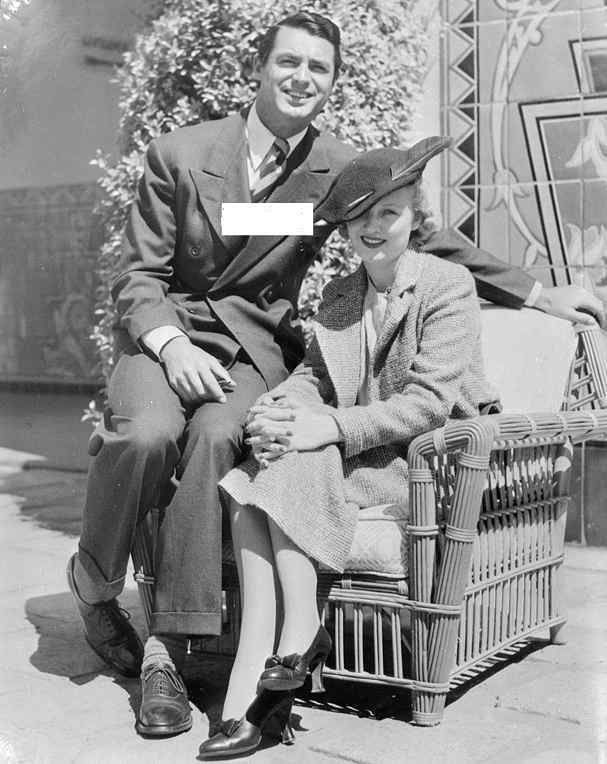
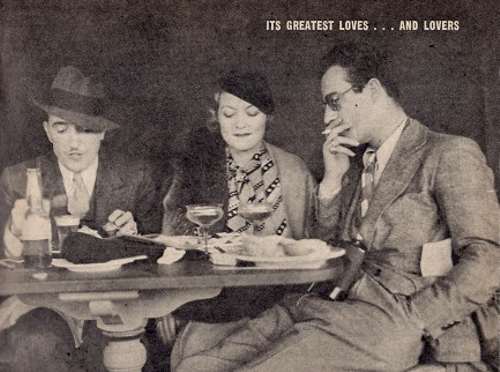
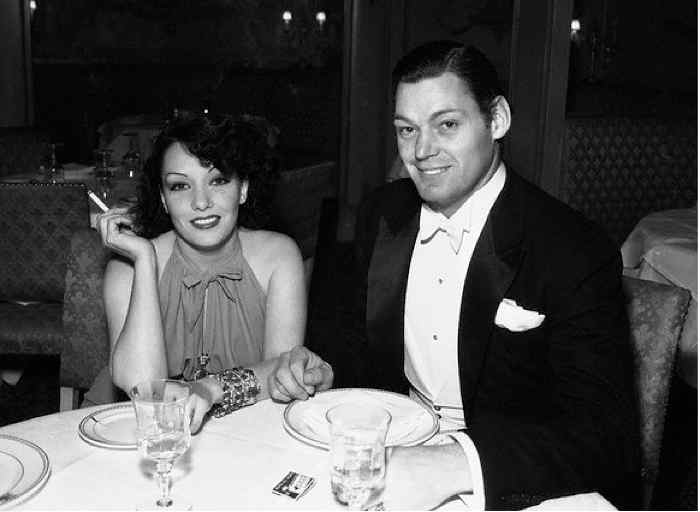
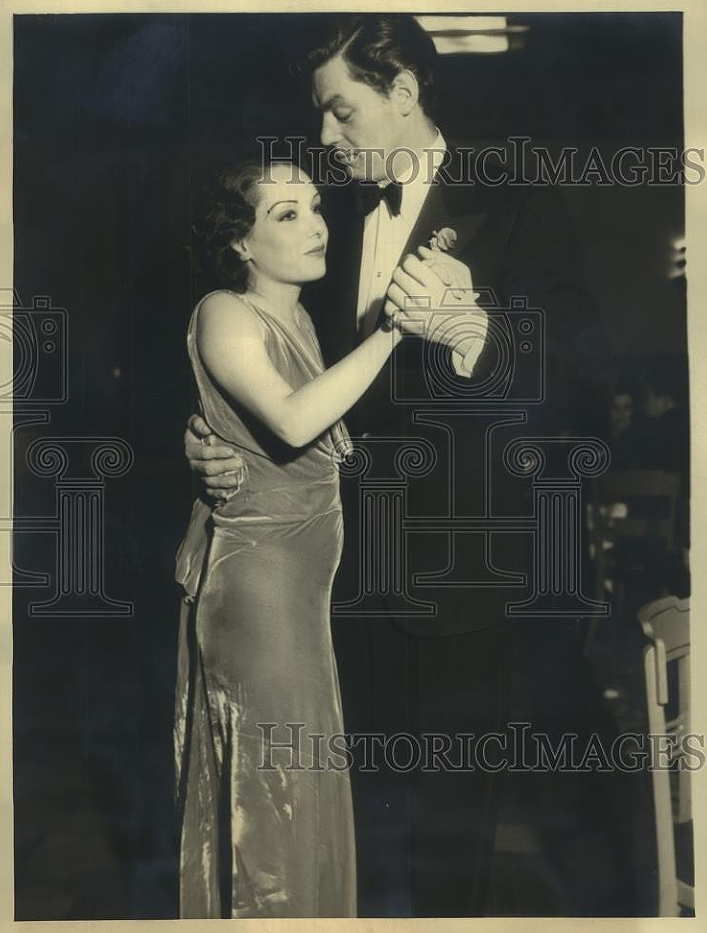
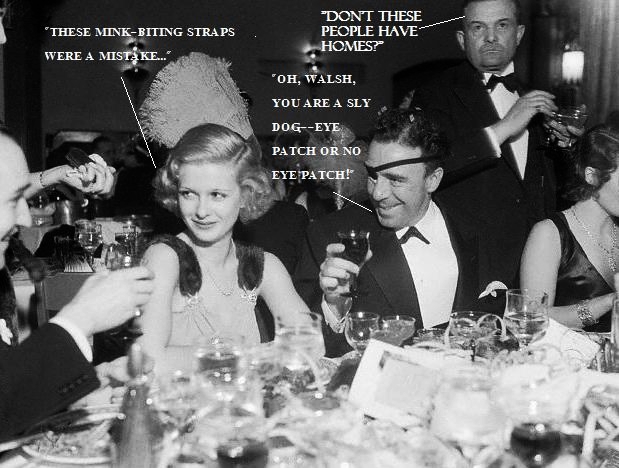
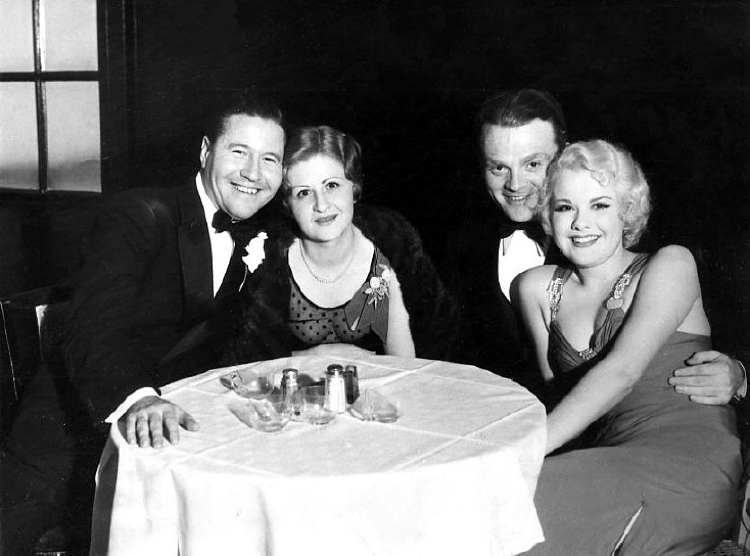
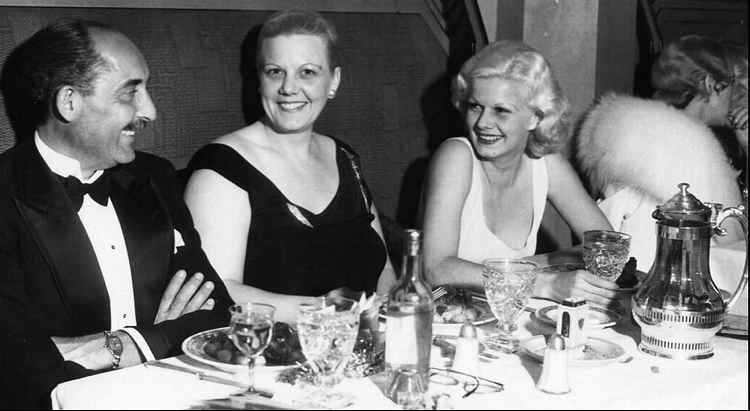
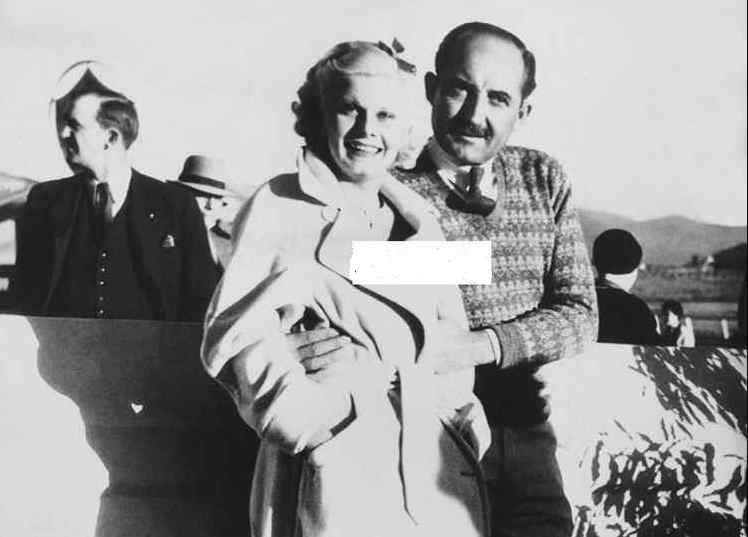
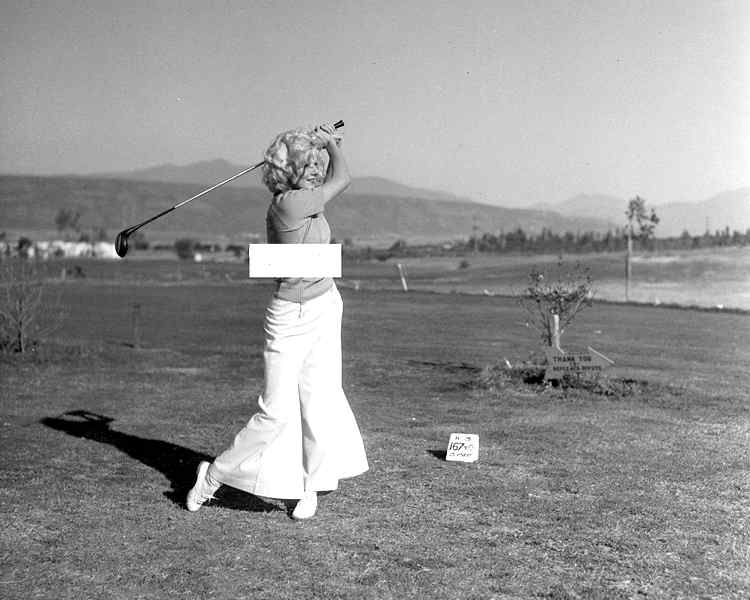
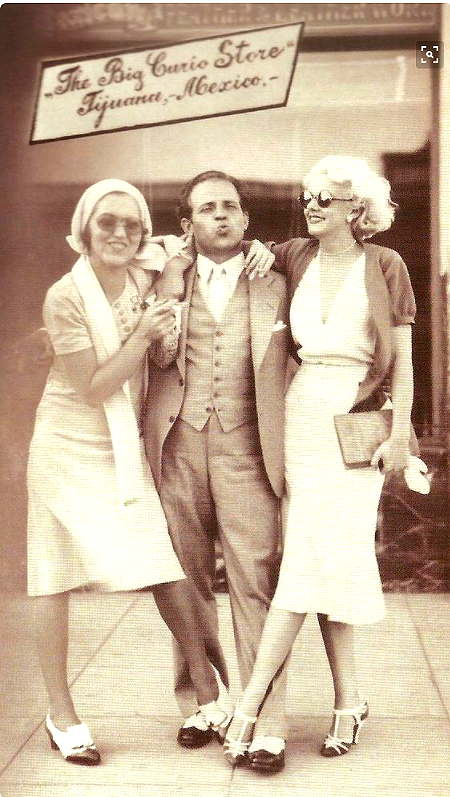
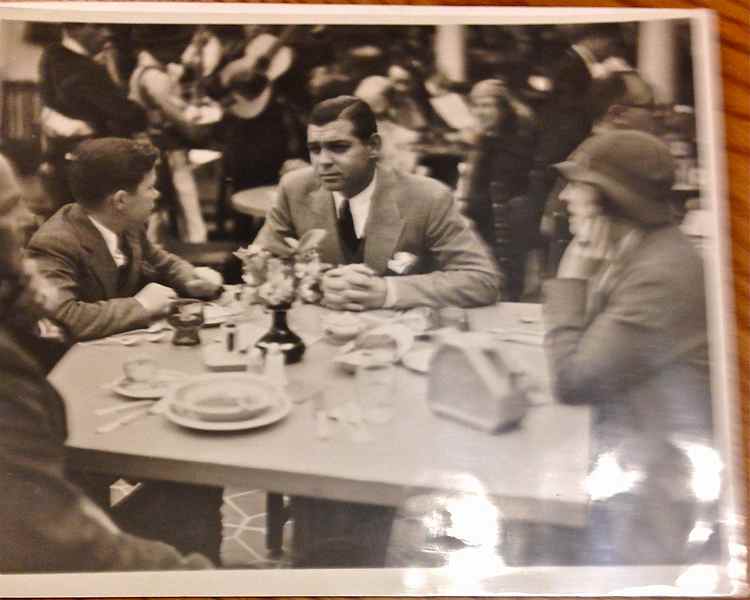
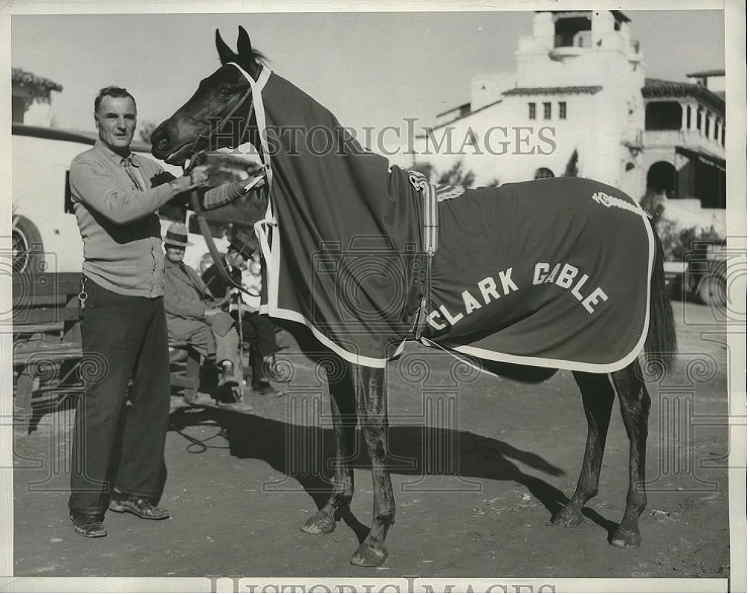
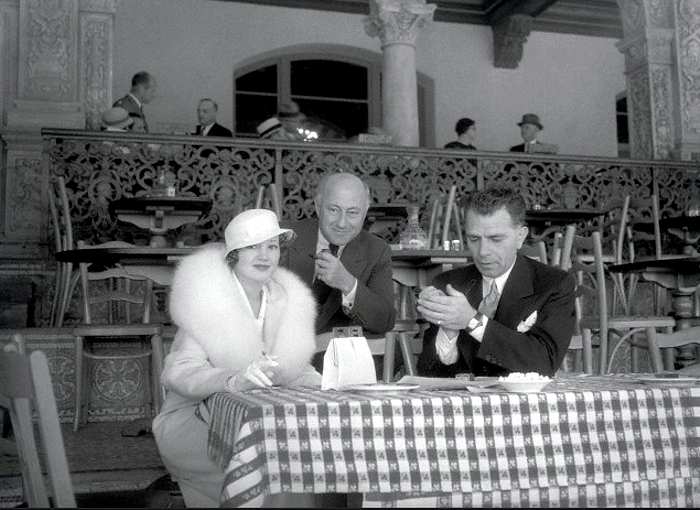
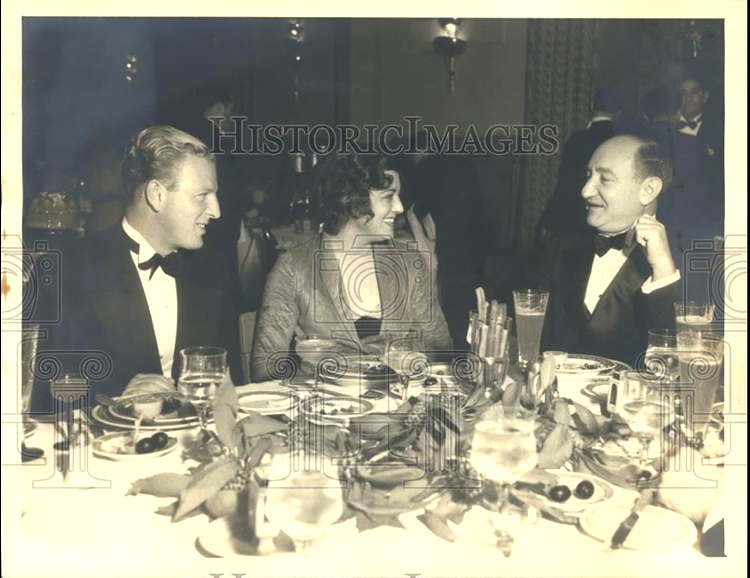
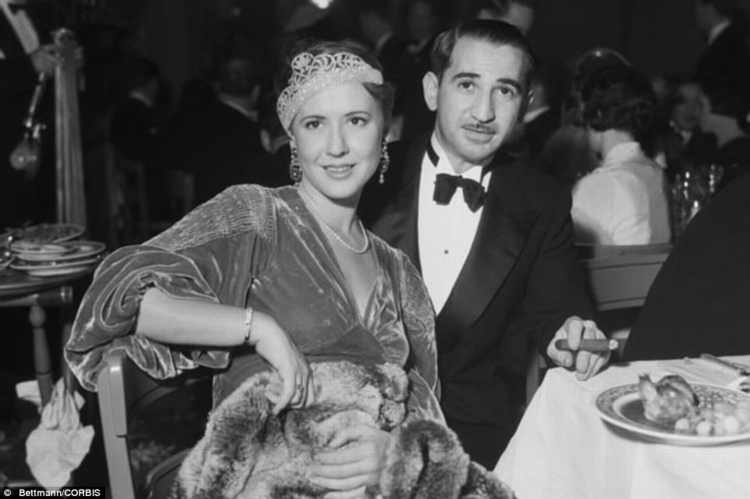
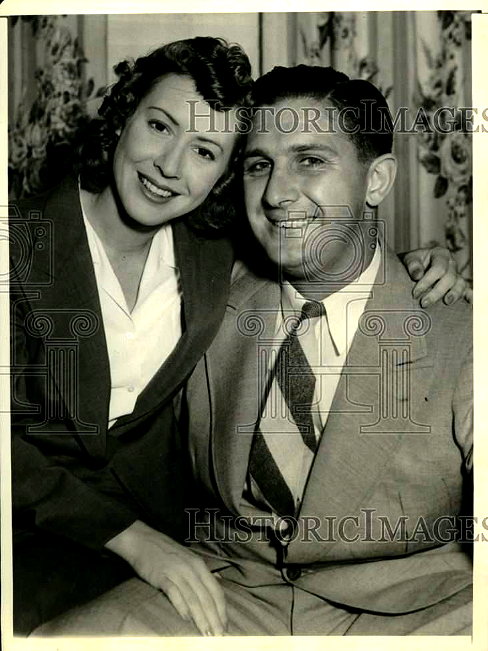
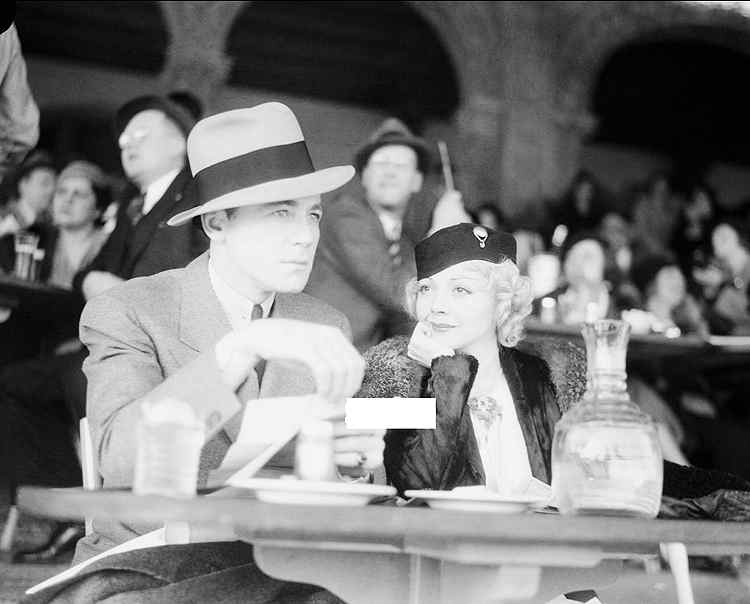
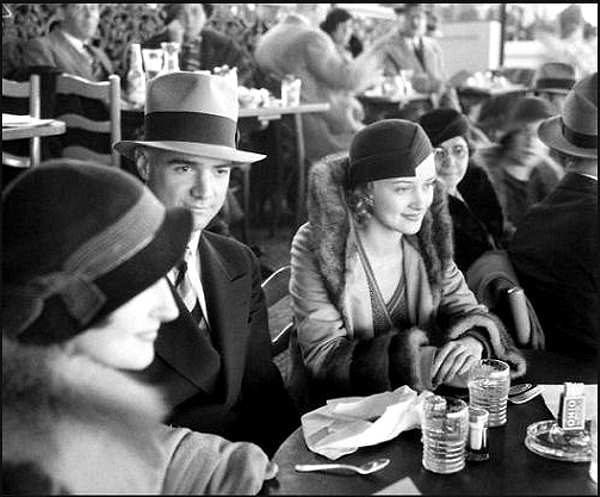
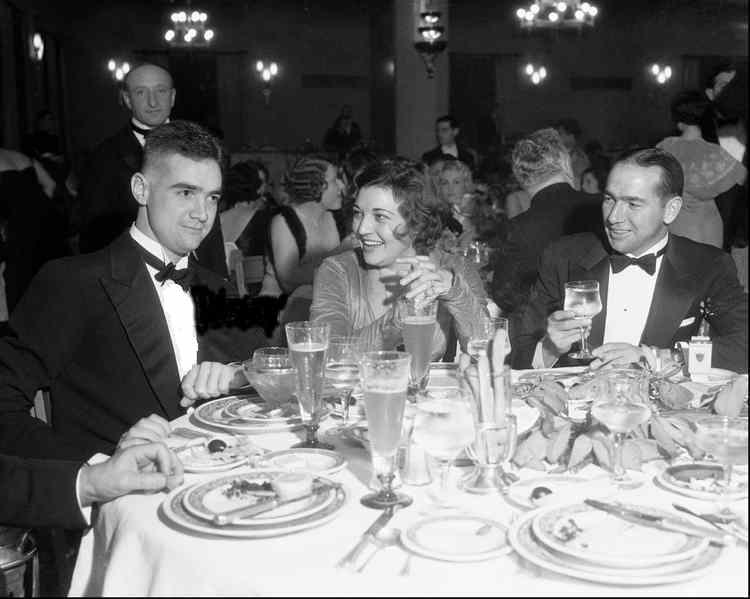
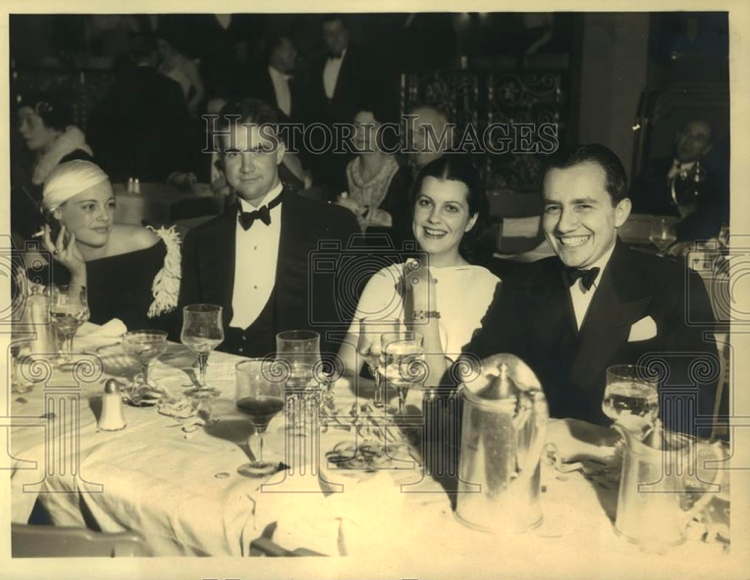
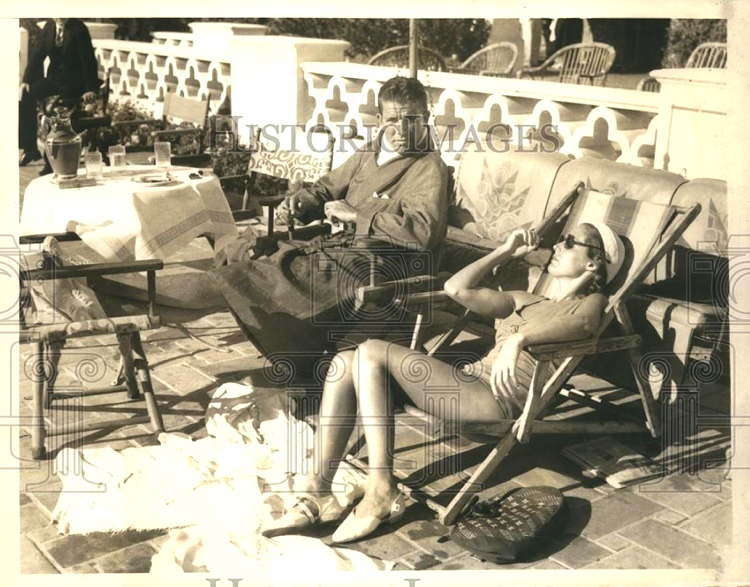
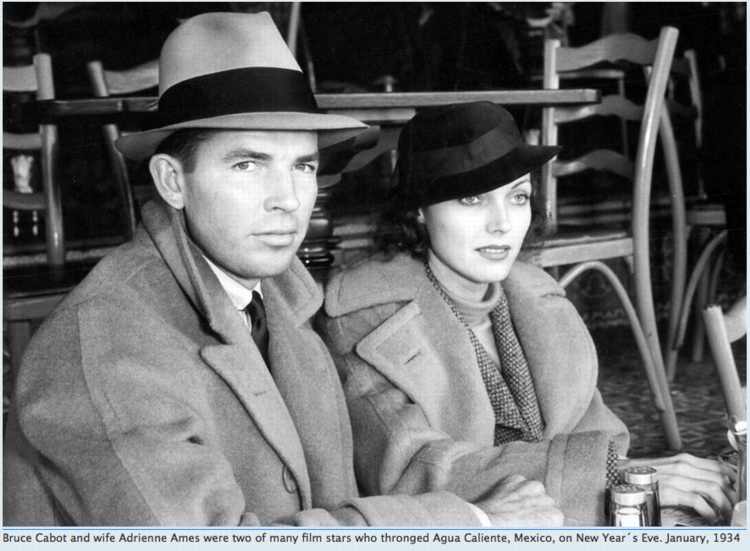
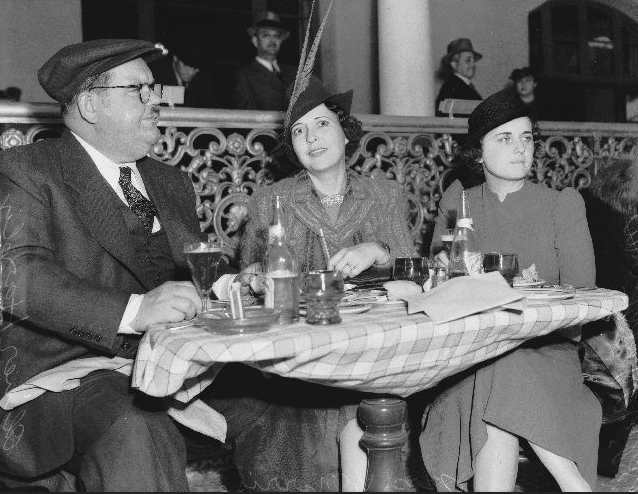
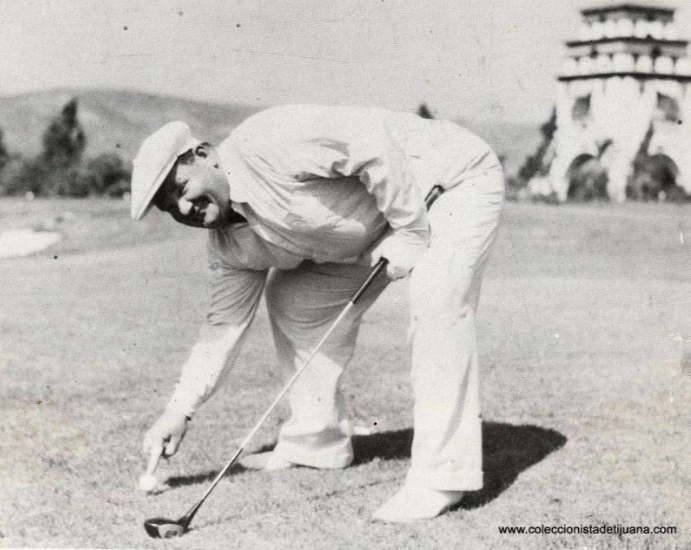
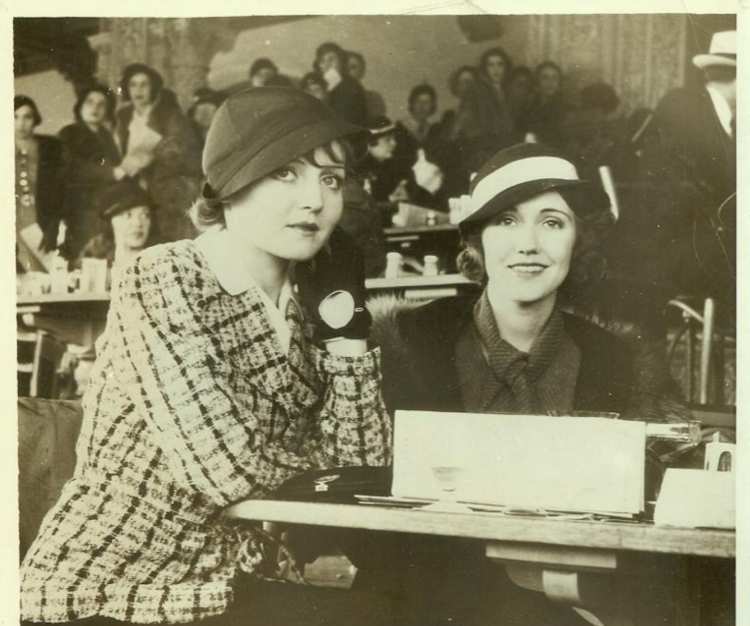
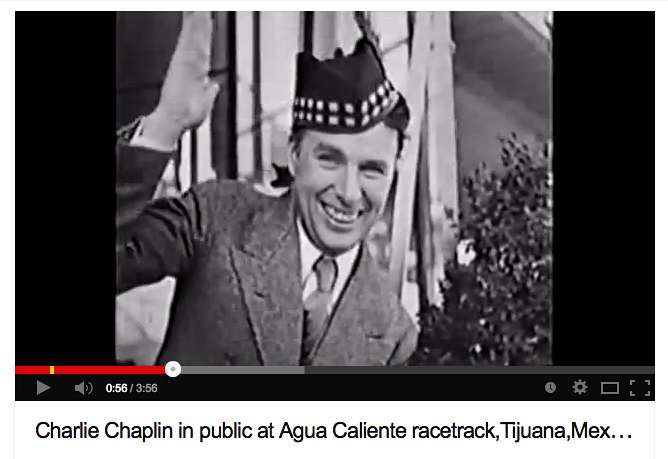
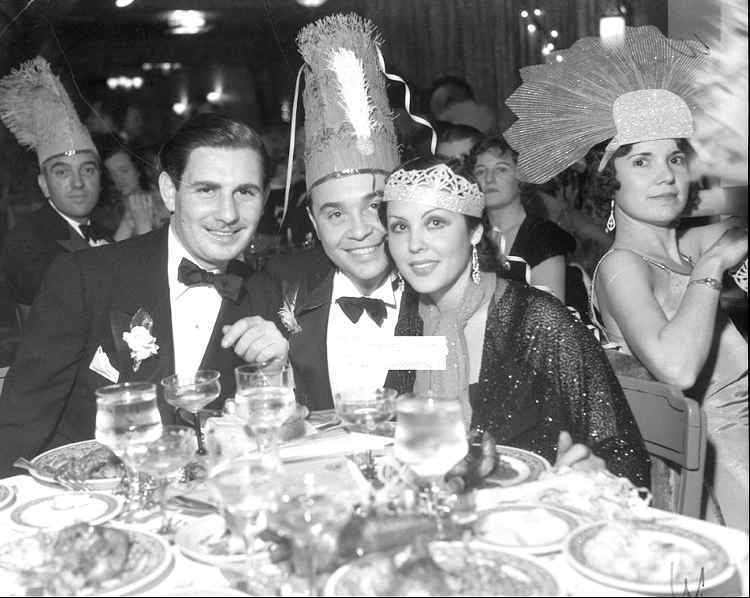
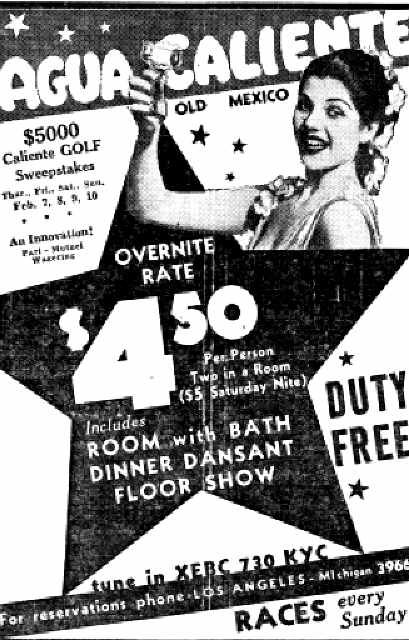
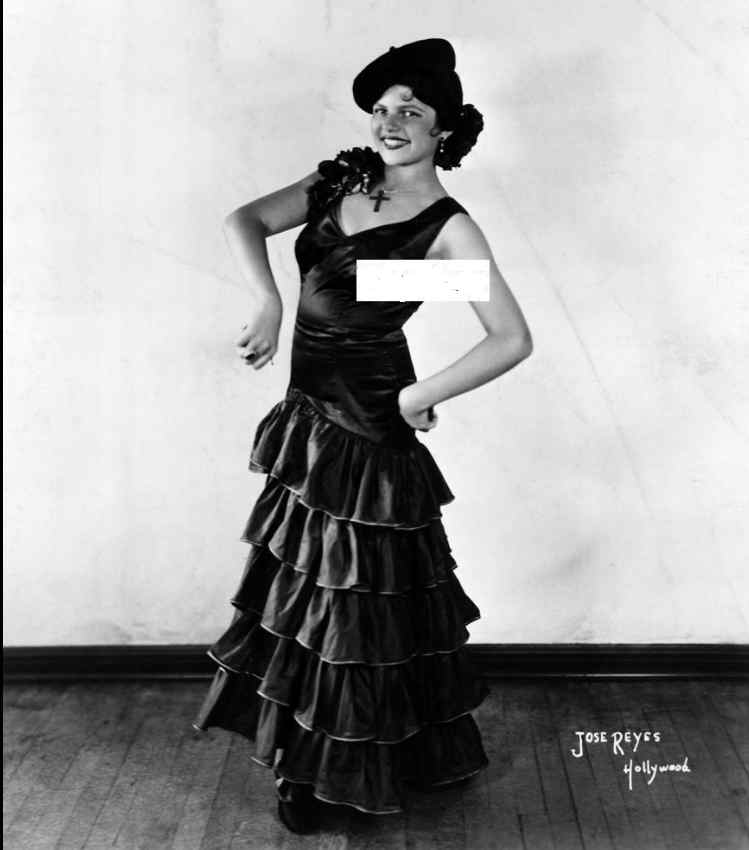
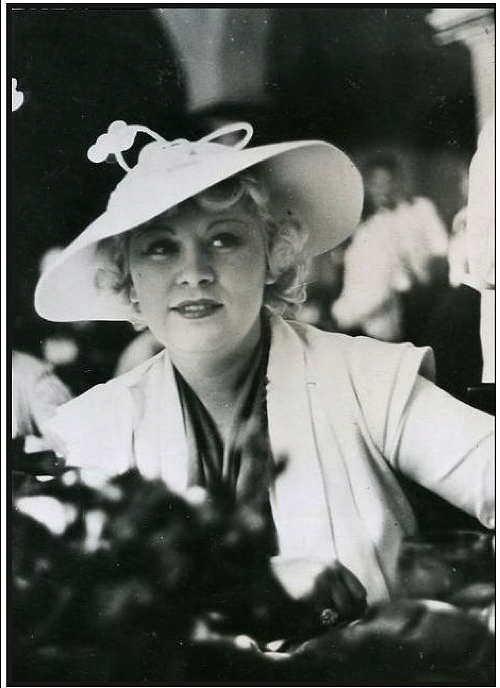
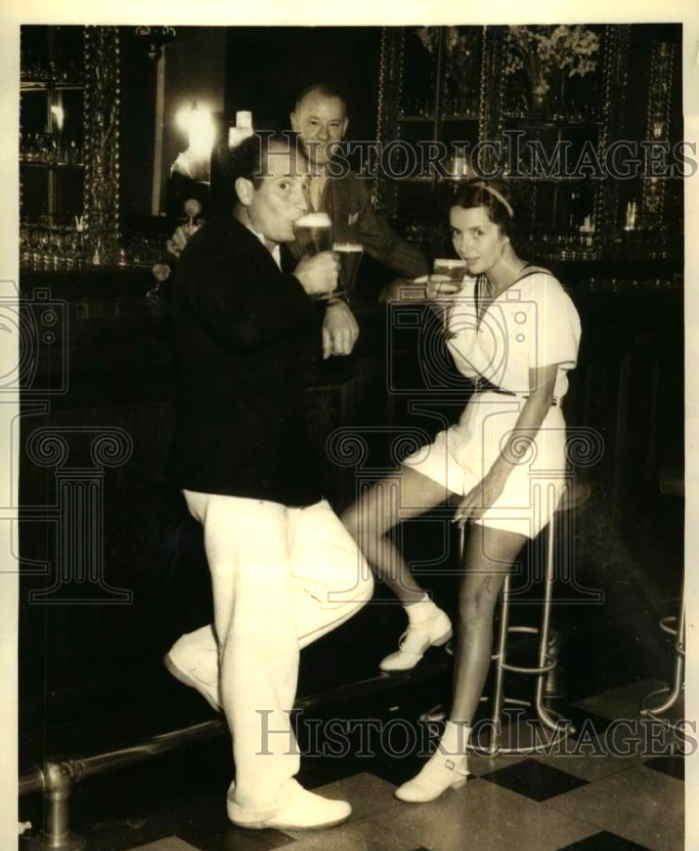
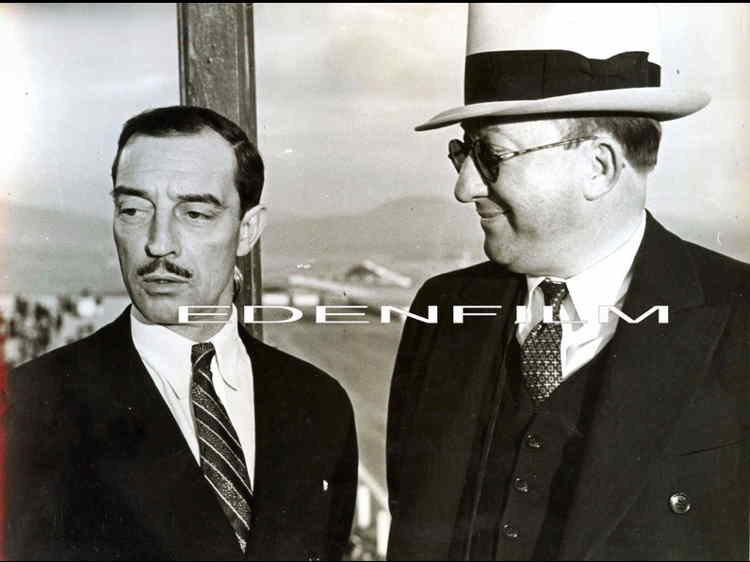
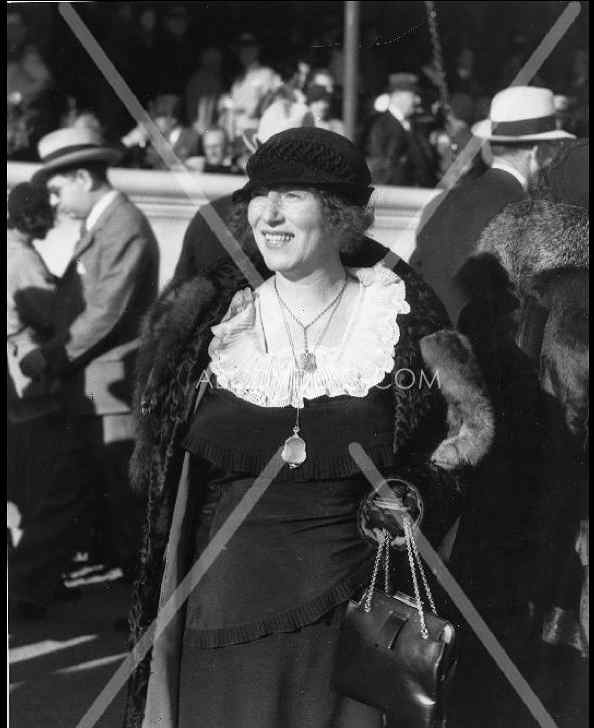
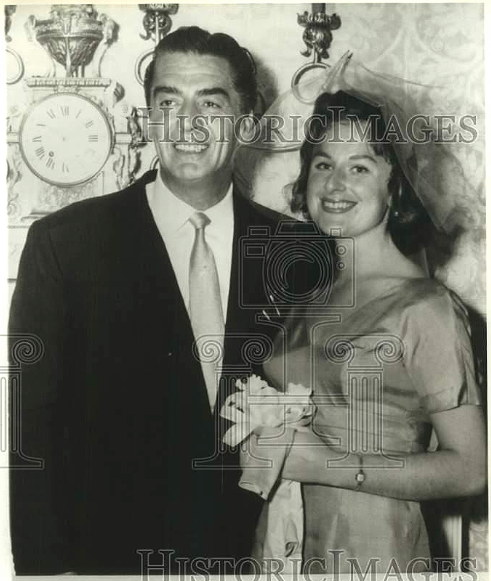
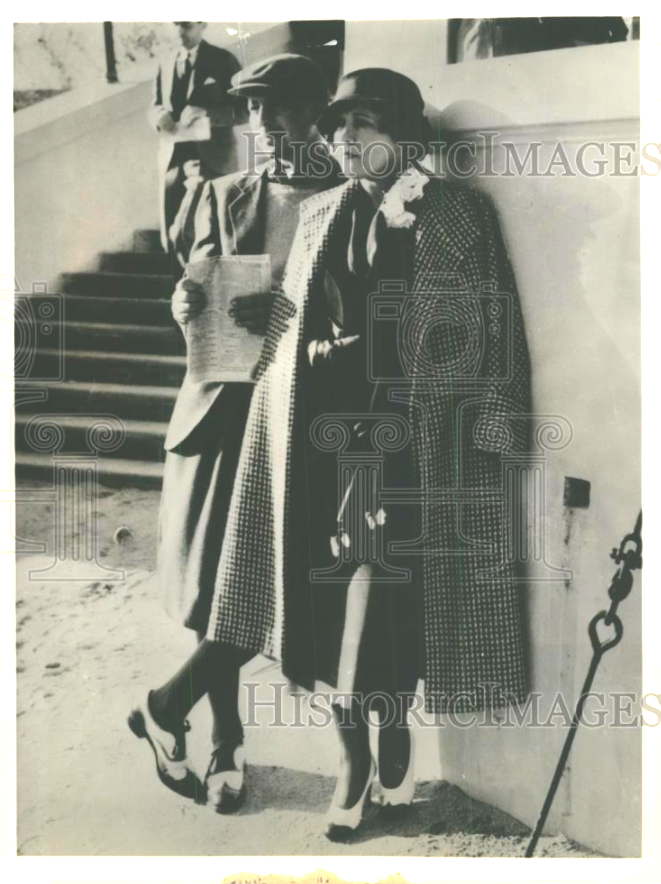
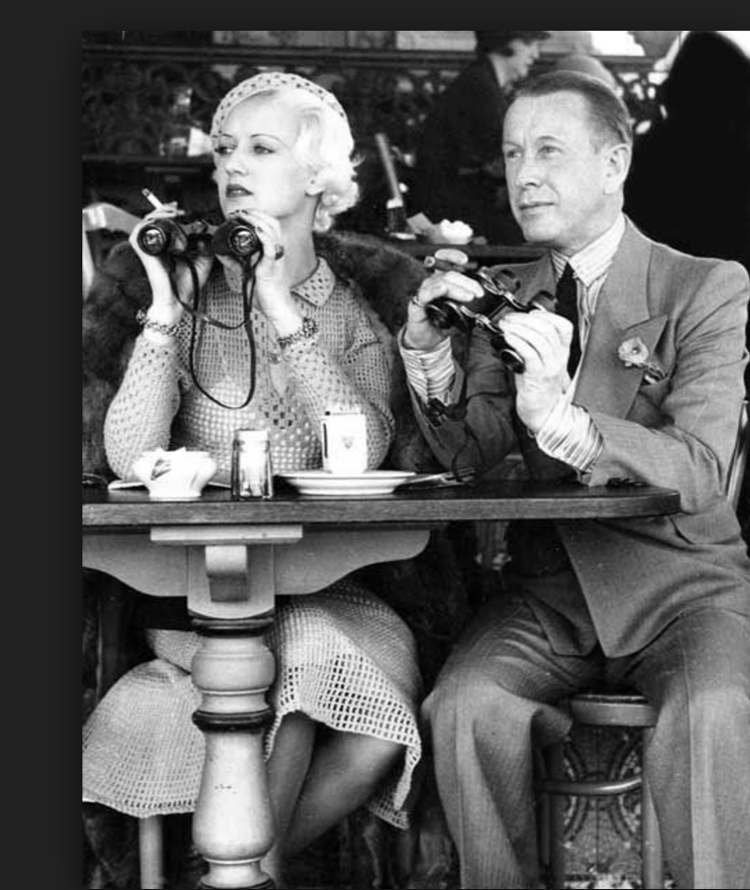
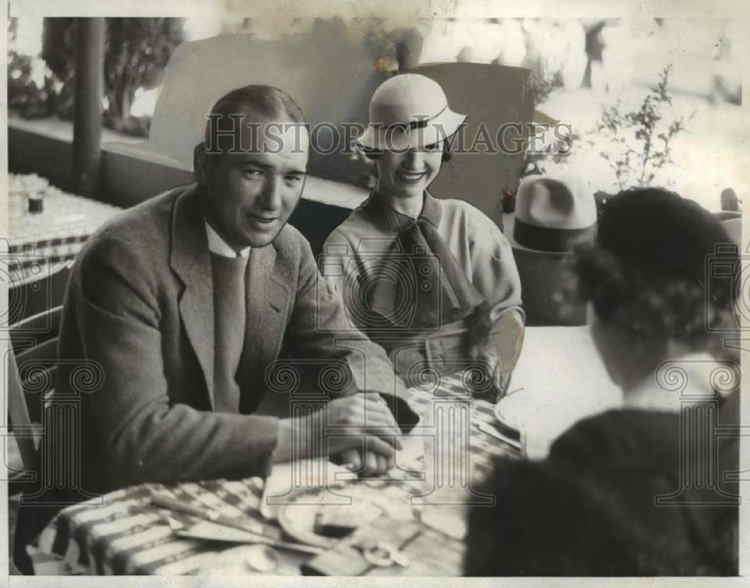
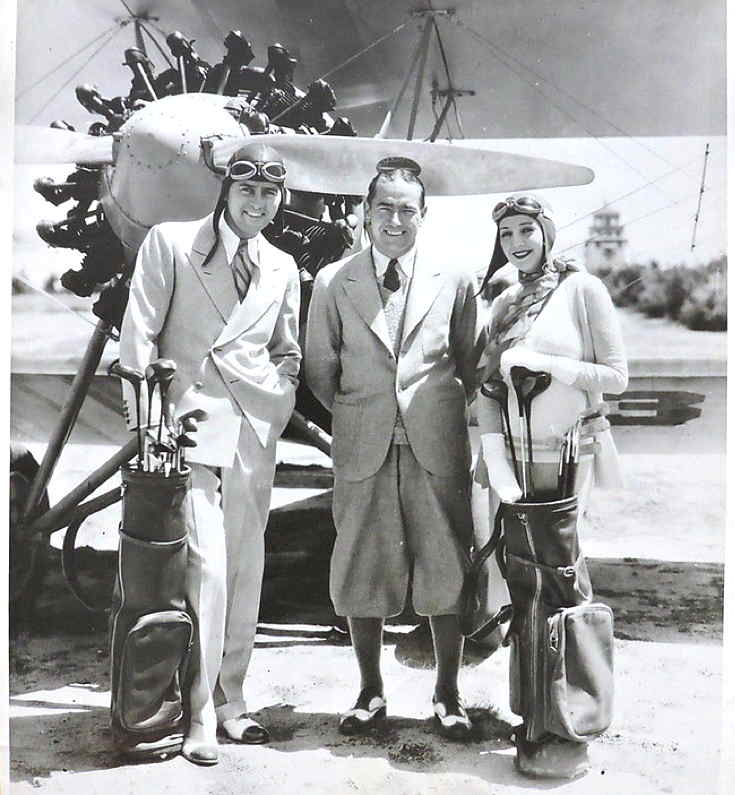
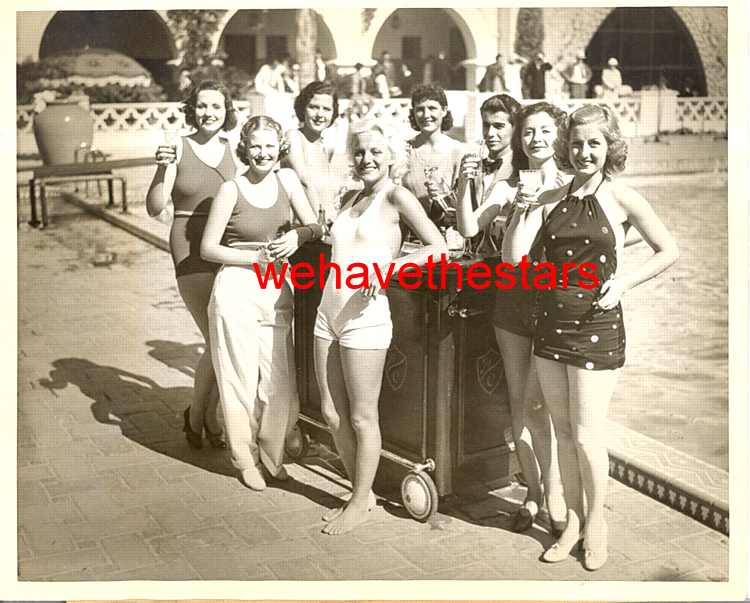
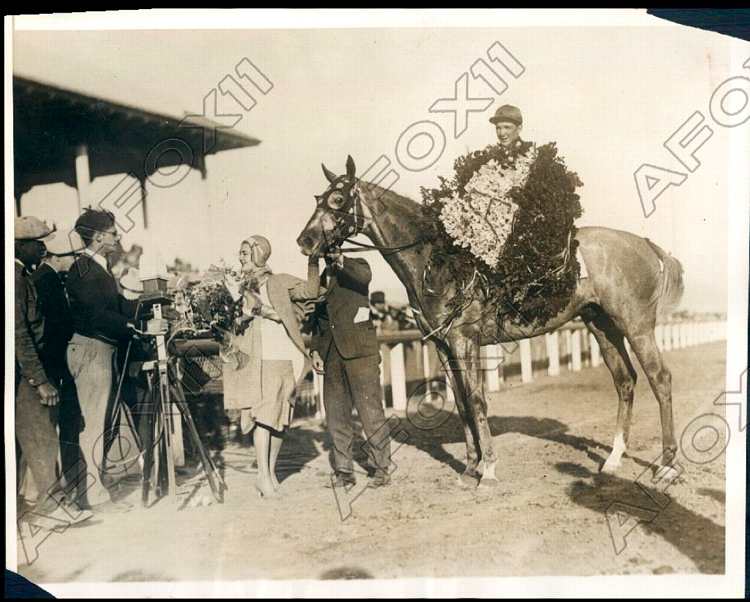
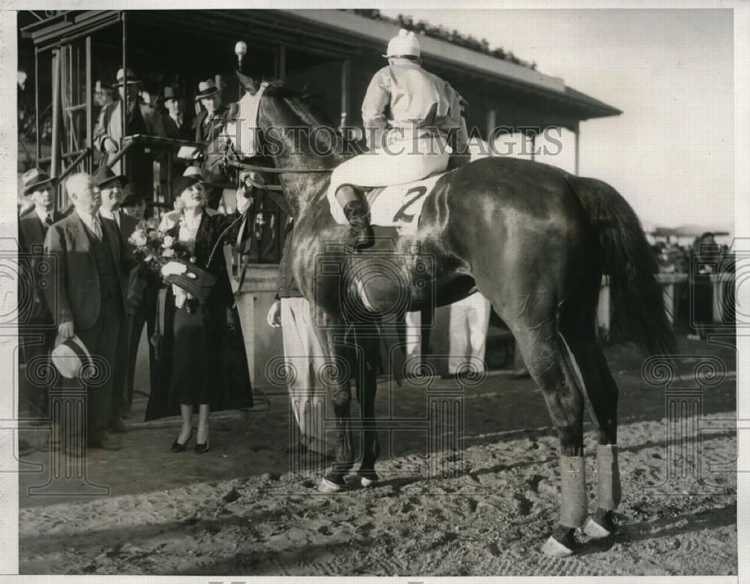
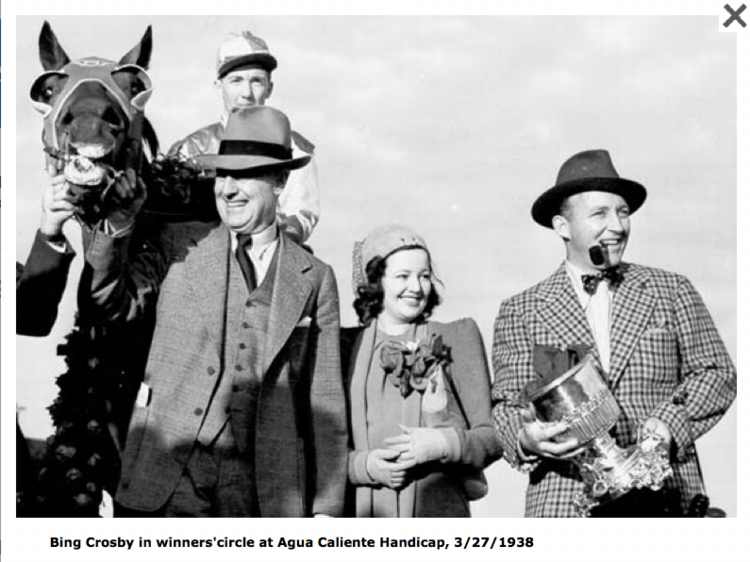
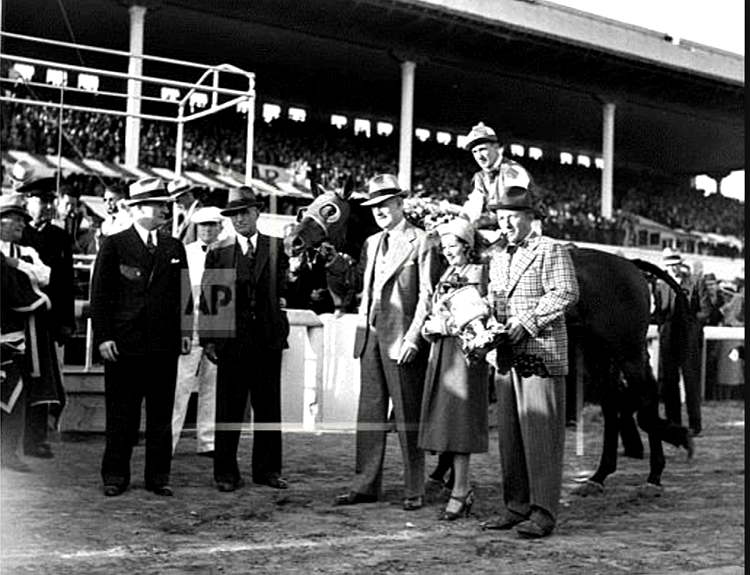
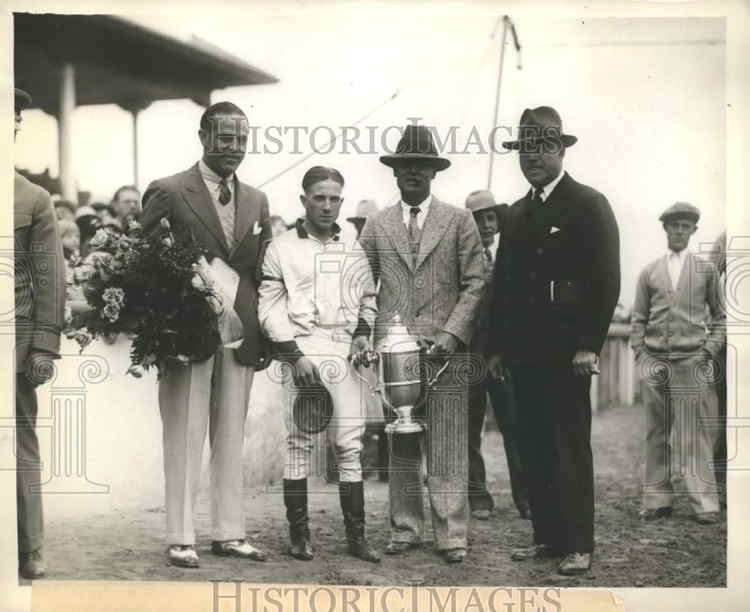
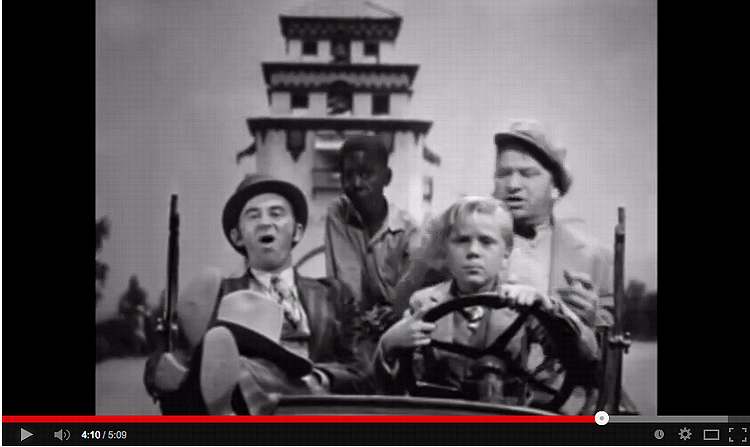
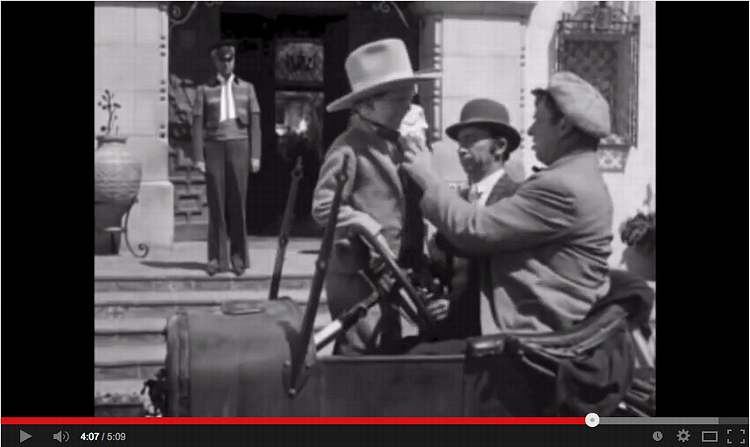
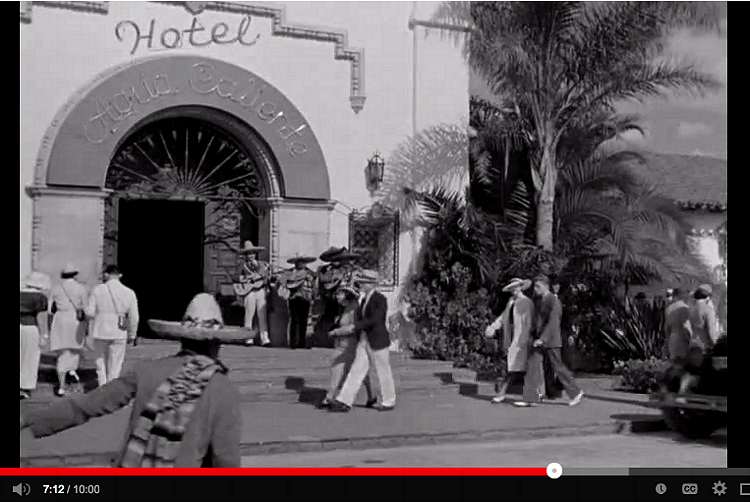
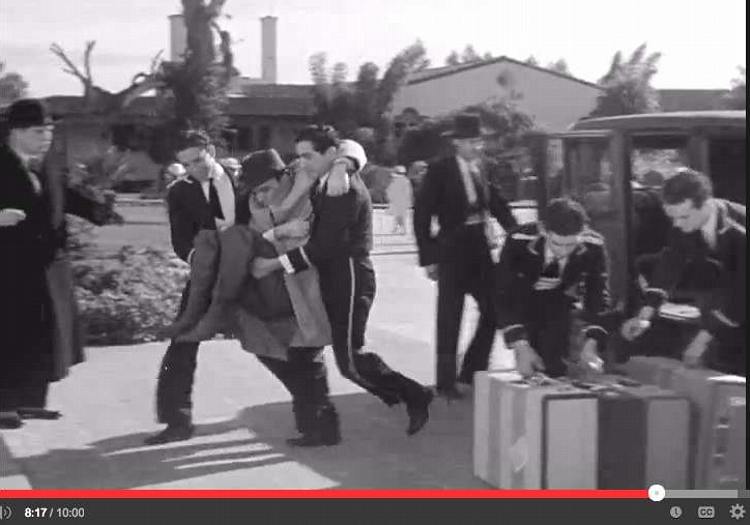
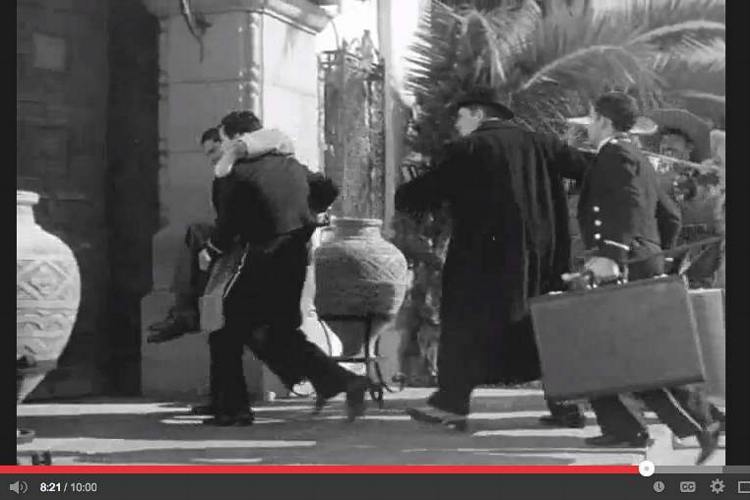
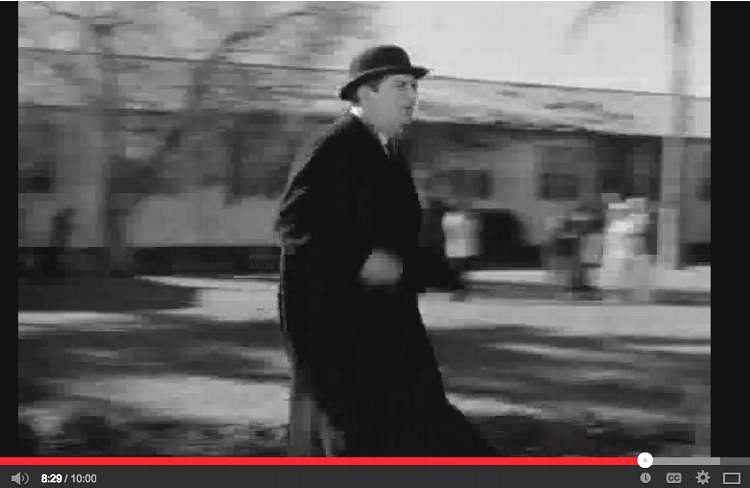
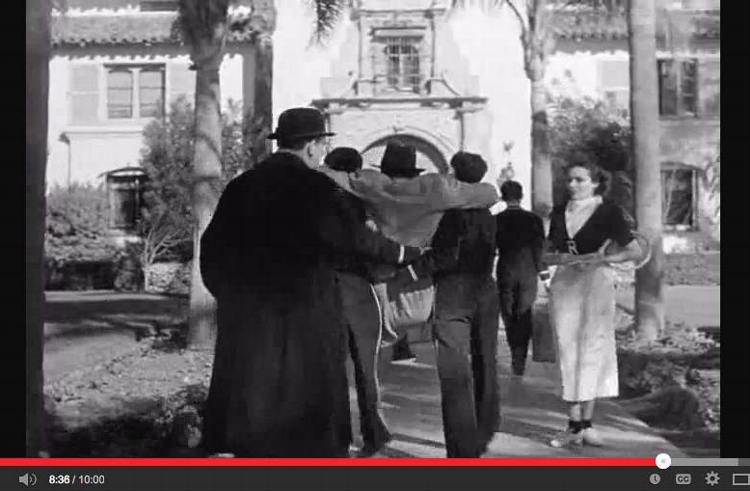
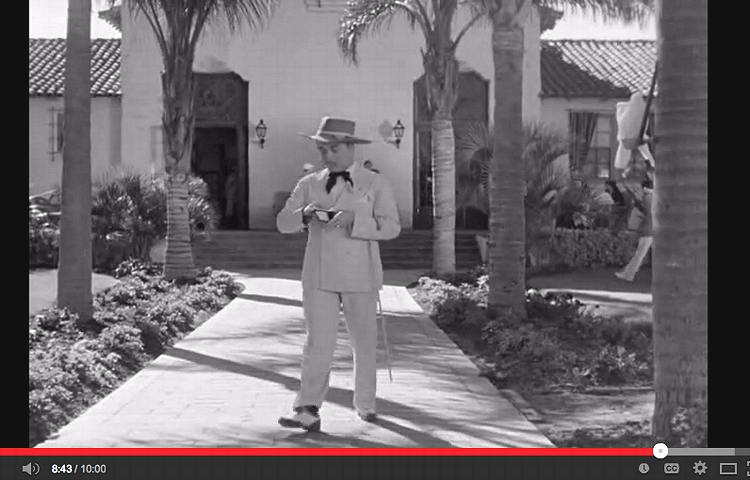
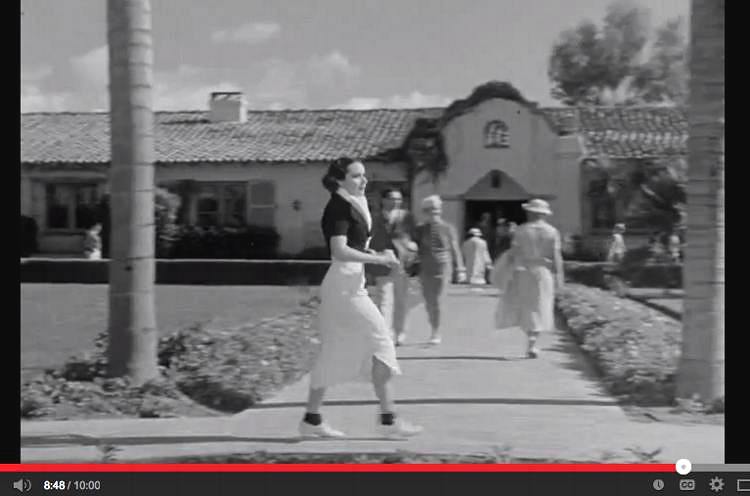
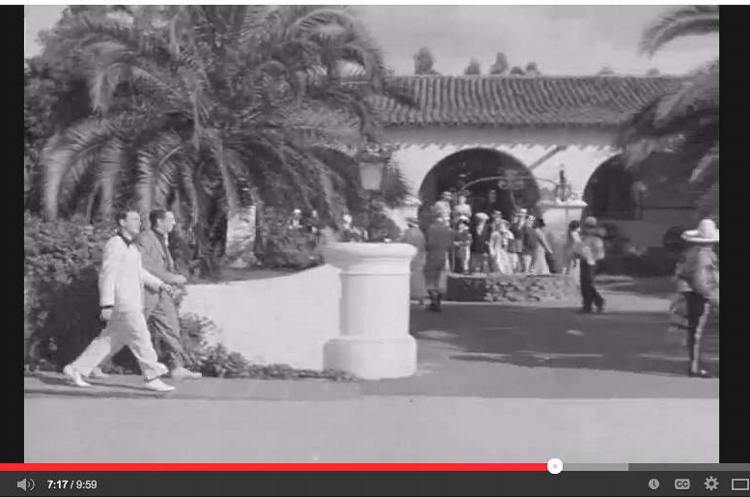
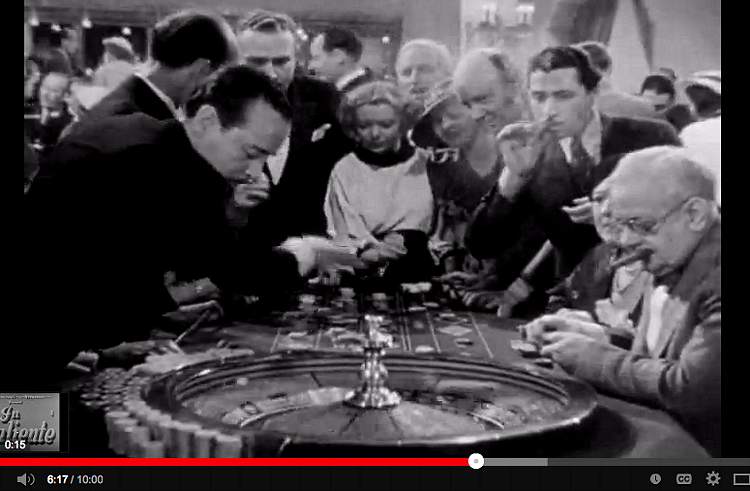
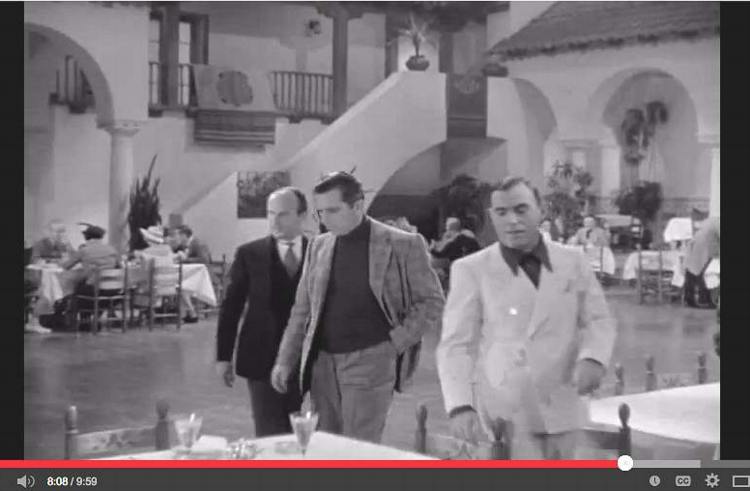
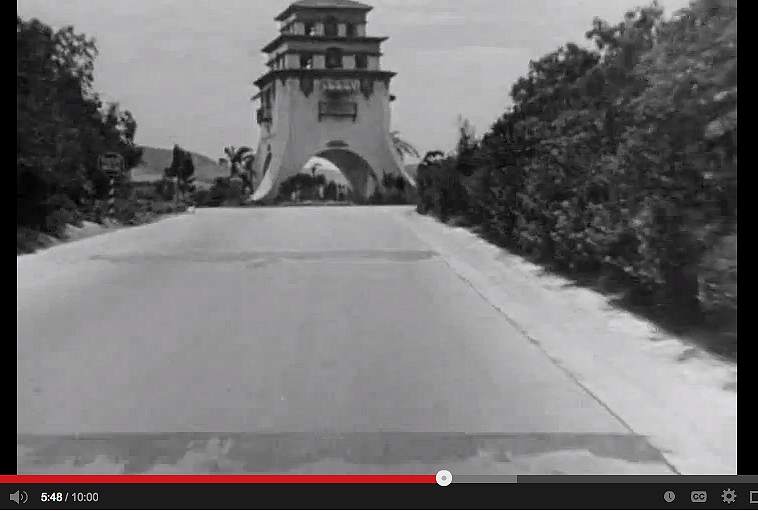
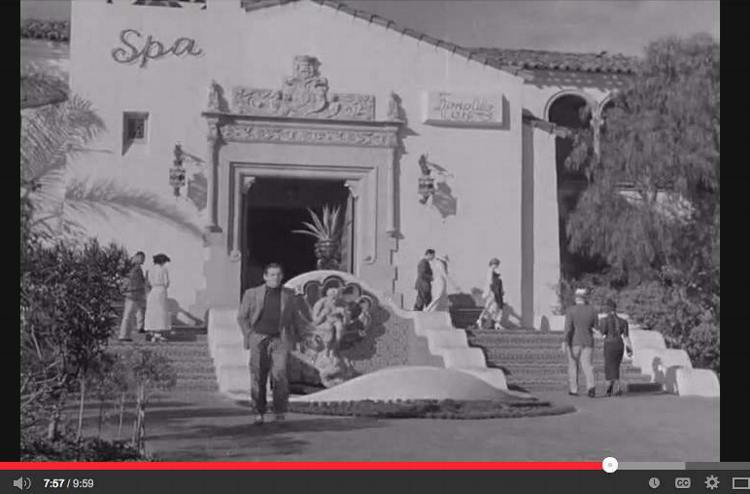
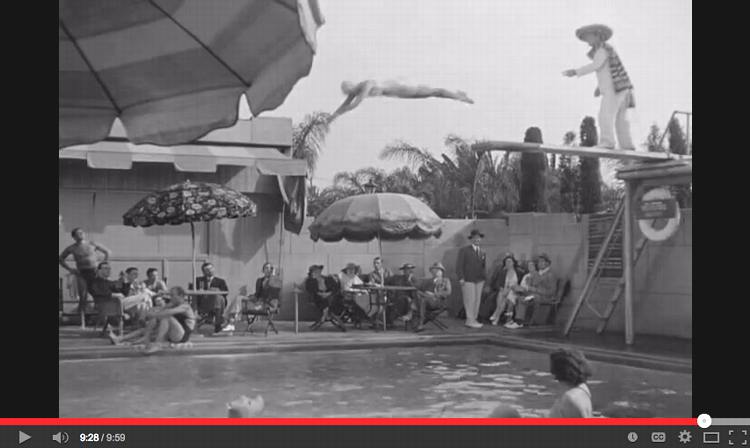
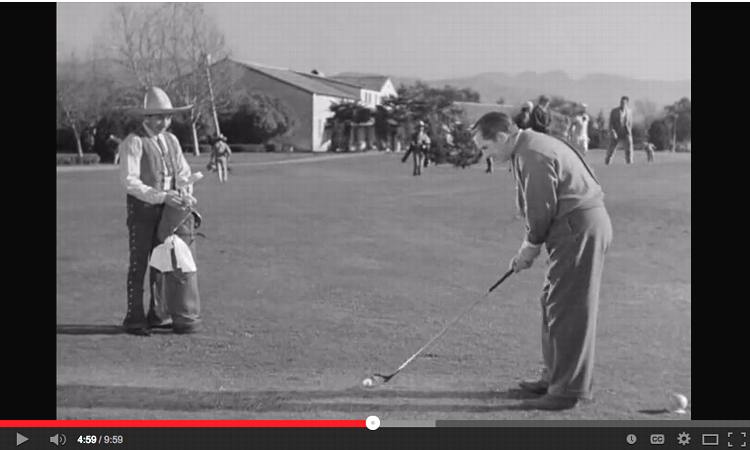
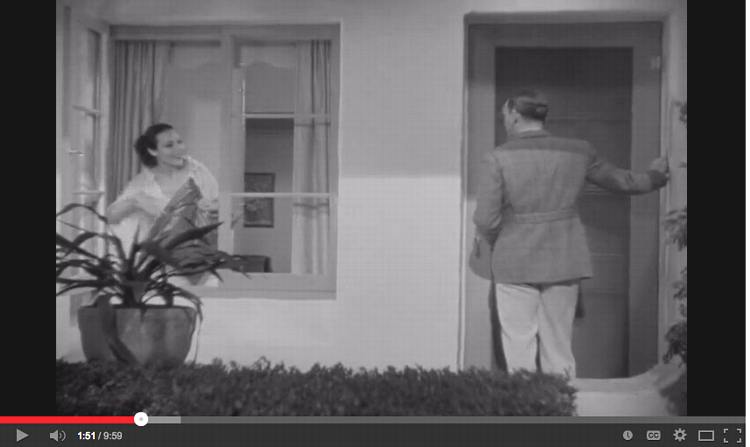
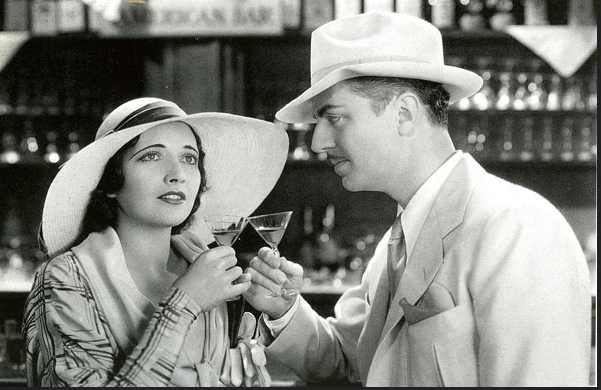
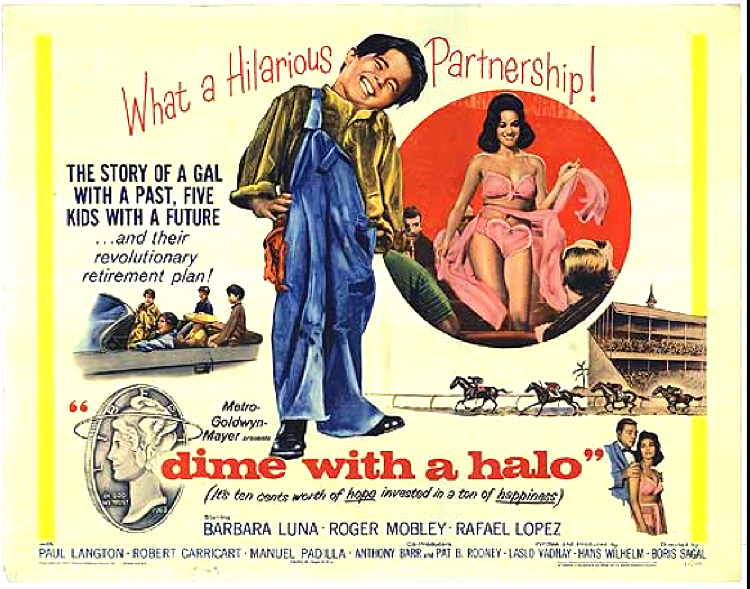
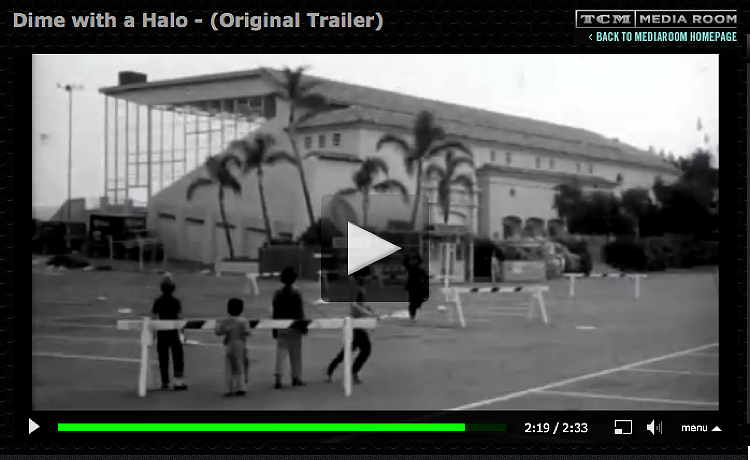
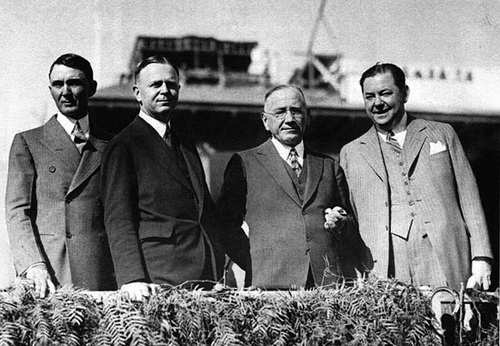
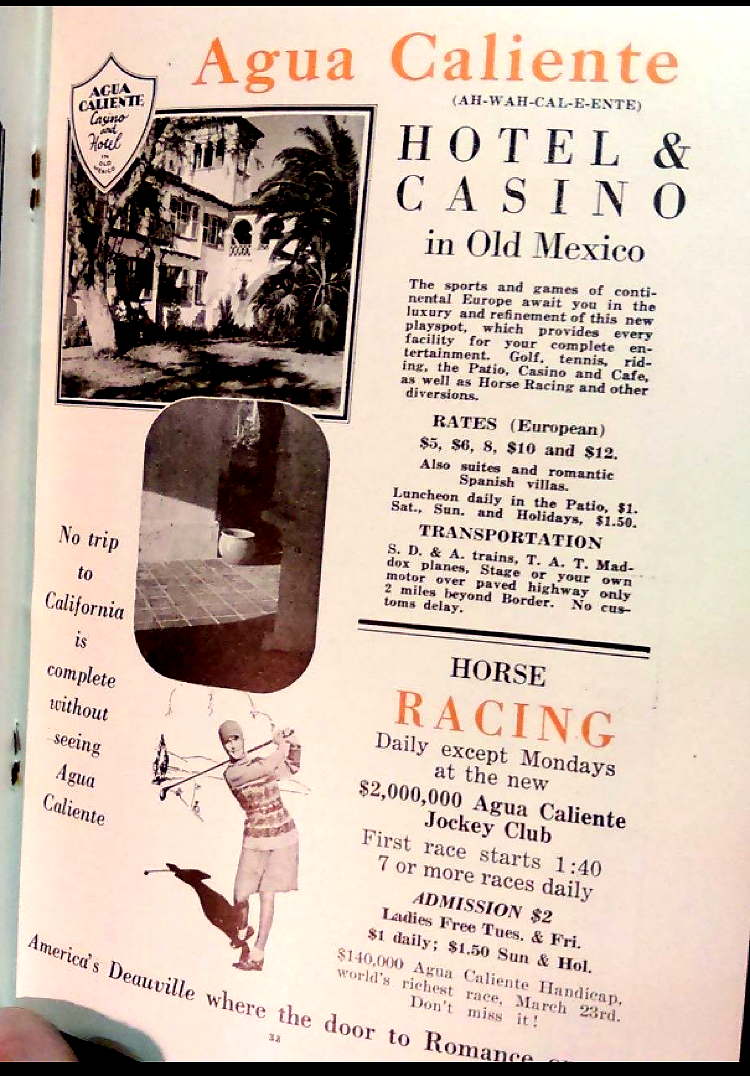
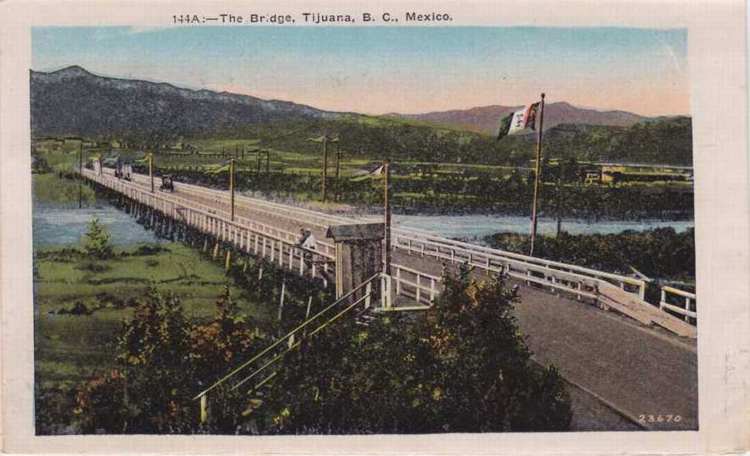 702.
Tijuana auto bridge crossing the Tijuana River
to reach Agua Caliente, time of Agua Caliente heyday.
702.
Tijuana auto bridge crossing the Tijuana River
to reach Agua Caliente, time of Agua Caliente heyday.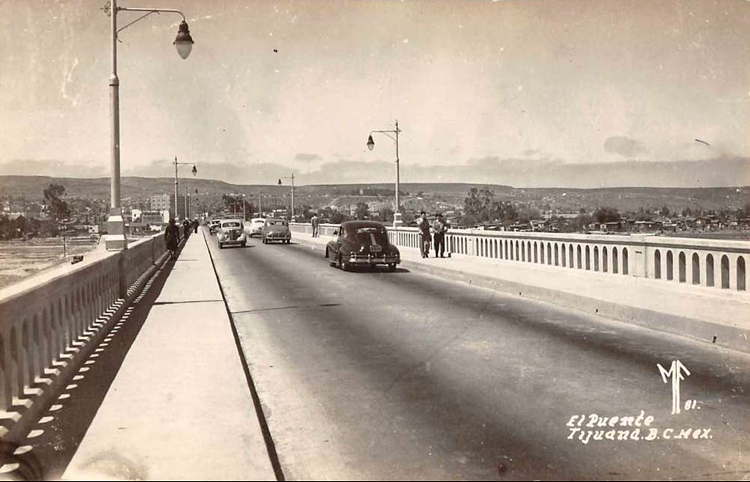
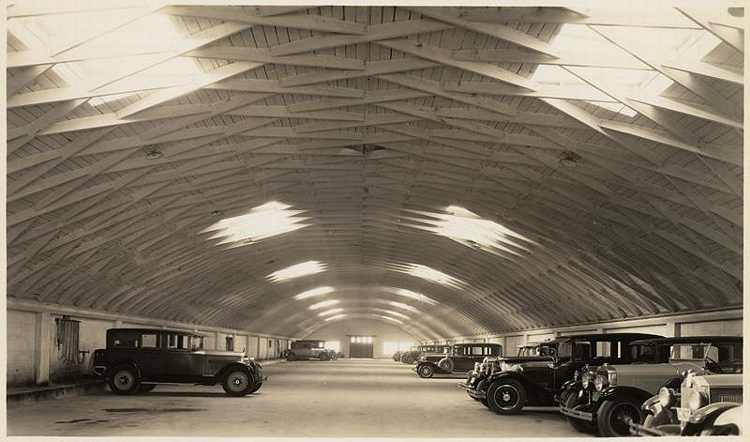
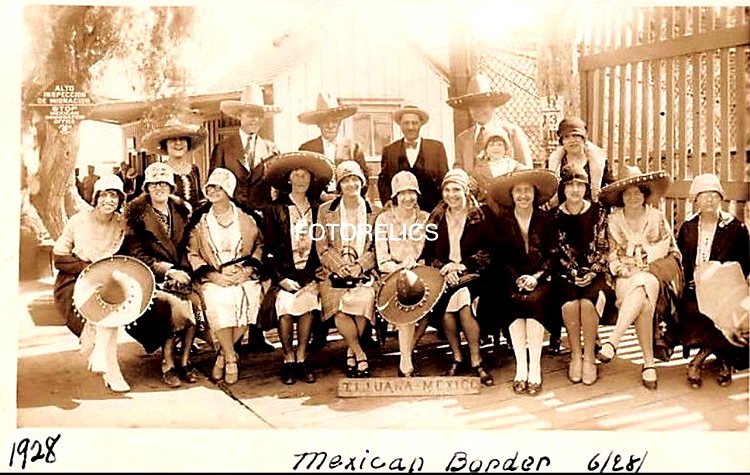
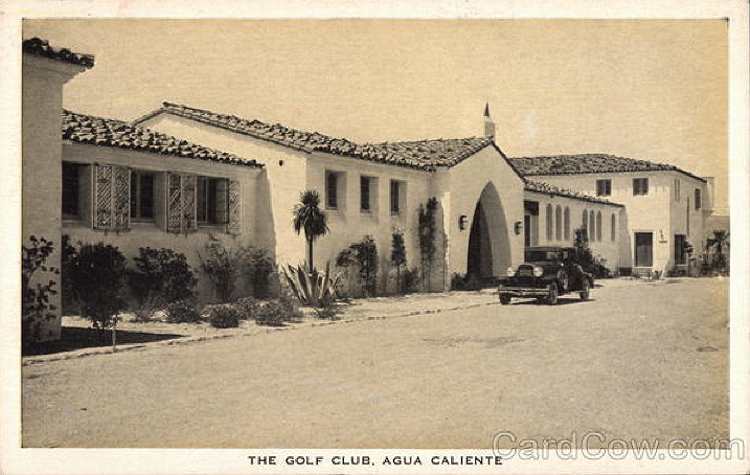
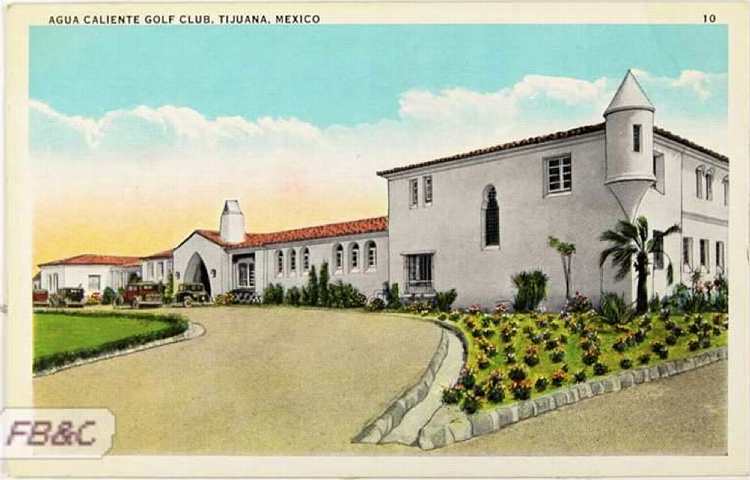
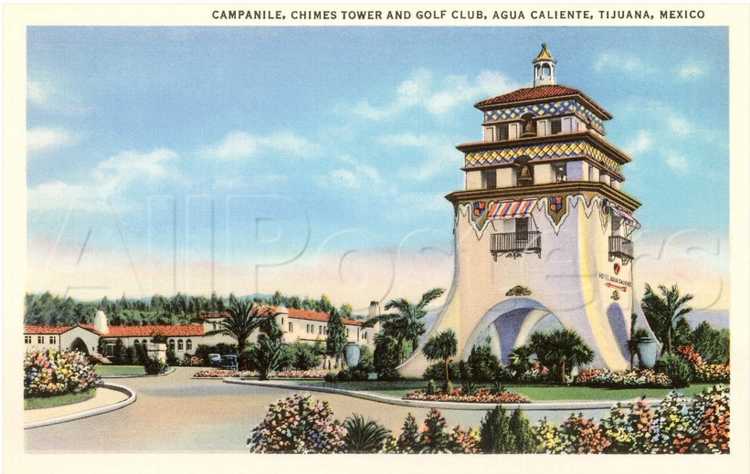
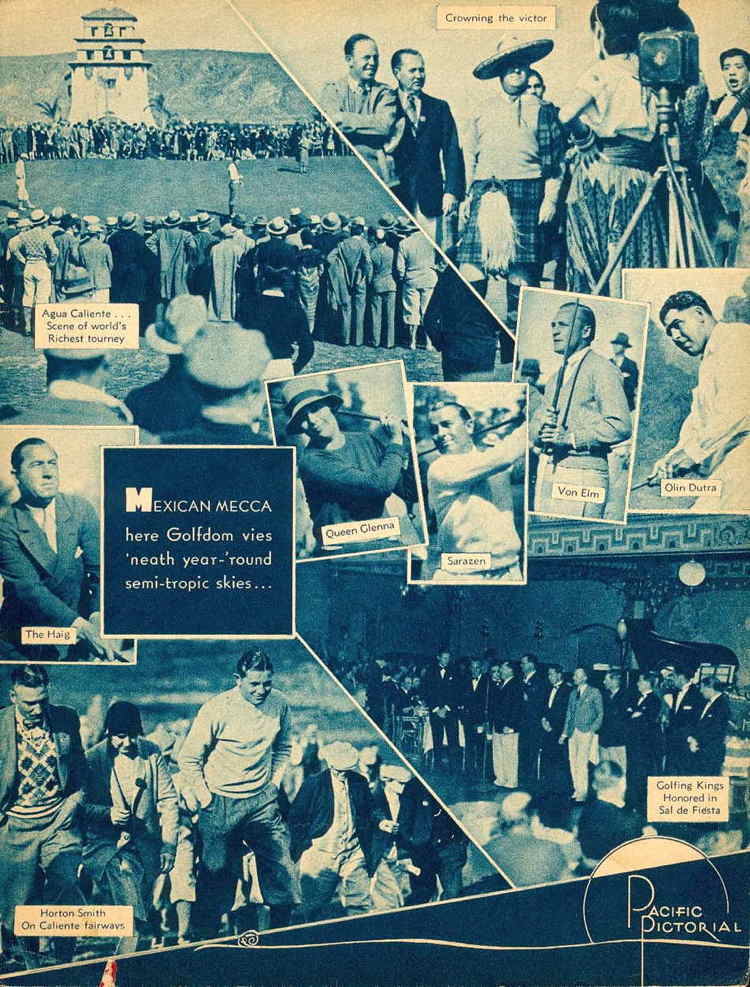
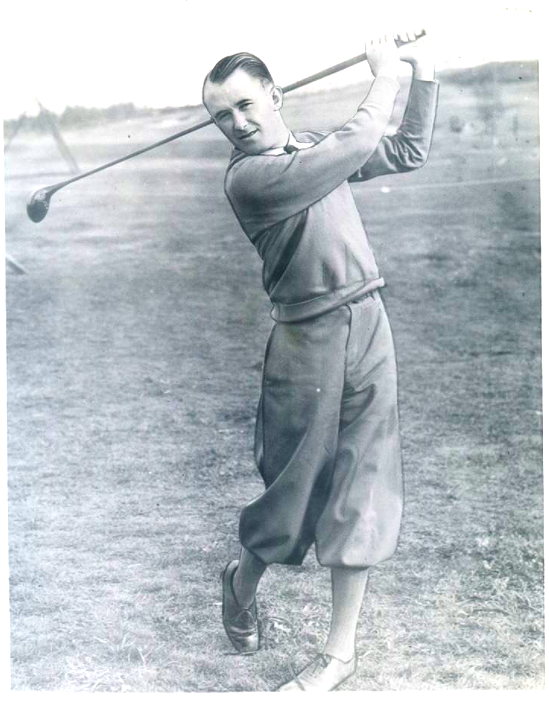
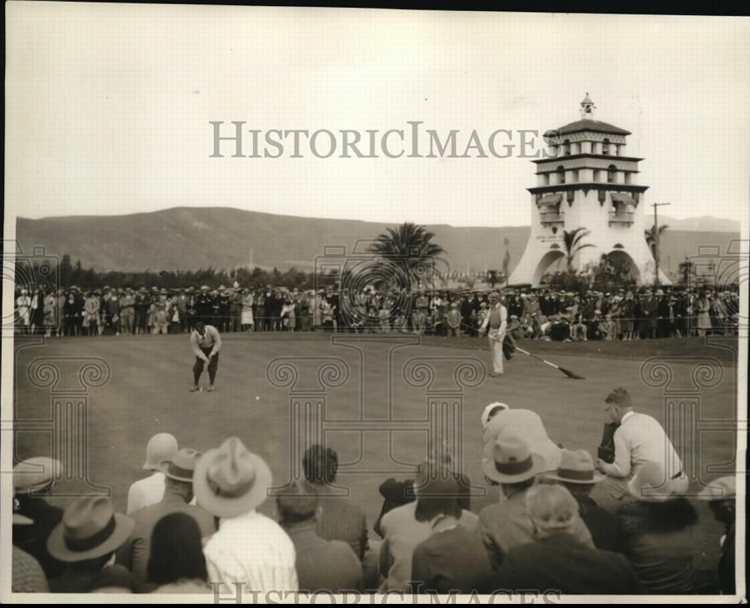
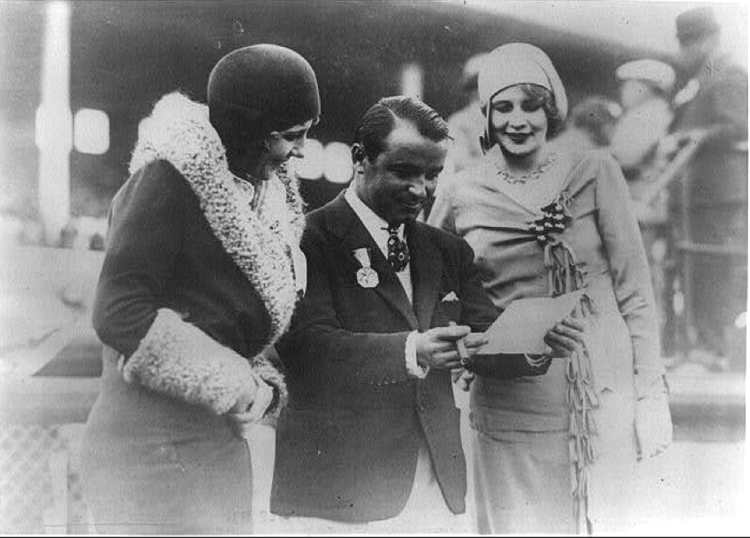
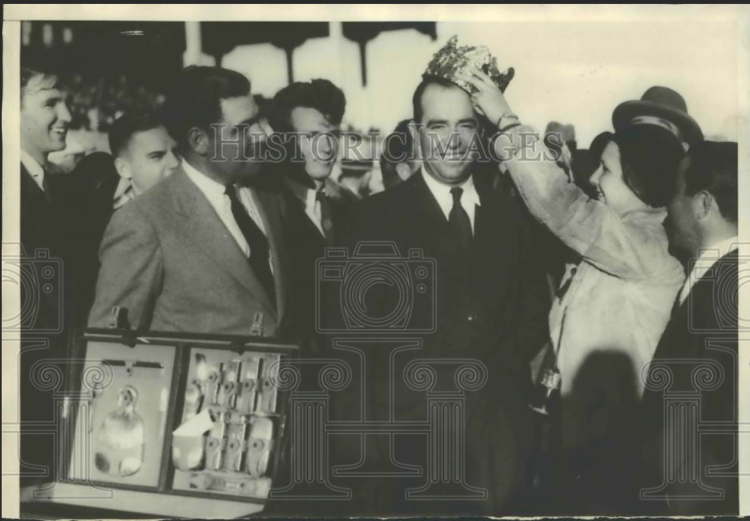
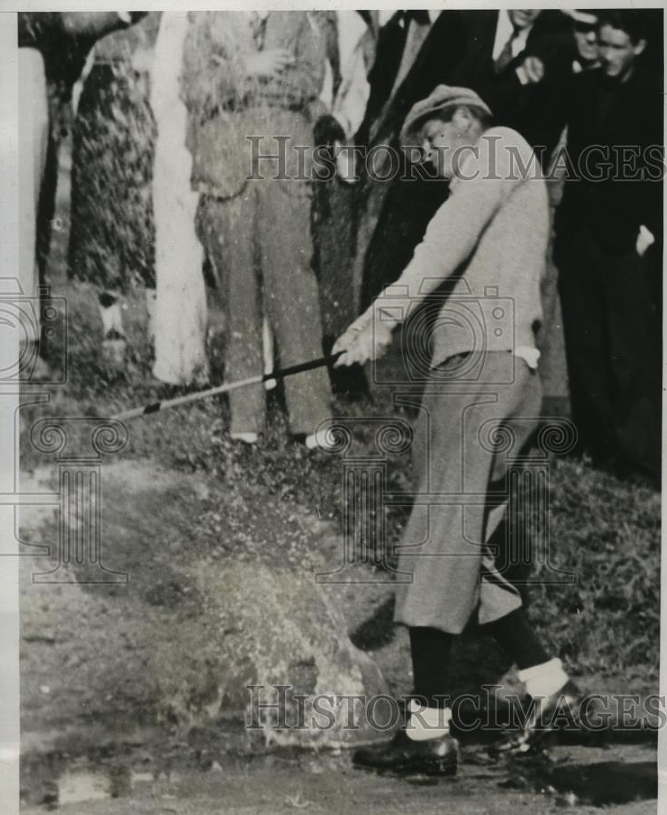
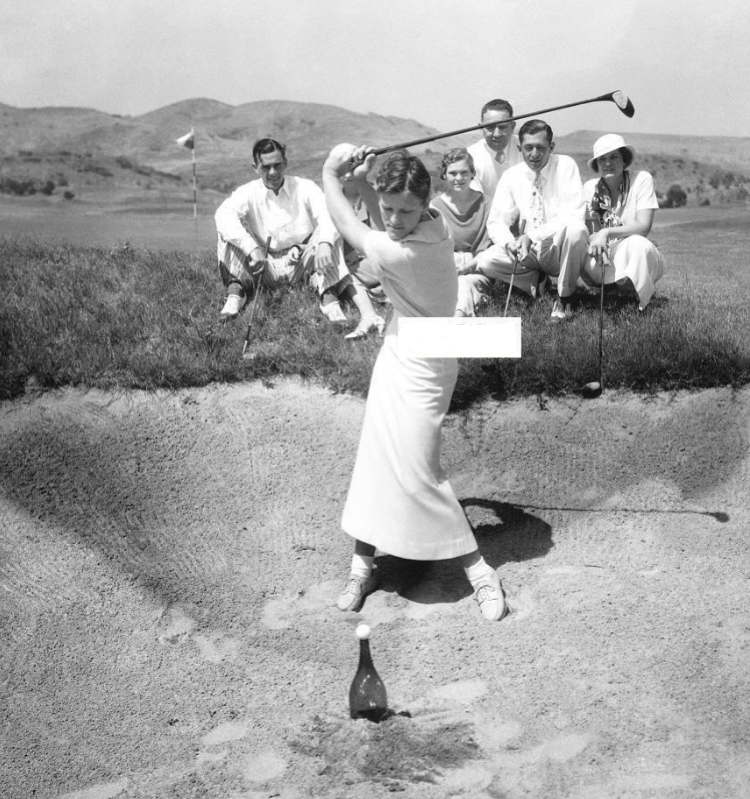
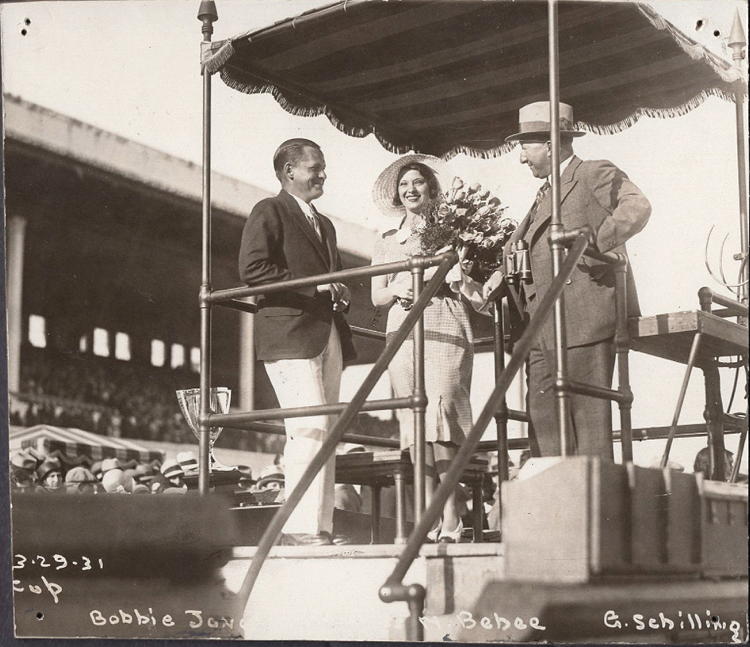
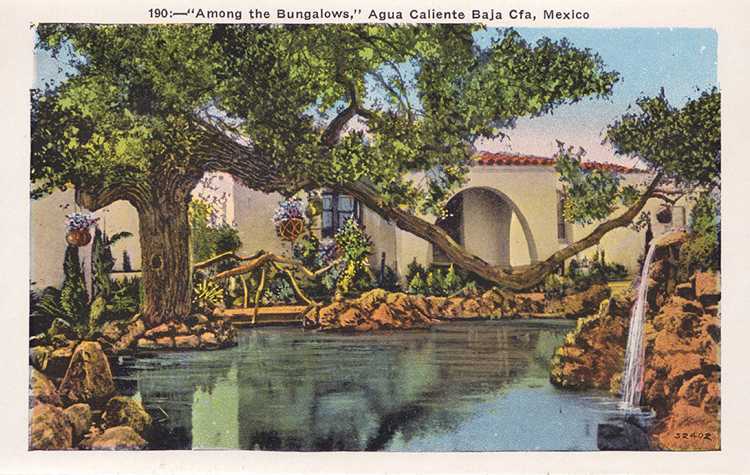 708. Guest bungalow. The
bungalows are at location 11 on
708. Guest bungalow. The
bungalows are at location 11 on 